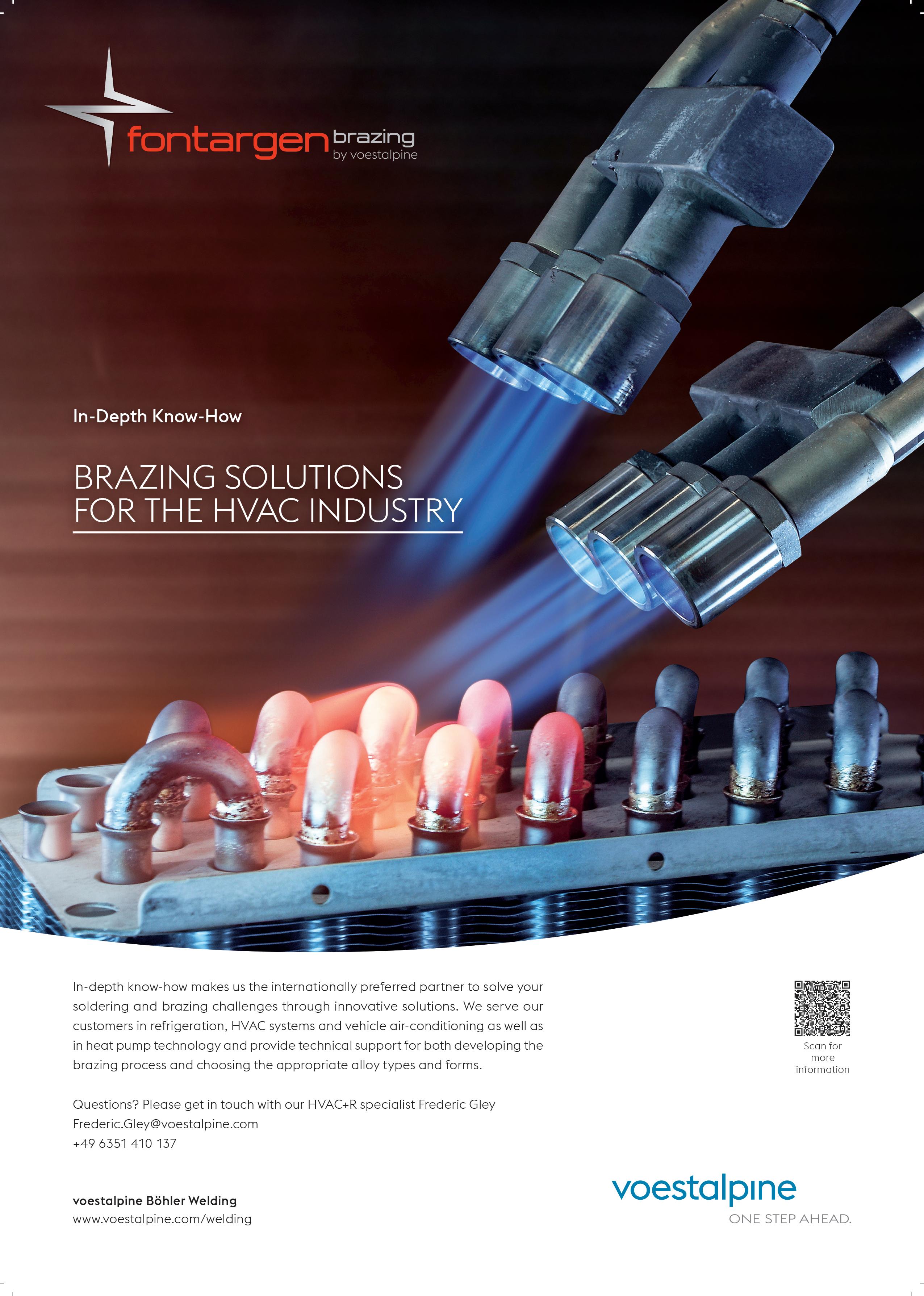Interview Jamie Gentoso on her career, Holcim, and what’s coming next

Communication
Technology
Fleet management software and its impact across operations
Is digital technology the future of the construction industry?

Interview Jamie Gentoso on her career, Holcim, and what’s coming next

Fleet management software and its impact across operations
Is digital technology the future of the construction industry?
From bins and shelving to optimized mobile storage. From manual order picking to fully automated systems. All our products are modularly expandable, even to multiple floors. Our range includes the most diverse racking systems, which are fully tailored to your needs. Our experts have extensive experience in various industries. Make an appointment and discuss the possibilities for your warehouse equipment.
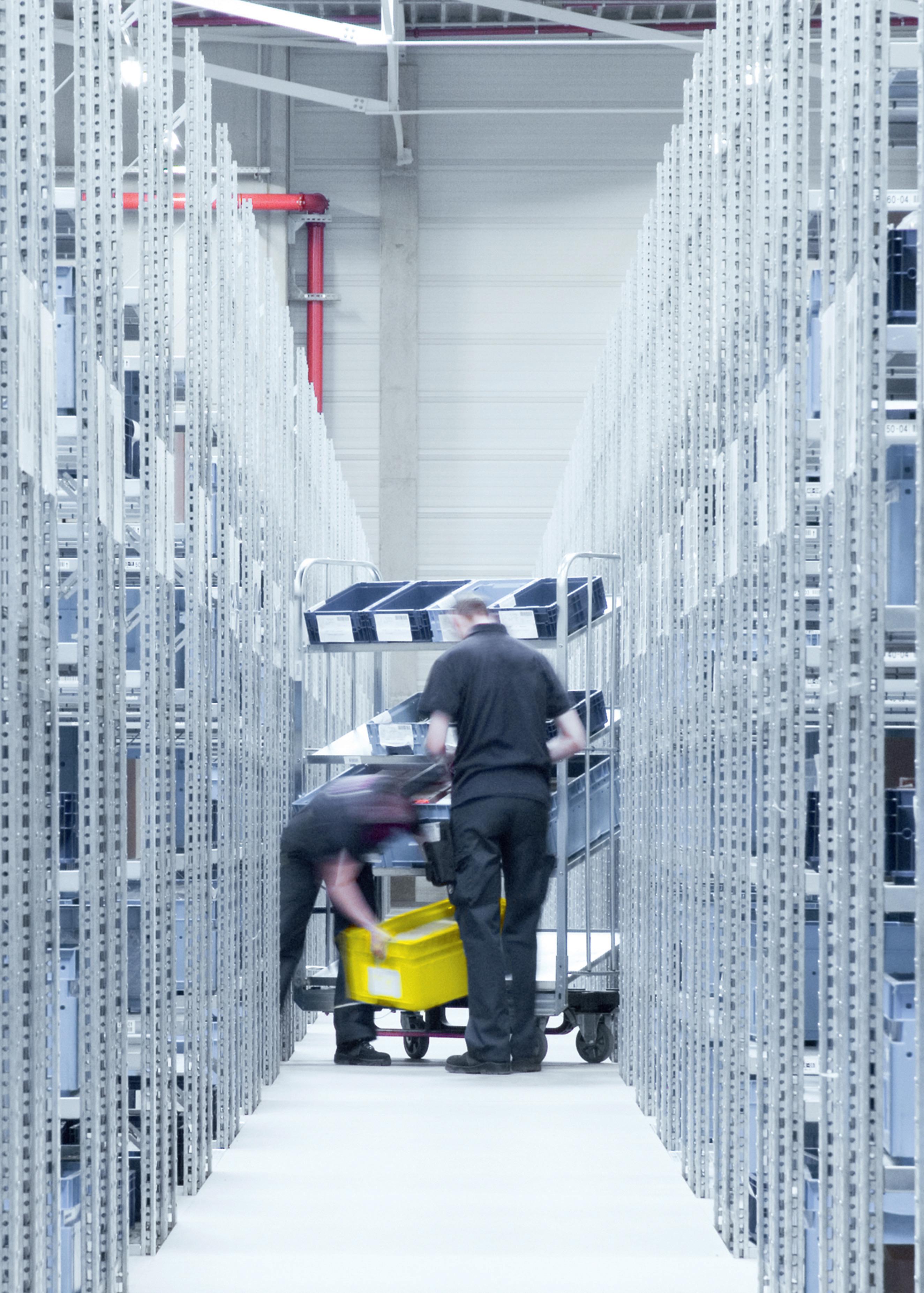 ssi-schaefer.com
ssi-schaefer.com
CEO Andrew Schofield
Group COO Joe Woolsgrove
Creative Director Tom Vince
Data & Insights Director Jaione Soga
Editor Libbie Hammond
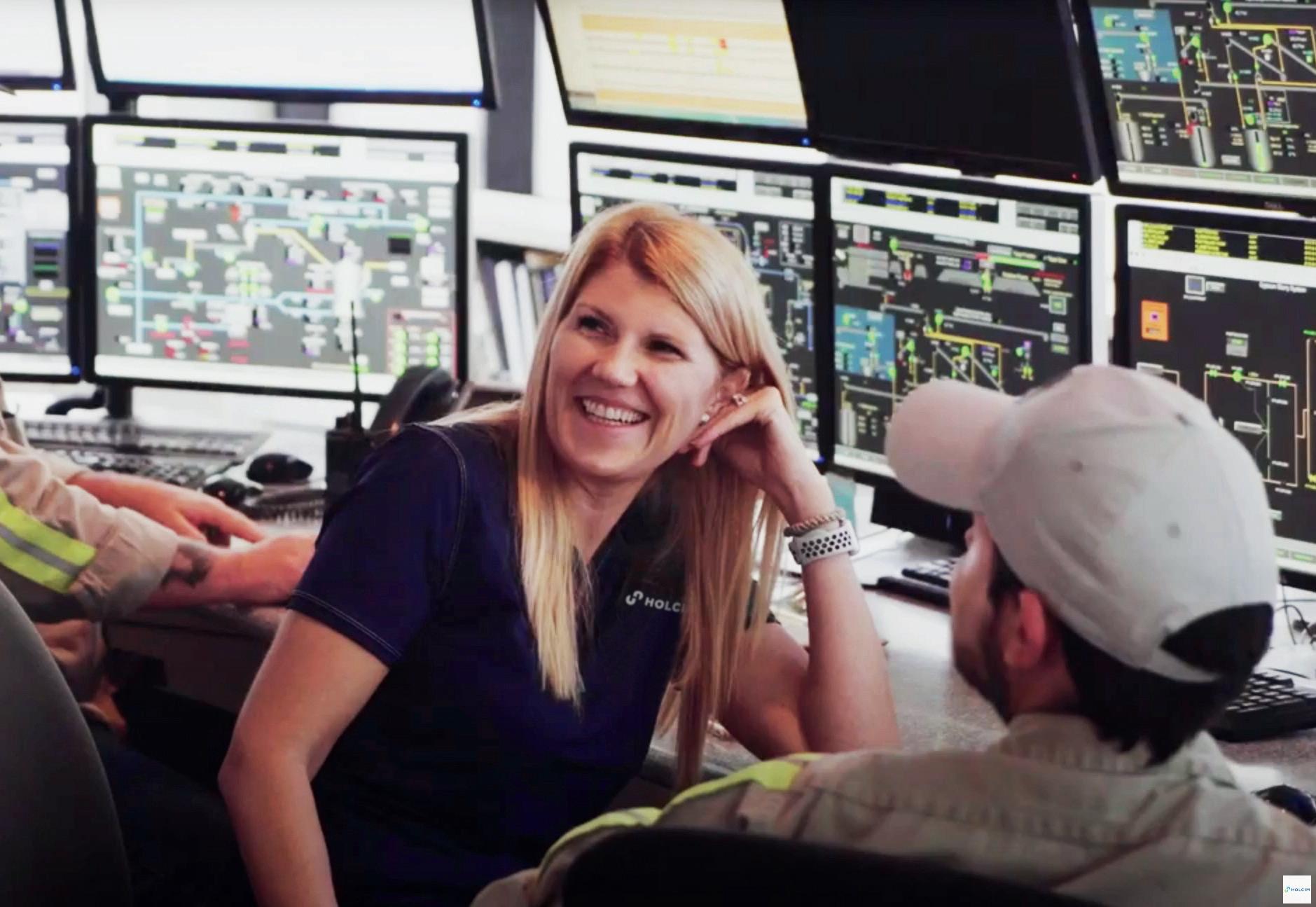

Assistant Editor Mary Floate
Content Editors Daniel Baksi, Alex Caesari, Danielle Champ
Editorial Administrator Amy Gilks
Managing Art Editor Fleur Daniels
Art Editors Paul Gillings, David Howard, Charlie Protheroe, Lee Protheroe
Artwork Administrator Rochelle Broderick-White
Sales Director Alasdair Gamble
Project Directors
Philip Monument, Joy Francesconi
Head of Content Management
Adam Blanch
Client Sales Executives
Chloe Allman, Mark Cawston
Project Managers Lewis Bush, Natalie Griffiths, Jo-Ann Jeffery, Ben Richell
Content Managers Johanna Bailey, Mark Cowles, Jeff Goldenberg, Wendy Russell, Richard Saunders, Kieran Shukri
Media Sales Executives Mike Berger, Jessica Eglington, Will Gwyther, Reid Lingle, Sam Surrell
General Manager Florida Division Ryan Finn
Social Media Co-ordinator Rosie Clegg
IT Support Iain Kidd
Administration Natalie Fletcher, Rory Gallacher, Ibby Mundhir
Hello and welcome to the November issue of Construction Today. I was thrilled to be able to pose some questions to Jamie Gentoso, President, Holcim Building Envelope and Global Head, Holcim Solutions & Products for this issue of Construction Today. Not only very passionate about reducing the impact of the built environment, and keen to share Holcim’s journey to net zero, Jamie also holds a unique perspective as a woman in a traditionally male-dominated industry. “I want to inspire young women to understand their potential in this industry,” she says – in a sector struggling to attract workers in general, Jamie is keen to sing the praises of construction and its opportunities. The full Q&A is on page 8.
LH@finelightmediagroup.com
© 2022 Finelight Media Group
Corporate Head Office
Cringleford Business Centre, 10 Intwood Road. Cringleford, Norwich NR4 6AU U.K.
T: (312) 854-0123 T: +44 (0) 1603 274130
US Office
2240 West Woolbright Road, Suite 402 Boynton Beach. FI 33426
T: (561) 778-2396
Cement Company of Alabama. He discusses the NCCA’s growing emphasis on decarbonization, and the strategies it is implementing to ensure a greener future. Find out why on page 46.

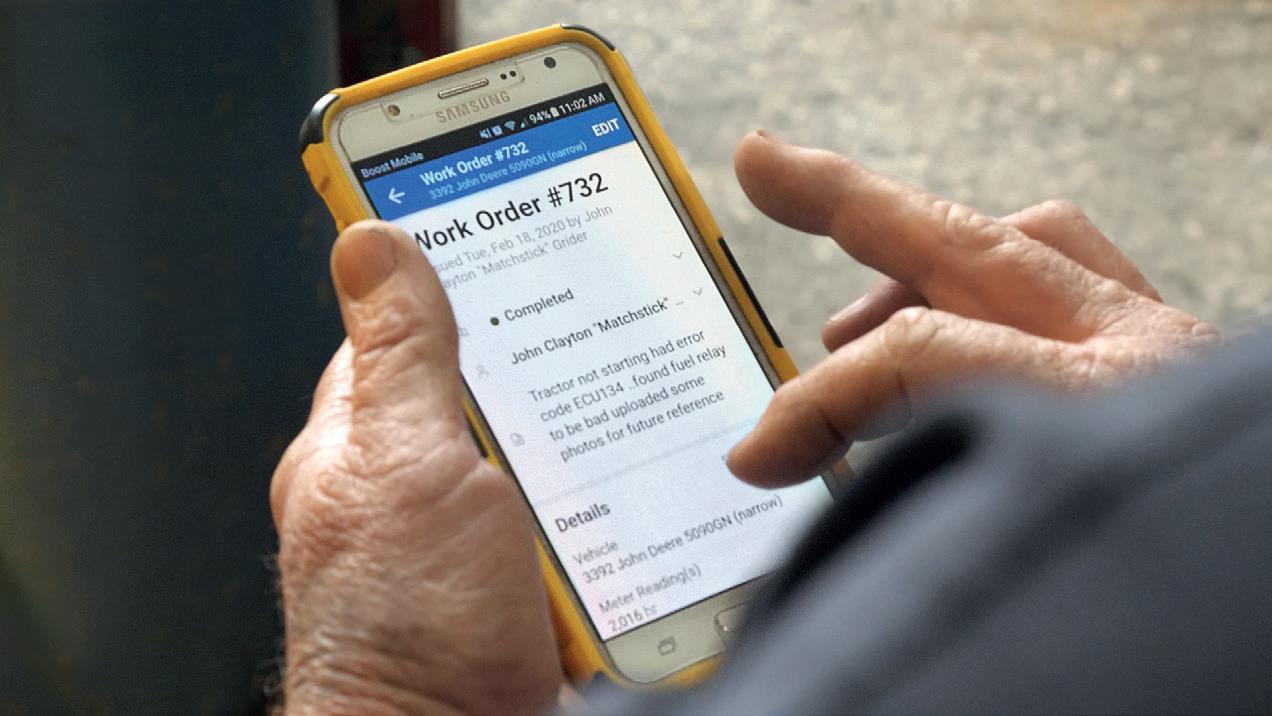
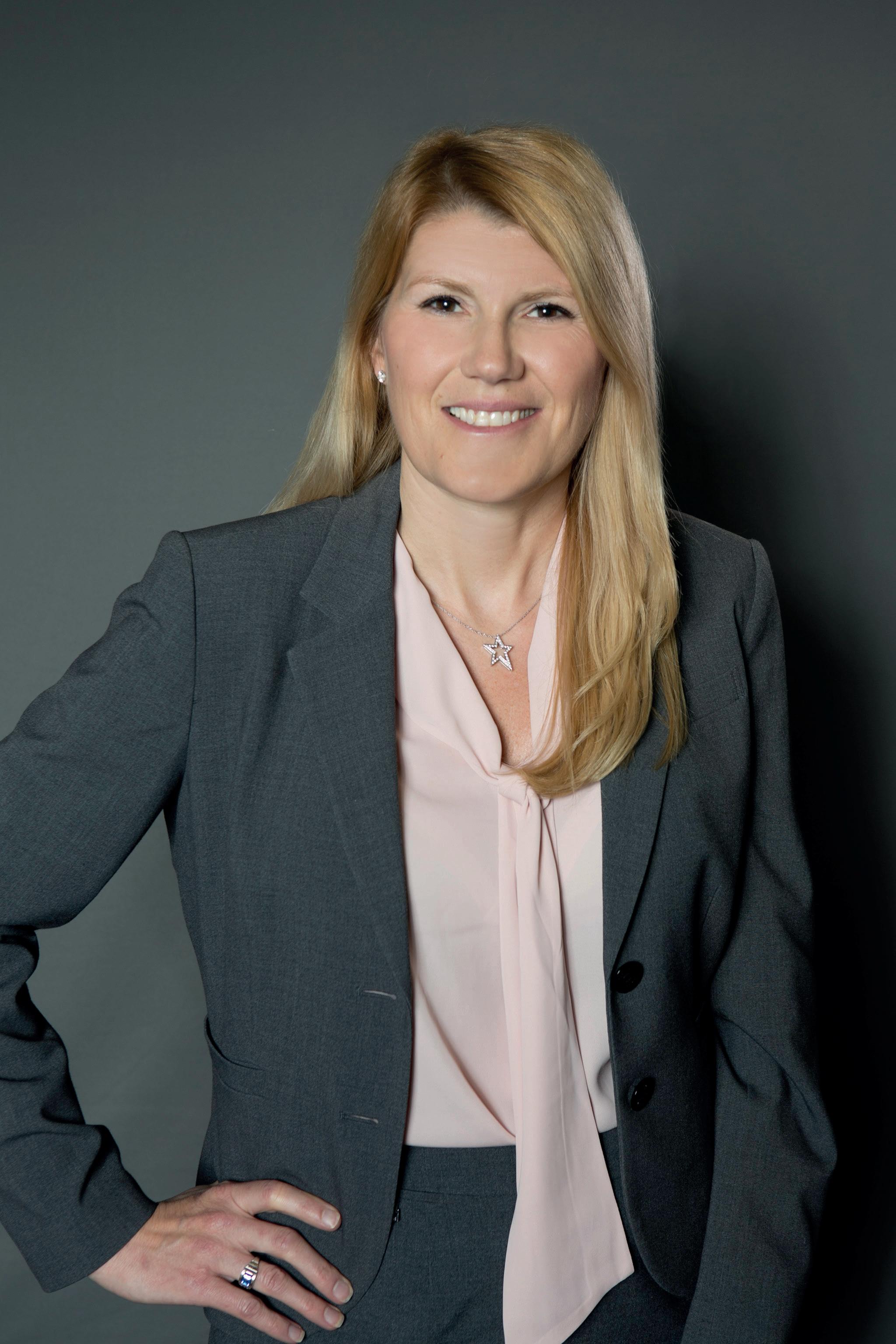
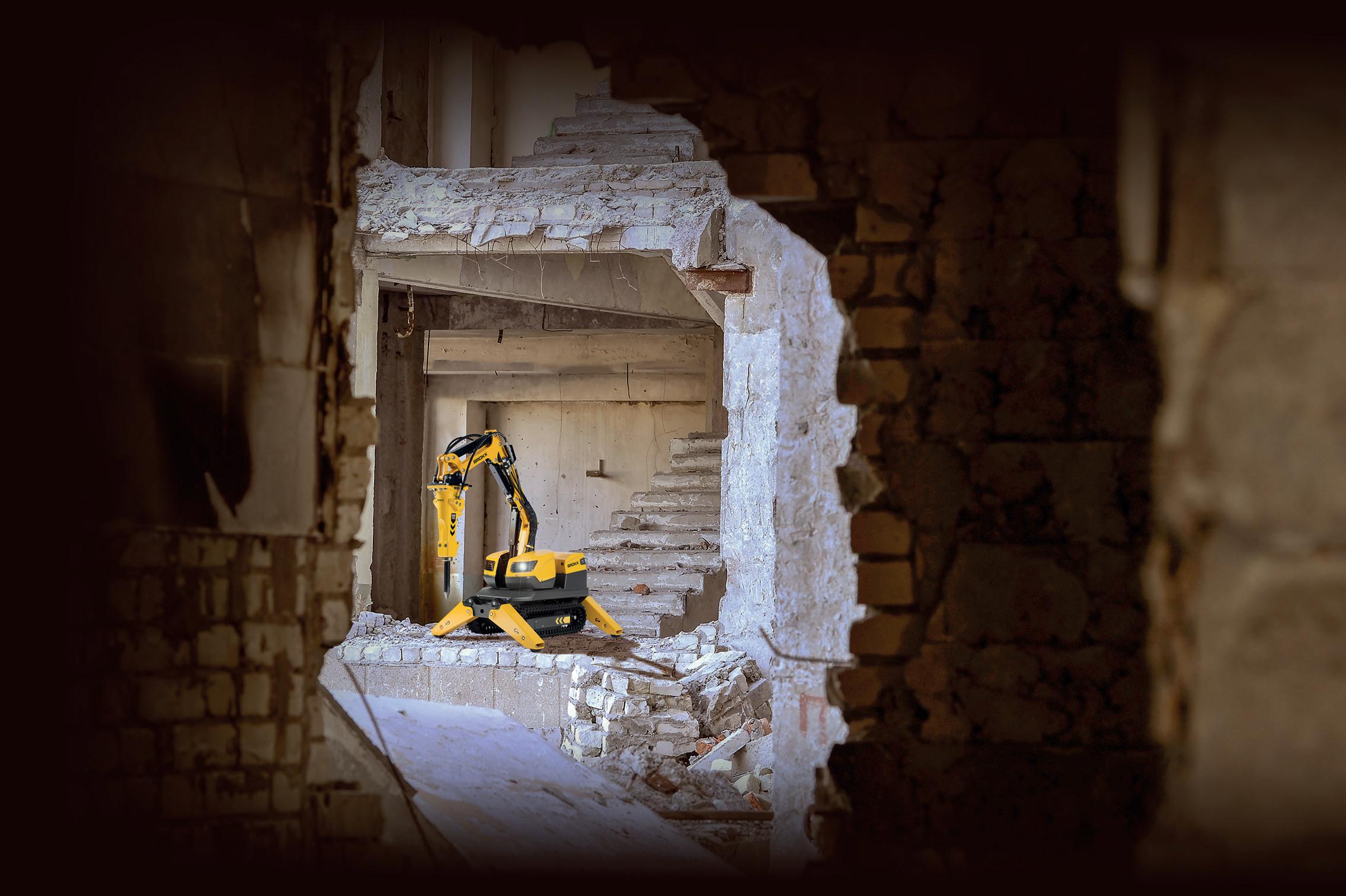



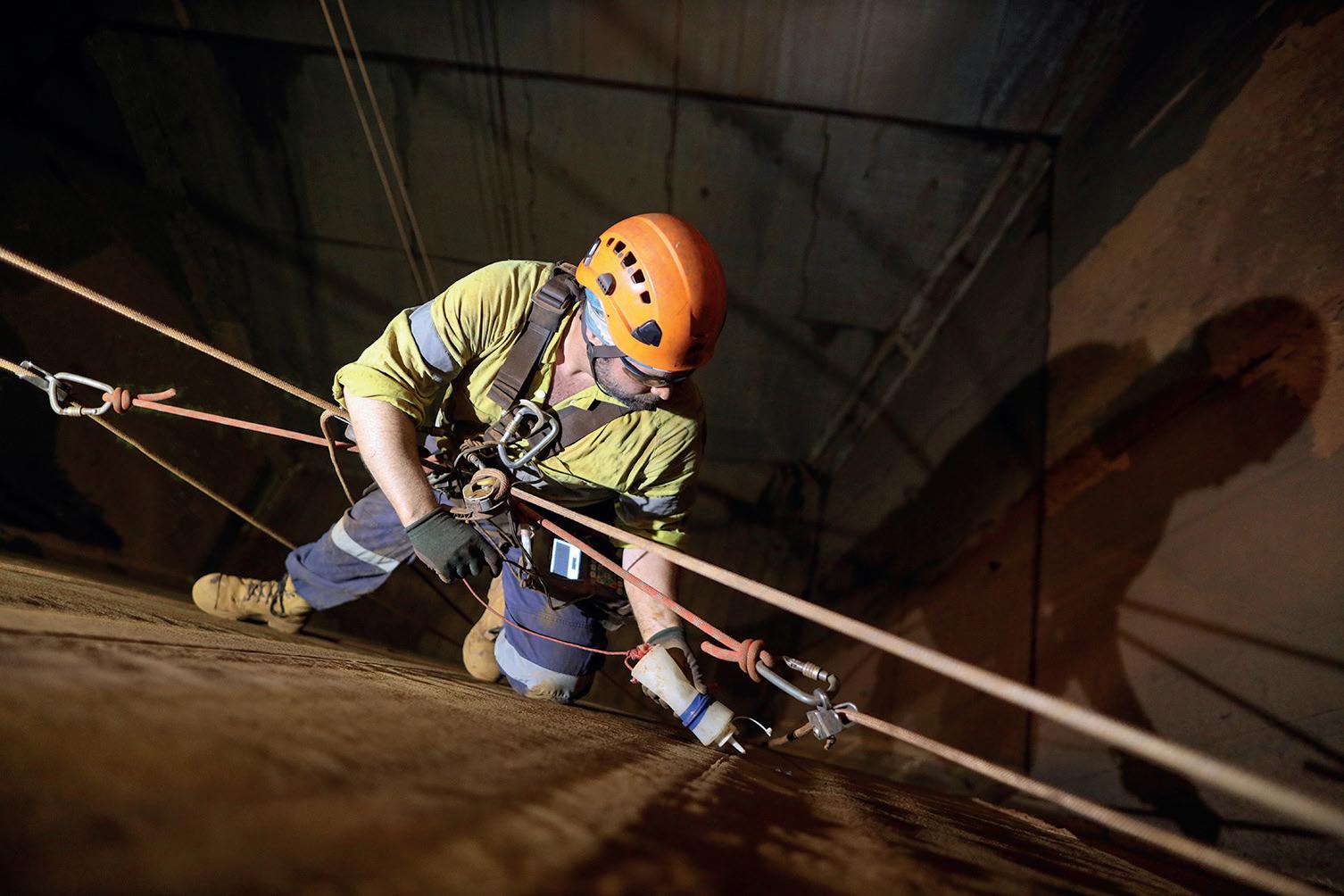
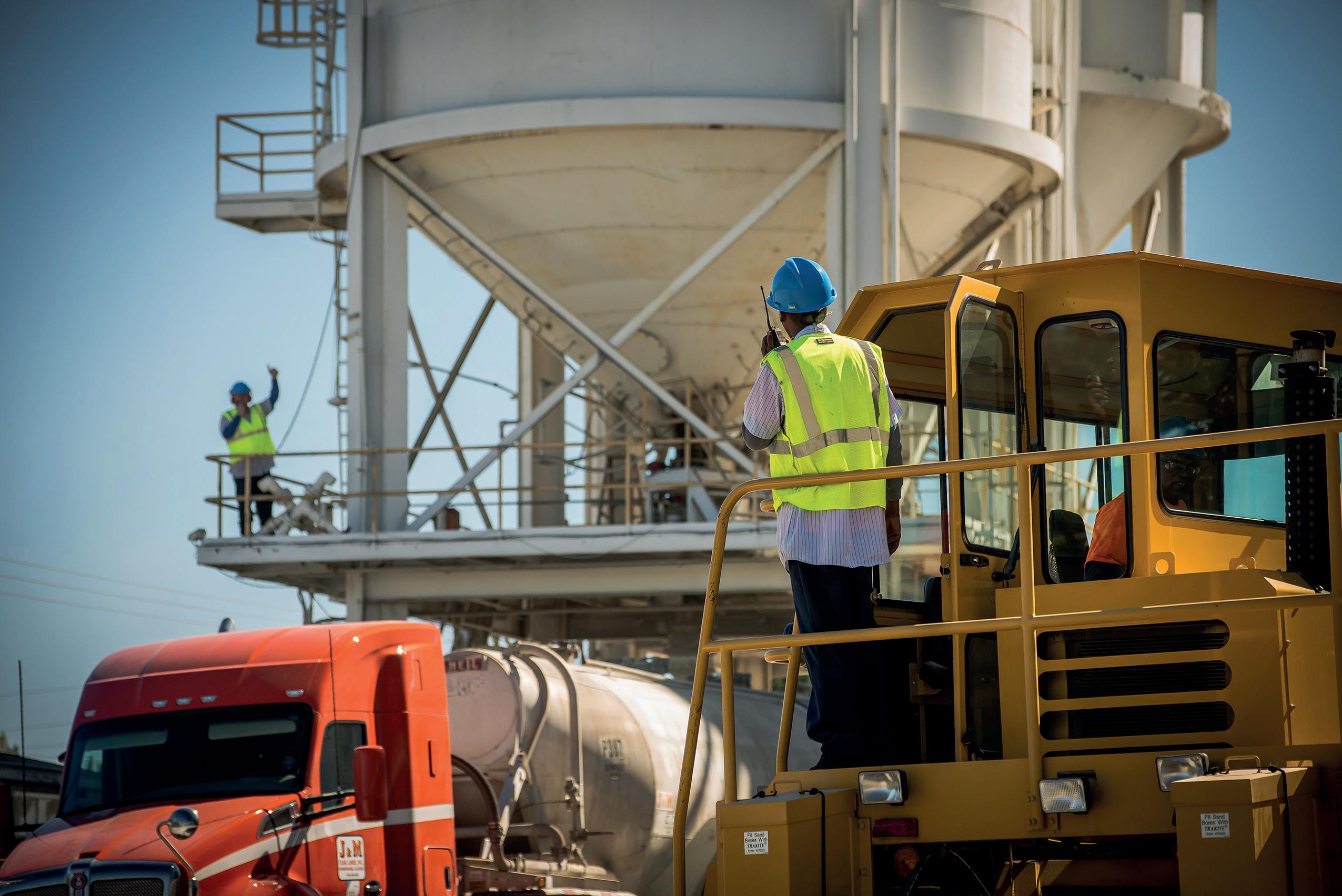




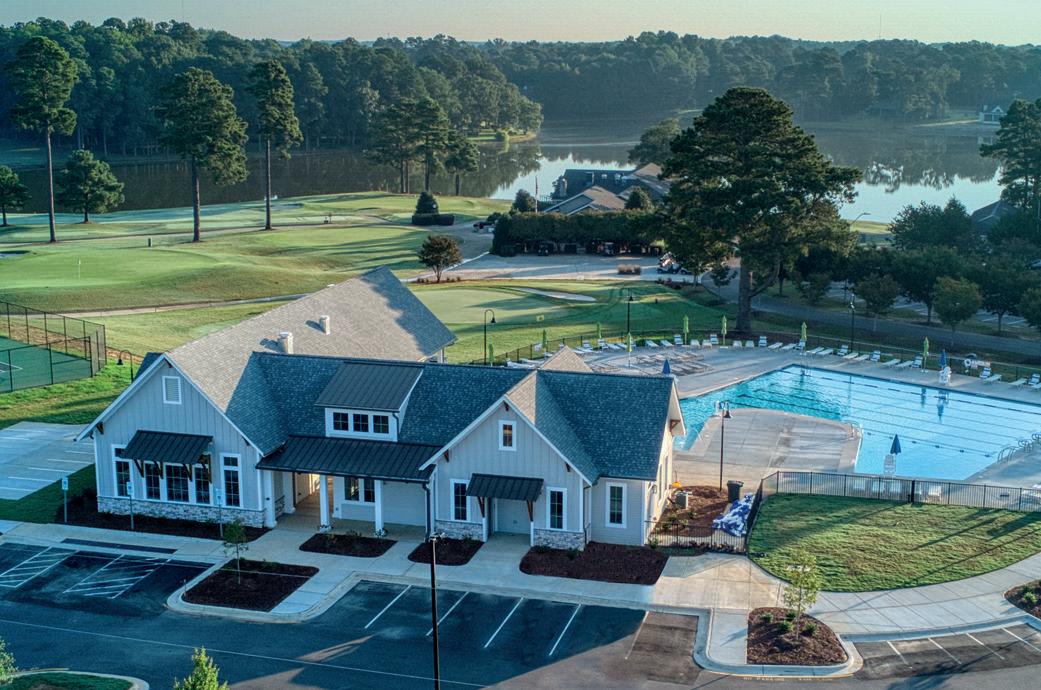
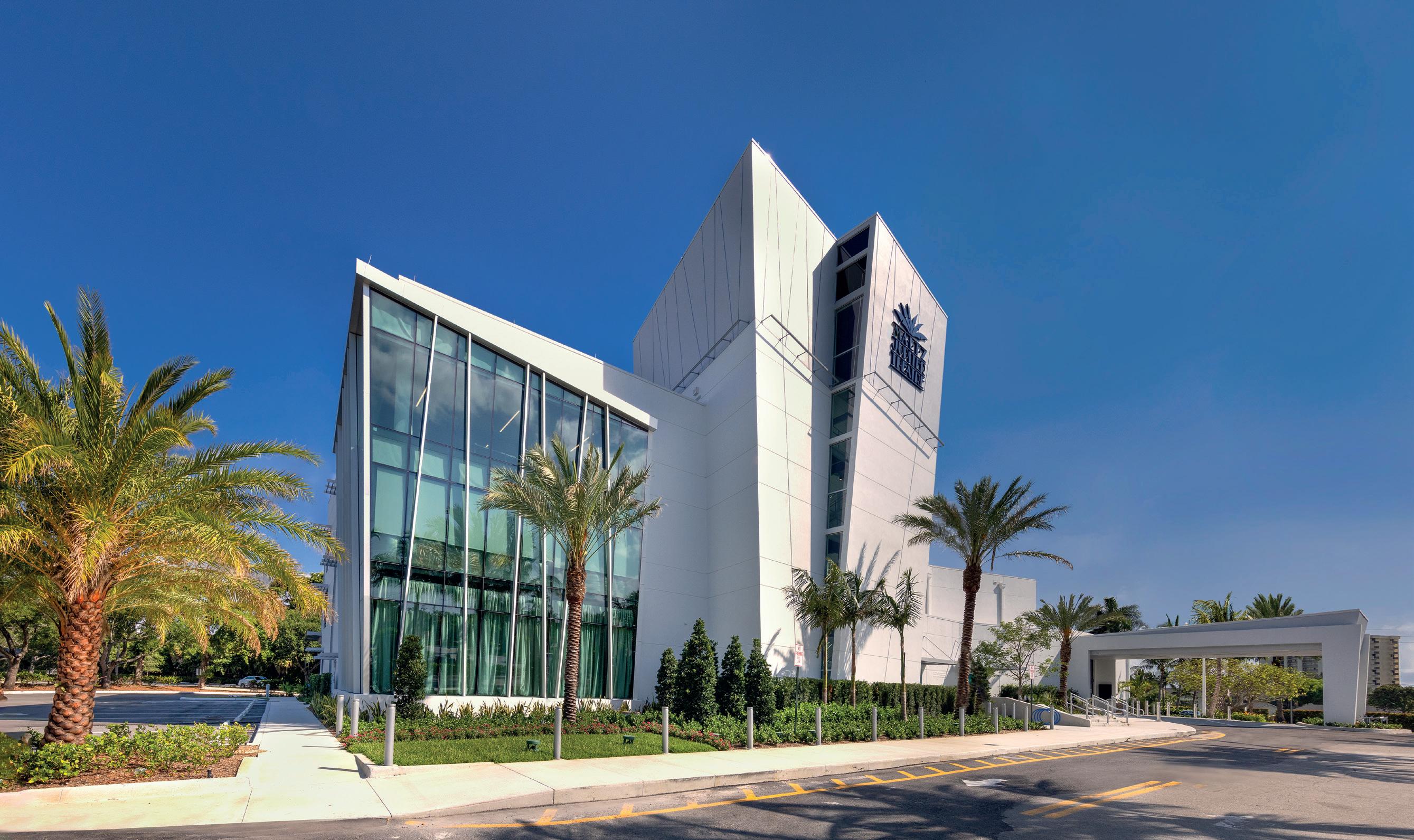
 Kaufman Lynn 64 72 Hillpointe, LLC
JD Beam 78
Sunworks 88
Kaufman Lynn 64 72 Hillpointe, LLC
JD Beam 78
Sunworks 88
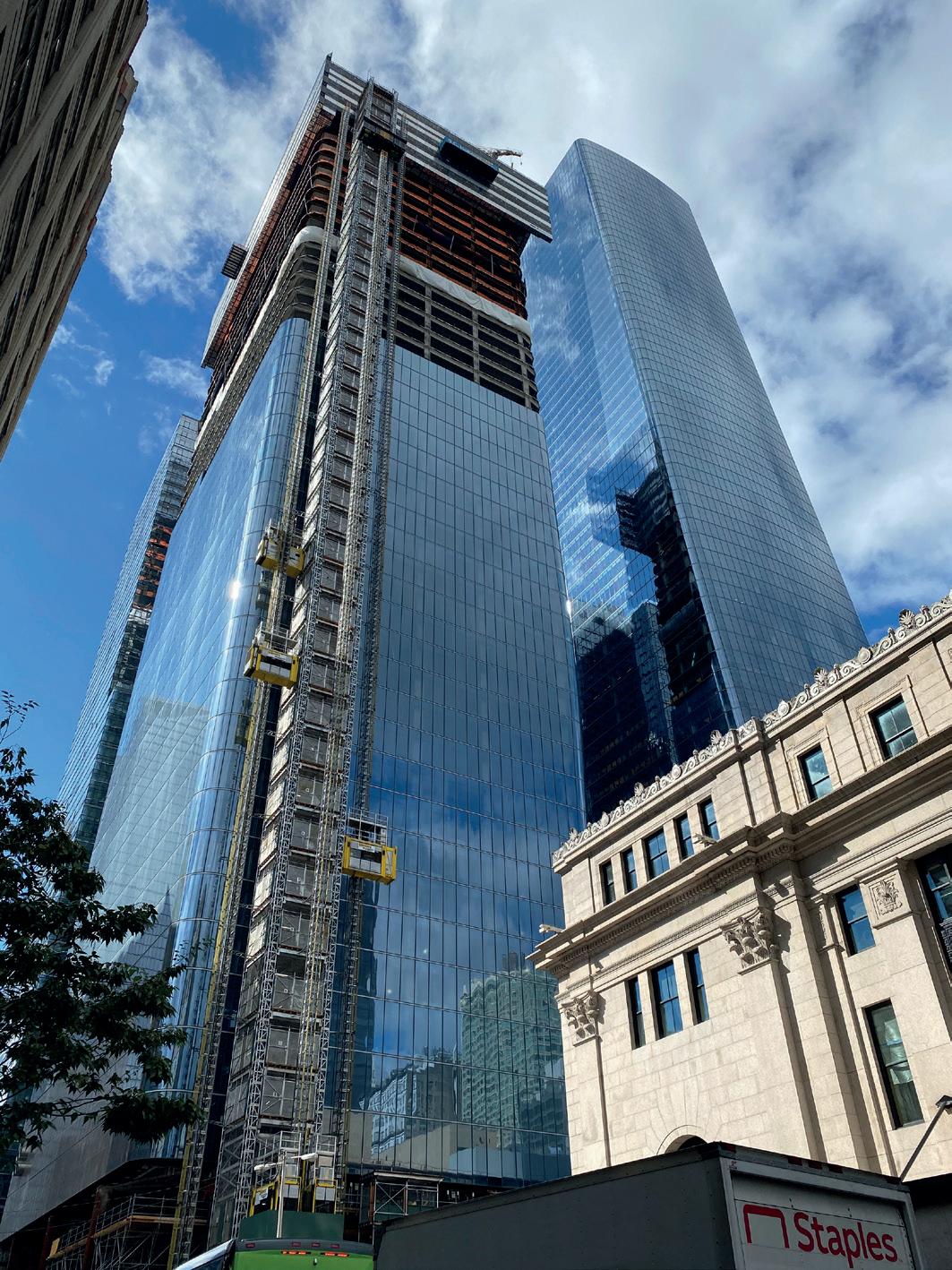
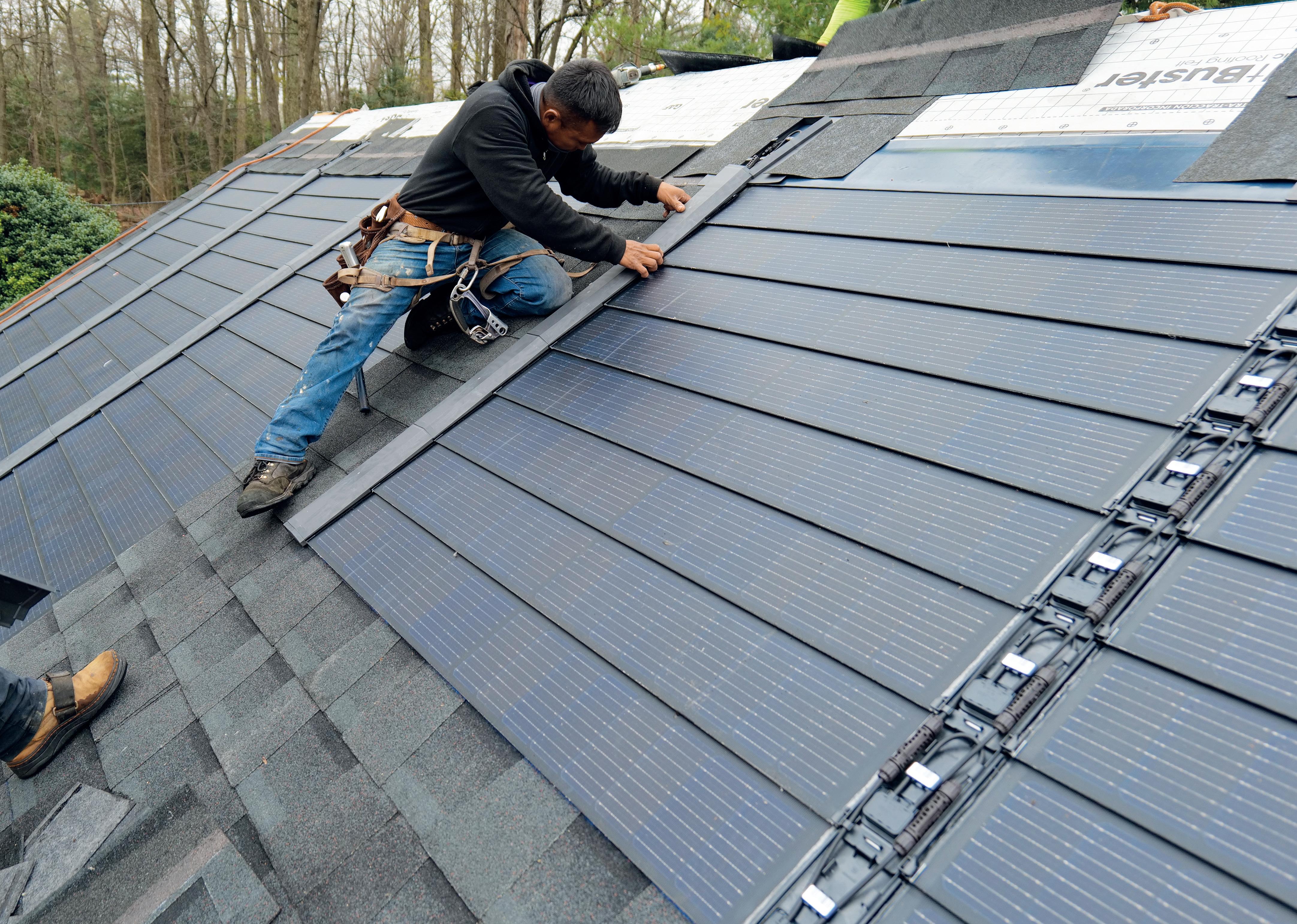
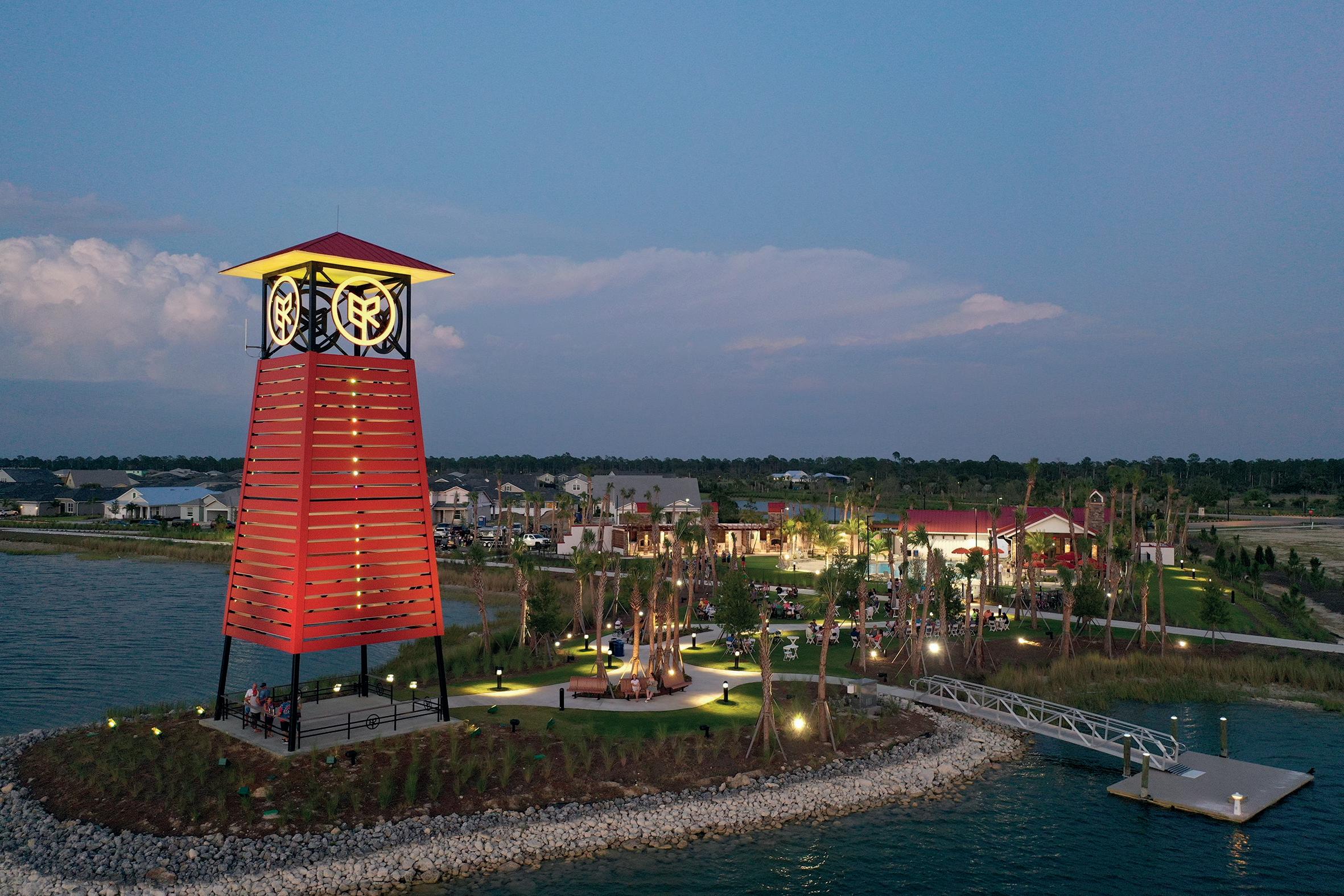
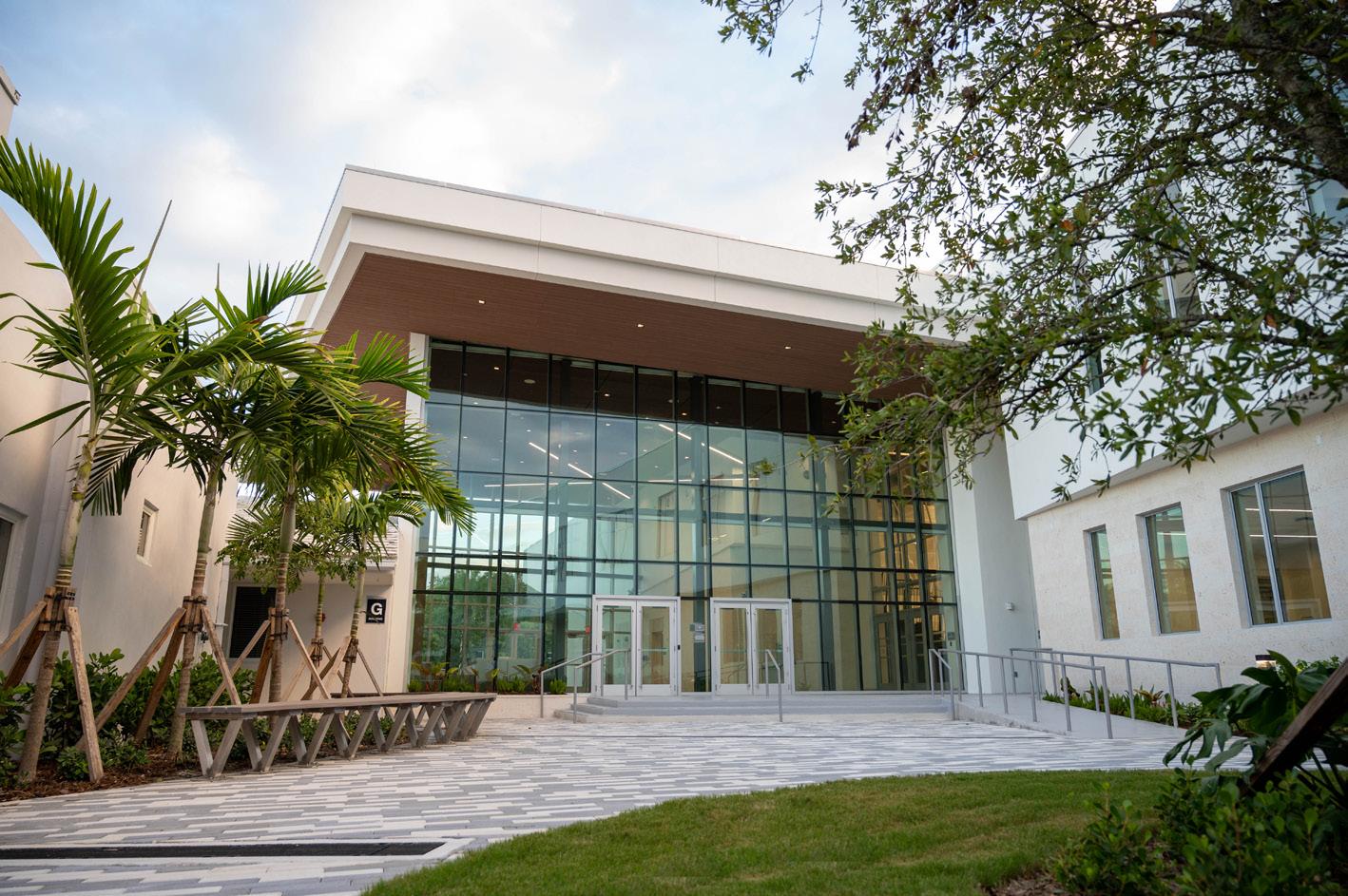

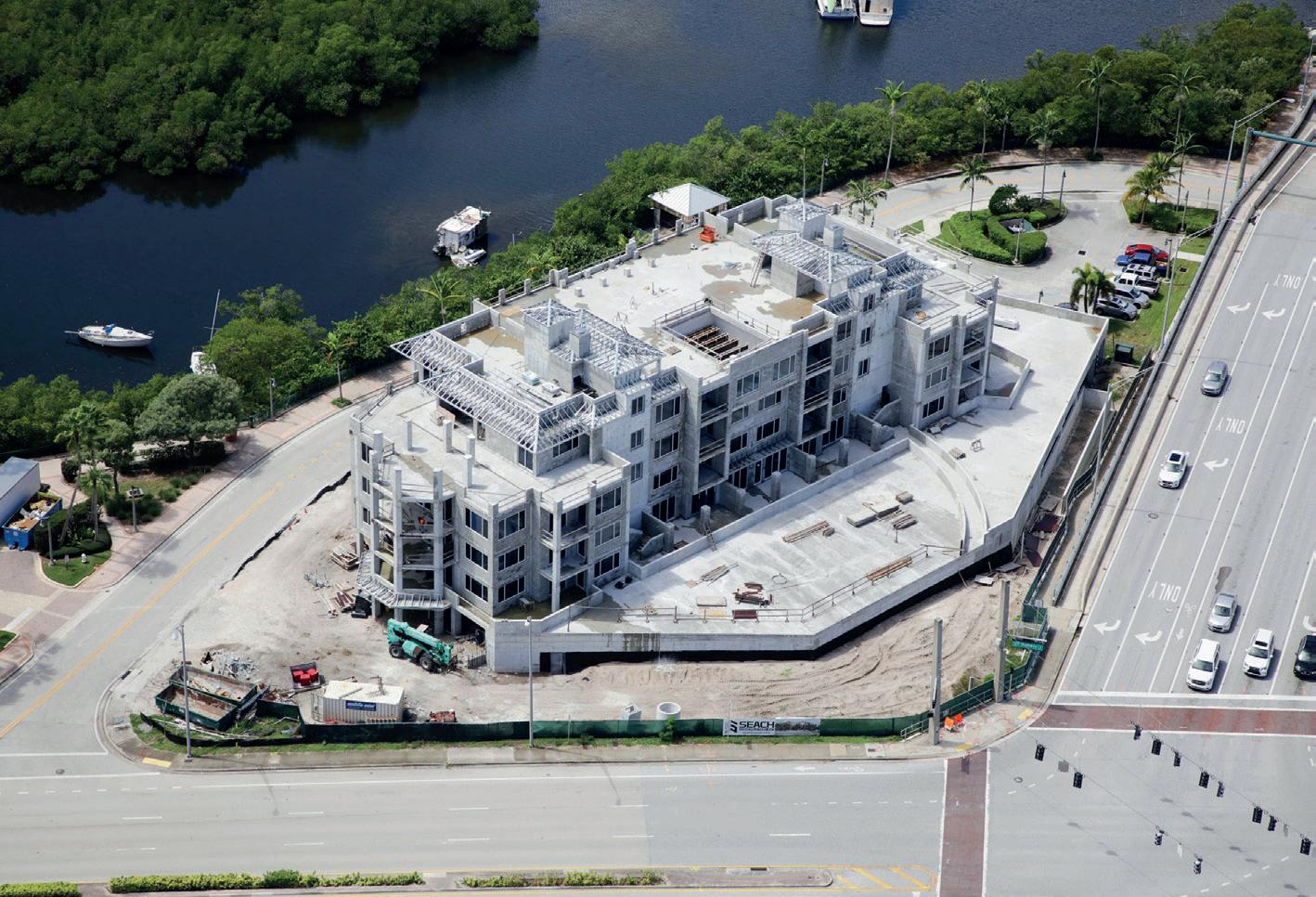

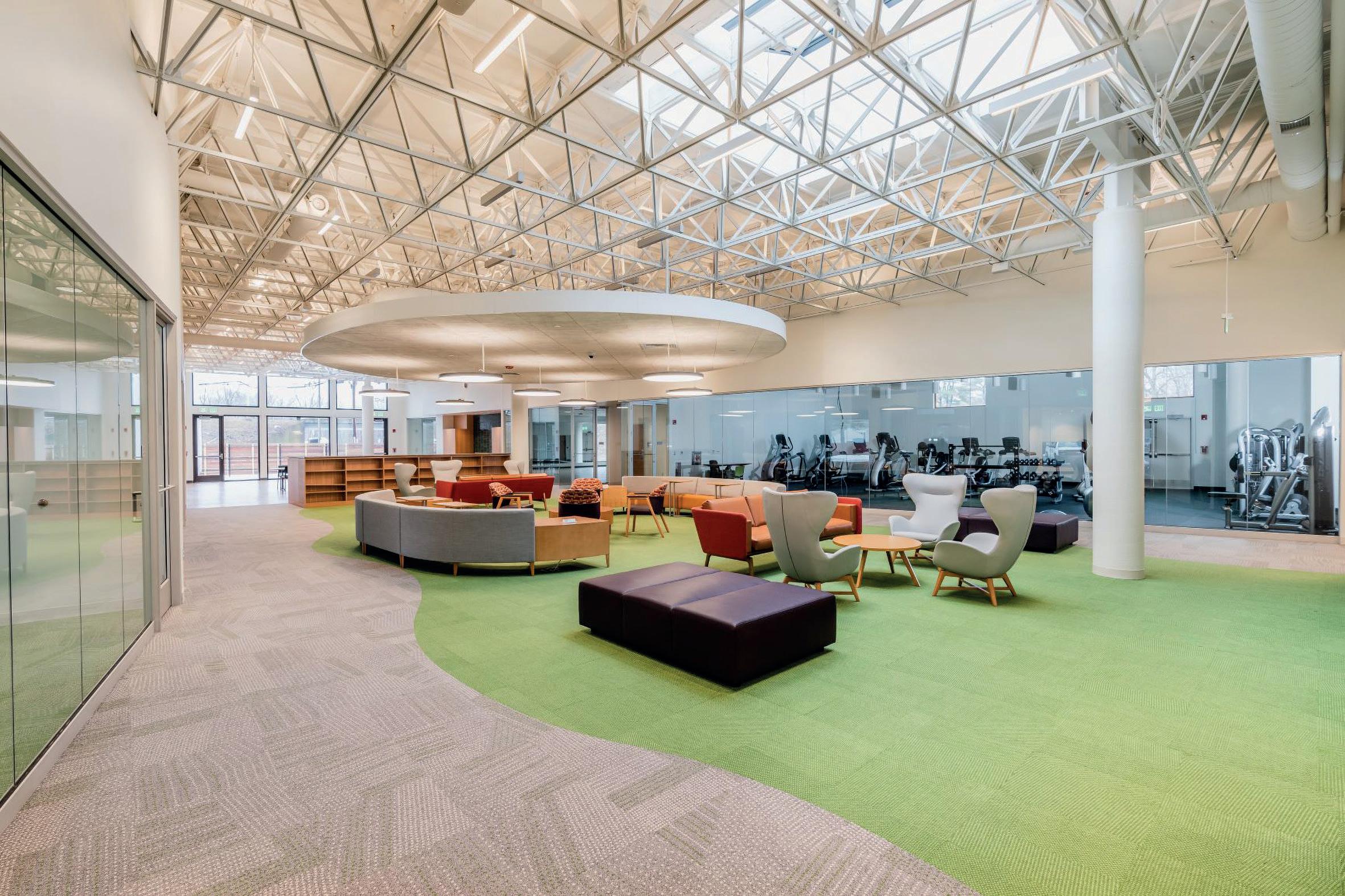
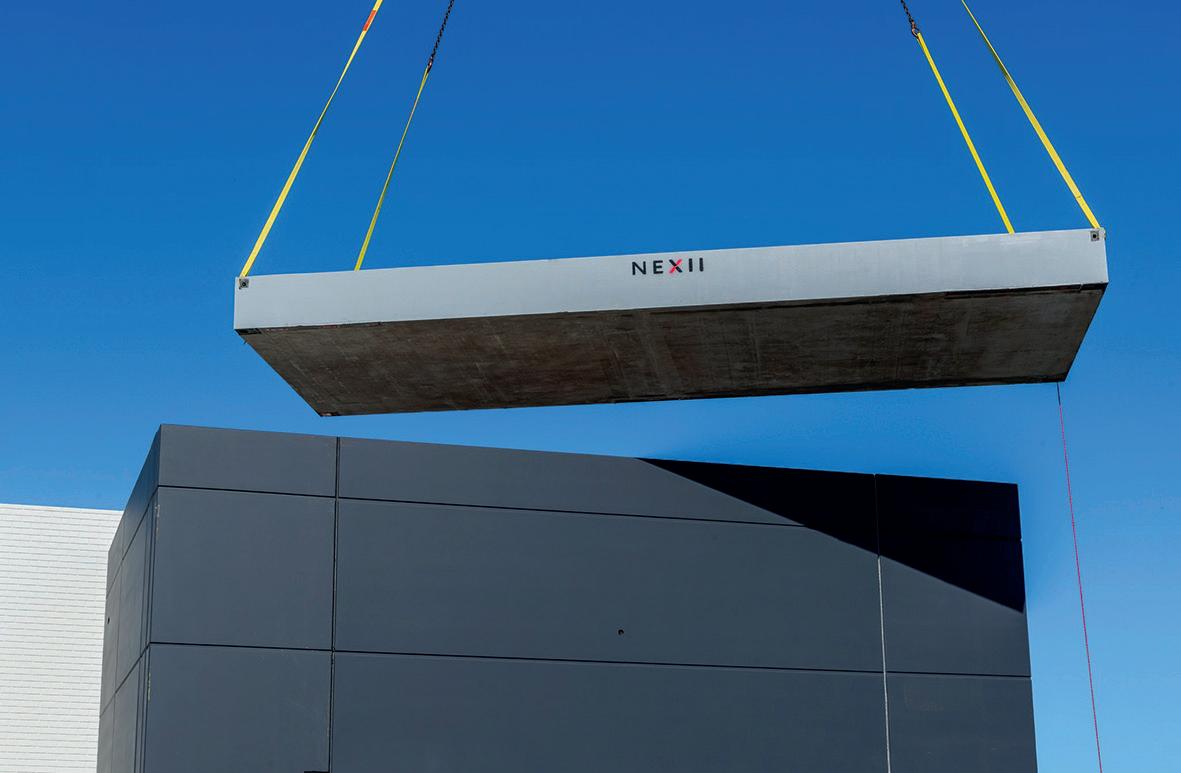
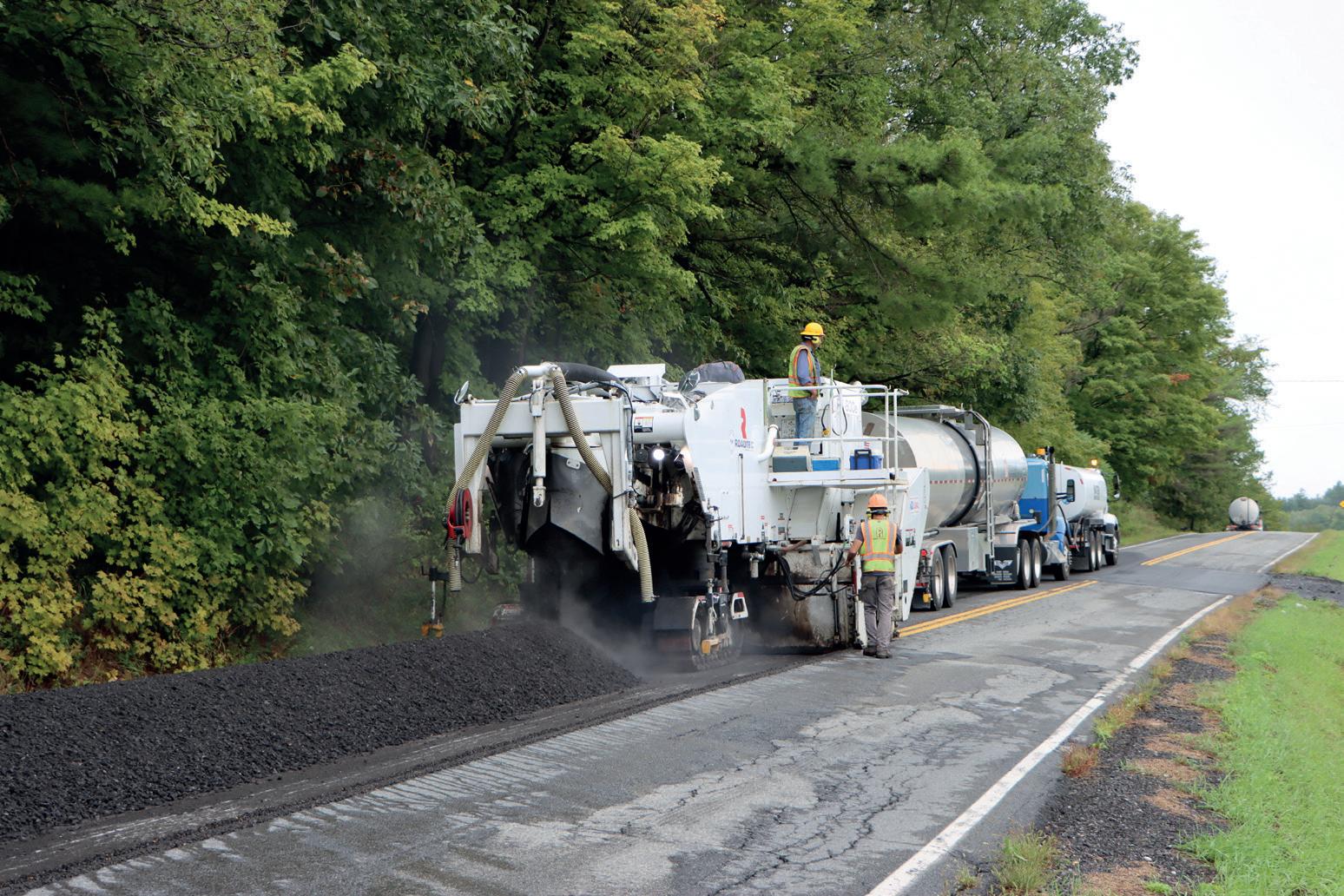 Nexii Building Solutions
Nexii Building Solutions
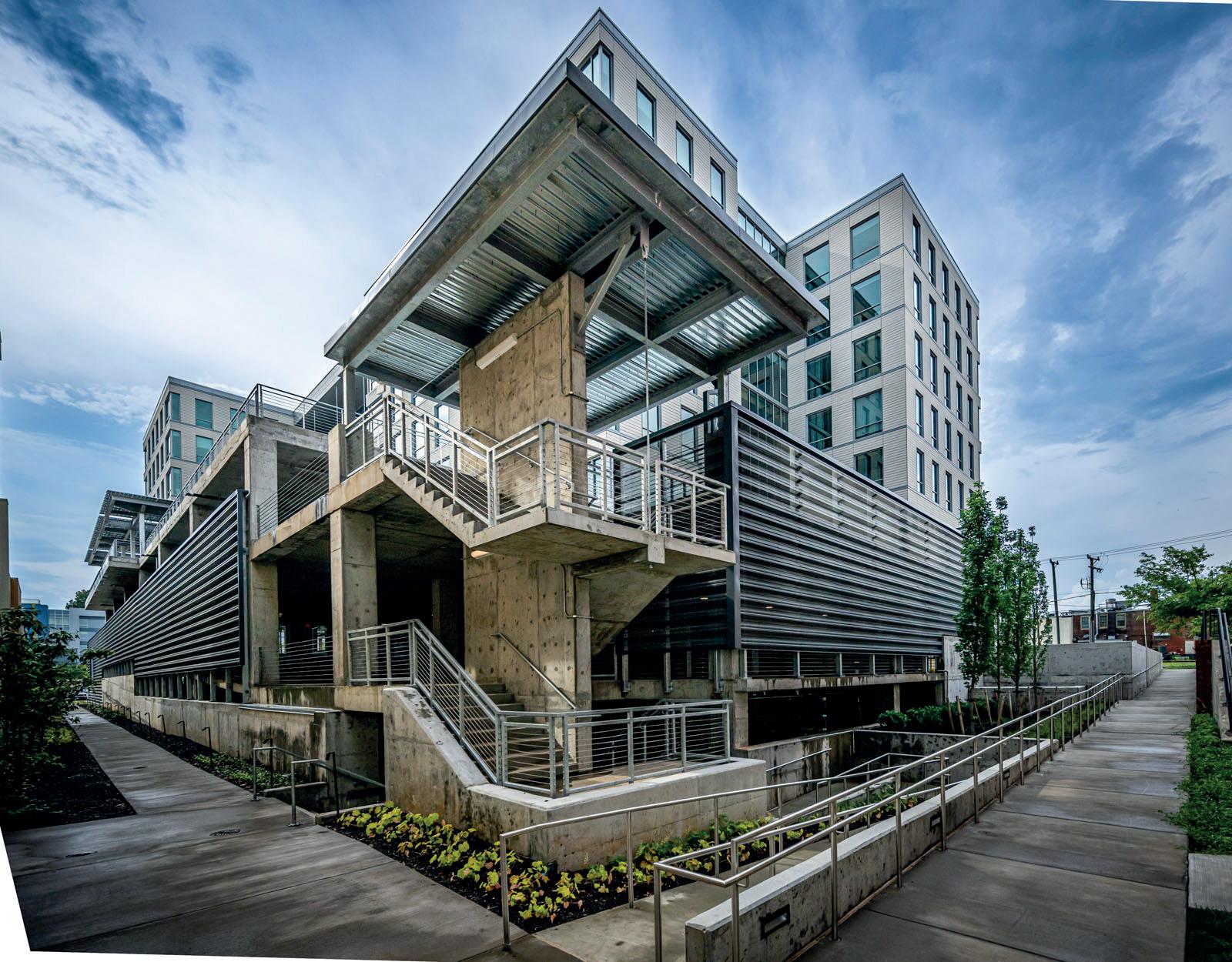
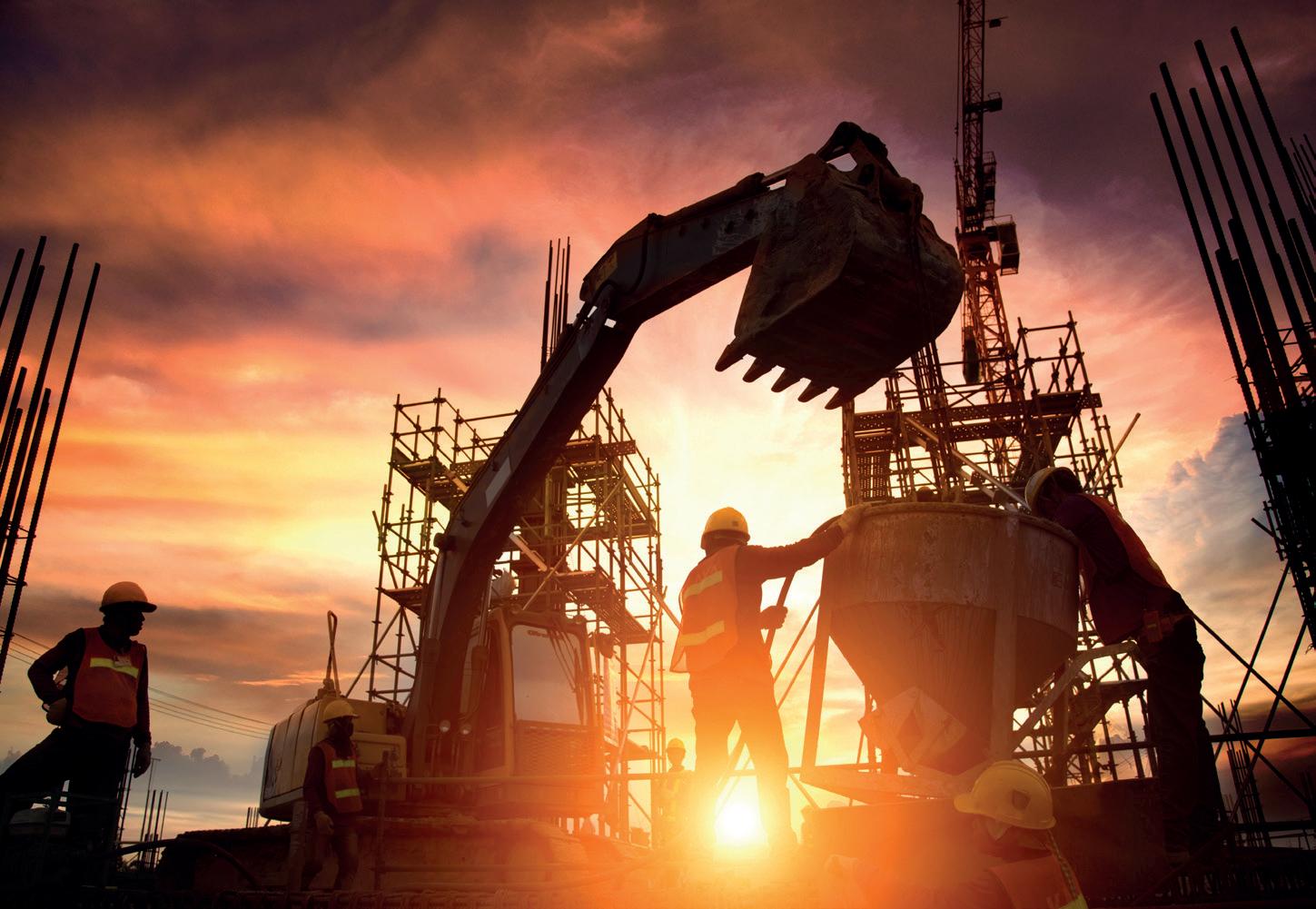

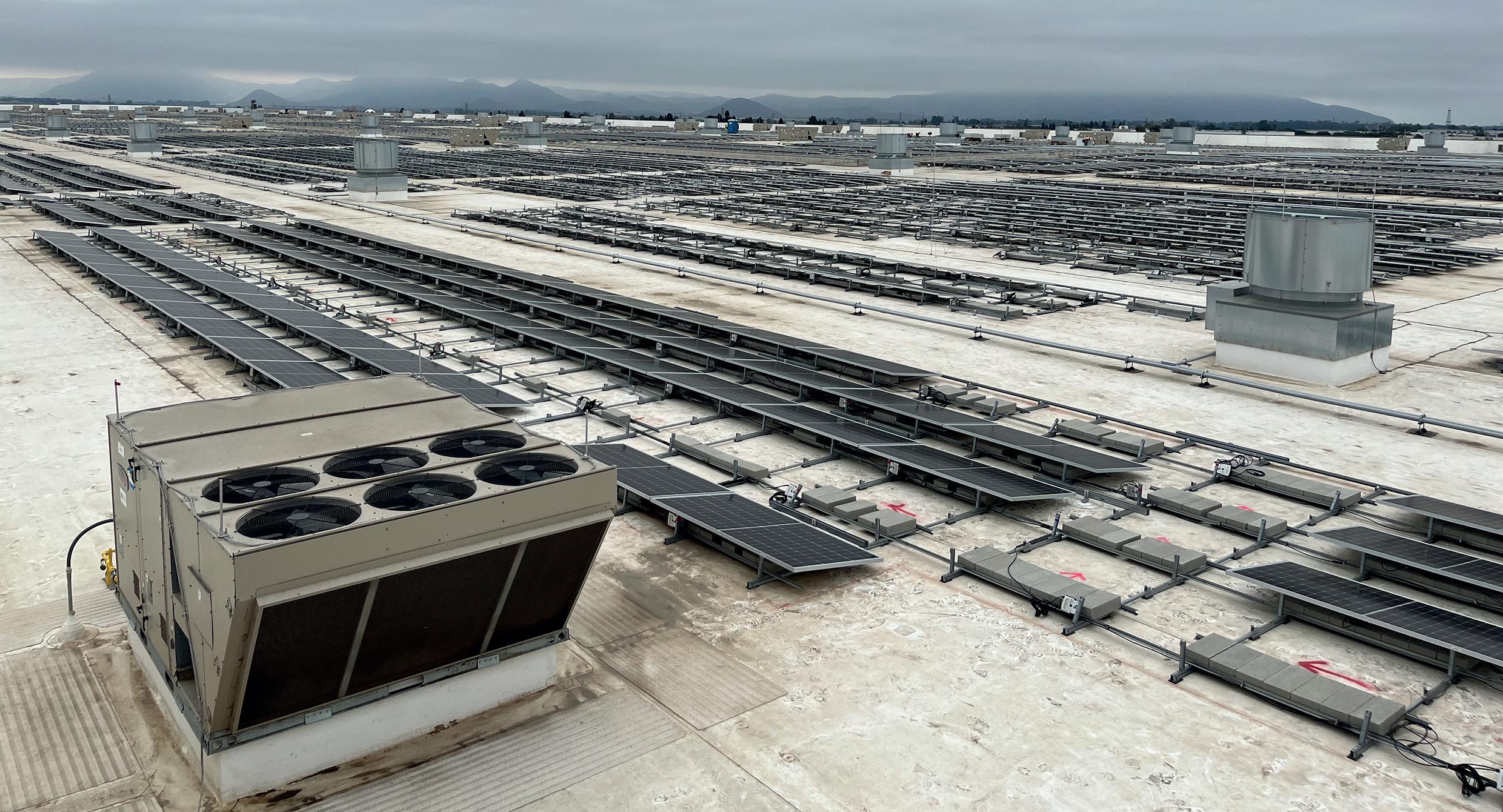
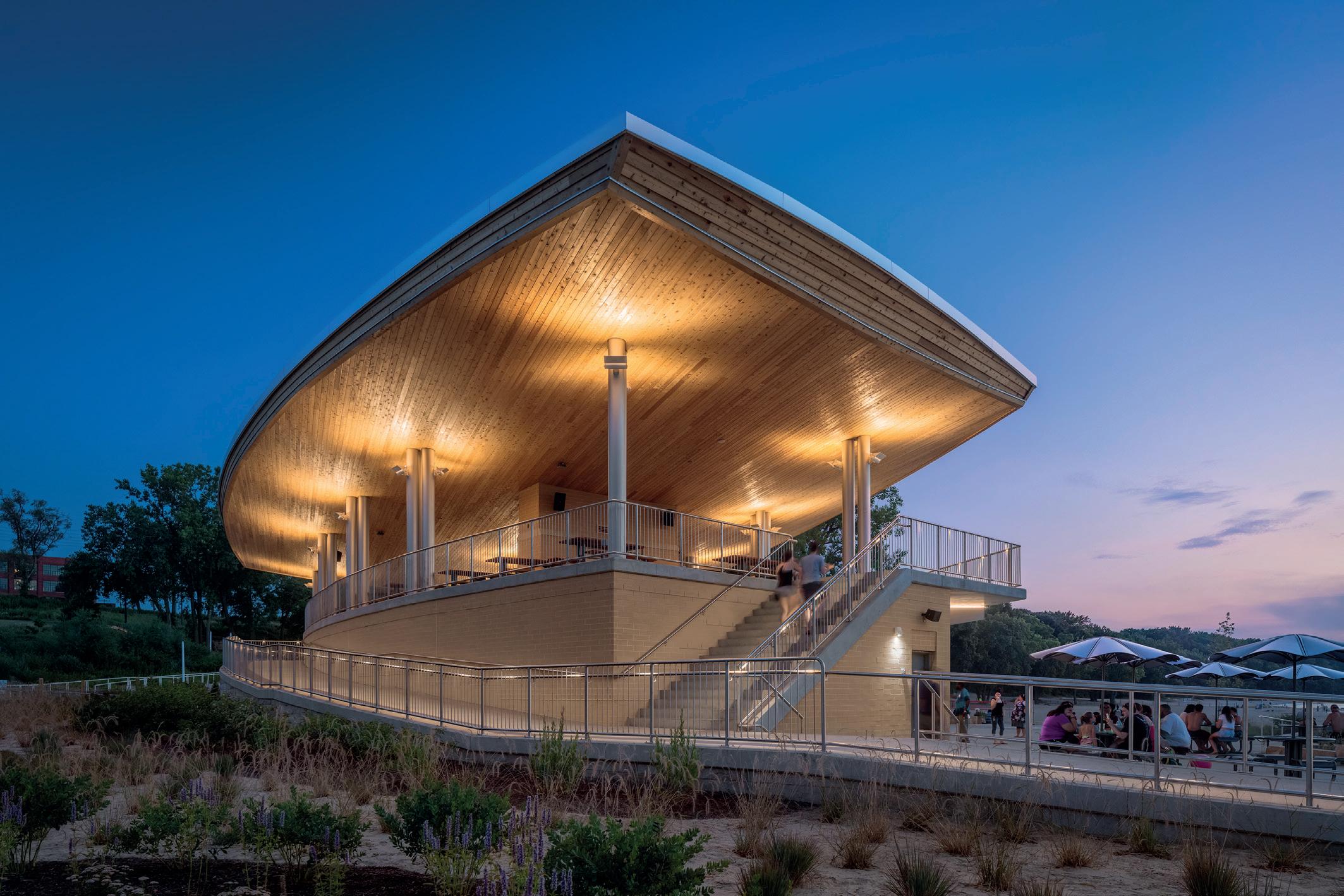

Let’s start with some more information about you:
First off, I’m a wife and a mother with kids aged 13, 11 and 10, and I know we have an opportunity to leave them with a better world. By training, I’m a civil engineer and have worked in construction materials my entire career. I love the industry and see that it has so many opportunities for those who are ambitious, hardworking and who want to make change.
Early on in my career, I learned about the tremendous impact the built environment has on the earth, both in the manufacturing of the building materials but also throughout the use of the building’s life.
I’m passionate about working to build better with less, and to reduce the overall impact of the built environment. Two of my strongest traits are my ambition and competitive spirit. They both drive me because I love a challenge, and I love to conquer it even more!
Do you have any experiences as a woman working in construction that you could share?
Initially, I tried hard to fit in and be ‘one of the boys.’ I was often the ‘only’ in the room, and it took me some time to find my voice. Finding the courage to stand out can be difficult for anyone, but I found I had to push myself to speak up or take my own seat at the table. It paid off because I was able
to voice a different opinion while also adding value. Now, I want to inspire young women to understand their potential in this industry. This industry is open to everyone, regardless of sex, ethnicity, background, etc. I believe our differences can make us stronger, and the sooner our industry is more representative, I’m convinced we will be more powerful and build even better!
The industry needs to find ways to attract workers in general - we face real issues in attracting talent in all areas of the business, from skilled trades to the back office. I take any opportunity possible to get in front of young people and sing the praises of the construction industry and its opportunities.
Appreciating staff and acknowledging the efforts of your team is important to you – how does that translate into your day to day work at Holcim?
Like any business, our people are our most fundamental and important asset. Our success is dependent on having the right people in the right places. Our teammates should feel motivated and excited by the work we’re doing, and feel like they are part of building a positive culture. As a leader, my role is to share our vision, align on our shared purpose and make sure everyone is working toward the same short- and long-term targets.
We underwent a rebrand this year - transitioning Firestone Building Products to Holcim’s Building Envelope Division and transitioning the Firestone roofing, wall and lining systems brand to a new brand name, Elevate.
Holcim Building Envelope is our new center of excellence for roofing, wall, lining and waterproofing solutions for commercial and residential customers around the
world. And Elevate symbolizes Holcim’s continued commitment to deliver superior quality and innovation with advanced building solutions. I am laser focused on bringing more solutions into our portfolio through both organic innovation and through mergers and acquisitions. The goal is for the Holcim Solutions & Products business unit is to generate more than 30 percent of Holcim’s revenue by 2025, and we are well on our way.
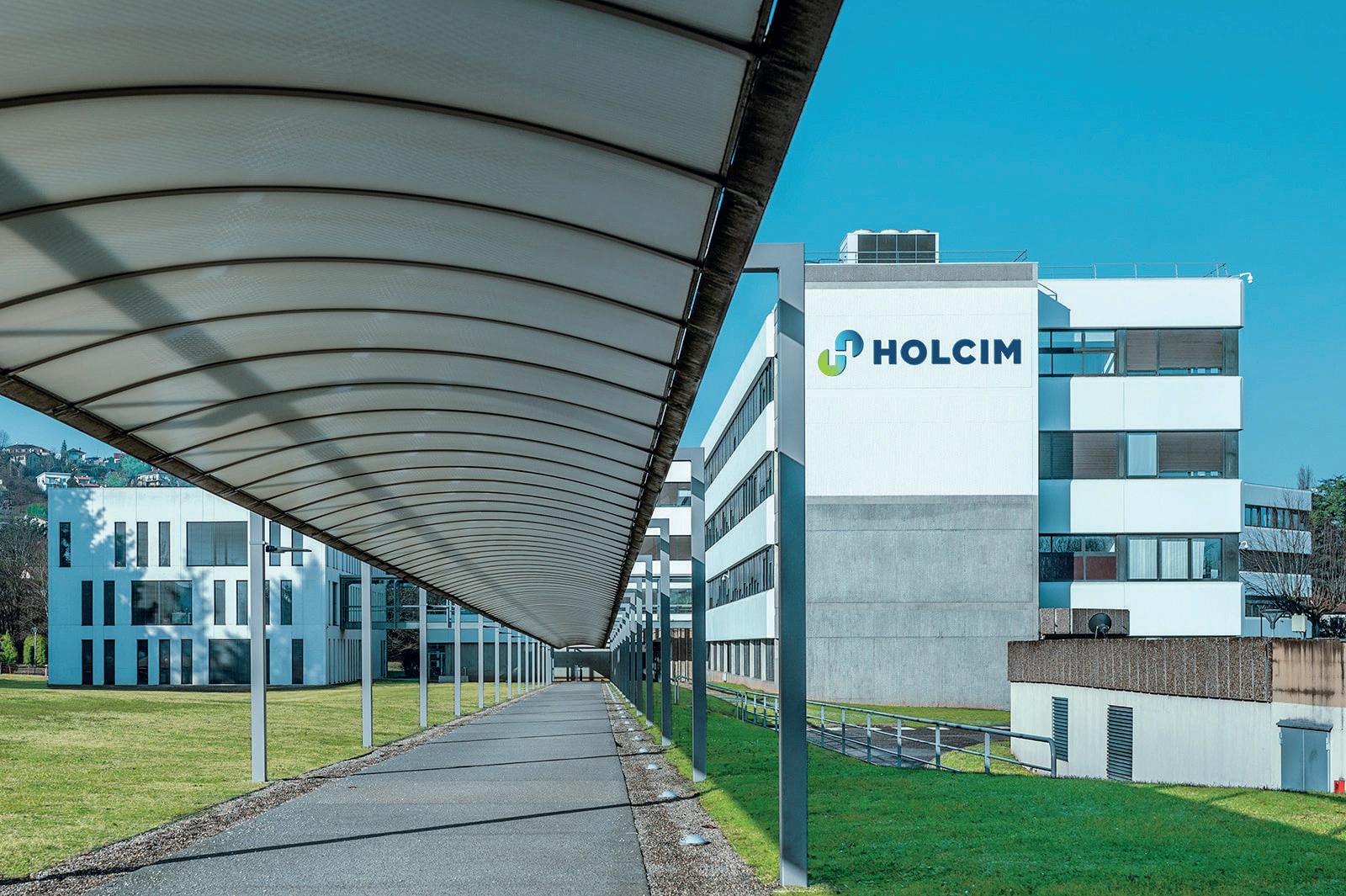
What are you working on at the moment?
If we start using lower-impact cement, the environmental footprint of the whole concrete (and construction) industry changes dramatically
“
“ “
Holcim is supporting The White House’s Buy Clean efforts – can you tell me more about that strategy?

We are working hard to make our products eco-friendlier, but we need help from our policymakers. The U.S. federal government is a huge procurer of goods and has the power to change markets. The Buy Clean commitment to sourcing low-carbon products will enable Holcim to invest in American manufacturing, help launch new low-carbon products and
help us build the future for people and the planet. We also work closely with our local governments to try to help them understand that ‘buy clean’ is completely necessary. While government buy-in is one of the pieces, manufacturers must also make upfront changes to their businesses.
One of the main complaints about ‘green’ products is that they cost more. Part of this issue is that they are currently only niche products and until they are in higher demand and utilized en masse or in the mainstream, it will be difficult to lower their costs. It will take manufacturers making bold moves, having the courage to defy demand and only producing low(er) impact, green products. I mention this because Holcim did just this in the cement market, moving production over the last year over to lower impact Type IL cement despite a lack of demand. We need to be leaders and do our work to move markets at the same time we work with our policymakers.
In terms of investments, they are completely in line with our purpose to build progress for people and planet.
How can the industry encourage more construction companies to look for greener concrete alternatives? What is holding them back (if anything)?
To be most efficient, cement plants run 24 hours a day, seven days a week, and typically have only one or two shutdowns per year. Buildings are responsible for 38 percent of the world’s CO2 emissions - it’s clear we need to build better. Concrete has to hold up to an 80-story building, span miles over canyons or hold back millions of gallons of water, and
specifiers have a hard time changing a product that has been standing the test of time for hundreds of years so efficiently - but it can be done. People fear change, but the outcome of not changing is worse. If we start using lower-impact cement, the environmental footprint of the whole concrete (and construction) industry changes dramatically. We need to accept that the concrete of yesterday will not, and cannot, be the concrete tomorrow.
What do you envision we will see from Holcim in the coming 12 months?
It’s an exciting time as we’re finally starting to see changes in how the construction industry prioritizes our
sustainable future. We’re growing quickly, but we only invest in businesses that are committed to this cause – like those businesses we acquired this year.
We’re amidst innovative R&D projects to replace materials that can be scarce and/or have high environmental impact.
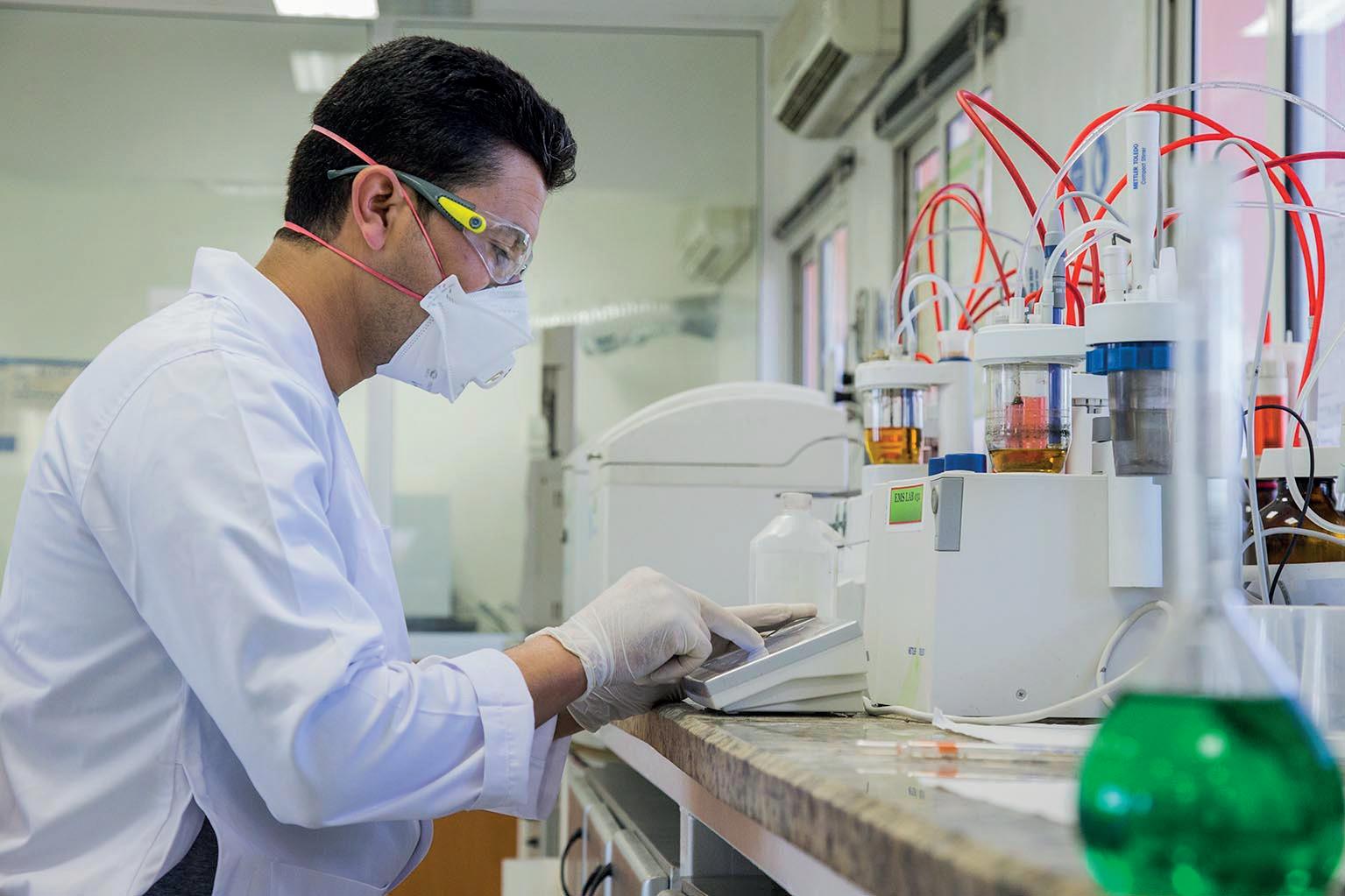
At the end of the day, we’re focused on our customers. So we have many projects in progress that make our customers’ jobs easier, faster, and ultimately, reduce labor. This will include unique advancements in insulation and even transportation, focused on lower costs and higher efficiency.
Finally, we’re heading to net zero! While 38 percent of global CO2
emissions come from buildings, 70 percent of that is from the life of the building and 30 percent comes from the building material. Urbanization and population growth will continue driving these numbers if we don’t make changes. We have the possibility to improve that 30 percent with low-impact products, and we can also affect the other 70 percent by considering the full building envelope and using more efficient materials. My division is precisely focused on bringing these types of solutions into Holcim’s portfolio, while continuing inorganic growth through mergers and acquisitions.
It’s worth noting we were one of seven companies globally that had our 2050 roadmap verified by SBTi (Science Based Target Initiative). As the name implies, our sustainability goals are based on science - it’s not just advertising. We have also put our money where our mouth is and have sustainability-linked financing - targeted at 40 percent by 2024 - and have also linked senior leadership incentives to our sustainability targets. From the products we procure to the way we run our factories, to the products we produce, we have put sustainability at our core.

Returning to your own career again finally, what is the most important lesson you have learned in business, and also the best bit of advice you have had from someone else?
Throughout my career there have been many lessons and many times I had to remind myself that if it were easy, they wouldn’t need me. In
the end, it really does come down to people and working as a unified team with a shared purpose. This is the absolute most important part of my job as a leader. You can have the newest factory with the best equipment that money can buy, but if you don’t have a great leader with a motivated, united team, that factory will never perform as it could and will be run down before its time. Best advice - get the people right!
This industry is being hit by a tsunami of change. Twenty years ago, I was speaking to specifiers about using lower impact products and LEED was the buzz. These were just tiny waves, no surfing. Now the wall of water is upon us, and there is a huge opportunity to (surf and) join an industry that will define our future as a society and the way we live. If we can’t get the younger generations and a more diverse population excited about being part of this, I don’t know what will. I believe the next ten years will be the most dynamic this industry has ever seen. It’s an exciting time, and I am proud to be a part of a company that wants to lead. ■
For more details on Holcim’s range of building envelope solutions visit: www.holcimbe.com/content/holcimenvelope/en.html
I believe the next ten years will be the most dynamic this industry has ever seen
Contract mobilization takes a lot of effort and crossdepartmental coordination, from administrative tasks and setting project expectations to ensuring fleet assets are lined up and ready to work. Calculating mobilization fees is difficult enough before considering fleet; however, if a piece of fleet breaks down while
delivering equipment — or the equipment itself breaks down on site — businesses may have to tack on remobilization fees. Additionally, fleet asset breakdowns can throw an entire project off schedule and negatively impact the company’s reputation.
Mobilization time and costs relating to transportation, petrol, off-road equipment, and tools can
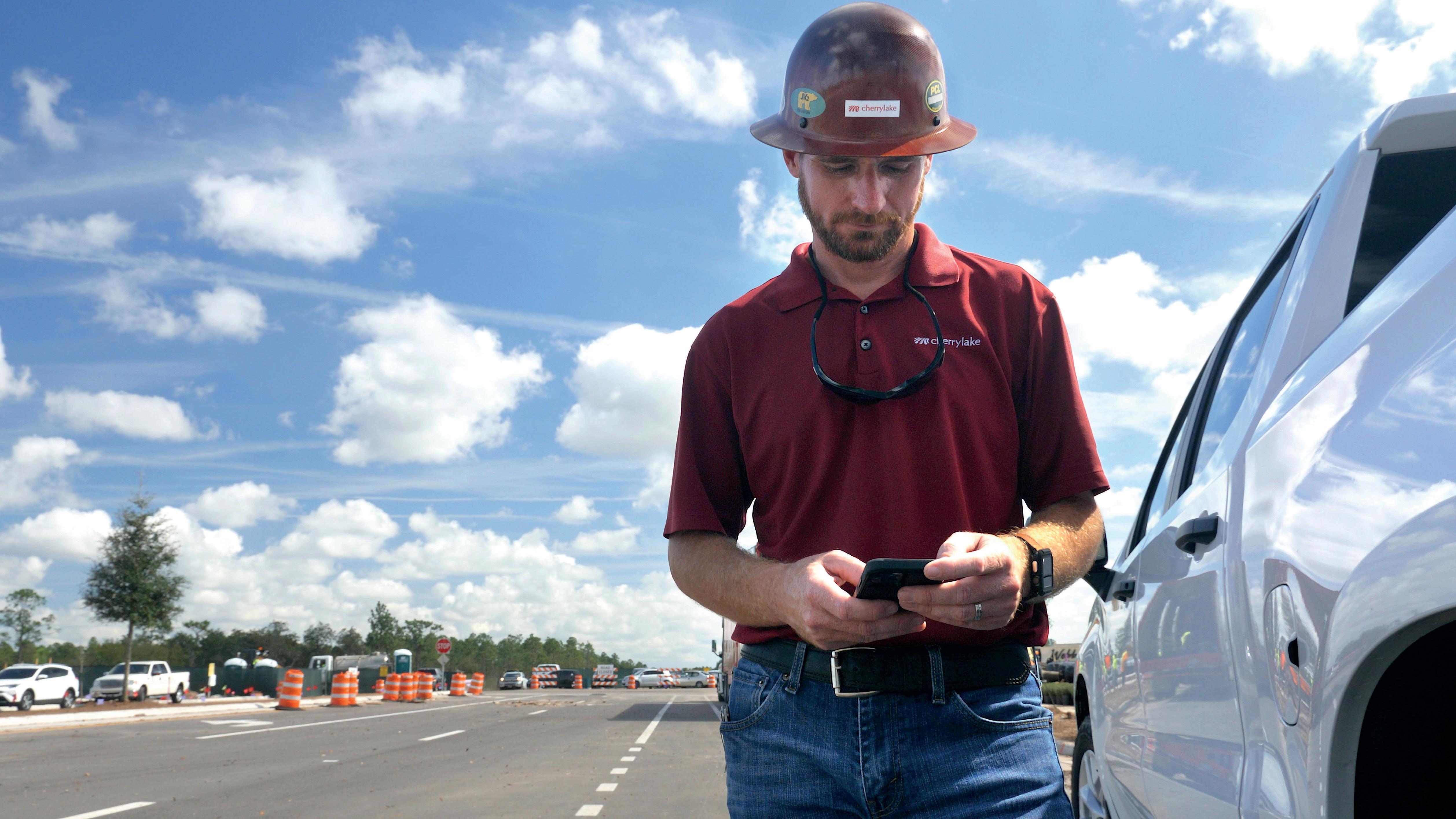 Rachael Plant highlights the benefits of clear communication and data transparency
Rachael Plant highlights the benefits of clear communication and data transparency
be optimized through proactive Preventive Maintenance (PM), clear communication, and fleet data visibility.

In recent years, fleets have been switching from reactively addressing asset problems, to proactively preventing them. This is largely due
to the rise in available fleet solutions, such as Fleet Management Software (FMS). These technologies allow fleets to comprehensively monitor any aspect of the operation, including service histories, asset use, fleet utilization, and Total Cost of Ownership (TCO). Fleet solutions take all collected data and automatically render it actionable through customizable
reporting to meet your specific goals — meaning clearer insights and less work to get them. Having comprehensive service histories for your fleet assets allows you to determine high-fail items and recurring issues so you can tailor PM schedules to the needs of the asset or asset type. Such service-related data as parts used can help you identify if lack of parts durability is the cause of recurring issues, or if you should look at driver behavior or the OEM as the source.
FMS uses service and other fleet data to inform fleets of service spend and downtime. Fleets can further categorize service in FMS to determine causes of failure with reason for repair, repair priority class, and system/ assembly/component codes. This data provides deeper insights into why the service was needed, whether the service was scheduled, unscheduled, or emergency-based, and what part of the asset was serviced. Automated reports around these key metrics allow fleets to optimize PM programs and increase uptime for efficient mobilization.
Clear communication around project goals and blockers is a huge component in successfully completing a contract on time and within budget. Streamlining communication around asset service tasks is equally important to avoid fleet-related delays. Vehicles and equipment deployed
to worksites should be safe, reliable, and in optimal operating condition. In addition to implementing proper PM schedules, fleets can improve uptime by automating service workflows and improving communication regarding service needs.
Using digital inspections in FMS, employees can quickly surface asset issues, and failed inspection items automatically notify the manager in real time to kick off the service workflow. Inspections in FMS are customizable, so managers can tailor forms to specific asset types or even individual assets for enhanced monitoring. Employees can attach documents and pictures, as well as leave comments, in inspections so managers and technicians know exactly the part needed for service.
With FMS, in-house technicians can clock on and off jobs within specific work orders so fleets can compare active time on the job against service duration (i.e. the amount of time the asset spent in the shop from drop-off to pick-up) to determine workflow inefficiencies such as understaffing or unnaturally high workload volume. This data allows fleets to pinpoint shortcomings in process and analyze a solution based on detailed information for improved uptime and mobilization.
Improving data visibility around fleet assets helps companies easily determine which assets are available, in the shop, sitting in the lot waiting to work, or in use on other contracts — including to whom the asset in use is assigned. In addition to providing asset status and assignment information, FMS can integrate with other fleet and business technologies to improve data
consolidation, aggregation, and visibility. This allows managers to quickly view what assets are available for contract mobilization and what will need to be procured. Business integrations within FMS also provide the added benefit of finance and HR-related fleet data transparency for improved mobilization cost estimates.
While contract mobilization hinges on multiple departments across the business, the reliability of fleet assets can impact the entire job. Improving uptime through proactive maintenance, clear communication, and data visibility allows fleets to schedule maintenance downtime appropriately, minimize unscheduled downtime, and hit mobilization goals. ■
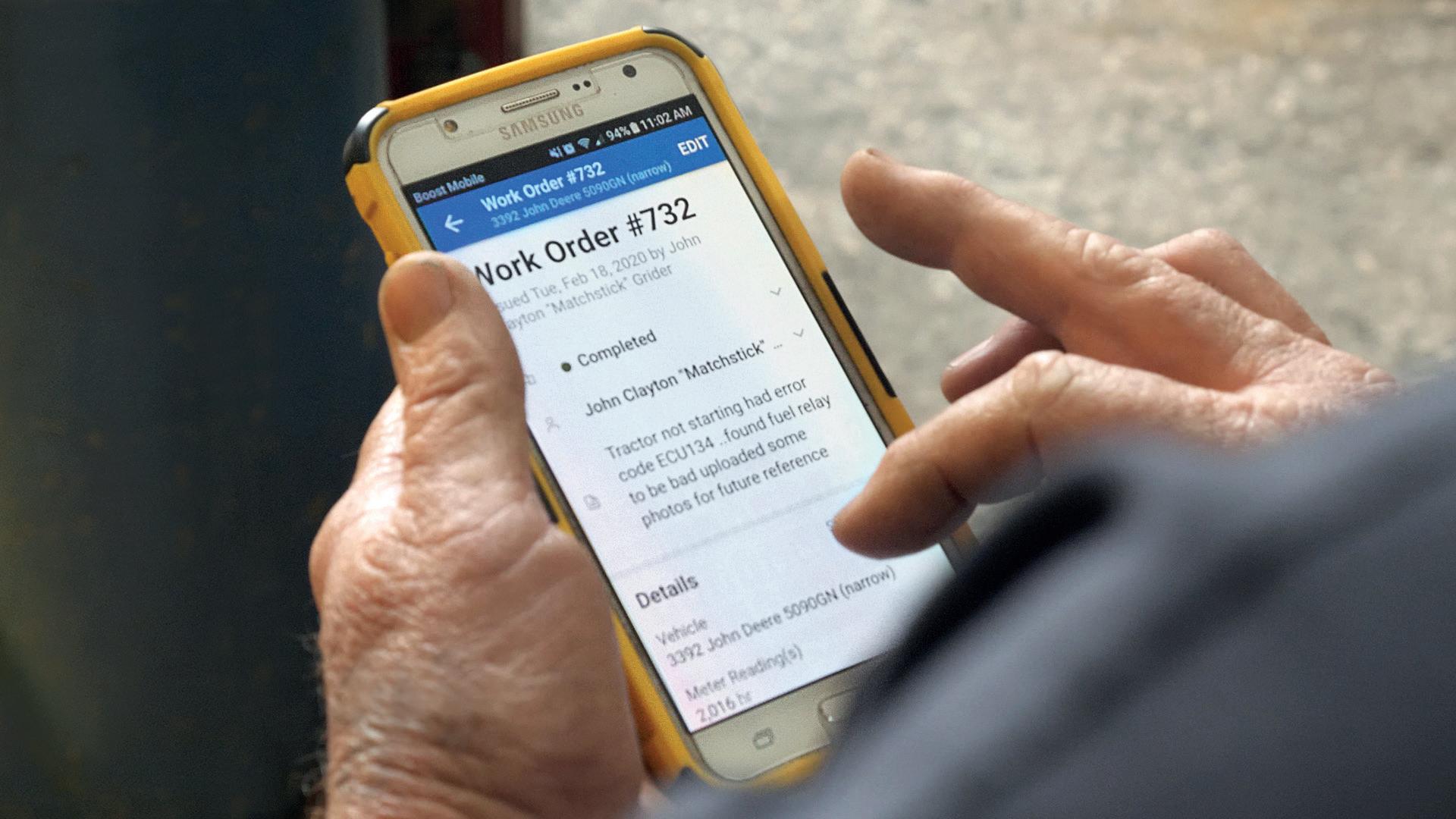
For a list of the sources used in this article, please contact the editor.
Rachael Plant is a content marketing specialist for Fleetio, a fleet management software company that helps organizations track, analyze and improve their fleet operations. With a mobile-first mindset and focus on automating the fleet operations process through seamless integrations with business solutions like telematics devices, maintenance shops and fuel cards, Fleetio’s software powers public and private fleets in more than 80 countries.
Rachael Plant www.fleetio.com By Jim Stephen
By Jim Stephen
As construction jobs grow increasingly complex, companies strive to find new ways to increase productivity without creating unsafe working conditions or going woefully over budget. Digital technology presents an opportunity to change the way construction companies work and grants the power to adapt to the industry’s changing landscape.

In today’s tech-savvy world, there are hundreds, if not thousands, of digital technology tools available to support businesses with productivity, communication, and more. General software can help teams refine various stages of their workflow and client interactions, but can only take things so far.
To leverage the power of digital technology, firms should use tools designed for the construction industry, like BIM Collaborate Pro. Choosing products that integrate with existing tools and focused on construction-oriented tasks makes the transition easier and leads to better long-term gains.
For example, consider a Customer Relationship Management (CRM) system with the ability to use cloud-based storage and track various metrics, like employee time. It could improve project management and offer some boosts in productivity. However, a general CRM leaves out a large part of construction needs, like accessing and editing plans and models or calculating supply needs and costs.
Conversely, software created specifically for construction teams often features these key elements. It’s not easy to optimize productivity if you can’t perform all the necessary tasks through one platform.
Knowing that tools exist is one thing, but understanding how they can help a construction business grow is something else. These tools represent an investment in the business, and that means understanding the short and long-term benefits.
According to a 2021 study, around 60 percent of contractors report delays on projects. Those delays often translate to going over
only half of all projects finish on time and on budget.
Digital technology could be the solution to these costly delays. The right software can help teams create a smoother workflow and house all relevant information in one place. A cloud-based platform can make it accessible from anywhere, meaning on-site workers can see the same thing as those at the head office.
Additionally, platforms can track updates, changes, and daily progress to make appropriate adjustments. It’s possible

resources to adapt to changes faster and more efficiently.
Imagine a world where teams can craft a design, perfectly scaled to match a specific site. The team can then share the model with their clients and make real-time corrections. What could that possibility mean for the company and the client?
Digital technology can help teams limit the back and forth by providing accurate displays with real-time editing capabilities. It
reduces the chance of miscommunications and misinterpretations as all parties can simultaneously view the same model from almost anywhere.
These tools can bridge gaps between time zones and worksites to create more efficient, open communication and reduce one of the most common issues with any construction project. It’s possible to create transparency between teams, crews, and clients.
As noted, finishing a project over budget remains a significant problem. Embracing digital technology could be the best way to reduce costly errors and wasted resources.
Choosing software and hardware built for the construction industry means accessing powerful analytics to solve problems before the work even begins. For example, creating the project in

...creating the project in the virtual system allows teams to work through potential issues, get more accurate measurements, and deliver more accurate numbers to clients
“
the virtual system allows teams to work through potential issues, get more accurate measurements, and deliver more accurate numbers to clients.
When teams can construct a virtual image of the project in various modes, it’s easier to pinpoint potential problems. Additionally, using Artificial Intelligence (AI), it’s possible to get more accurate measurements and calculations for the project. Leveraging AI for calculations and predictions can reduce the impact of human error and reduce waste on the project.
Another area with room for improvement is crew member management. Digital technology improves workflow and streamlines scheduling to reduce employee downtime and overages. Instead of having crew members standing around on the clock with nothing to do, it might be possible to shift them to other sites to maximize efficiency.
Incorporating time-tracking apps within the software package also makes it easier to record progress, handle any discrepancies, and manage multiple crews. It can even include GPS location abilities to ensure teams are on track and at the proper locations.
When management, payroll, human resources, supervisors, and crew members can all access the same information, it’s easier to monitor individual employee performance. Again, it creates more transparency and open communication with fewer discrepancies and less room for error.
Embracing digital technology involves more than software with AI, analytics, and tracking abilities. It represents a way to improve worksite safety and reduce strain on employees.

Improve training and compliance Technology allows employees to use alternative training methods, like VR and 3D models to simulate real-life scenarios. It’s more effective than reading information and warnings out of a manual.
Speaking of manuals, instead of maintaining massive paper binders and manuals on sites, digitize records. It’s simpler for tracking and allows teams to complete reports through mobile devices, including safety measures.
It’s not easy for team leads to monitor an entire site, but a drone can help. Flying drones over sites allows supervisors to see what’s happening, keep tabs on site conditions, and spot any safety issues.
Wearable devices represent another way to leverage technology to improve safety on worksites. Smartwatches and smart clothing can track various metrics and alert management to dangerous situations, like dehydration or toxins in the air. Additionally, with GPS features, it’s possible to locate injured crew members faster.


Digital technology represents the present and future of the construction industry. It’s the best way to increase productivity, reduce costs, limit errors, and keep projects on track. Investing in a construction-focused, cloudbased platform could be the key to future success and continued growth. ■
Jim Stephen is an Account Executive for Construction Solutions at Microsol Resources based in New York. Microsol Resources is a recognized leader with the best software tools for architectural design, engineering, and the construction industry.

Data technology and sustainability are driving the future of construction. By
 Wyatt Jenkins
Wyatt Jenkins
For construction, the pressure to meet net zero goals is immense given the extent of the industry’s climate footprint. The most recent UN IPCC report reinforced the dire state of global environmental goals needed to alleviate the worst impacts of
climate change. Taking action, the Securities and Exchange Commission (SEC) proposed a sweeping climate disclosure rule that, if adopted, would mandate detailed reporting of public companies’ climate-related risks, emissions, and net-zero transition plans.
Sustainability offers twofold benefits: Planetary health and human health. Public green spaces, for instance, sequester carbon, enhance air quality, reduce heat, gather stormwater, and remove pollutants. Simultaneously, green spaces lessen stress and enhance human cognitive performance for the people who live, work, and play within them. Optimizing the built environment will bolster the mental, emotional and physical health of the users, as described by ULI’s report ‘Greening Buildings for Healthier People,’ which, in turn, is proven to result in higher returns for stakeholders.
The construction industry’s legacy grows muddled by its colossal environmental impact: The built world, one of the largest global industries, accounts for nearly

40 percent of annual global carbon emissions. The manufacturing of building materials, particularly concrete and steel, and the construction installation process account for approximately 11 percent of emissions, and experts suggest this is a conservative estimate.
In addition to its carbon output, construction sees an annual spend of $500 billion in rework – 14 percent of total construction expenses. Rework is predominantly caused by poor communication – which causes low labor productivity and mistakes on job sites. Construction rework ultimately results in wasted materials while also requiring owners to purchase more materials – which, in turn, necessitates more spending and more carbon emissions.
General industry estimates claim that between ten and 30 percent of all building project costs can be attributed to wasted activities, such as schedule overruns from poor coordination and low labor productivity. The volume of solid construction waste generated worldwide every year is around 1.3 billion tons, according to Transparency Market Research. By 2025, this number is expected to nearly double to 2.2 billion tons.

With less than one percent of building projects currently evaluated to quantify the scale and source of carbon emissions generated, there’s a hefty learning curve in store for the industry. What’s the path forward?
Data derived from modern technology will empower the construction industry to continue rapidly incorporating environmental standards into its ethos. Strong digital tools update communication channels from fax, phone, and paper that result in poor communication with huge margin for error that provide better insights and significantly reduce construction rework and waste. The efficiencies that construction technology platforms drive into projects ultimately connote efficiencies that drive measurable sustainable action. For instance, notable time savings across project lifespans, rework reduction by addressing miscommunication and errors, connecting workforces for optimal project communication, and fuel usage reduction.
In addition, tracking and reporting on a company’s environmental impact will soon be an industry requirement. This information, when tracked and analyzed, provides insights that ultimately create data-driven, informed decisions. While a complex feat, integrating embodied-carbon tracking –and, taking it a step further by reporting
that data on a connected platform – will radically help owners and contractors understand the environmental impact of their supply chain. The digitization of the industry is an imperative ESG tactic that will soon be as fundamental for owners as tracking and reporting their safety, financials, and work productivity.
Beyond technology, green skills – those that benefit the sustainability efforts of an organization – provide an additional opportunity for transforming construction. With climate change concerns filtering into the job market – green skills listed on LinkedIn profiles increased by 38.5 percent between 2015 and 2021 – construction must emphasize the importance of green skills amongst its workforce. In turn, the industry will attract and retain talent – particularly amongst younger generations who are especially concerned about climate change.
Construction technology and embodied carbon tracking will revolutionize how the industry understands its environmental impact through data
“ “
Construction, however, has a green skill drain. Although the industry inherently utilizes green skills, construction workers are transitioning out of the industry at a faster rate than they are coming in. For every hundred construction workers transitioning into nongreen jobs, as few as 47 workers transition into green and greening jobs. Simply put, the dilemma is that construction workers with green skills are leaving for non-green roles.
This talent gap comes at a moment that holds tremendous potential for widespread adoption: From retrofitting existing properties towards carbon neutrality, to carbon accounting and calculating, and identifying opportunities to source local construction materials and save on importing from overseas.
Construction technology and embodied carbon tracking will revolutionize how the industry understands its environmental impact through data. Climate technology is becoming a central pillar to improving and decarbonizing the construction supply chain.

Technology and big data have proven to be powerful tools. Embodied carbon data in the hands of sustainability professionals will be nothing short of transformative.
Let’s rebuild construction with sustainability in its foundation for the health of everyone involved. ■
Wyatt Jenkins is SVP Product at Procore, the global leader in the digitization of CRE. It provides heightened visibility throughout the project life cycle to key project stakeholders - owners, contractors, investors - and tracking and reporting on safety, financials, and productivity. It is the leading construction technology platform, with over one million projects and $1 trillion in construction volume, providing hyper communication across the CRE build cycle.
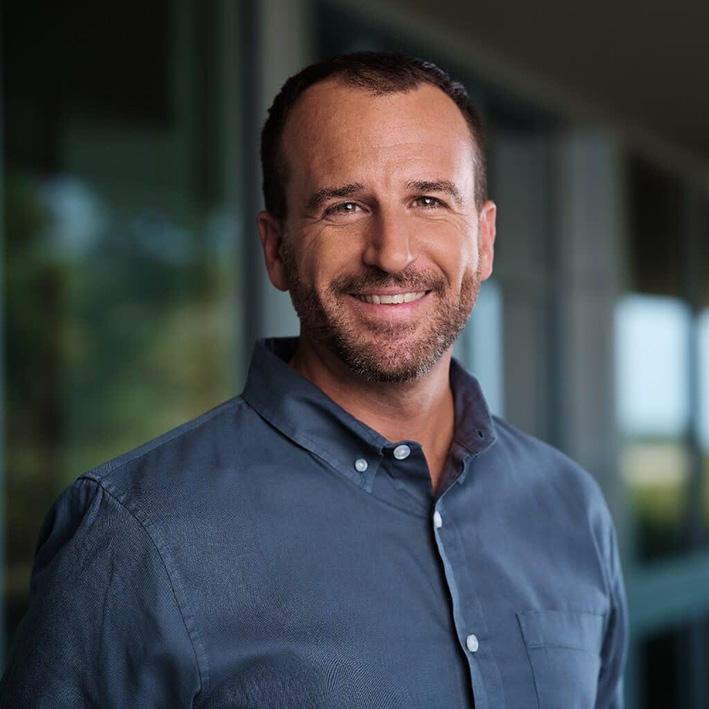 Wyatt Jenkins www.procore.com
Wyatt Jenkins www.procore.com
Jeff

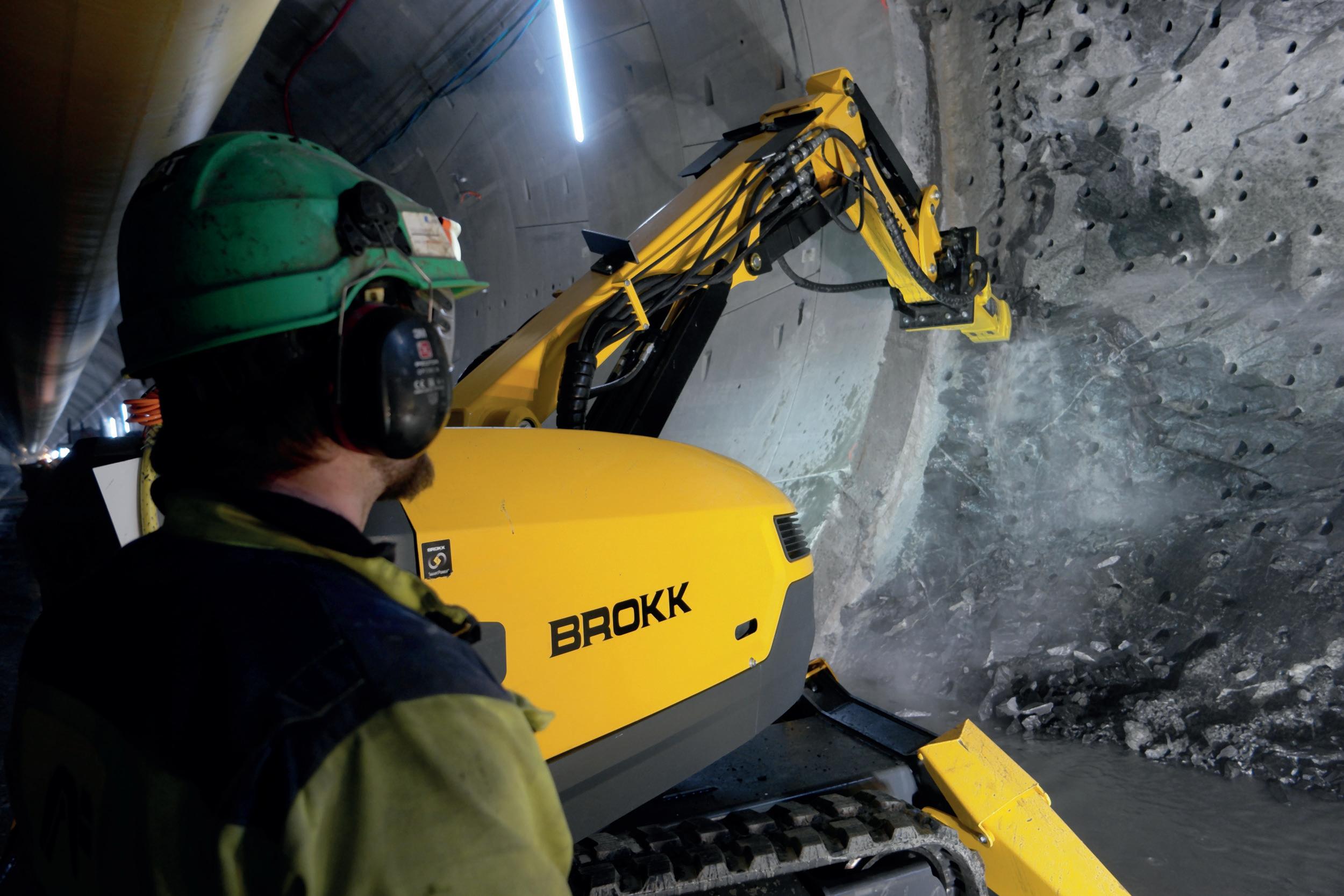
The construction and demolition industries continue to see steady change. Contractors, laborers and project managers are pushing for safer and more productive solutions to transform modern jobsites while facing an evergrowing backlog of projects fueled by the $1.2 trillion Infrastructure Investment and Jobs Act. At the same time, ‘The Great Resignation’ and Baby Boomer mass retirements contribute to labor shortages across the board.
With all these factors at play, relying on manual labor is simply unsustainable - in terms of worker recruitment and retention, safety, productivity and overall costeffectiveness. As a result, successful contractors think outside-the-box and supplement experienced crew members with technologically advanced equipment like robotic demolition machines to increase efficiency and reduce the physical strain on laborers. Additional mechanization options
◀ Contractors who invest in mechanization reduce the amount of dangerous and hard manual labor workers must perform, which is a powerful benefit to young and experienced workers alike. A young employee may consequently see construction as a long-term profession while an experienced worker may see it as more realistic to remain in the industry for the duration of their career
help contractors take advantage of current opportunities while accommodating industry trends.
Handheld pneumatic breakers and other highly physical methods have been commonplace on jobsites for decades. However, increased jobsite mechanization has allowed contractors to revolutionize productivity.


A demolition robot paired with a hydraulic breaker, for example, improves upon previous productivity goals with an impressive hitting power, on par with excavators three times their size, and offer industryleading power to weight ratios. These compact machines access some of the most confined and restrictive jobsites - including those with dust,
centimeters) wide and weighing 1,235 pounds (560 kilograms), the most compact units are small enough to fit through standard doorways and light enough to be transported on passenger elevators, making them ideal for confined spaces and interior demolition projects. Larger models are available with higher power ratios for more challenging applications.
By employing these heavy-hitting machines, contractors can greatly increase efficiency in applications previously limited to large crews with handheld equipment. For example, one contractor was able to cut their demolition crew by a third during nearly one-million-square-foot (92,903-square-meter), multi-level tear out. The two 2,183-pound (990-kilogram) demolition robots were
▶ Successful contractors work to think outside the box and supplement experienced crew members with technologically advanced equipment like robotic demolition machines to increase efficiency and reduce the physical strain on laborers
▶ Remotecontrolled demolition equipment addresses some of the most pressing safety concerns these industries face with an operating distance of up to 984 feet (300 meters)
each robot only requiring a single operator, the contractor was able to better utilize remaining employees across simultaneous jobsites while increasing productivity and lowering overall labor costs.
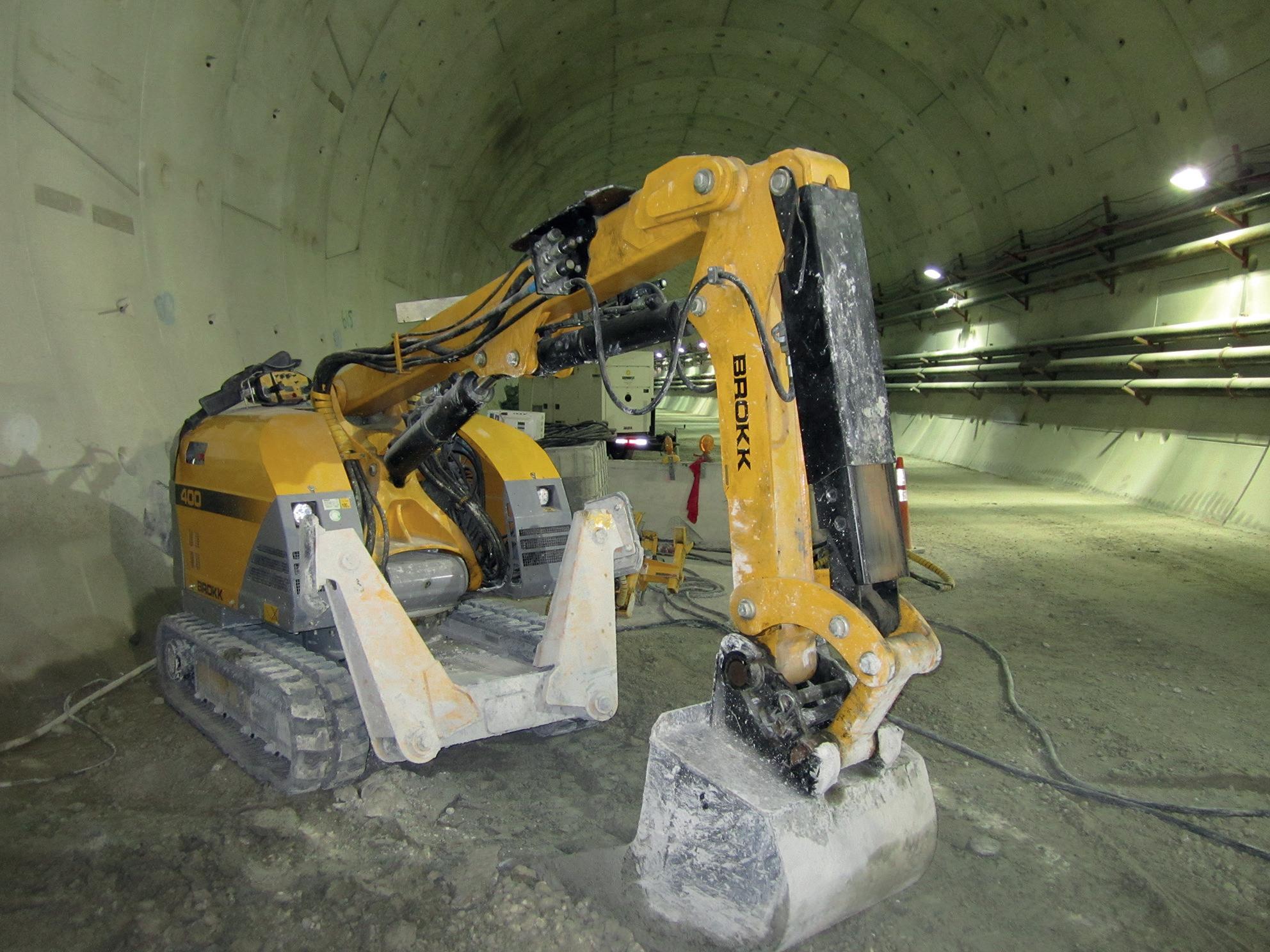

For many in construction and demolition, increased safety is one of the biggest benefits of mechanization. Remote-controlled demolition equipment addresses some of the most pressing safety concerns these industries face.
With an operating distance of up to 984 feet (300 meters), remotecontrolled units physically distance employees from harmful silica dust, as well as the strong vibrations of handheld equipment such as breakers, rivet busters and chipping guns. Longterm use of these common demolition tools is linked to a number of chronic injuries, including carpel tunnel syndrome, nerve damage and handarm vibration syndrome.
Additionally, remote-controlled demolition machines help prevent one of the most common causes of serious work-related injury and death in construction - falls. A remote-controlled unit allows operators to remain a safe distance from ledges and other fall hazards. This provides peace of mind for workers and project managers, but also increases productivity by minimizing the need for erecting fall protections.
For contractors using remotecontrolled machines, these safety benefits can quickly add up to significant savings on workman’s comp and insurance premiums. Remote operation paired with smaller crew size can significantly lower worker liability costs by limiting personnel in confined spaces or hazardous operations. One concrete cutting contractor who made the switch to demolition robots has seen a decrease in annual workers compensation claims by about 50 percent. The company has also seen a
▶ Technological advances, such as robotic demolition, can help change the way contractors work and make it possible to thrive in today’s environment while preparing for the future

Cutting edge technology also attracts younger workers. For one concrete cutting company, including advanced robotic technology in their fleet helped reduce the median age of their 300strong workforce to just 25 years old and cut turnover ten per cent. The machines also allowed the contractor to do more work with fewer people, increasing productivity 17 percent over three years.
- $50,000 savings, in injury costs per year. Another concrete cutting operation reduced its experience modification rate (EMR) by adding demolition robots to their equipment fleet. Insurance companies calculate EMR based on a company’s safety record. Higher EMRs result in higher insurance premiums.
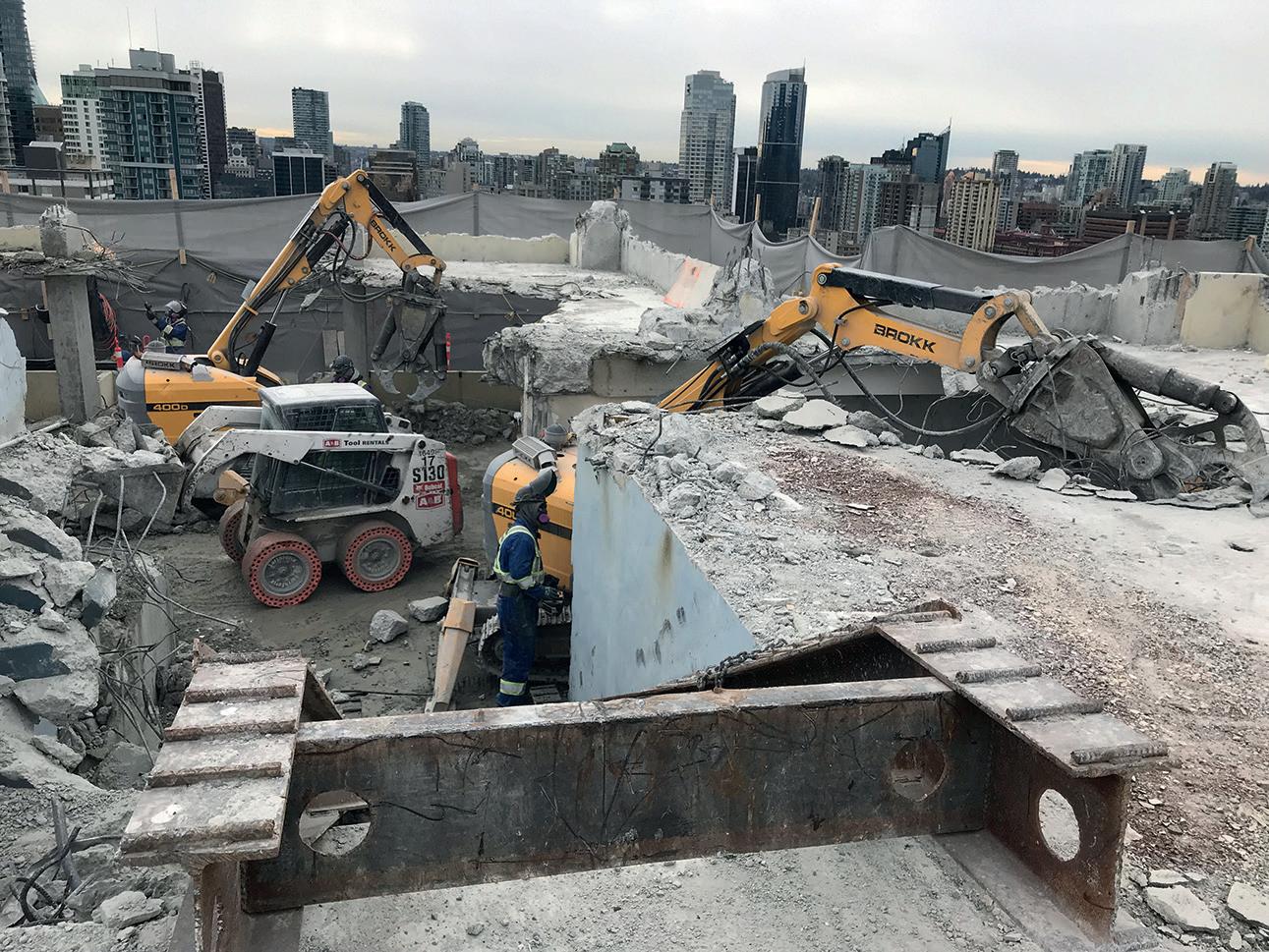
Implementing cutting-edge technology also offers some powerful recruitment and retention tools. When it comes to safety, for example, the workforce is well-aware that quality of life and length of career can be significantly affected by injuries and silica dust exposure. At this time, the median age of a construction worker is 42.3 years. Contractors who invest in mechanization reduce the amount of dangerous and hard manual labor workers must perform, which is a powerful benefit to young and experienced workers alike. A young employee may consequently see construction as a long-term profession while an experienced worker may see it as more realistic to remain in the industry for the duration of their career.
It’s both an exciting and challenging time for construction and demolition. Opportunities abound for contractors, especially those who find creative ways to recruit, retain and best use the skills of their workers. Technological advances, such as robotic demolition, can help change the way contractors work and make it possible to thrive in today’s environment while preparing for the future. Mechanization allows companies to quickly adapt to changes in labor, process or regulation, keeping them ahead of the curve - and the competition. ■
Jeff Keeling www.brokk.comJeff Keeling is the vice president of sales & marketing for Brokk Inc. Brokk has been the world’s leading manufacturer of remotecontrolled demolition machines and attachments for over 45 years. Through continuous innovation in engineering and design, Brokk is able to offer unique solutions to multiple industries worldwide, including construction, demolition, mining and tunneling, cement and metal processing, nuclear and other specialty applications. .
The quality will remain long after the price is forgotten –this is a well-known quote from Henry Royce, co-founder of luxury car brand RollsRoyce. It’s usually taken to mean that quality is worth paying for. But there’s another meaning: that buying on price alone often ends with the disappointment of poor performance or potential hazards. It is this second meaning that drives the Power Tool Institute (PTI) to strongly caution tool buyers to only buy batteries manufactured by their tool’s original equipment manufacturer (OEM).
When it comes to buying power tool batteries, going cheap can have potentially disastrous consequences for power tool users. The costs related to a single fire caused by a counterfeit or knockoff battery will quickly reveal the lower initial purchase price to be no bargain at all. Spending a little more up front for a product that is designed specifically for the tool and will perform well for a longer period of time is a smart investment.
What’s inside is what counts
What makes OEM batteries the right investment over counterfeits and knock-offs? Each OEM has its own proprietary control circuity for the total system, which encompasses the tool, battery, and charger, so the three components communicate properly.
There are numerous design considerations that manufacturers address in the construction of their batteries, including type and quality of cells, durability of electrical connections, electronic controls (in the battery, charger, and tool), protective housing, compliance with standards, and independent certification.
This circuitry design is not available to third-party component suppliers, and the differences between the inner workings of these power tool systems make it virtually impossible for any other battery to match the OEM, no matter what the package claims.
Because of all these safety and compliance considerations, batteries from different non-OEMs are not cross-compatible (unless specified by the power tool manufacturer).
Why using anything other than OEM batteries can be a dangerous proposition for construction professionals who use power tools. By Susan Orenga
The quality will remain long after the price is forgotten “ “ “ “
When buying aftermarket batteries for power tools, it is important to consult with the power tool owner’s manual and purchase only the batteries recommended by the manufacturer.

Willingness to do the right thing and shop for OEM batteries might not be enough. Manufacturers of counterfeit and knock-off batteries know exactly what they are doing when they design their products to mirror the color and packaging of the specific OEM manufacturers from whom they intend to take business. Online sales in particular can confuse well-meaning buyers. One can get caught up comparing prices, which is understandable, but what seems like apples to apples can result in a deal that quickly turns rotten.
In the end, before purchasing a non-OEM battery, consumers are advised to consider all factors, not just price. What seems to work well out of the box may deliver dire consequences later. Purchasing a battery from an unknown seller without having any verification of the seller’s
qualifications or experience — or of the battery’s construction, testing or certification — can leave you with an unsatisfying, and potentially dangerous, experience.
Once you have made the safer choice and outfitted work benches and service trucks with OEM batteries, battery safety is still an important and ongoing consideration.
Most battery-operated power tools use lithium-ion batteries due to their many advantages over other battery types. They can derive greater energy from a smaller battery, are made of lower-toxicity materials, and hold their charge longer. The benefits of this newer technology have allowed higher-demand tools and applications to be battery-powered and provide significantly more work-per-charge. This extended capability, combined with the portability of battery tools, has resulted in a dramatic increase in their use.

Any lithium-ion battery, while infrequent, can become unstable, particularly if the battery is damaged, dropped, or cracked. If you encounter a lithium ion battery that is too hot to touch, melting, smoking, or on fire, it may be in ‘thermal runaway’.
Thermal runaway acts like a chain reaction, where the heat continues to build until battery stability is lost, and
a fire can start. The reaction occurs due to an internal short, causing excess heat to be generated. It requires immediate action.
The quickest way to cool down and stop an overheating lithium-ion battery is to immerse the battery in a sturdy container filled with water and keep it there for 24 hours.
Before immersing a battery, there are some things to keep in mind. Don’t physically touch the battery to move it; instead, use something like a long-handled shovel. Wear PPE to protect eyes and skin. If the overheating battery is mounted to a charger, make sure the charger is unplugged. If the battery is connected to a tool or charger, don’t try to disconnect it. It’s better to sacrifice those items than risk being injured. Put them in the water as well.
If you are not able to immediately submerge an overheating battery, pouring large amounts of water on it
to extinguish flames may slow the fire down until a sturdy container of water can be found. When the flames have subsided, transfer the battery to the container as soon as possible.
If water isn’t immediately available, a fire extinguisher may slow the fire down, but it won’t put it out completely. It must be cooled down to stop the chain reaction. Though the fire may appear to be extinguished, still immerse the battery in water as soon as possible, so additional cells within the battery don’t re-ignite.
If water isn’t available, you can isolate the battery by moving it outdoors at least 15 feet from any combustible material.
It’s important to leave the battery immersed for at least 24 hours. Even if you don’t see flames, the thermal runaway may not be over. While one cell is cooling down, a different cell might be heating up.
The bottom line is that a properly designed tool, battery, and charging system from an OEM, is the safest option, but you must respect any battery’s power and handle it properly.
Reminders like this article can help promote good decision-making around power tools and their safe operation, but the best way to improve safety on job sites is through a robust, continuous training program.
Power tool safety begins with several basic, universal tenets. Workers who learn to apply these can approach any power tool with confidence. Well-trained workers make fewer mistakes, are less apt
to become distracted on the job, and appreciate that safety is a teamfirst concept.
Many firms have their own training courses and schedules, but for any who are looking to start their first training program – or want to enhance what they already have – the Power Tool Institute offers a library of more than a dozen lesson plans, including several videos. These materials are complimentary on the PTI website (https://www. powertoolinstitute. com/pti-pages/edlesson-plans.asp).
Power tools make construction work and other job types go so much faster and easier. Arming workers with consistent, quality information and their professional dedication to staying knowledgeable and well trained can result in successful projects for years to come. ■
Susan Orenga works at the Power Tool Institute. With the vision to unify and educate others about power tools, since its founding in 1968, the Power Tool Institute (PTI) has established itself as the leading organization for building global understanding of power tools and for maintaining high standards of safety in the industry.
Well-trained workers make fewer mistakes, are less apt to become distracted on the job, and appreciate that safety is a teamfirst concept “ “
“ “
The construction industry is highly competitive, with tight margins reliant on streamlined operations. Saving time and money is key to being able to pass cost savings on to the customer while maintaining profitability. And as construction technology and equipment become more complex and expensive, the pressure is on to get the most from these valuable assets and extend their lifecycles to maximize return on investment.
These days, digitalization and automation are increasingly adopted by construction companies to help them successfully revolutionize their backend administration, asset management, workflow and innovation capabilities. Smart construction asset and equipment tracking technology helps construction companies prevent costly damage and theft, control their inventory, and predict maintenance requirements, all of which allows them to manage projects in a more profitable way. So, how does it work in practice?
Today’s construction asset management and asset tracking technology leverages the Internet of Things (IoT) to track materials, workers and equipment. Smart tags are attached to any assets and individuals on your
construction site, and data from these tags is transmitted via a secure network to a bespoke management dashboard in real time. A cloud-based construction asset management platform can be accessed through any smart device, putting a full overview of your operations into the palm of your hand. The system provides unsurpassed visibility into the construction supply chain and site operations, allowing managers to determine when maintenance should be carried out, when they need to repurchase equipment, and which assets can be shared between sites.

Building a new future for the construction industry with smart technology.

Smart, secure, connected technology is the foundation upon which construction companies of the future will be built
“ “
The system also allows teams to set predefined geofence locations to alert them instantly if any expensive assets are removed from a particular location by accident or by criminal activity. Taking control of construction assets in this way helps companies and contractors to recover lost time and expenses - which can then be redeployed in revenuebuilding activities.
Truth be told, the applications are endless, but some of the most common use cases of smart technology in the construction industry include the following:

l 24/7 asset tracking provides total visibility across various sites so that you can track and monitor all your construction assets and personnel in real time.
l Many construction businesses experience repeated theft, but smart networks can integrate with other security systems to secure remote areas and perimeters at all times.
l A good construction asset management solution allows companies to gain valuable insight into their construction site asset utilization across different sites and projects, providing invaluable insights and allowing them to optimize their operations.
l Enables more informed and effective assessment and management for similar projects in the future.
l Custom reporting enables better planning for material and equipment availability and maintenance.
l Monitoring and demonstrating high levels of worker safety and productivity helps construction companies provide a good working environment to attract and retain the best talent.
l Lone worker monitoring with instant SOS alerts, panic buttons and direct links back to the main operations team.
Working in a more environmentally-friendly and sustainable way is becoming increasingly important in the construction industry, with more regulations being introduced to ensure this, along with client, consumer and financer pressure. By using smart sensors for asset and operational monitoring, construction companies can identify efficiencies to streamline their processes, maximize resources, and prevent unnecessary wastage and repetition, which helps to reduce their carbon footprint.
Every construction project comes with inherent risk. By programming a smart system to send different data depending on the desired project outcomes, companies can plan each project
better and alleviate a large proportion of the risk. This increases the likelihood of projects being delivered to clients on time and on budget, improving the company’s corporate reputation.
In summary, the benefits of smart construction technology include:
l Streamlining your workflows
l Assessing and predicting risks
l Responding to problems immediately
l Improving labor productivity
l Improving health and safety
l Reducing theft and damage
l Saving time and money and increasing return on investment
Transformation is the foundation To gain a competitive advantage, meet customer expectations, and become more sustainable, construction companies of today need to harness new, disruptive technologies
to digitalize their businesses. Smart, secure, connected technology is the foundation upon which construction companies of the future will be built. ■

For a list of the sources used in this article, please contact the editor.
Matthew Margetts is a Director at Smarter Technologies. Smarter Technologies tracks, monitors and recovers assets across the globe in real time, providing asset tracking systems to the open market and fulfilling the world’s most complex asset tracking requirements. Its services cover a vast array of business sectors, products and equipment from container or pallet tracking to militarygrade devices; and can be used across a broad spectrum of industries.
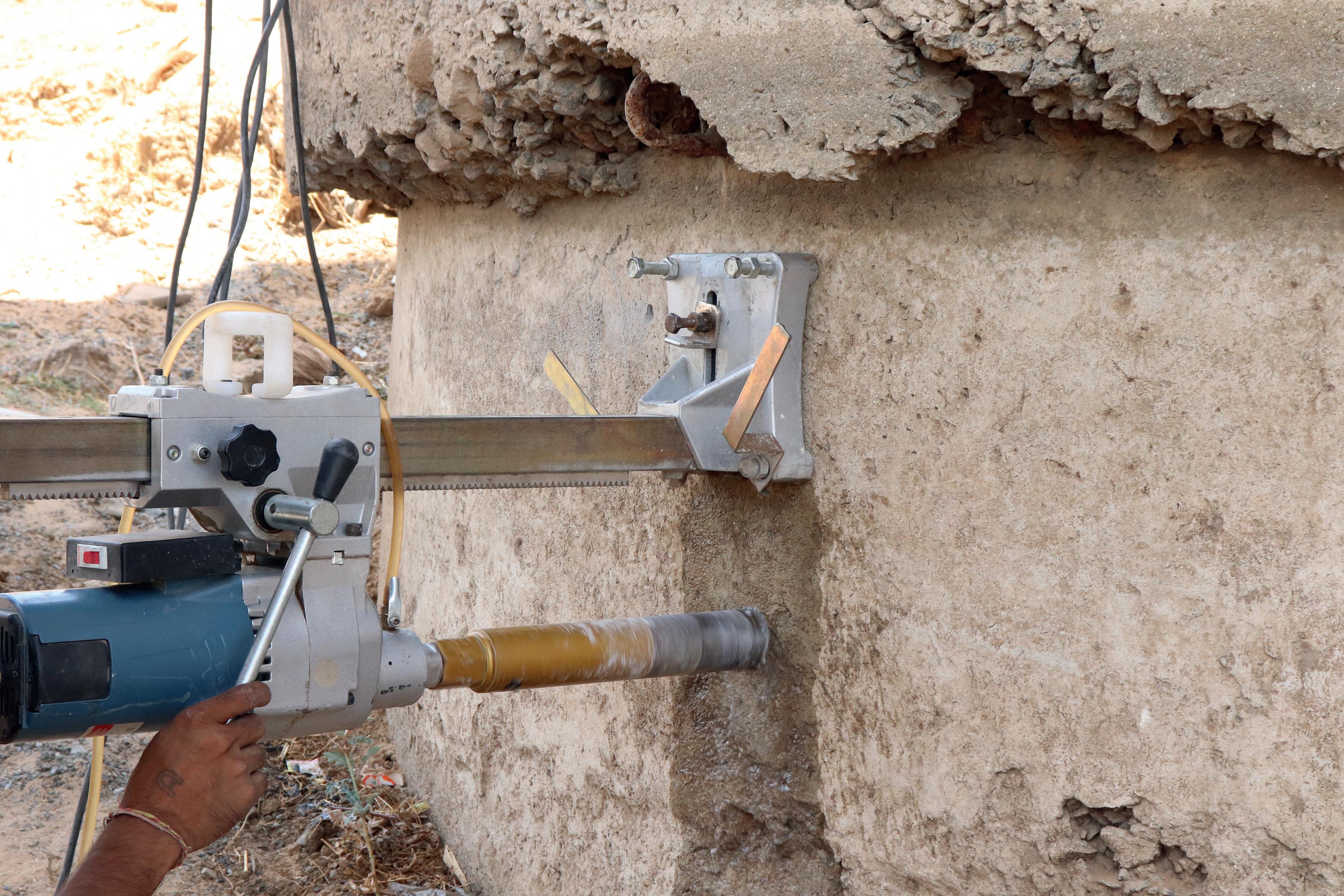 By Ricky L. Morgan
By Ricky L. Morgan
In Hollywood disaster films, it is necessary to compel the audience into believing the earthquake, storm, or flood is truly devastating. To do this, filmmakers show bridges falling, buildings twisting, roads buckling, and more. If the audience has any questions whether the event is indeed severe, such images bring them instantly to a state of complete belief.
In the real world, such things can, and do, happen, though fortunately they are far more rare than in movies such as the blockbuster San Andreas. At least part of the reason is that a sophisticated, but little-discussed technology, is applied during and after construction. This one approach makes a world of difference. So, it is troubling that as the US considers
testing: An essential element of maintaining a healthy infrastructure
how to apply the more than $1.2 trillion in authorized spending on infrastructure, and other countries around the world consider how to further build out their environments, wider adoption of this technology is not prioritized so our cities and communities don’t mirror a Hollywood disaster film during storms and other natural events.
Nondestructive testing (NDT) is the inspection of an object for cracks, corrosion, discontinuities, or structural fatigue without cutting or breaking the object open. In the best-case scenario, there are careful considerations made throughout the design and construction process of every building and structure to ensure structural integrity during a variety of natural conditions as well as the structure’s integrity over the long term. To ensure longevity, regular inspection and evaluation of materials using NDT is vitally important. It can prevent the usage of flawed materials. It can ensure that the welds that join building elements together are sound. And it can be applied throughout the life of the structure to examine if the materials and structure retain their ability to withstand earthquakes, severe storms and similar events.
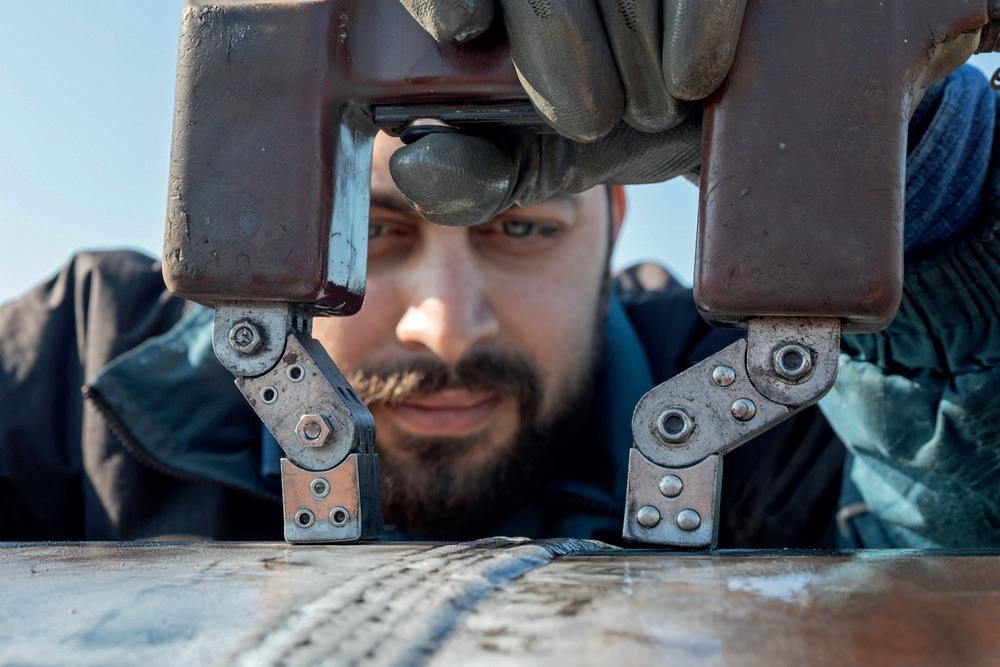


From the day materials arrive at a fabrication facility to the day an asset is demolished or mothballed, NDT should be performed to confirm integrity. Especially with respect to infrastructure, NDT can be utilized from the cradle to the grave of an asset. This includes the entire built environment ranging from bridges, dams, power lines, cellular towers, airports, runways, water facilities, and power plants to refineries, roads, and more. NDT provides an array of analysis techniques that can be used in the construction and maintenance of such facilities to evaluate the materials, components, and assemblies of these buildings and structures without causing damage.
When the 1994 Northridge Earthquake struck the California San Fernando Valley, it was NDT inspectors - including me - who examined the infrastructure. The evaluation of the status of steel structures in potentially damaged buildings was essential to determine repair protocols and procedures
for future construction of replacement facilities when a structure was too damaged to save. NDT inspectors worked day and night to provide this critical information to both asset owners and the engineers racing to determine the status of the affected buildings and structures.
Today, the NDT industry is digital and dynamic, utilizing some of the most advanced assessment technologies available. There are currently more than 11 different recognized methods of NDT and countless subsets and techniques available for almost every industry. While it depends on the project specifications and the inspection and testing plan that spells
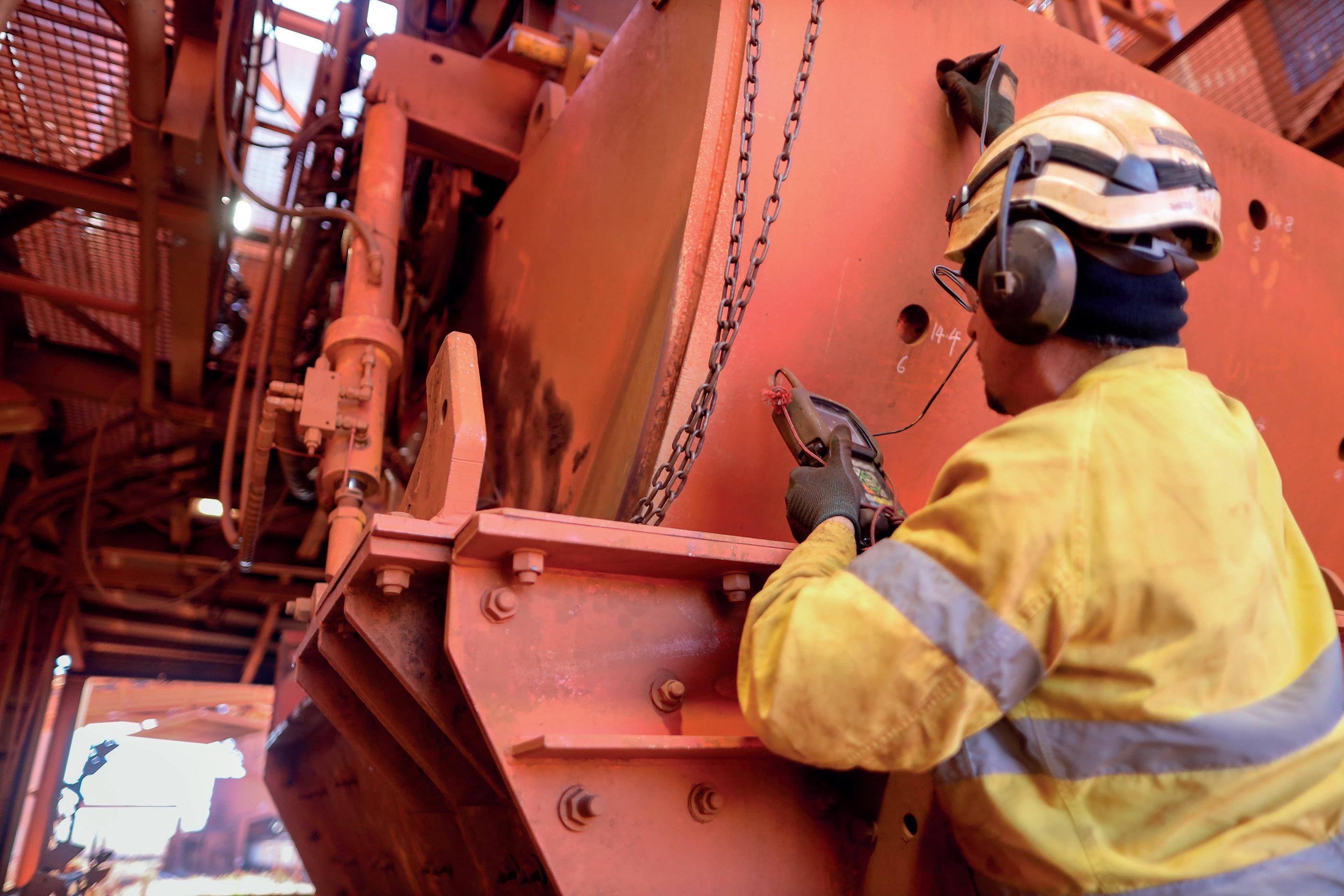
out the areas where inspection is required, the most common NDT methods are Magnetic Particle Testing (MT), Penetrant Testing (PT), Ultrasonic Testing (UT), Radiographic Testing (RT), and Visual Testing (VT). Think of it as advanced science applied to a single compelling prioritypublic safety.
Many enhancements have been made to evolve NDT technologies to where they are today. This does not mean NDT has advanced as far as it can. Further advancements in NDT could provide useful figures for data-driven, risk-based assessments throughout the life cycle of building elements and structures.
Newer innovations are in development or coming into use. These include advancements such as advanced UT methods, like Phased Array Ultrasonic Testing (PAUT), Time of Flight Diffraction (TOFD), and Total Focusing Method (TFM)/ Full Matrix Capture (FMC). Such tools can have a great impact on the inspection of infrastructure. Already, innovations in conventional UT have been shown to provide better imagery, better probability of detection, better characterization of flaw or failure type, and more robust post processing and analysis. Similarly, the use of drones has been shown to significantly improve visual inspection of infrastructure assets with limited access by supplementing technologies with safer access, greater picture quality, and a permanent record using geotagging. In the past, those structures may have only been able to be assessed using binoculars. Similarly, Structural Health Monitoring (SHM) and Condition Monitoring (CM) are not novel technologies but have been significantly enhanced by improvements in sensor technology, as well as better and more useful data acquisition. Today, monitoring can be ongoing 24/7, scheduled, incident activated, or even mounted or embedded into steel and concrete infrastructure during new construction to monitor a structure throughout its lifetime.
As we in the US prepare to spend over a trillion dollars on new infrastructure investments and other nations continue their development, we should make certain NDT technologies are more widely adopted and required so the public can be sure they are safe.
We may not be living in a Hollywood movie, but as our natural environment changes there is no question disasters risk
becoming more frequent and more severe. The regular application of NDT inspections on aging infrastructure is essential to maintain its stability. And NDT must be applied to new builds, from the material production stage all the way through construction.
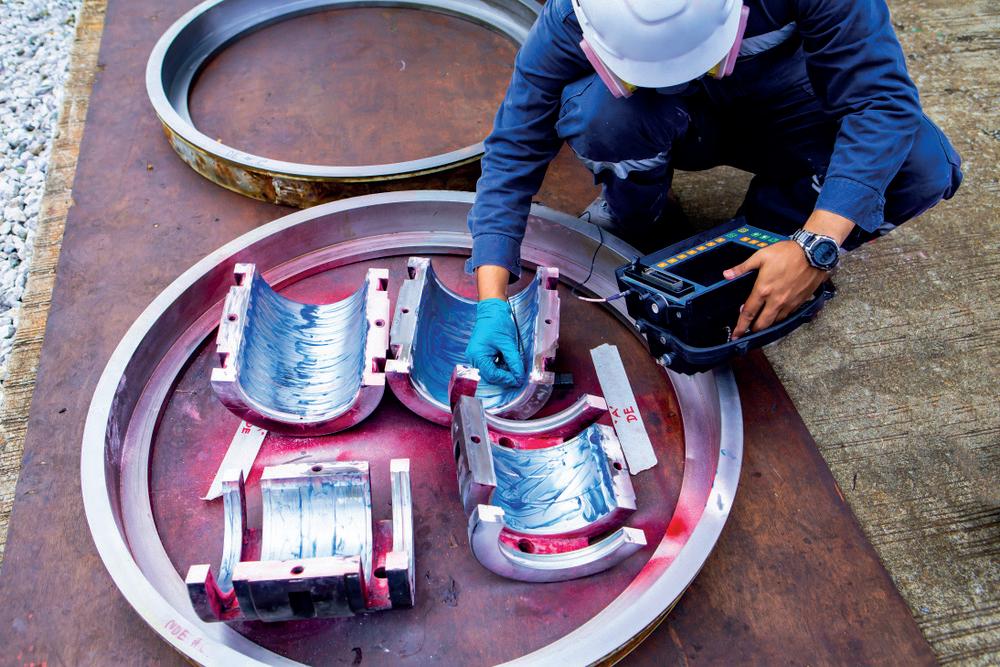

Throughout the decades, NDT technology has consistently evolved to meet the evergrowing need for infrastructure assets to withstand unpredictable and severe weather conditions. We must continue to invest in the innovation of NDT methods and the creative utilization of this valuable and rapidly evolving technology. ■
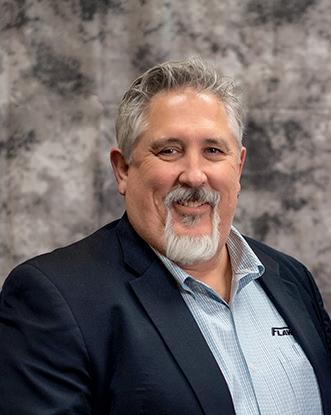 Morgan flawtech.com
Morgan flawtech.com
Ricky Morgan is the President of FlawTech America, a manufacturing company providing the very best in intentionally Flawed Specimens to the NDT/NDE Industry for more than 40 years. FlawTech also supports the American Society for Nondestructive Testing (ASNT), the world’s largest technical society for NDT professionals, by bringing together ASNT members and NDT technicians.
American Society of Nondestructive Testing (ASNT): www.asnt.org



The National Cement Company of Alabama (NCCA) first began producing cement at its current site in Ragland, Alabama in 1908, then operating under the name of the Atlantic & Gulf Portland Cement Company. The company changed its name to National Cement Company in 1920, enjoying various owners up until 1974, when it was purchased by the Vicat Group, a French company with origins stretching back as far as the early 1800s, when Louis Vicat first invested in artificial porous
cement production. Following the acquisition, Vicat Group set upon a program of modernization and plant improvements that have brought NCCA to its present-day status.
Today, the company produces Portland Cement Type I, II and III and masonry cements, which it ships via truck and rail from four terminal distribution locations around Atlanta, Georgia, and one in Greenville, South Carolina. NCCA also operates readymix concrete subsidiaries, in the shape of Kirkpatrick Concrete and Hodgson Concrete in Alabama, and Walker Concrete in Georgia.
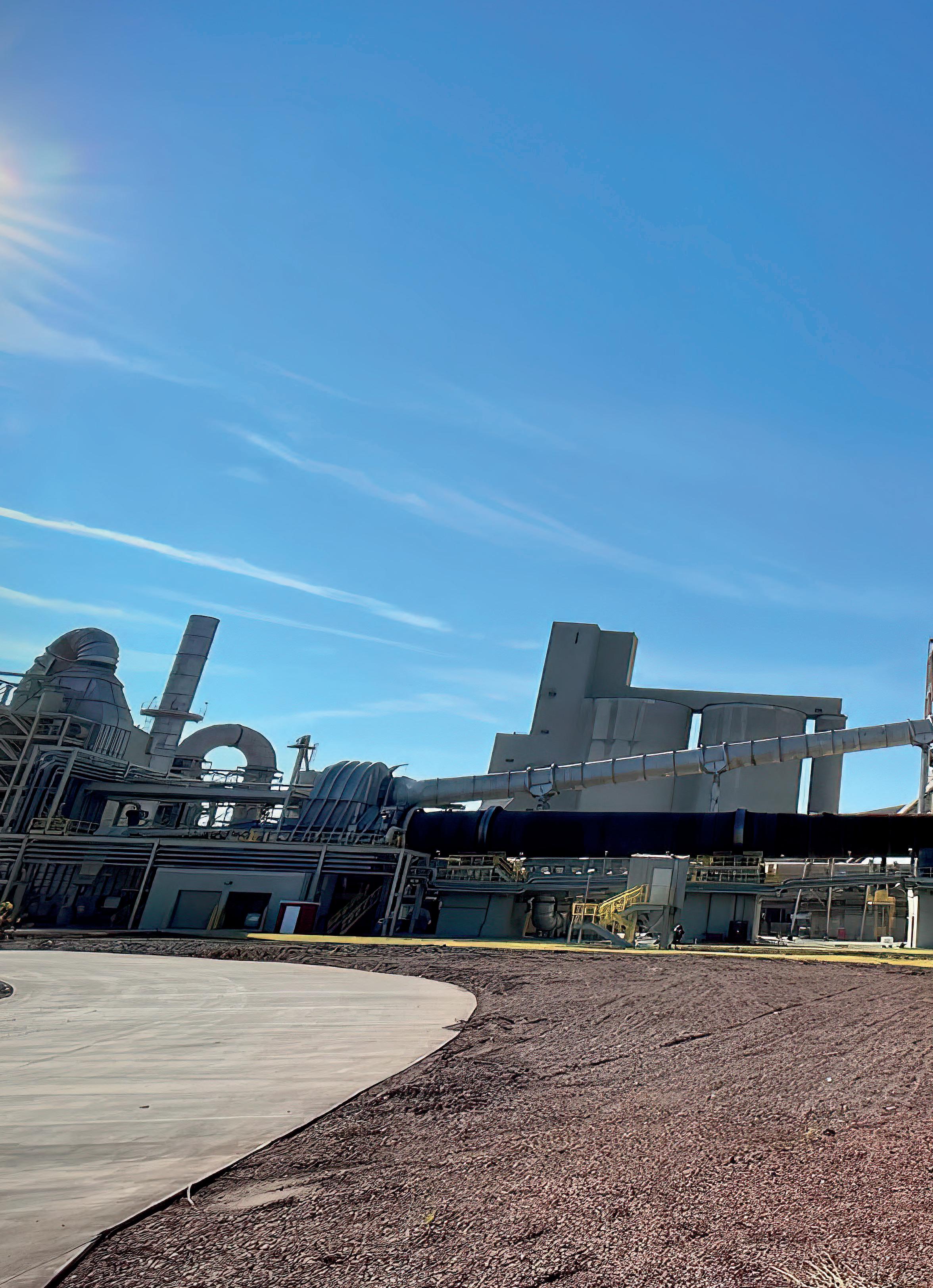
How the National Cement Company of Alabama is steering towards a green future
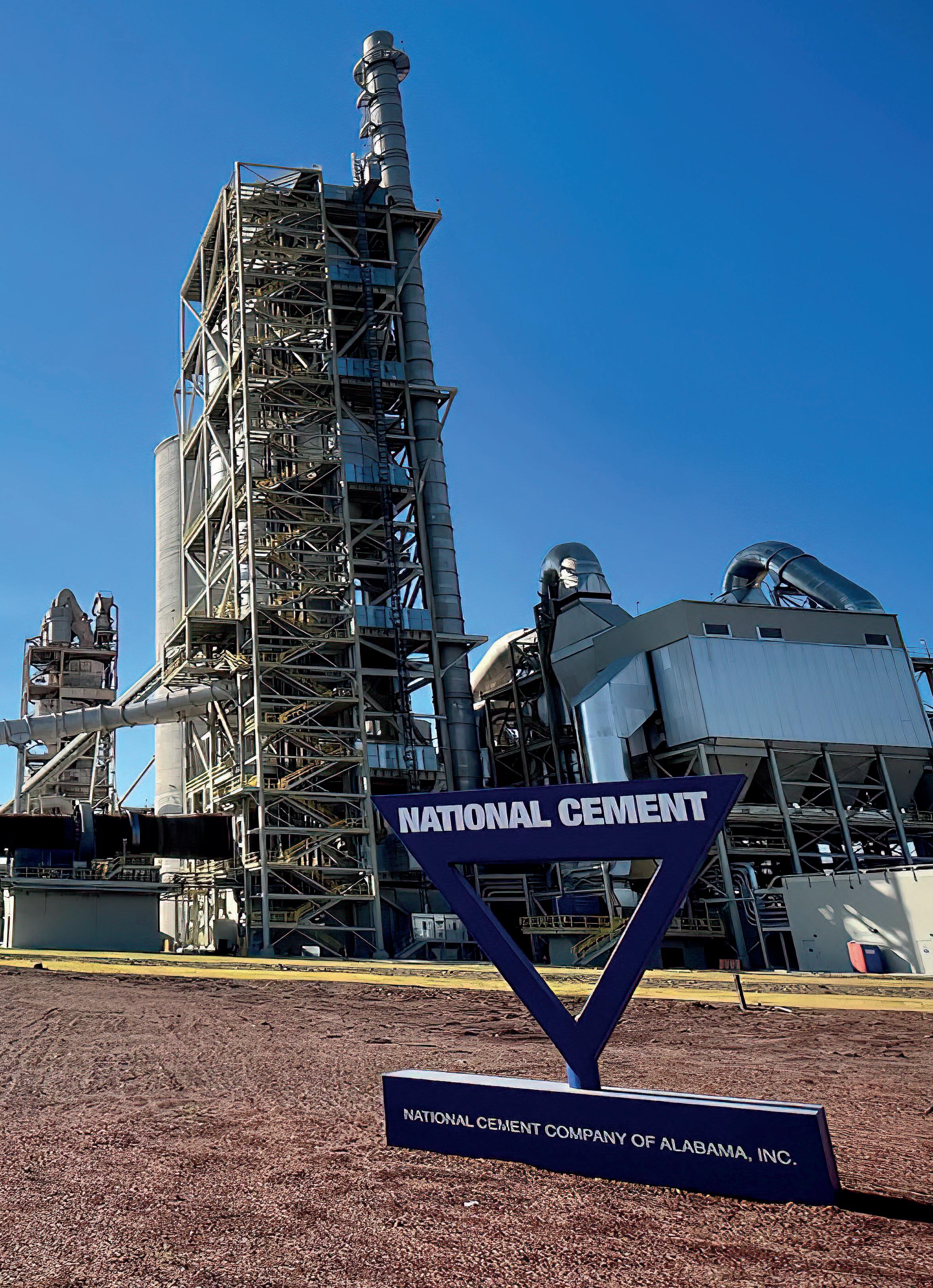
Among the biggest challenges currently facing cement producers like NCCA is a growing emphasis on decarbonization, with pressure mounting both within the industry and beyond, from the consumer to the governmental level. NCCA’s own decarbonization plan sets out the company’s ambition to achieve carbon neutrality by 2050 through the value chain, and the company took a significant step towards this earlier this year, as it commenced a two-year, $300-million project to install new cement production equipment throughout its Ragland plant. As Spencer Weitman, President of the NCCA, explains, the equipment will take advantage of the “very latest carbon reduction practices and modern energy technologies,” chiefly substituting fossil fuels with alternative fuels.
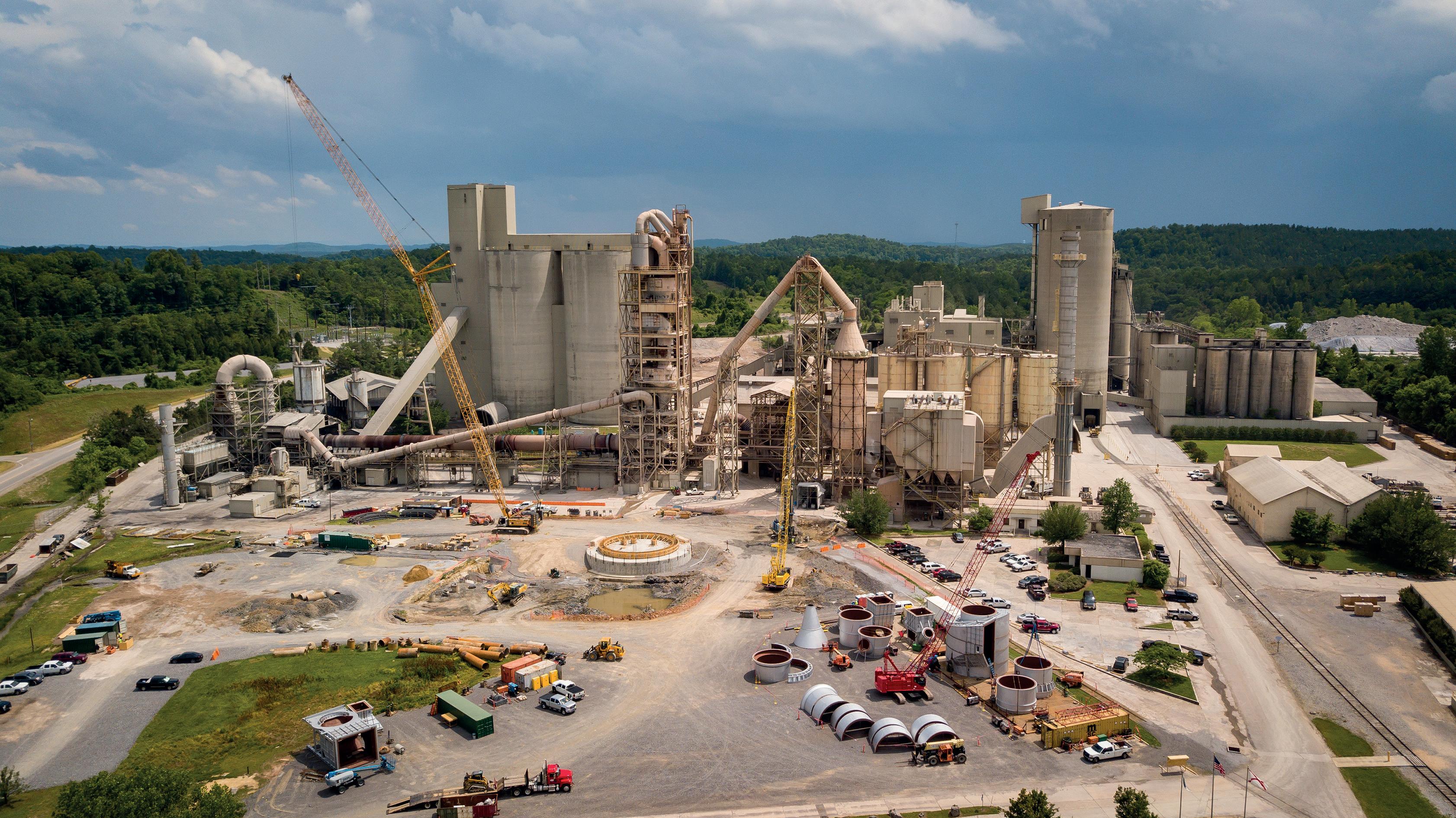
Long term, we will embrace carbon capture and sequestration, capitalizing on technology that is maturing every day
“ “ “ “
“The primary goal of the improvement project is to meet the global climate challenge head-on, and to be ready for the southeast’s impending demand for building materials with a lower carbon footprint,” Spencer comments. The company has already added a new vertical raw mill, a preheater tower with an advanced kiln line and cooler, an automated clay storage system, an alternative fuel storage facility, and a fully automatic integrated laboratory and control center. Meanwhile, the ongoing installation of electrical motors is expected to reduce energy consumption by as much as ten percent.
“We’ve also eliminated coal as a fuel source, replacing it with biomass,” Spencer continues. “This alone has delivered a 30 percent carbon footprint reduction. The next step for us will be the production of Portland Limestone Cement (PLC) or Type IL, an innovative blended cement that contains up to 15 percent limestone.

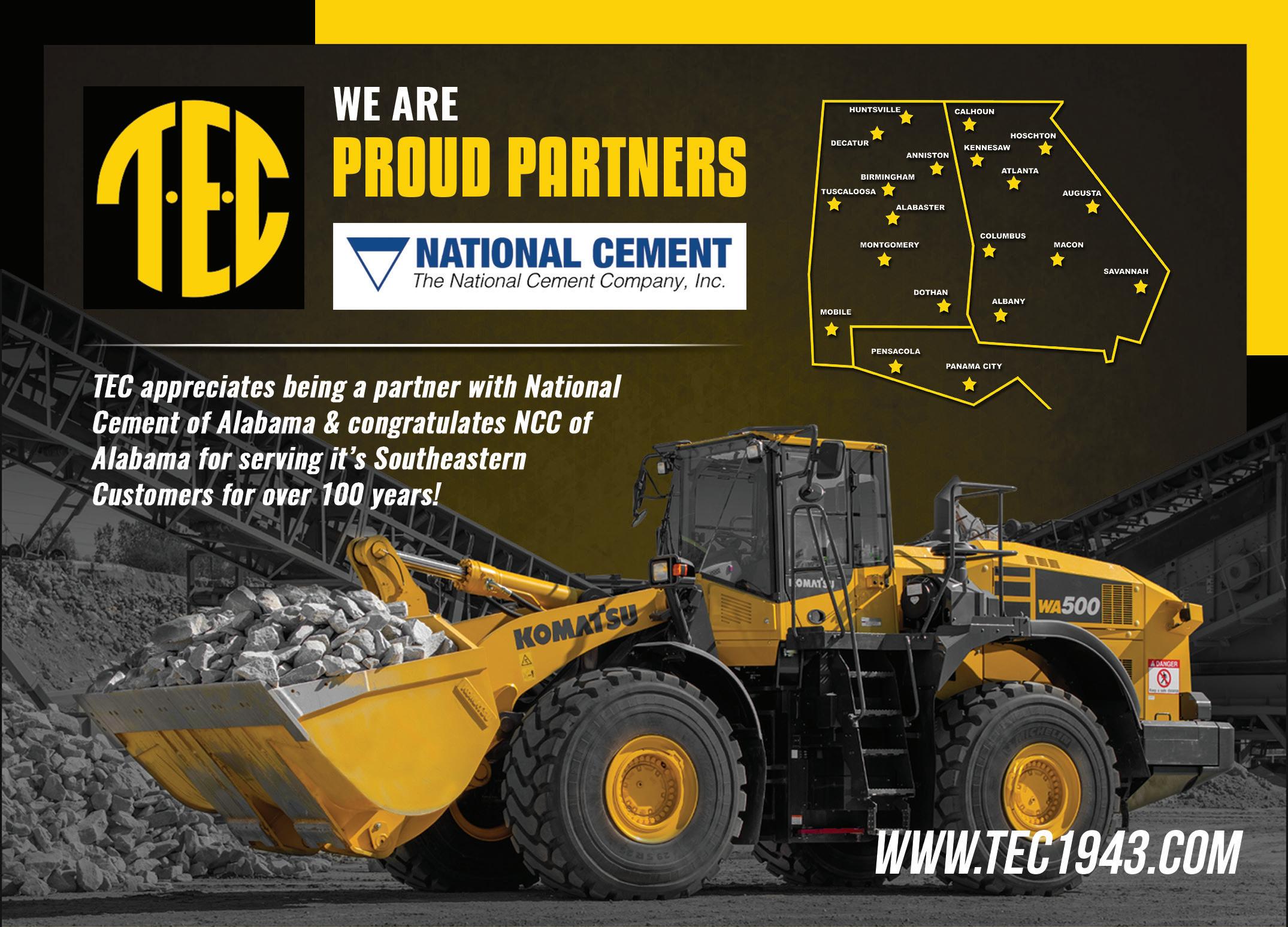
We are a local full-service marketing company that has been working with Tractor and Equipment Co for over ten years. We offer visual content development with multiple RED Digital Cinema cameras, graphic development, web, photo, and print, as well as a host of other marketing and branding services. Through the years, we have worked with international brands such as BMW, Shell Oil, Komatsu, and Amerex, and are happy to help you with anything you may need for Tractor and Equipment Co in the future.
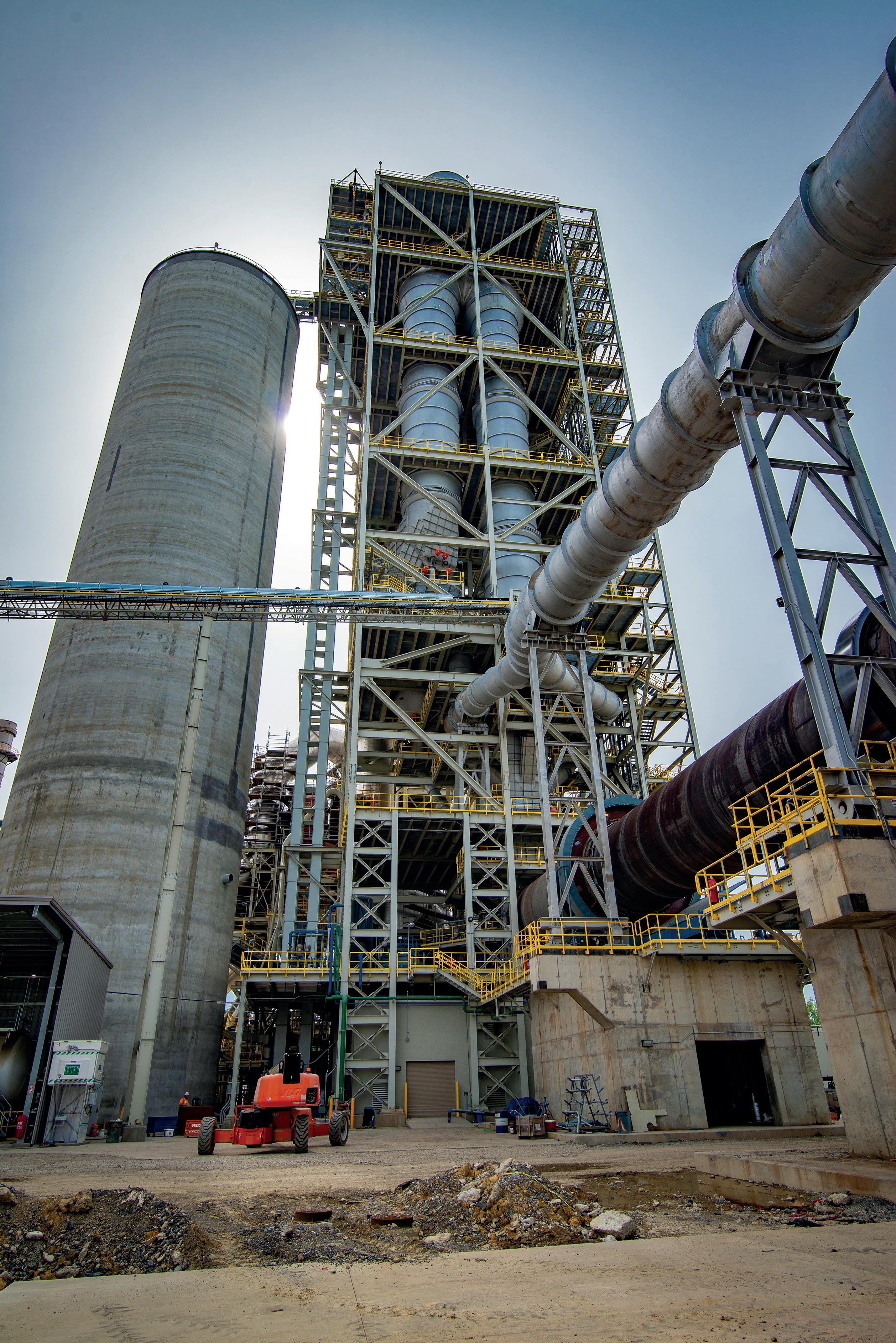
This will drop our carbon footprint by another ten percent. We’re currently in the process of conducting testing and making various initial production runs.”
By 2023, it’s expected that all Type I general-purpose Portland cement (OPC) produced in Ragland will be switched to Type IL PLC. But these aren’t the only efficiency measures underway at NCCA. The company is also revolutionizing its shipping operations, prioritizing energy-efficient modes of transportation.
“On a ton-mile basis, shipping by rail is more fuel efficient than shipping by trucks, lowering greenhouse gas emissions by up to 75 percent on average,” Spencer tells us. “Therefore, our carbon neutrality goal impels us to look at moving a larger volume of freight by rail.”
National Cement also owns approximately 4000 acres of land, of which around 800 acres are used for the plant site, storage, and
J & M Tank Lines has been a familyowned company since 1948. While headquartered in Birmingham, Alabama, we have operations strategically located across the southeast to offer the best coverage and service to our customers. As an industry leader in dry-bulk transport, J & M is backed by an elite force of professional drivers and industry experts dedicated to service and safety.
Built on a foundation of integrity and respect, we strive to provide quality service to all. Our purpose is to create an empowering environment for our stakeholders, encourage a team mindset and to exceed industry service and safety standards.
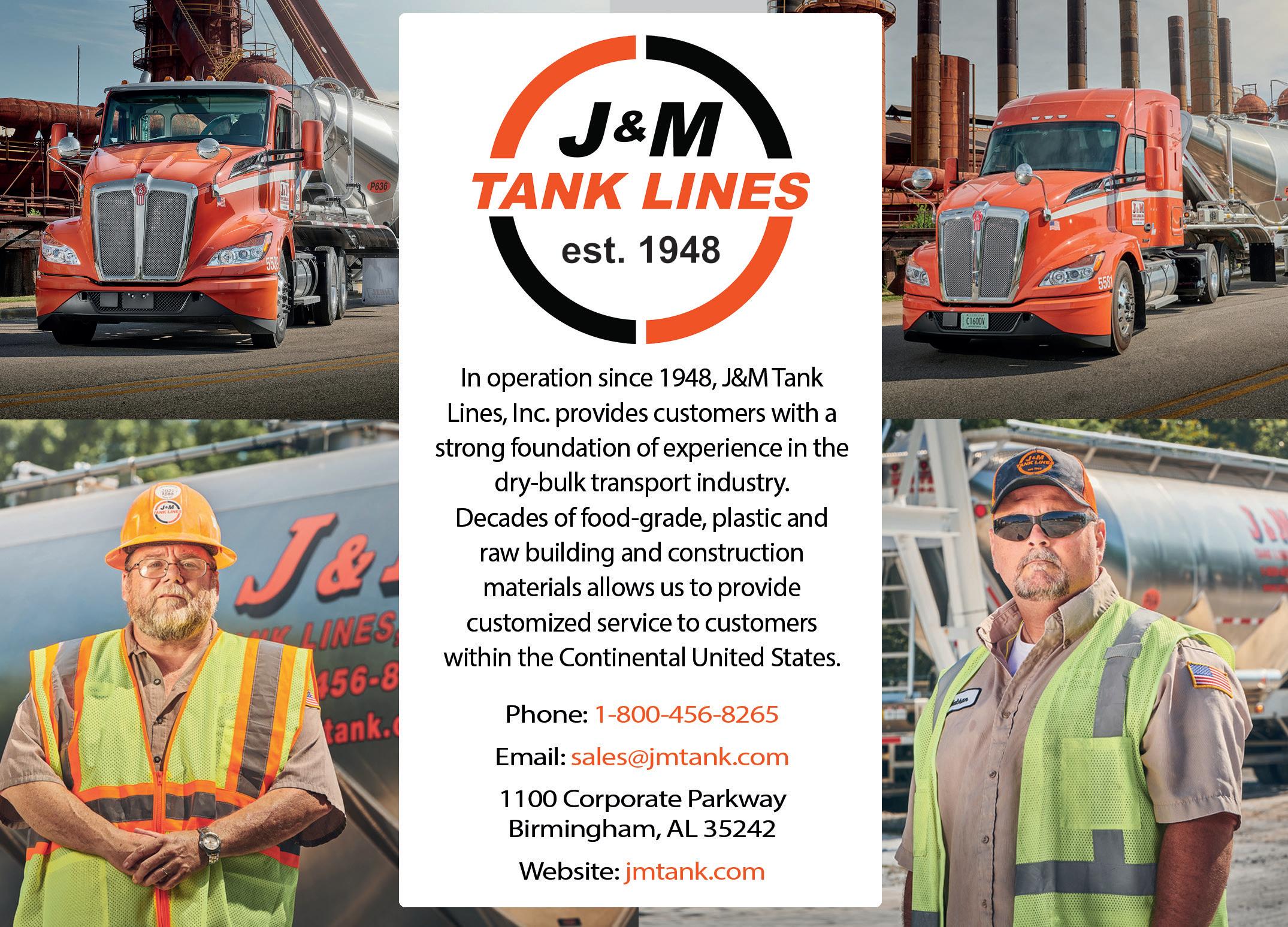
quarrying, with the remaining 3200 acres consisting of timber or grasslands.
“We’re currently studying the best management of our land to gain the best carbon offsets for the future,” Spencer reveals. “Long term, we will embrace carbon capture and sequestration, capitalizing on technology that is maturing every day.

“The Vicat Group is also researching and building new ways to reduce the carbon footprint of all their plants worldwide,” he adds. “We’ll
adopt their designs and technology in order to further reduce our carbon footprint, in addition to what we’ve already accomplished.”
Also speaking to Construction Today, Hervé Lapillonne, Project Manager at NCCA, echoes Spencer’s comments. “In several countries, Vicat Group is very active on the topics of carbon neutrality, with hydrogen, ethanol, solar energy, calcined clay and algae tests underway in some of its plants,” he says. “At NCCA, we have the advantage of being smaller and more agile than Vicat Group as a whole. Although we’re a creator of CO currently, we’re therefore wellpositioned to develop innovative solutions in the future.”
We’re ready to face the future with great confidence
“ “ “ “
“All in all, we expect our investments to make our cementitious product one of the lowest carbon cements in this market,” Spencer reiterates. “It’s a big step in the entire industry’s efforts to achieve carbon neutrality throughout the concrete value chain.”
NCCA’s aim for 2050, like the majority of carbon goals, requires change on the grandest of scales. To reach it, however, is the product of a series of small changes, driven largely by the work of hundreds of dedicated individuals. To this end, Spencer is effusive about what he describes as the company’s “unique family culture,” which he believes creates the foundation for much of NCCA’s success.
“Here, everyone knows everyone,” he confirms. “We’re a lean, largely flat organization. Our management is approachable, and they take it upon themselves to interact with our employees as
In response to the technical and environmental challenges faced by cement manufacturers, Euclid Chemical offers EUCEMTM ICARE, a patentpending strength enhancement technology that offers unequaled performance and reduced CO2 emissions potential.

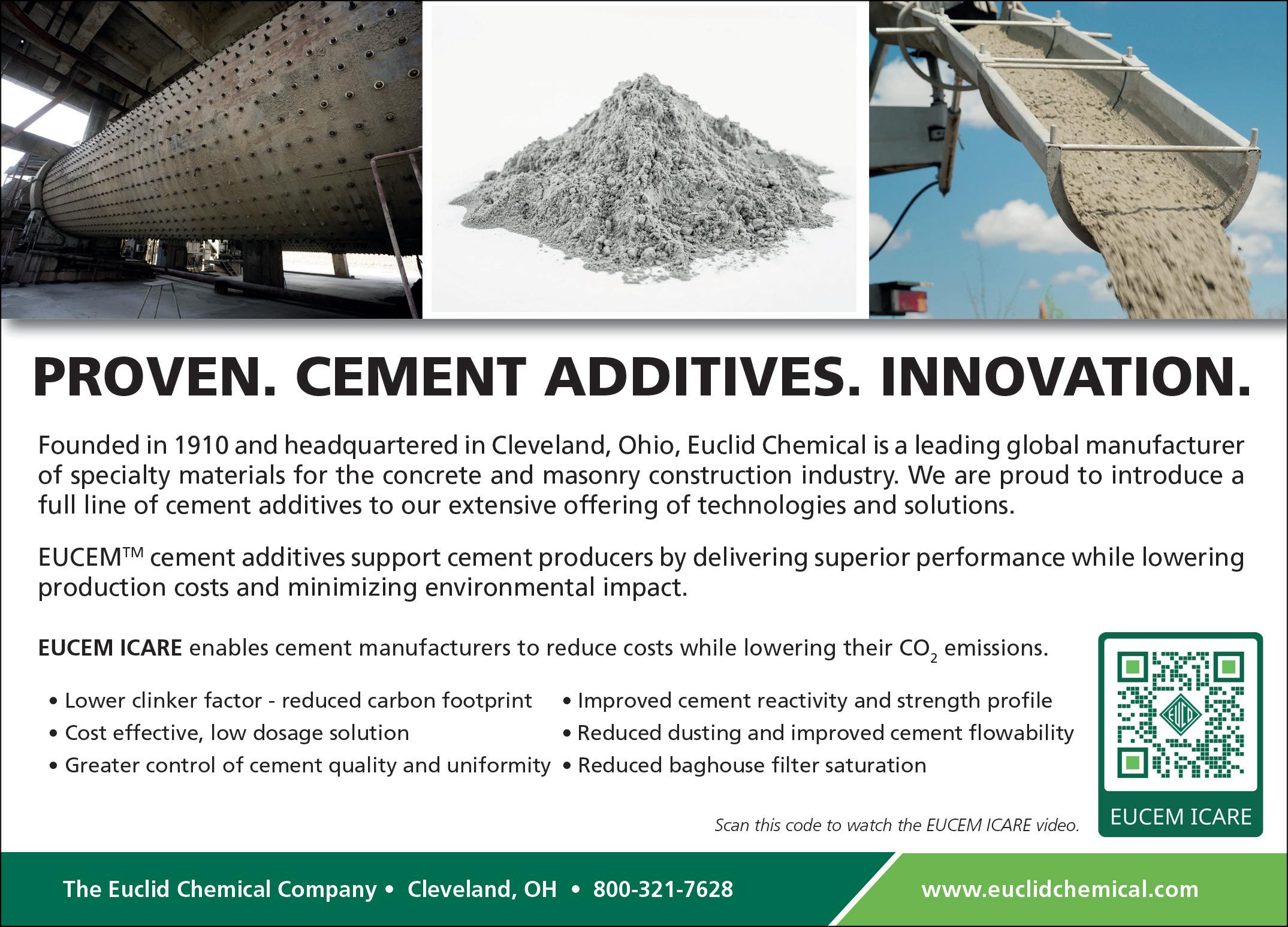
EUCEM ICARE products improve cement strengths while overcoming process constraints. With the EUCEM ICARE CP range, manufacturers can achieve full cement activation potential via improved cement fineness and particle size distribution. With EUCEM ICARE VRM, customers can expect improved cement quality and reactivity through optimization of the vertical mill process.
EUCEM ICARE maximizes cement activation potential and improves transport properties, while decreasing energy and production costs, clinker factor, and CO2 emissions.
best they can. We’re also hands on in our role, which gives us the ability to react to events and make crucial decisions at speed.”
It’s a quality that came into particular use during the Covid-19 pandemic. “We were able to organize ourselves rapidly, implementing strong health and safety measures to test, isolate, and protect our people,” Spencer recalls. “Fortunately, our industry was deemed essential, as was the construction industry that we serve. Therefore, we continued to operate effectively, with projects running as best they could, and the ongoing production and shipment of cement.

“Resilience is the word,” he then insists, reflecting on some of the logistical challenges of the period. “Although we source the maximum volume of product possible from within the US, we still rely on supplies from Turkey, Egypt, Germany, and elsewhere. Regardless, we kept going, working closely with many of our supplier and vendor partners to navigate the tough times. They
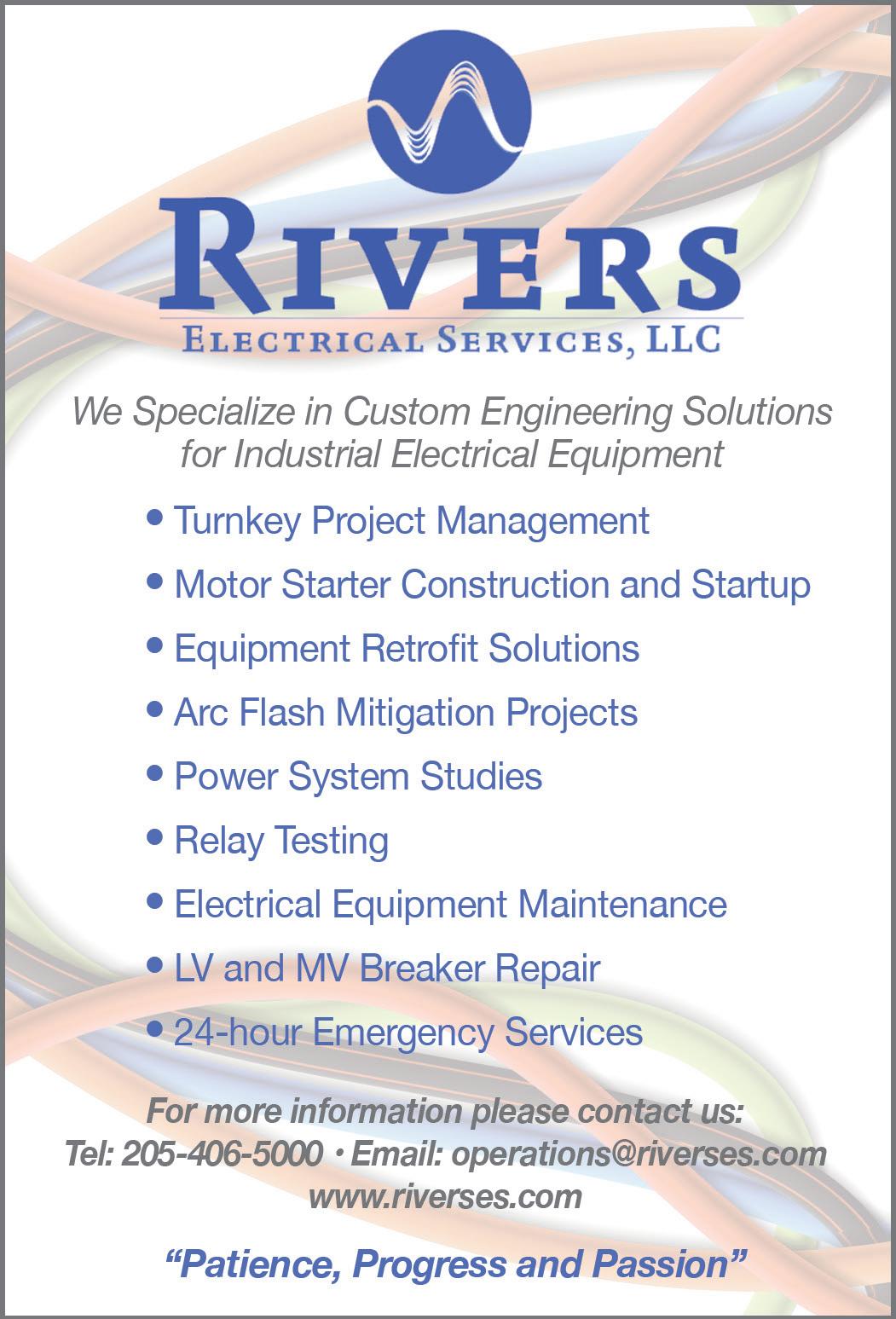
stepped up to ensure they had inventory in stock, or would help us by expediting parts or materials that we needed for our plant operations. It’s a testament to the long-term relationships we’ve built up and maintained over the years.”
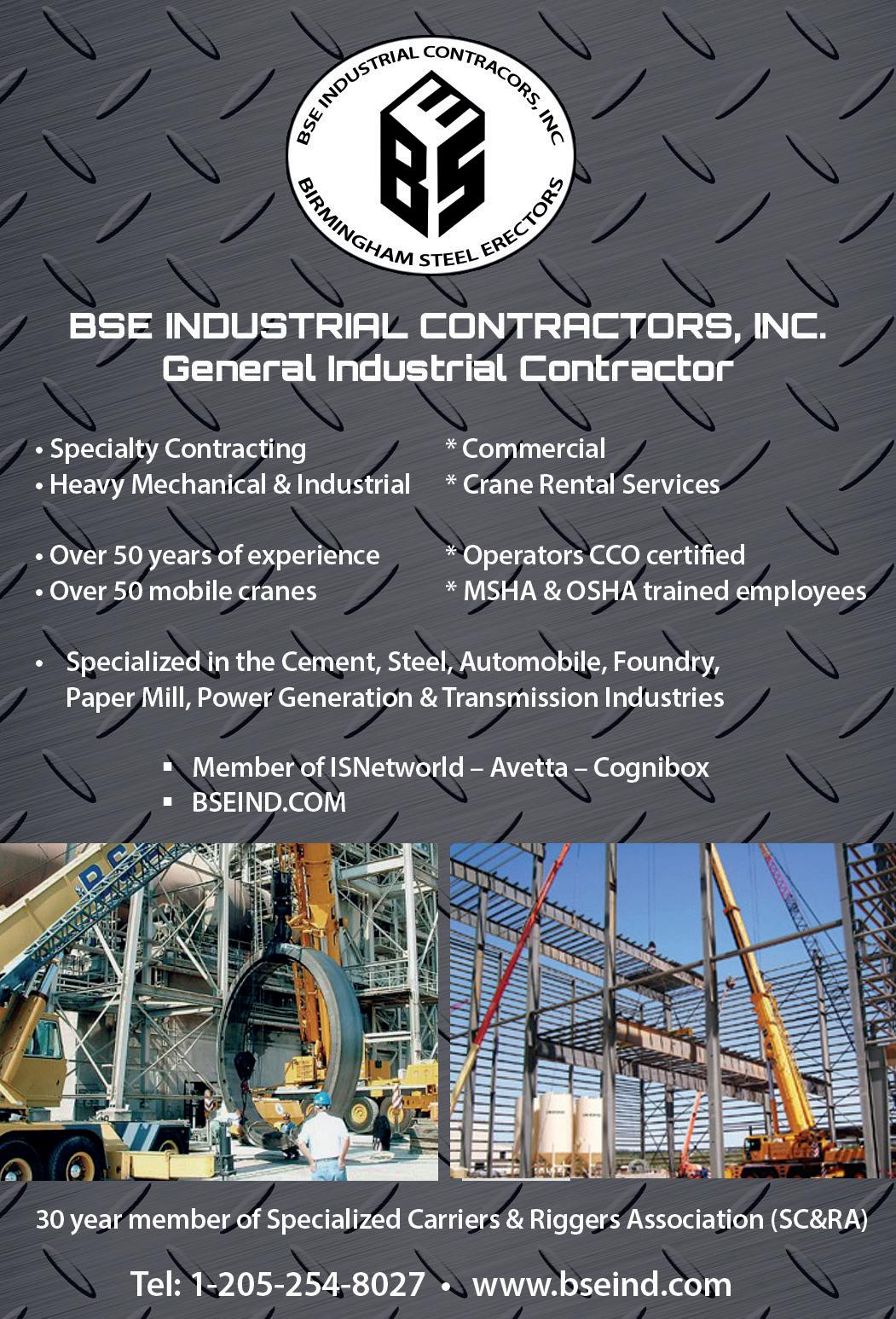
Alongside the expansion of NCCA’s Ragland plant, the company has also increased the capacity of its terminals in Greenville, South Carolina and Jefferson, Georgia. Now, the company is building three new terminals: one in Stockbridge, Georgia, servicing the company’s Atlanta customers, along with two in its Nashville market: one in Dickson, and another in Lebanon.
“These terminals will help us reduce truck deliveries from our Ragland plant,” Spencer confirms. “We’ll be adding to our fleet of rail cars to handle these new terminals, and increasing the loading capacity at the Ragland plant to load more rail cars. We’re continually upgrading our fleets and plants.”
For now, the NCCA remains in transition. “We have one of the most beautiful plants in the country now with the technology available,” Hervé states. “The balance, the emission control, and the tools and devices we now have at our disposal is amazing. We’re ready to face the future with great confidence.”
“With the launch of our new production facility, new raw materials, new fuels, an increasing rail fleet, and the addition of more distribution terminals, we have a lot of moving pieces in play,” Spencer concludes. “In the near future, our focus is to increase efficiency across our operations, so that five years from now we’ll have a highly efficient and productive plant. We’ll continue to execute our carbon reduction plan, servicing our customers with quality, consistent products, that allow us both to grow in tandem.” ■
www.nationalcement.com/nccal

Construction of a Macro Cell Tower

TrueNet is one of the leading specialty contractors for telecommunications infrastructure across North America. It has served the broadband, telecom, wireless and enterprise markets since 1985, with its expertise in all forms of communications networks, including: CATV, broadband, fiber connectivity, macro cellular, small cell, M2M and Wi-Fi. In its operation as the North American outside plant delivery arm of Fujitsu Network Communications, who acquired the company in 2016, TrueNet prides itself on possessing the manpower, resources and capabilities to manage, plan, engineer, and build virtually any infrastructure project regardless of its scope, geographic span or underlying technological plan.

The internet is now just as important as any other home utility to your average American, which reinforces why TrueNet has ‘continued growth’ locked in its sights for the near future. Another factor is its advantageous position as a provider of critical services to communication companies, for the provision of high-speed internet. Now, the company hopes to widen that range of services to the broader planning, engineering, and building phases of the telecommunication life cycle.
“We have been a service provider within telecommunications for 37 years now,” opens Bao Mann, Vice President of Sales at TrueNet. “Until recently, we had primarily focused on providing engineering and design services for broadband cable companies, aiding their growth or the maintenance of their outside-plant networks. The way that we are striving to develop the business is to leverage innovation and technology that increases quality and timeliness for any telecommunications company. The broadband cable industry in the US has really only been around for 50 years, and for the most part, the processes and practices have remained relatively the same. We’ve developed a culture of questioning these traditional practices.”
TrueNet’s preparations for the future of high-speed telecommunications in middle America
TrueNet holds ten offices across the US, having closed a number of what it refers to as ‘satellite operation centers’ during the pandemic. As Bao expands: “We have active programs everywhere from Seattle to South Beach, Florida, and have offices that acted as posts for our engineers and technicians based in those regions –
including operation centers in close proximity to our customer offices. During the pandemic, we closed a number of these and enhanced our remote-working model.
“The productivity of our designengineering group, which makes up roughly half of our company, increased significantly,” he continues. “And when
AFL is proud to work with TrueNet Communications, a leading provider of communications infrastructure planning, engineering and design, implementation and technical support services. As one of AFL’s prime contractors for its customers in the broadband, telco and service provider space, TrueNet’s exceptional services and experiences, specifically in fiber optic installation, splicing capabilities and test equipment, enable customers to reach their content delivery expectations. AFL is an international manufacturer that provides industryleading solutions to support the energy, service provider, enterprise, hyperscale and industrial markets. Its products, used in over 130 countries, include fiber optic cable, hardware, transmission and substation accessories, connectivity, fusion splicers, and test equipment. AFL also offers a wide variety of services supporting data center, enterprise, wireless and outside plant applications.
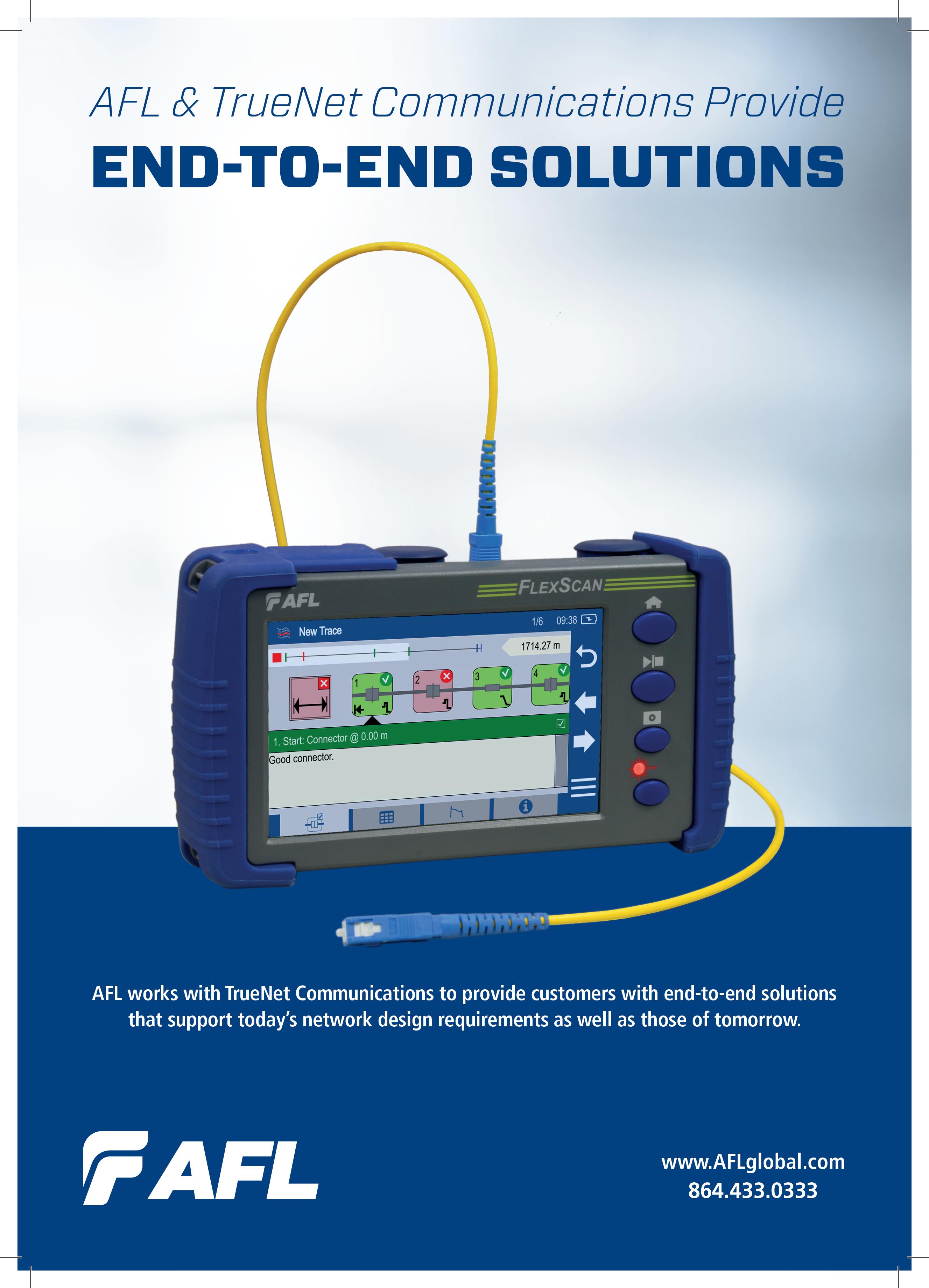
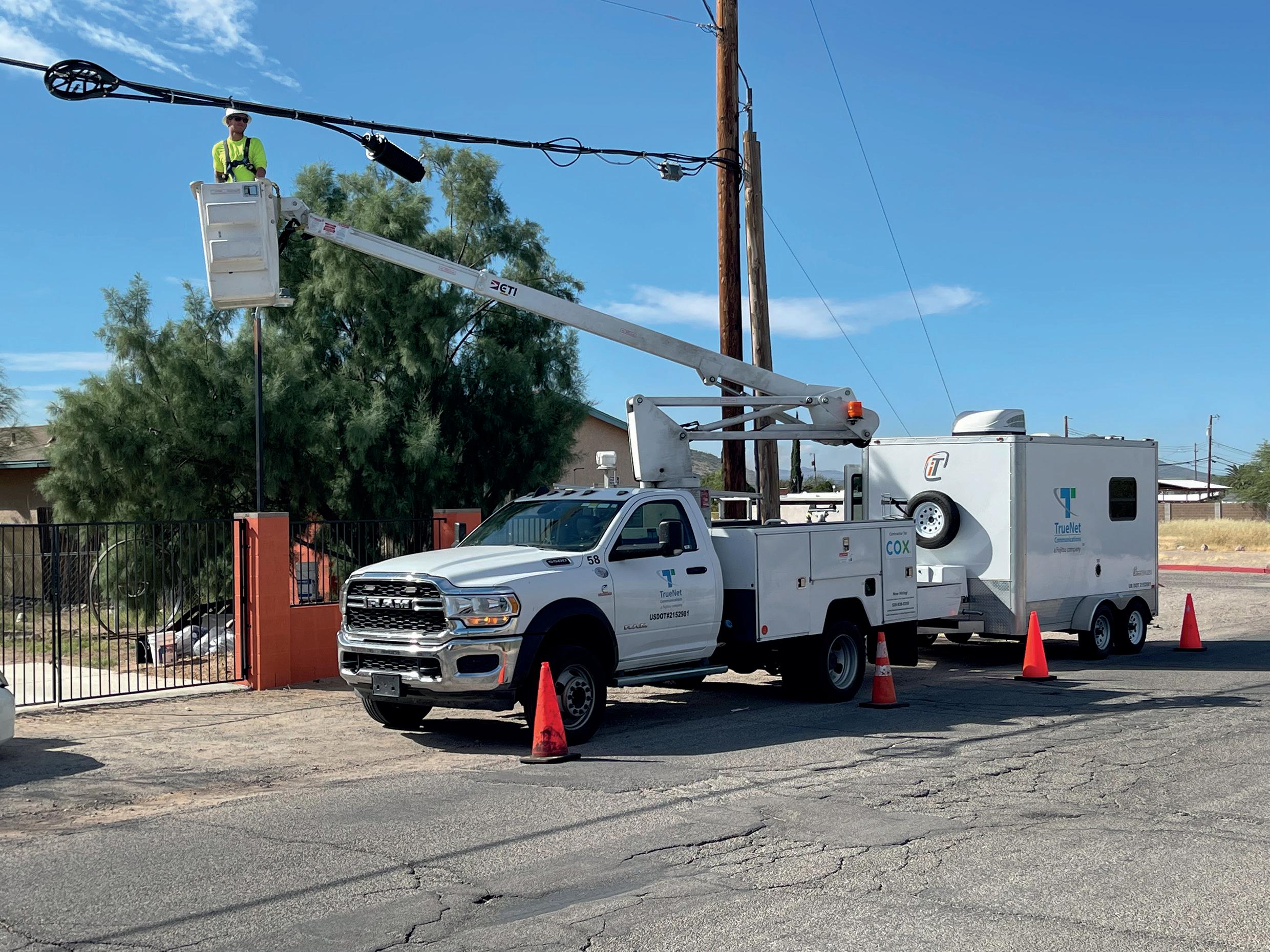

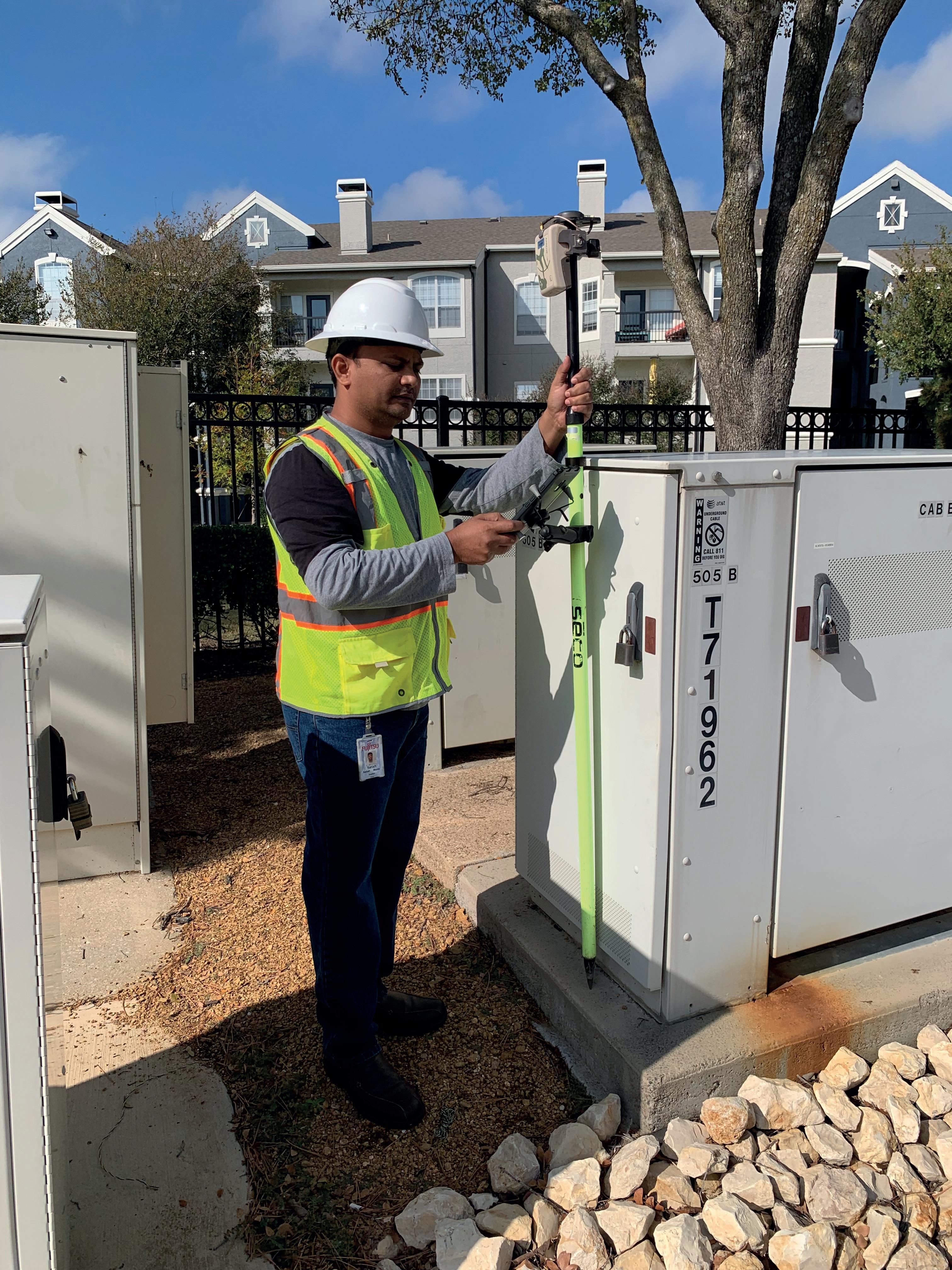
we ran further tests, we found that our employees’ work-life scores had improved too. So, all round it was a good thing.”
Increased productivity among the office staff wasn’t the only change that TrueNet observed. “Something noteworthy about our place within the industry, is that we provide our services to assist our customers on what we call Business As Usual (BAU) projects,” Bao says. Nearly all of our major customers provide services to both residential and commercial consumers. During lockdown, the traditional pattern of usage was turned on its head. Usually, during the day, providers have to supply high-speed internet to businesses, for which robust connections have specifically been built (in a lot of cases, fiber-to-the-business). This completely changed with everybody working from home. Suddenly, our customers needed us to augment their residential networks. We found ourselves providing higher bandwidth connections to people’s homes in order to preserve the same level of capacity. This meant a great deal more opportunities for us.”
Light Detection and Ranging (LiDAR) for the collection of data regarding our engineering efforts,” Bao states. “In the past, we would have sent out a crew of field engineers to our customers’ prospective network locations, who would gather all of the telemetry geodata, addressing and routing information and any other points of interest, such as where we would need to submit build permits. In utilizing LiDAR, we’re able to collect all of this data through a car-mounted laser-scanner in a matter of days, instead of months. As well as the overall efficiency of the collection, the accuracy has also improved dramatically; if there is an artifact of importance to us, which is visible from the street, LiDAR will find it. We’ve seen our overall speed in production increase, and a huge drop in repeat site visits.”
As technology evolves, so the demand for faster connection speeds increases, upon which the market increasingly comes to rely. For TrueNet, therefore, continual investment is a necessity. Recently, the company’s strategy has included large investments in construction machinery, such as boring rigs and trenchers, as well as developing field data collection tools and tablet applications that assist their engineering efforts. In some cases, this has seen project completion time reduce from weeks, down to mere days.
“One of the larger and more exciting technologies that we have employed is

Through multiple acts of exterior government intervention, in the form of Connect America Fund (CAF), the Rural Digital Opportunity Fund (RDOF), and most recently the US Infrastructure Bill (which includes large grants such as the Broadband Equity, Access and Deployment (BEAD) program), TrueNet’s industry has experienced a huge injection of recent finance and activity. Each of the above strive to bring greater opportunities to socalled rural America, by introducing faster, fiber-broadband connections to traditional under-served homes and local communities. This addresses a vital need: a remarkable 20 percent of US homes do not have access to high-speed internet.
“TrueNet takes pride in the fact that we are assisting our customers’ efforts to further develop US telecommunications infrastructure,” Bao explains. “ Thanks to these government initiatives, we are on the precipice of an enormous paradigm shift within our industry. The 2021 Infrastructure Bill alone is
Nearly 27 million households are without access to high-speed internet in the US
set to award $60 billion in the form of loans and grants in order to provide every American access to high-speed internet. Such a massive injection of capital will create an exciting new dynamic, unlike anything we’ve seen before.
US states have already started their application and bid processes for available funds, through which telephone companies, cable companies, non-traditional providers and utility providers will in turn be able to bid for funds to build the fiber connections. “We are about to see a huge swell of activity in US geographies that quite frankly none of us has really ever focused on before,” Bao notes.
“One of the knock-on effects of this radical modernization is that telephone and cable companies who are yet to upgrade to fiber optic cables, will now need to do so in order to stay competitive.”

Such extraordinary developments, in a relatively young industry, begs the question as to who will construct and engineer the necessary infrastructure for these changes. On that point, TrueNet has been observing the market and preparing for some time now.
“How do you create more, with less, and how do you bring new talent into the industry?” Bao asks. “Those are going to be the two biggest factors that impact
TrueNet fleet and construction yard in Tucson, Arizonacontractors and vendors over the coming years. We’ve invested a lot of time and money into the research and development of new technologies. As well as this, we’ve ramped up our internal recruitment process and the emphasis we place on staff trainers, who are working year-round to ensure that we have a broad bench of resources from which to pull. There aren’t enough people with the necessary experience.”
Despite this, Bao is positive about the outlook for the US. “Nearly 27 million households are without access to high-speed internet in the US,” Bao concludes. “But soon enough, those 27 million households will have not just one, but maybe two or three options to choose from.” With the likes of TrueNet at the helm, the continent can look forward to a more connected future. ■
www.truenetcommunications.com
Masters of Barricades (MOB Traffic) provides superior traffic control planning and barricades for construction, infrastructure maintenance, and special events in southern Nevada. As the largest privately owned traffic control and barricade provider in the region, it also services contracts in southern Utah, northern Arizona, and as far north as Reno, Nevada. All traffic technicians are trained and certified by ATSSA, and possess the highest experience ratings in the industry. Estimated requests for lane closures, road closures, detours, and traffic shifts on residential streets, industrial work zones, or busy highways are available online at mob-traffic.com or by calling 702 791 2008.

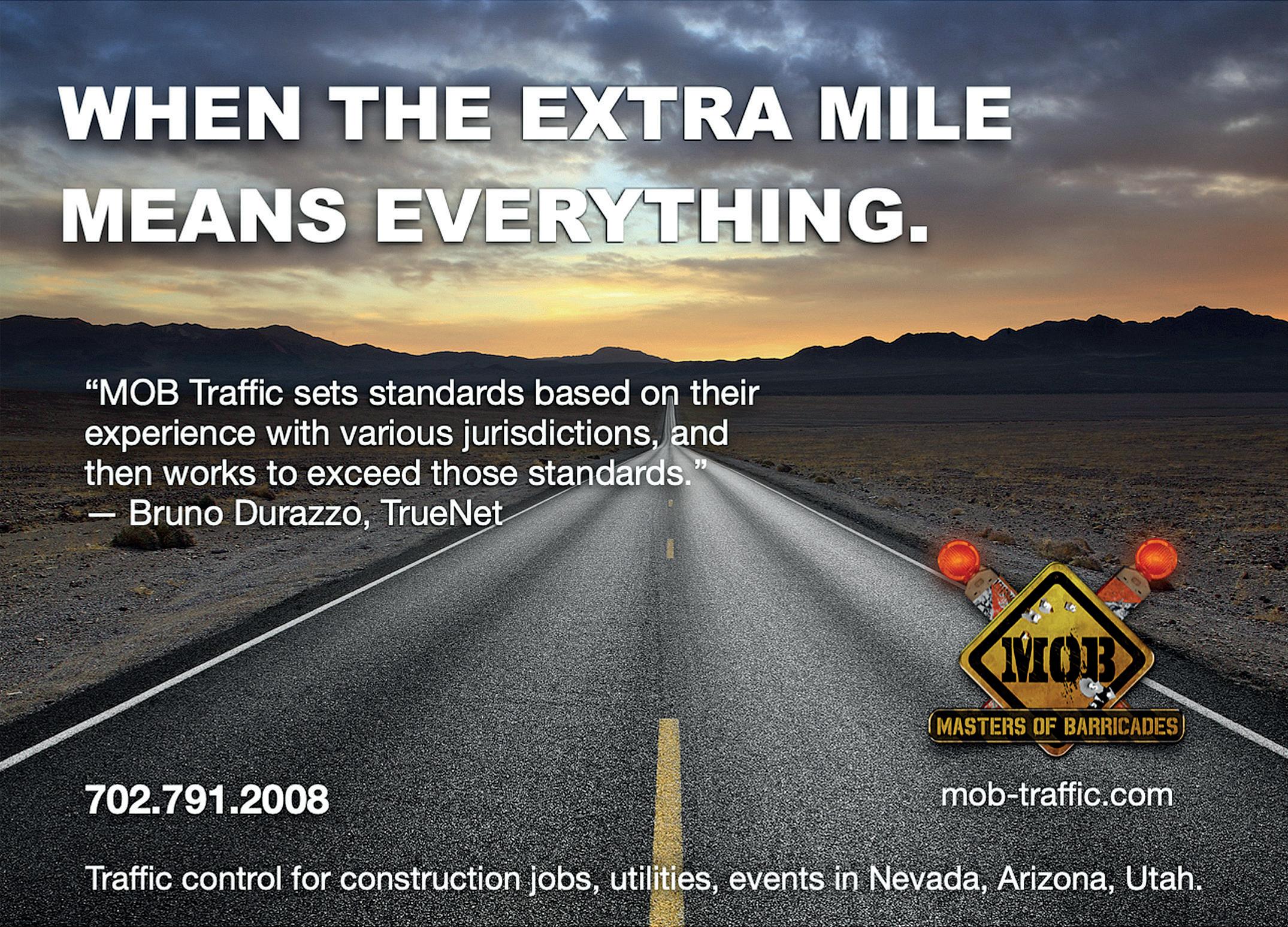
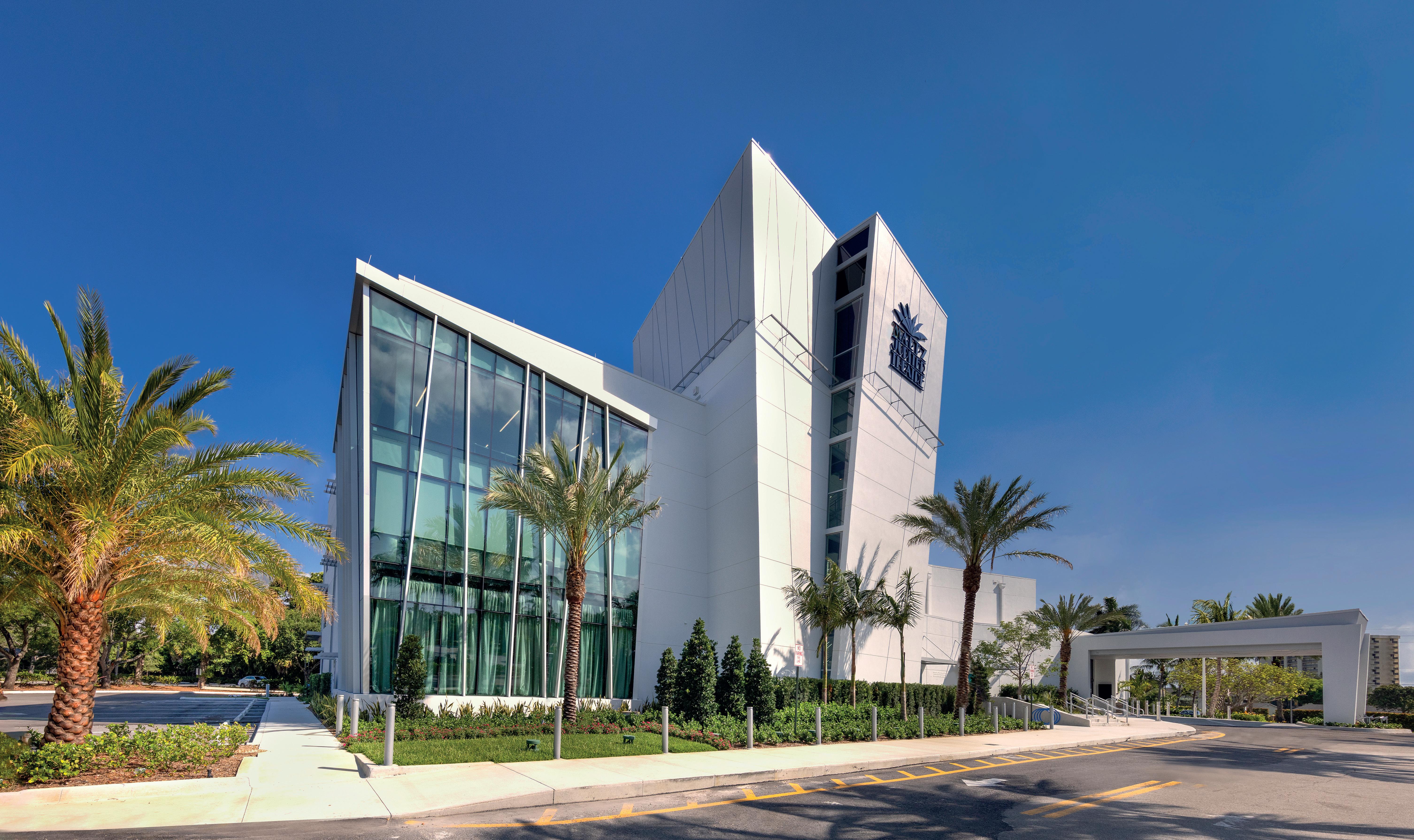
“ “ “ “
 What’s the secret to Kaufman Lynn’s success?
Maltz Jupiter Theatre Photograph: Miami In Focus
What’s the secret to Kaufman Lynn’s success?
Maltz Jupiter Theatre Photograph: Miami In Focus
Not too much has changed at Kaufman Lynn Construction (Kaufman Lynn) since its founding in 1989. “We’ve grown organically to become a large construction company within the region, and beyond,” reflects Mike Kaufman, Founder and CEO of the company. “We achieved gross revenues of $400,000 in our first ever year; in 2022, that same figure is over $500 million. To have achieved that in just over 33 years is quite unique.”
Operating in Florida and North Carolina, today, Kaufman Lynn is a full-service commercial construction company. The company’s work encompasses multi-family housing, senior living, hospitality, government and public safety construction, education, healthcare, self-storage and parking garages.

“We typically divide our work between the public and private sectors,” explains Chris Long, President at Kaufman Lynn. “The latter is a pretty broad gambit, consisting of condominiums, for-rent apartments, workforce housing apartments, retail, hospitality, and hotels. Our public work projects range from five-million-dollar fire stations, parks, and EOC buildings for a number of municipalities, up to 140-milliondollar major projects. In all, we have around 35 active project cycles at any given time.”
The last few years haven’t been without their challenges, however. The arrival of the Covid-19 pandemic in early 2020 caused significant disruption to industries worldwide, with many operations brought to a standstill. Kaufman Lynn was by no means exempt
from these difficulties, but the period did have its benefits.“We’ve always prided ourselves on being very nimble to react to different conditions in the market,” Chris reflects. “The pandemic was a task beyond any other that we had faced. Two-thirds of our people are bootson-the-ground, working out of job site trailers, and because we were deemed an essential business, they kept working throughout the period. Thankfully, we were able to come up with a strategy to prevent all the associates from mixing, limiting the risk in the event that one associate tested positive. We split up our project teams, conducted meetings outside, and did everything we could to protect our people. Fortunately, we didn’t lose anyone to the virus.”
Interestingly, Kaufman Lynn boasts the largest pre-construction department in Florida. According to Chris, this fact gives his clients “the best of both worlds,” by allowing the company to hit the ground running
Recreational Design & Construction, INC
Recreational Design & Construction,INC (RDC Design Build) - established in 1993 - is a contractorled Design-Build firm consisting of dozens of team members who are second and third generation builders. RDC has been the premiere Design-Build firm in South Florida for parks, aquatic complexes, and sports venues for 29 years. As our reputation for superior design, solid construction, and efficient operations grew, it made us the perfect Team Member for Kaufman Lynn as they pursue the some of the largest parks and recreation projects in the region. We combined our expertise for projects like the Doral Central Park - a 100-acre park, and Lake Lytal - a major aquatic complex for Palm Beach County. Over the years, we have also performed as a commercial pool contractor for Kaufman Lynn on notable projects like 1200 & 5th, Bluesten Park, JM Family, Tower 155 and Plantation Walk. They not only demonstrated our experience, but further grew our personal and professional relationships.

We are grateful to be working with Mike, Chris, and the rest of the team at Kaufman Lynn once again. As always, we look forward to working closely together and serving the community as one of ENR’s Top Specialty Contractors.

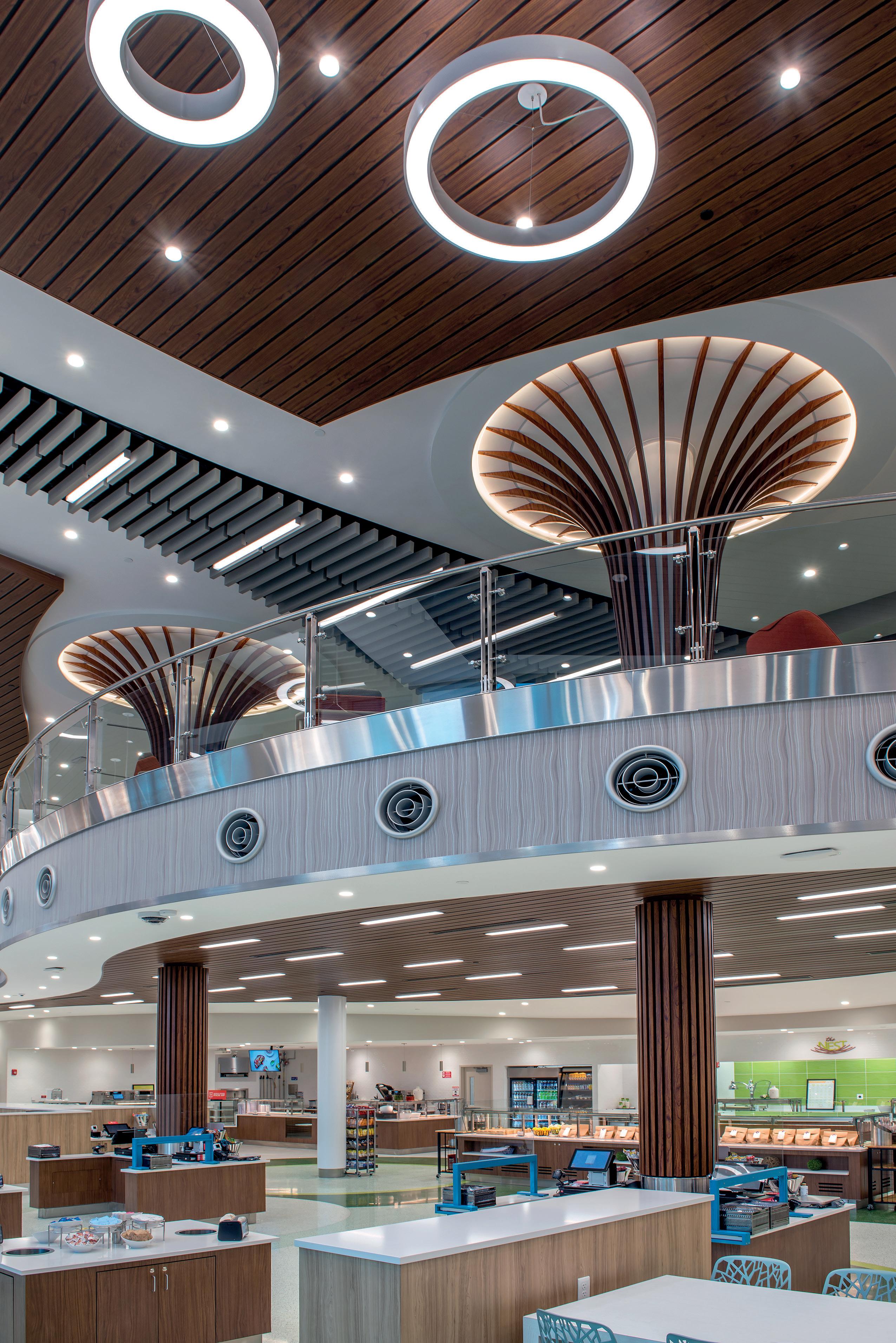
when it comes to project construction. But it’s not the only differentiator for the company. On that subject, Chris points to nothing other than the company’s culture.
“Simply put, we work harder at perfecting our clients’ projects than any other contractor,” he confirms. “We take pains to understand what’s important to the client. It’s in our DNA, that’s how we’re wired.” It’s a view that Mike echoes: “Our Vice President of Pre-Construction, Chris Christy, is a true south Florida professional,” he states. “There’s none better at managing a project through from pre-construction to the beginning of the job itself. It’s thanks to him that we’re a leader in that department.”
This client-first approach is one that’s led to tremendous success for Kaufman Lynn, for which repeat business constitutes upwards of 80 percent of its total workload. “Our greatest successes come when we build for clients who appreciate the extra effort and commitment that we offer,” Mike notes. “We’re very fortunate to have the luxury of being able to make objective decisions about the type of project we take on, and which clients we choose to collaborate with.”
Among such projects is the company’s recent $20 million historic renovation of the Miami Dade College Freedom Tower and, more recently, its work on the Maltz Jupiter Theatre. Finished in July 2022, the latter project was highly complex in nature, and its success represents an immense source of pride for the company.

“It’s hard for me to express just how intricate a project the Maltz Jupiter Theatre was to execute,” Chris admits. “We were charged with demolishing the stage of the existing theater, which was supporting the entirety of the remaining theater house. To accomplish this, we had to first plan and engineer the temporary support for the structure, then demolish the existing stage and back of house and rebuild it within an inch of the existing foundations.
We did this ten feet below the existing grade, while pumping out incoming water, and without allowing the existing structure to settle. That’s just one aspect of the complexity we were faced with, but it’s a challenge to which the team as a whole rose very well.”
“When you are building cultural arts venues, you have to bring serious expertise to the table,” Mike adds. “Not only are you taking on structures that are typically unique in their design, and that require really strong construction, but then you are tasked with making them look and sound good. You have to have that in-house, and we do.”
A further significant project for Kaufman Lynn is the recent completion of the JM Family campus. JM Family is one of the largest private companies in South Florida, and Kaufman Lynn completed a major overhaul of the corporate headquarters in Deerfield Beach, Florida. The $160 million project

integrated innovative technology and sustainability features to reimagine and modernize the facility. “We are enormously proud of the work we did for JM Family,” says Chris. “This showed the extraordinary results you can achieve when you partner with a client to understand and address their needs, even as those needs change during the life of the project.”
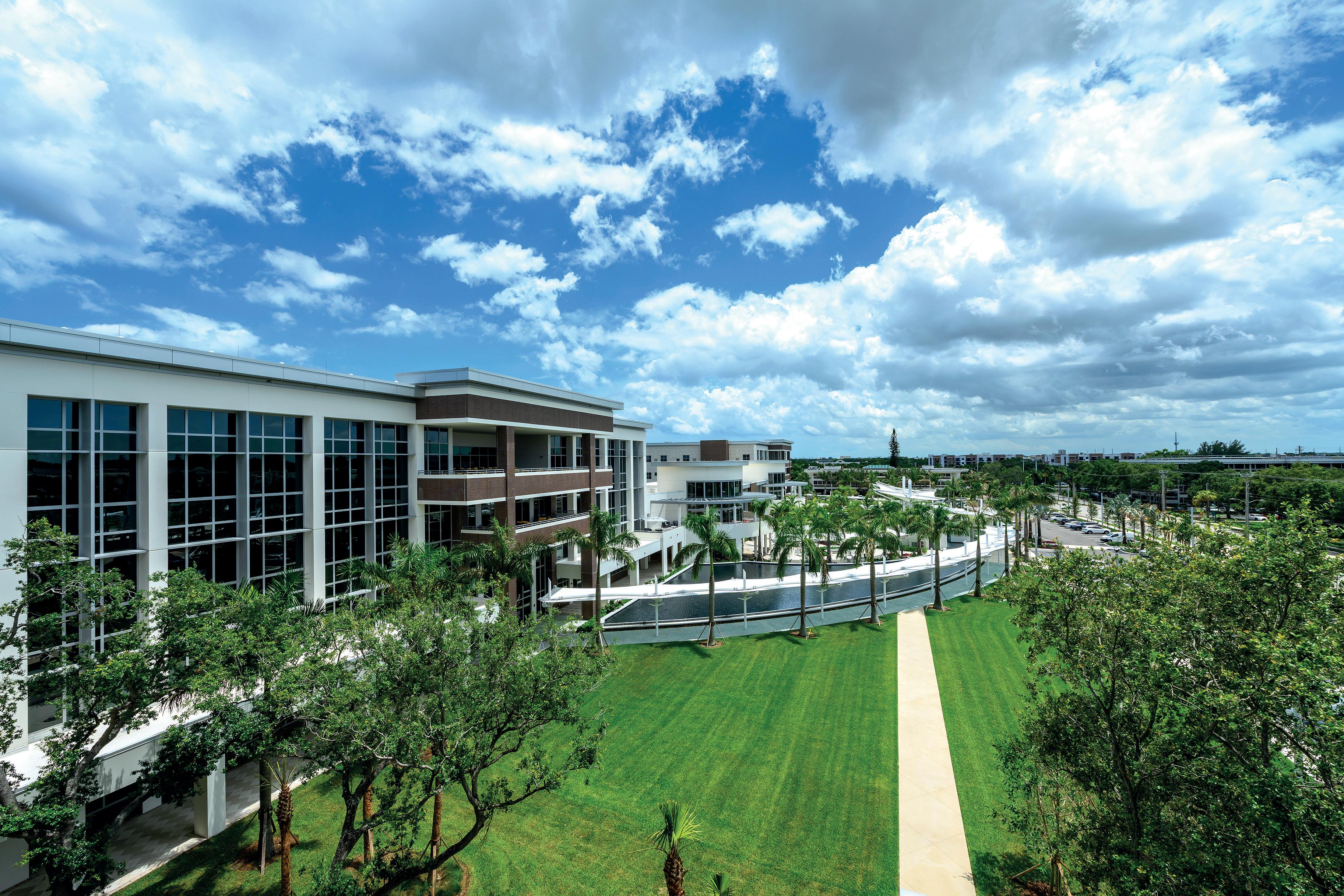
This year represents another significant milestone for Kaufman Lynn: the year in which it transitioned to an Employee Stock Ownership Plan (ESOP). As Mike explains, it’s a decision that aligns with the company’s longstanding values. “We knew we had a great culture
here, we wanted to protect that, and we believed that an ESOP was a reliable way to do so,” he comments. “At the same time, it was also a way of giving back to those who have put their heart and soul into the company over the years, offering an added benefit that will appreciate in value as the company develops, and provide a substantial benefit whenever our employees reach retirement.”
“The ESOP also engages our associates in an ownership mentality,” Chris points out. “Having a stake in the company changes how individuals approach their work. Because they feel a part of the company, it brings out a new level of commitment and determination to succeed.”
The future’s bright for Kaufman Lynn. As 2022 draws to a close, the company is expecting to confirm its best ever year, surpassing $500 million in revenue for the first time. “Projections for the next two years remain strong,” Chris notes. “Beyond that, it will have much to do with the economy. From our perspective, the plan is to keep strengthening our market in North Carolina, especially the volume of our public sector work. We’re also exploring the possibility of expanding our operations on Florida’s west coast, taking advantage of the growth we’re seeing north into Tampa.”
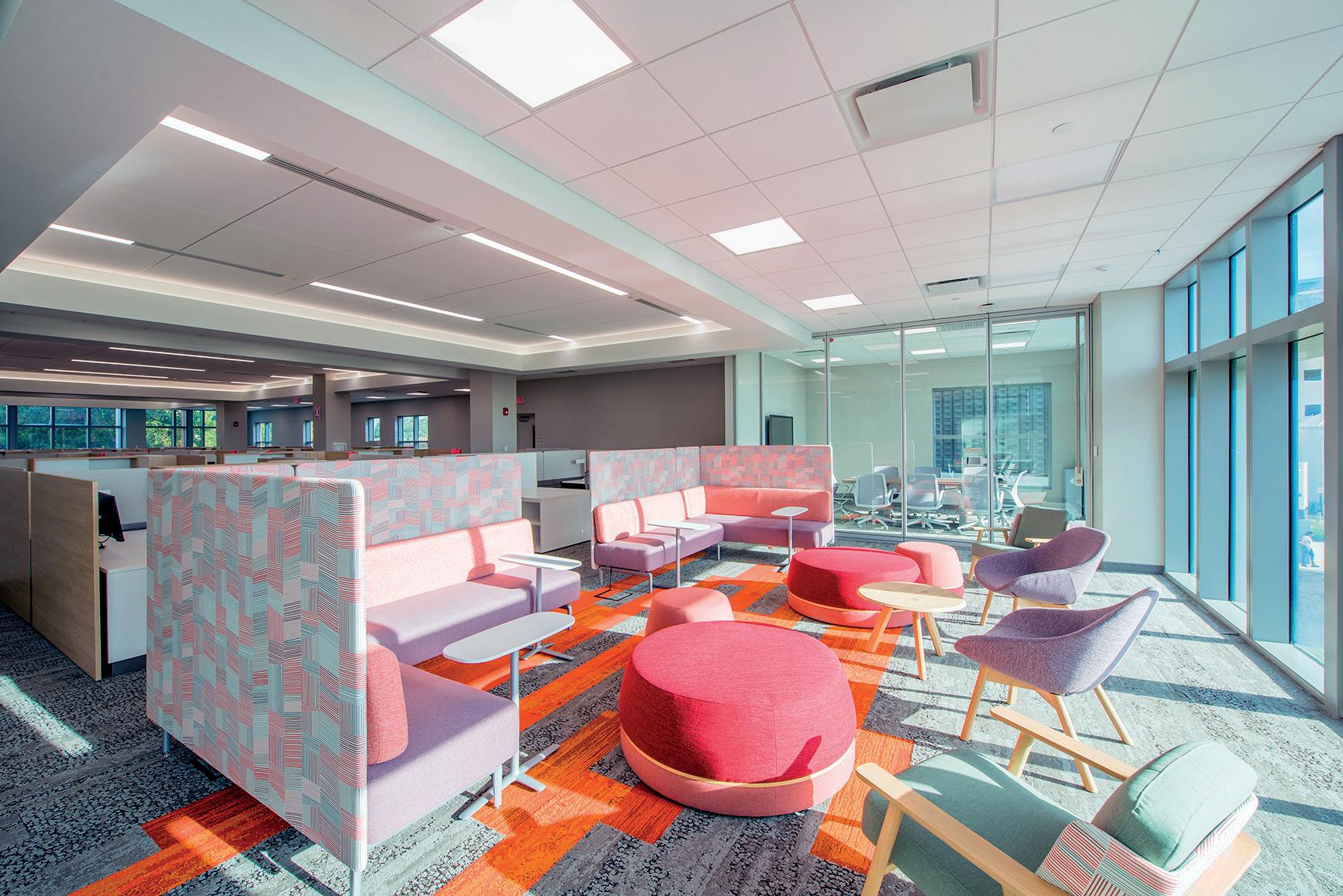


Left & below: JM Family Campus - Photograph: Chuck Wilkins
www.kaufmanlynn.com
Hillpointe, LLC (Hillpointe) was founded in 2018 with a primary focus on the development of market rate workforce multi-family housing. During our conversation with Co-Founders and Managing Partners, Kelly Mahoney and Steven Campisi, we learn how the company has pushed itself
to become the largest developer of new workforce housing in the southeastern United States. “We specialize in providing multifamily rental housing that is affordable to people who earn between 60 percent to 120 percent of the area median income, or about $50,000 to $85,000 annually. Over the last several decades, affordable rental
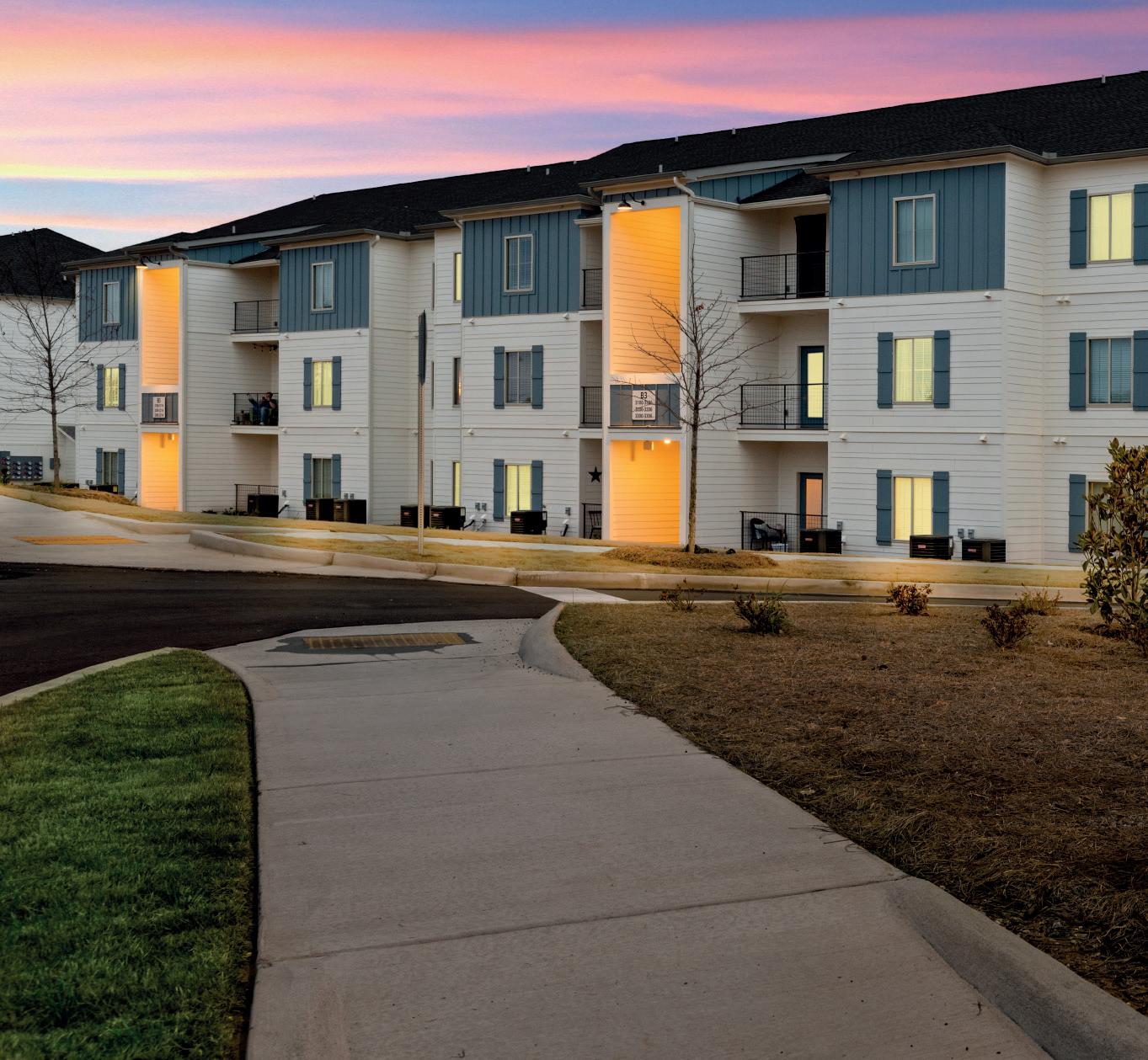 Hillpointe’s strategy for success in attainable housing construction
Hillpointe’s strategy for success in attainable housing construction
housing largely disappeared, with quality rental housing options increasingly restricted to top-end luxury renters,” begins Steven.
“So, in terms of what differentiates us, we are building for a particular market. Essentially, we create Class A quality gardenstyle multifamily communities across the southeastern United States, and we are able to deliver those communities at a significantly lower cost basis than other
new, like-kind construction. Our ability to deliver at a lower cost basis enables us to pro-forma attainable or workforce housing rents, and still have our projects pencil from a financial standpoint,” Kelly emphasizes.
To truly highlight Hillpointe’s business model, the leaders discuss a recent project in Savannah. “We originally identified the land for that project in 2019, and it was initially a parcel that, while in a great

“ “
We have a wealth of great sites in our pipeline, our construction process is streamlined, and our supply chain has been optimized
“ “
location, presented some significant predevelopment challenges, notably access and wetlands. In most jurisdictions, you need two distinct access points to meet building code on an institutional scale multifamily development and this property only had one access point. Additionally, at first glance, the property appeared to be significantly encumbered by wetlands according to a dated determination by the Army Corps of Engineers. Even though the underlying parcel was relatively large at approximately 40 acres, the then applicable wetlands determination materially restricted the total amount of developable acreage,” shares Steven.
“Fortunately, by acquiring an adjacent property and engaging several environmental consultants, we were able to mitigate the access and wetlands issues that had deterred other firms from developing the parcel. We received full approvals and began

construction in 2020. As a fully integrated firm we are unique on the construction side of our business. We employ a development model that differs from our industry peers in a number of ways. First, we act as the developer, the general contractor, and we self-perform the majority of the underlying sub trades, which allows us to strip out a significant portion of the embedded fees and overhead that are typically spread across the multiple layers of contractors in a traditional development structure.
“Second, in addition to performing as the general contractor and self-performing sub trades, we source the majority of our materials direct from the manufacturer on a bulk basis. By cutting out middlemen in the distribution channel, we can significantly reduce the cost of building materials. Third, we operate a widget model and we build the exact same building types on every project.”
We then dive deeper into the details of the business’ operation, and learn about how Hillpointe tackles onsite challenges, again, using the Savannah project as an example. “We operate as close to an assembly line model as possible, building the same design everywhere. A typical Hillpointe community consists of 200 to 400 total units. We have three different building types that we construct, consisting of 12 units, 24 units and 36 units. We lay those building types out on each prospective site and then our construction team builds the same product in each market. By implementing a widget style, uniform construction model, rather than a unique footprint for each project, we are able further reduce our cost basis.”
“We employed our construction model on the Savannah project just like we would on any of our projects. The construction was completed in just under a year, and leasing began in early 2021. We were able to develop the Savannah project to a very attractive cost basis, and we were able to successfully complete the entire lease-up in about five months, a timeframe which exceeded all our initial projections. In early 2022, we sold the project to a multifamily investment firm that now operates the property, and it was a great return for us and our investors,” Kelly expresses.

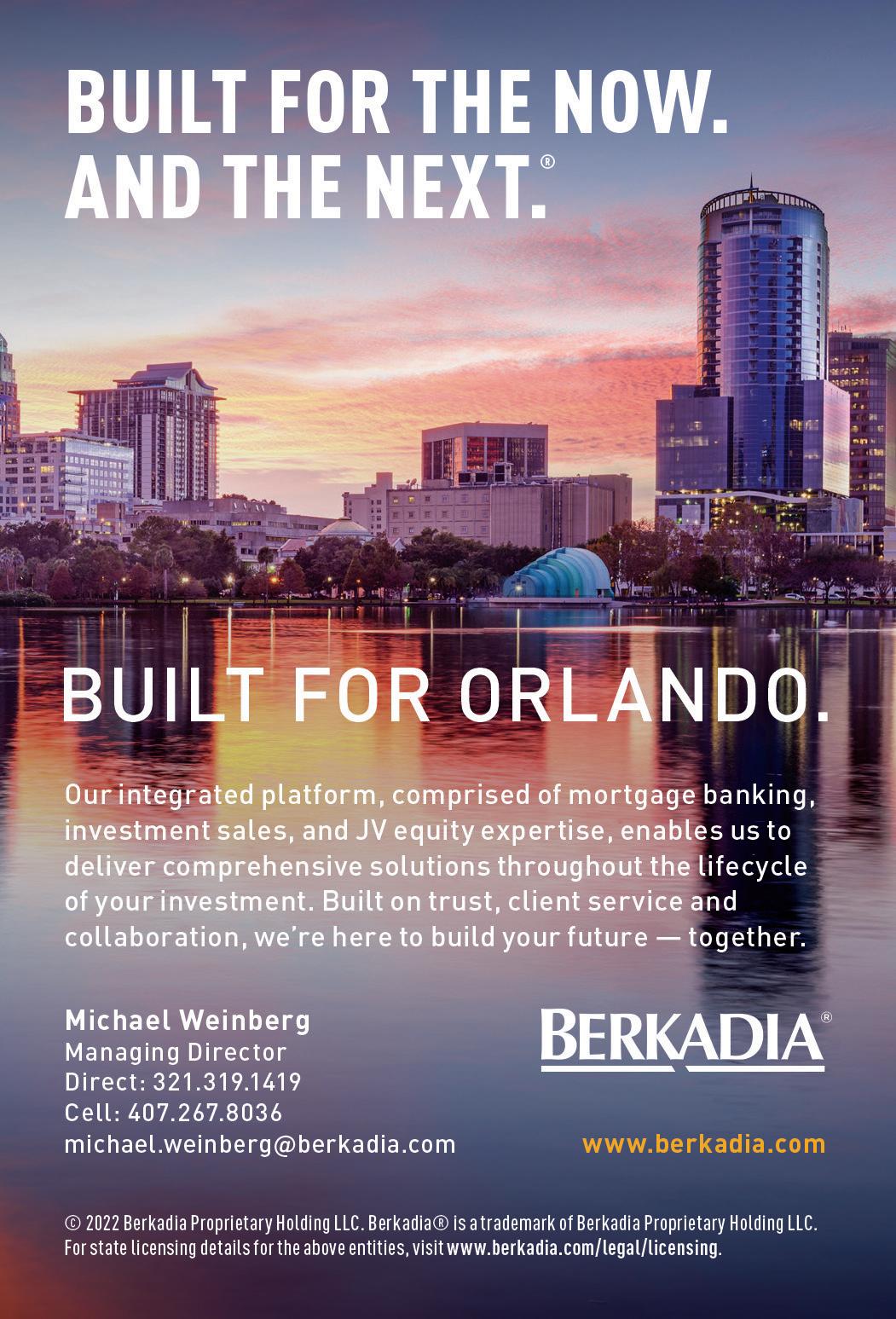

Steven then shares more on the development and operational side of the company. “Broadly, our investment
thesis is centred on our ability to execute at a significantly lower cost basis than our competitors, which is increasingly important in the current environment of rising rates and construction costs. Our hands-on approach to construction allows us to develop at a significant discount to other new construction, and our total cost basis is often lower than the purchase price at which other investment firms pay for
significantly older multifamily assets in our markets. We now control a pipeline of over 8000 multifamily units throughout the Sun Belt. With that pipeline and our proven institutional model for the creation of workforce housing, we believe that we are well positioned to continue addressing the ongoing housing affordability crisis.”
To achieve this, the two highlight that Hillpointe has had to push itself to be a best-in-class operator. “We have had to be exemplary on the development side in terms of finding and entitling great sites and an industry leader on the construction side in terms of executing at a highly attractive cost basis.
“From an organizational perspective, we have continued to build our team, with a focus on boots on the ground underwriting and execution. We believe being hands on in our target markets is a must, not only to select great sites, but to successfully usher those sites through the
pre-development process. Best-in-class execution typically can’t be achieved from the desktop. The housing market right now has a real problem when it comes to the availability of attainable housing. Having a great internal team focused on both site selection and pre-development has been key in our ability to actually bring new attainable housing to market.”
For Hillpointe, the last two years have come with several challenges. However, Kelly and Steven explain how the company has mitigated these obstacles in order to continue to excel in multifamily development. “I spend a great deal of my personal time focused on ways to further value engineer our product,” says Kelly. “Over the past few years, we have continued to simplify our product, which has both reduced cost and supply chain uncertainty. We have largely switched away from engineered systems and

instead have opted for custom assemblies. Additionally, we have continued to expand our direct-to-manufacturer relationships, even going so far as to design some of our own proprietary building products. As a result of these efforts, we believe that our supply chain is much less prone to disruption.” Looking ahead, the two leaders are excited about the journey they’re on and are keen to see current plans in the pipeline come to fruition. “We have a wealth of great sites in our pipeline, our construction process is streamlined, and our supply chain has been optimized. All our focus is on the firm’s mission, delivering best-inclass new apartments that are competitively priced for workforce tenants.” With this, we know that the company will continue its successful trajectory for years to come. ■
www.hillpointe.com
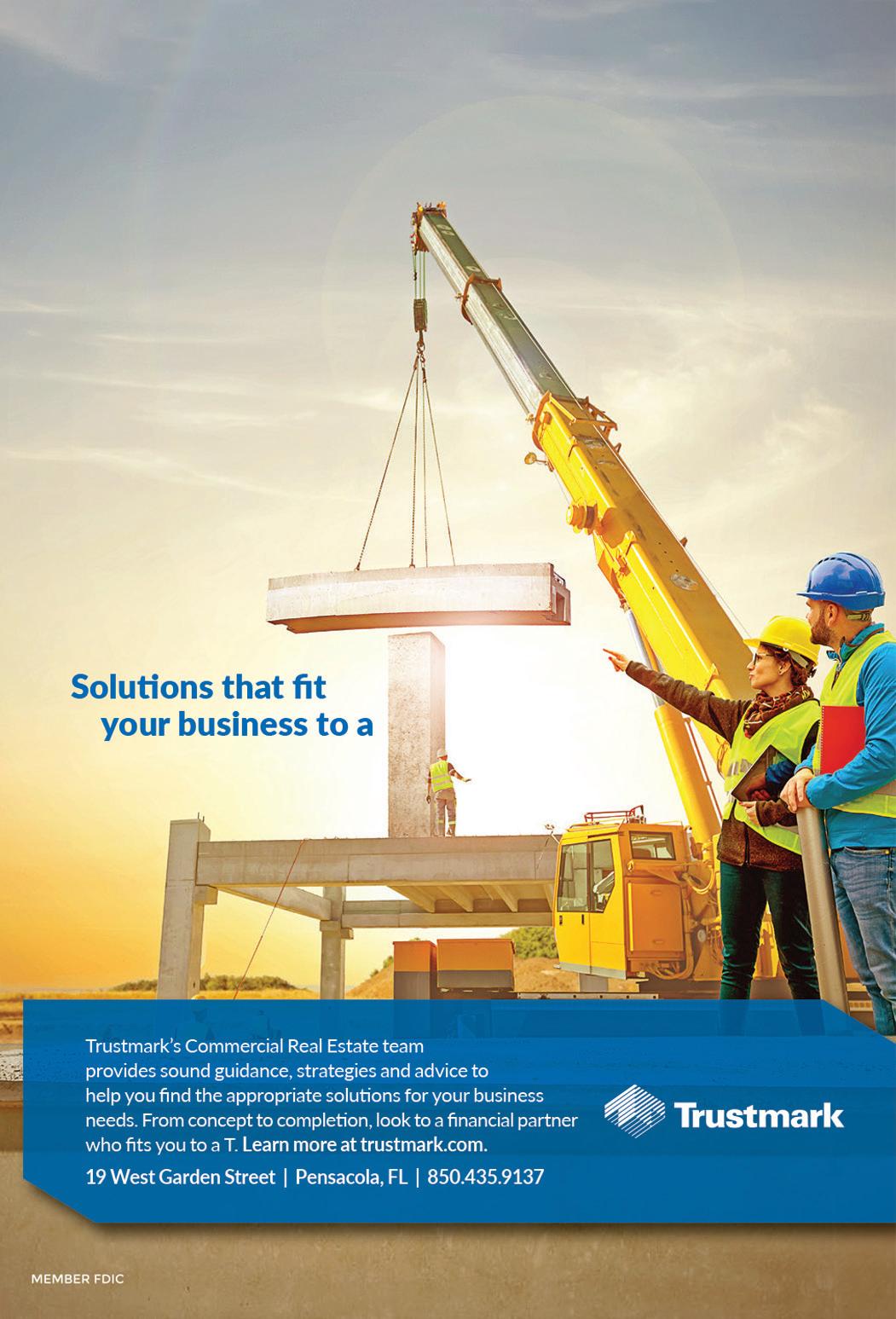

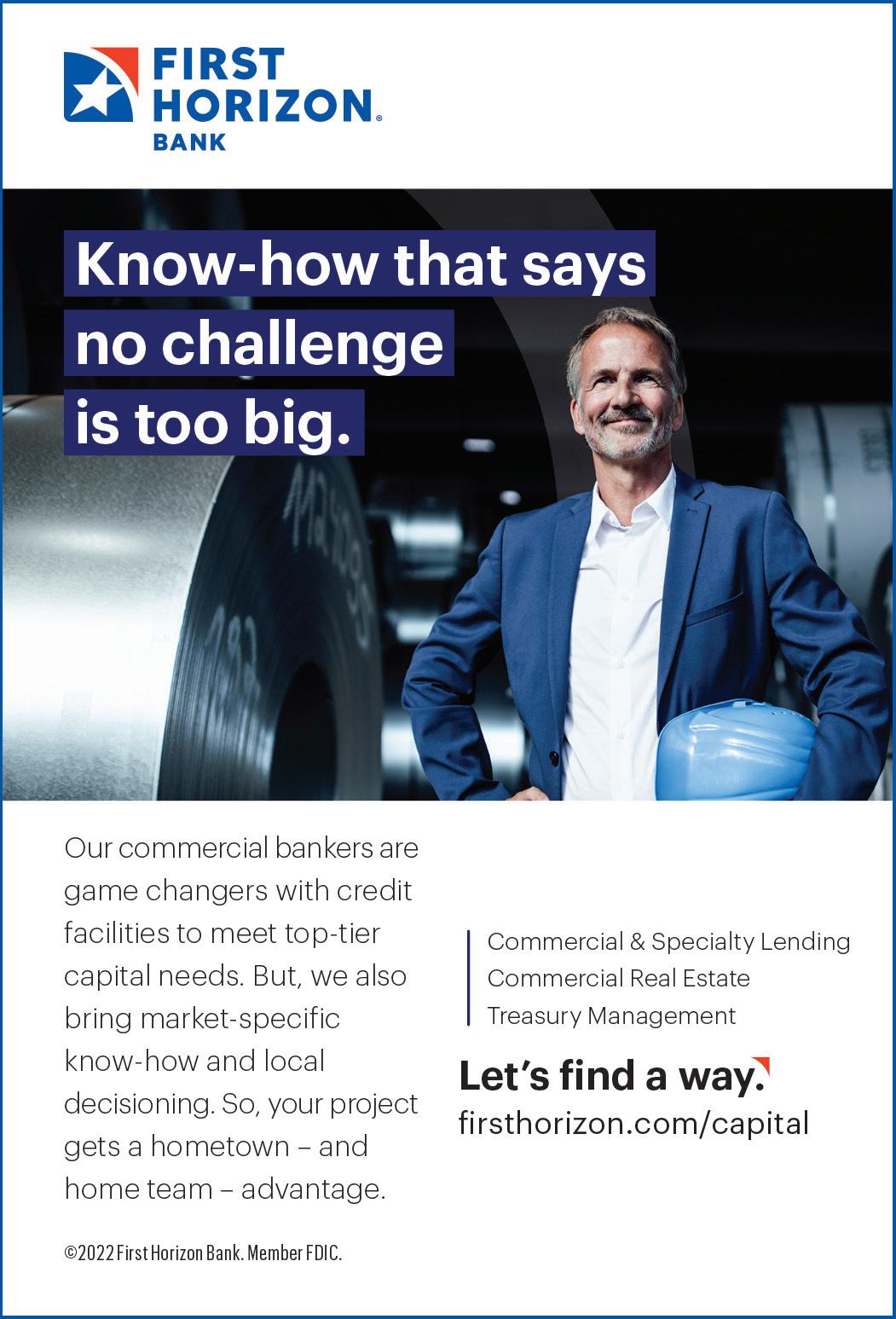
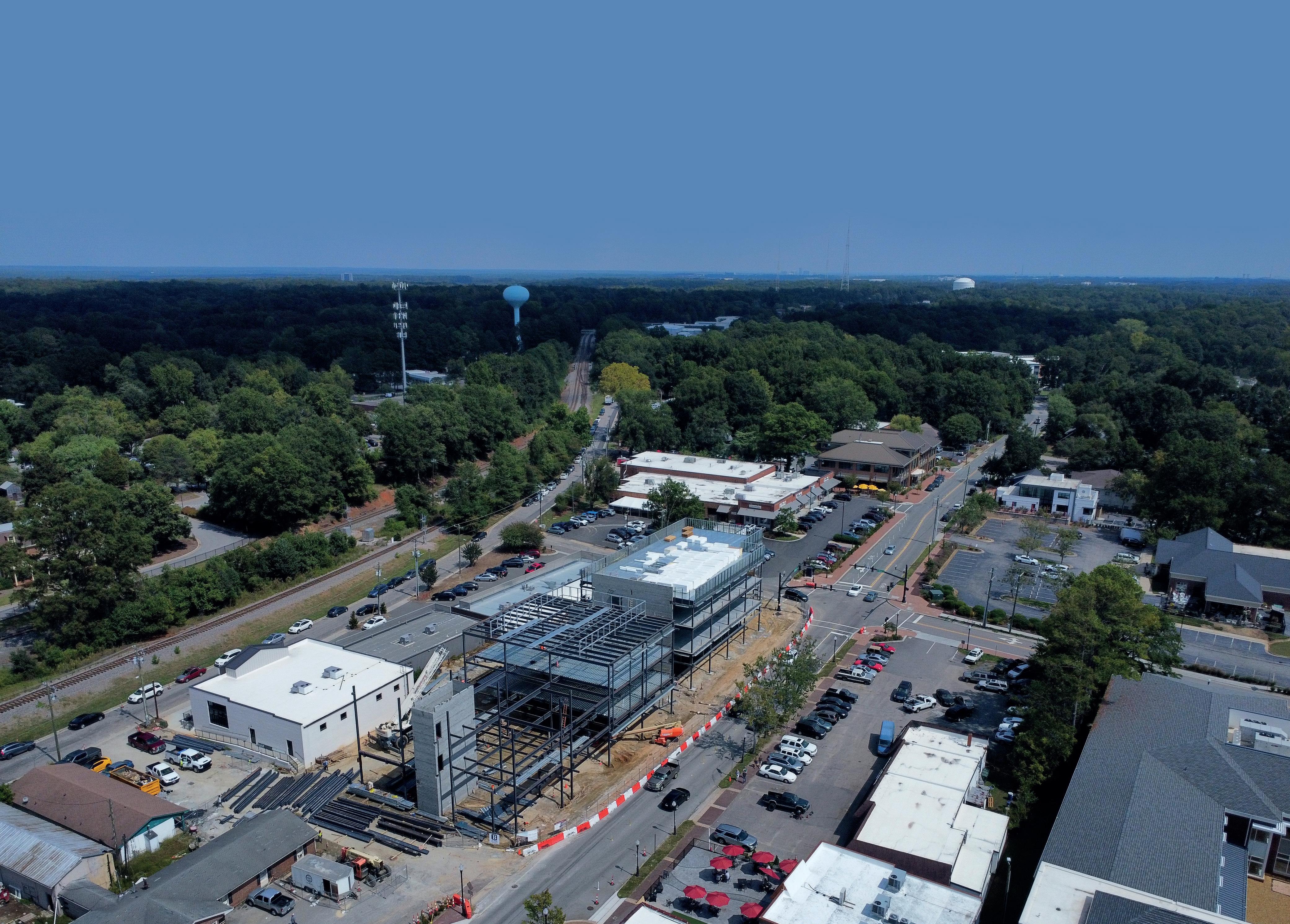 Two projects that best demonstrate JD Beam’s exceptional work in North Carolina
Two projects that best demonstrate JD Beam’s exceptional work in North Carolina
JD Beam has been operating for over 40 years, and during this time, the company has evolved exceptionally. “I am the third owner of the company,” begins Tom Antoine, the company’s President and COO. He, along with Chris Kelly, the Vice President, and Gabe Everhart, the Project Manager, share how JD Beam began exclusively in the hospitality industry, but has since expanded into a myriad of sectors including industrial, office buildings, and mixed-used as well as apartment and multi-family apartments. “We have also spent some time developing community centers and country clubs. Many of our customers have been with us since the inception of the company, and the same is true for our subcontractors, who have been partners and friends of ours since we started.”
When it comes to traits that separate the business from its competitors, JD Beam, which specializes in pre-construction, general contracting, construction management, and full design-build, prides itself on its relationships. The leaders share examples of the projects in which the company has excelled, and that best demonstrate how it works with its clients. “We do a lot of work that is classified as negotiated work. For instance, when a client comes to us with a construction project and a series of challenges that they want us to help overcome, we work tirelessly to exceed their expectations, and the two projects we’ll discuss, the Bentwinds and the Rogers Building, really typify that process,” says Chris.

The gentlemen are pleased to share that both contracts succeeded because they were tailored to customer needs. “Bentwinds approached us, which really speaks to the relationship we have within our community and in North Carolina, specifically. I believe that those connections have helped us push through some very challenging
times, including a hyper inflationary period, and product scarcity. As a result of this, partnerships have become even more important than they have ever been in the past and have helped these projects excel,” shares Chris.
The Bentwinds project began as an existing country club in North Carolina. The plot initially consisted of a pool, an old pool house and pump room. “Our scope was to remove everything and build a brand-new larger pool to bring it up to competition spec, with six swim lanes, and improve the overall aesthetic of the building. The pool house started with a larger, more ambitious design, and was set to include a fitness center and locker room,” he says. In addition, the company also rebuilt the tennis courts and created a tennis pavilion. “It was a beautiful site once we had completed the work,” Tom adds.
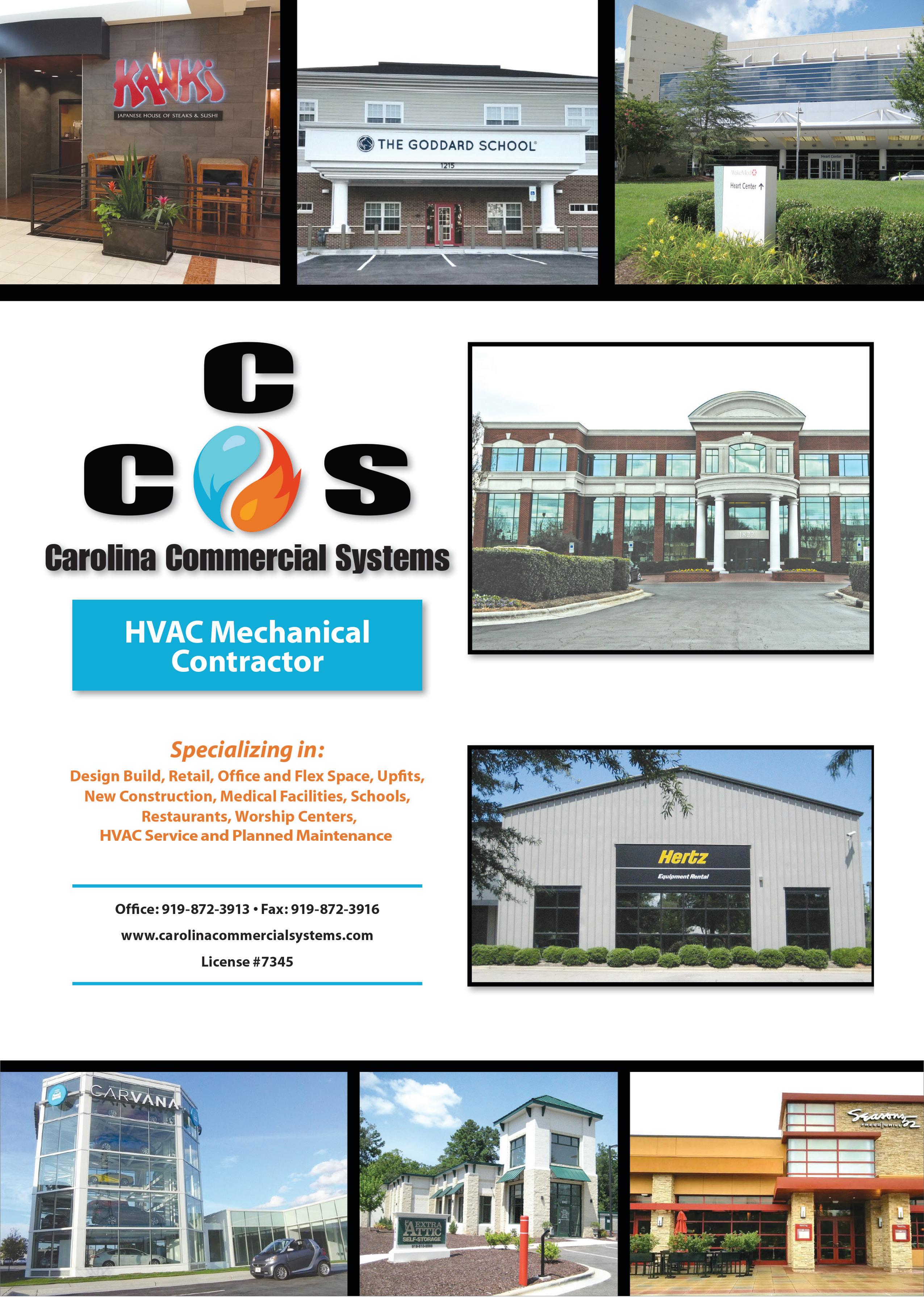
The completion of the overall project did come with its challenges, as we hear
 Bentwinds Country Club Pool House
Bentwinds Country Club Pool House
We recognize there are niche trades that are hard to come by, and we are assembling skilled craftsmen that handle things that other GCs don’t offer
“ “ “ “

from Gabe Everhart. “Supply chain was probably the biggest issue of all, alongside labor shortages, which unfortunately hasn’t eased. On top of this, we started this in a post-Covid-19 environment. Although we kept working, our ability to operate got progressively harder. While the owners worked through their finances to get ahead of schedule, I helped them identify some longlead items that we needed to get released. Through communicative collaboration, we were able to mitigate some problems, and ensure that the project remained as close to the scheduled completion date as possible.”
We then go on to discuss the Rogers Building, which Tom highlights is also a client the company has worked with previously. “We started with original budgets in 2019. One of the challenges that came up in 2021, when they were ready to start building, was that cost had increased by 25 percent. We helped the client with value engineering,

and we identified some areas where they could potentially save, which involved changes to their design. Again, this level of communication proved invaluable to ensuring that the project was completed on time,” shares Tom.
As the project’s start date began at the height of the pandemic’s subsequent supply chain challenges, JD Beam had to put its ability to pivot to the test. On this project, Chris explains the extent of the issues the company faced, and how the team worked to mitigate them. “We pre-ordered the steel roof and the air conditioning, for example, even though we were far from needing these items. This guaranteed that we would not have to wait when the time came to install them.
“Another challenge presented by that project was the soil, which wasn’t in the best condition. To solve this issue, we established a timber pile system that helped to stabilize
the ground. The building is essentially two towers that are three-stories-tall each, and share a common atrium that ties them together. We went about driving 365 piles for that project to support the building, and currently, we have installed the roof, deck, and about three quarters of the building’s steel. We are working on the final quarter, where we have also started the plumbing. The HVC is ordered and the roofing is going on now, with a projected finish sometime in the summer of 2023. All in all, I can confidently say that the team has done a fantastic job so far, and I am very proud of everyone who has been part of it,” expresses Chris.
It is clear from what these leaders have shared that the work JD Beam completes is exemplary, and there is also a great sense of gratitude from each of them for the team with which they work. The conversation then comes to a close on the topic of the future, and while they are excited about projects in the pipeline, these leaders are more focused on what lies ahead. “Our plan is to grow. We have a five-year plan that involves a new space for offices, and we have an opportunity in Cary to establish a satellite office, which we are starting to put in place,” says Tom.
“Another aspect we are focused on is the development of a self-performing contingent, and we augmented that through a recent acquisition. We recognize there are niche trades that are hard to come by, and we are assembling skilled craftsmen that handle things that other GCs don’t offer or other sub-contractors are reluctant to do. We see a need for these specialty installations, and we are tackling that aggressively by hiring self-employed folks to fill roles that will help push the company to its full potential,” Tom concludes. We look forward to catching up with JD Beam in a few years’ time to see how these plans have come to fruition. ■

www.beamstrong.work
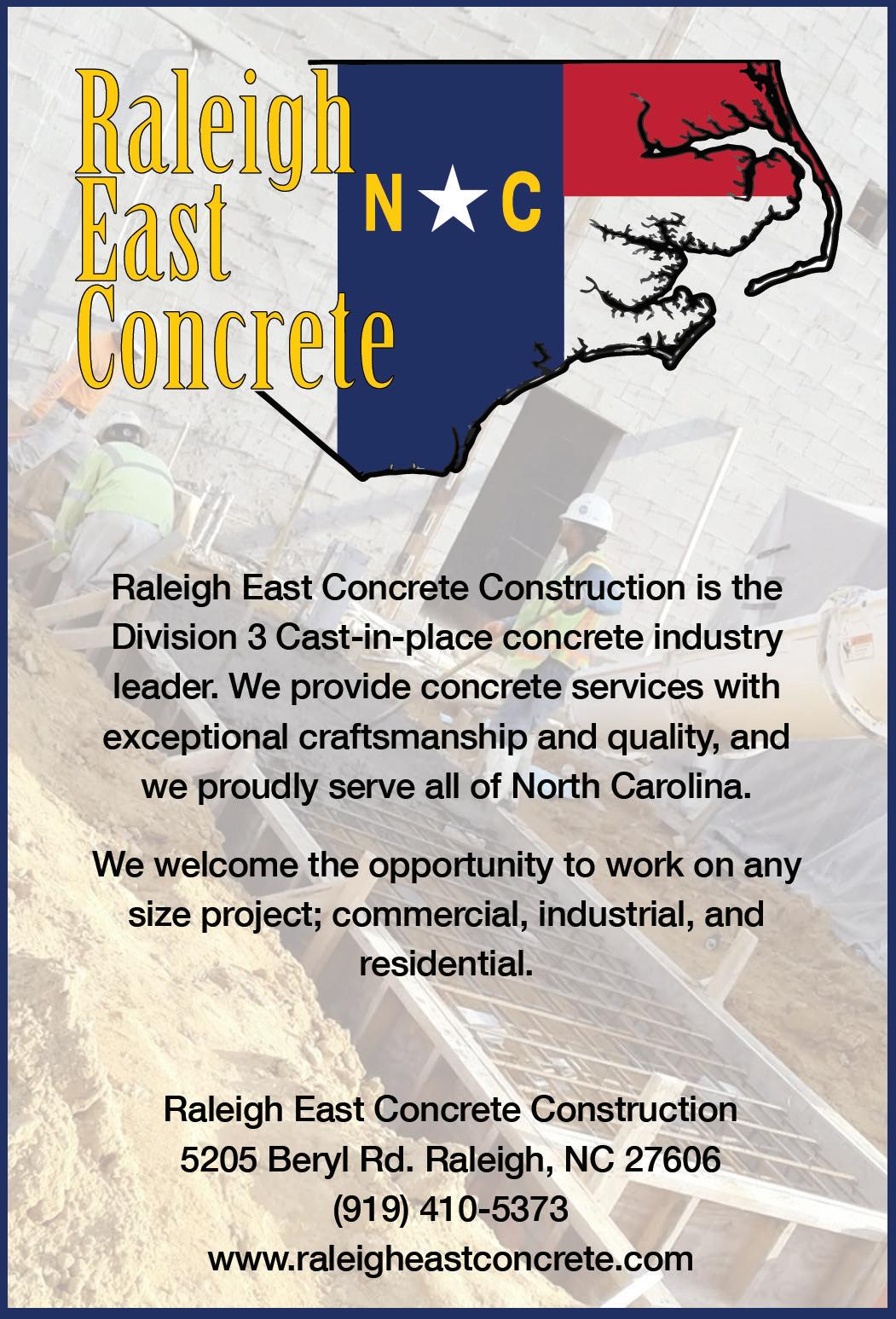
Harold K. Jordan & Company (HKJ) is a general contractor that specializes in both public and private, multifamily residential communities and commercial housing. Founded by Harold K. Jordan in Apex, North Carolina, in 1989, the company has grown to include offices in Wilmington, North Carolina, and Myrtle Beach, South Carolina.
Despite decades in the industry, the last couple of years have seen the business thrive exponentially to grow to almost double in size from $150 million to $300 million. As Director of Business Development, Scott Niebauer, explains: “We have been fortunate to sustain a large growth pattern while we experience growing pains from it. Finding new qualified staff has been a challenge, and right now,
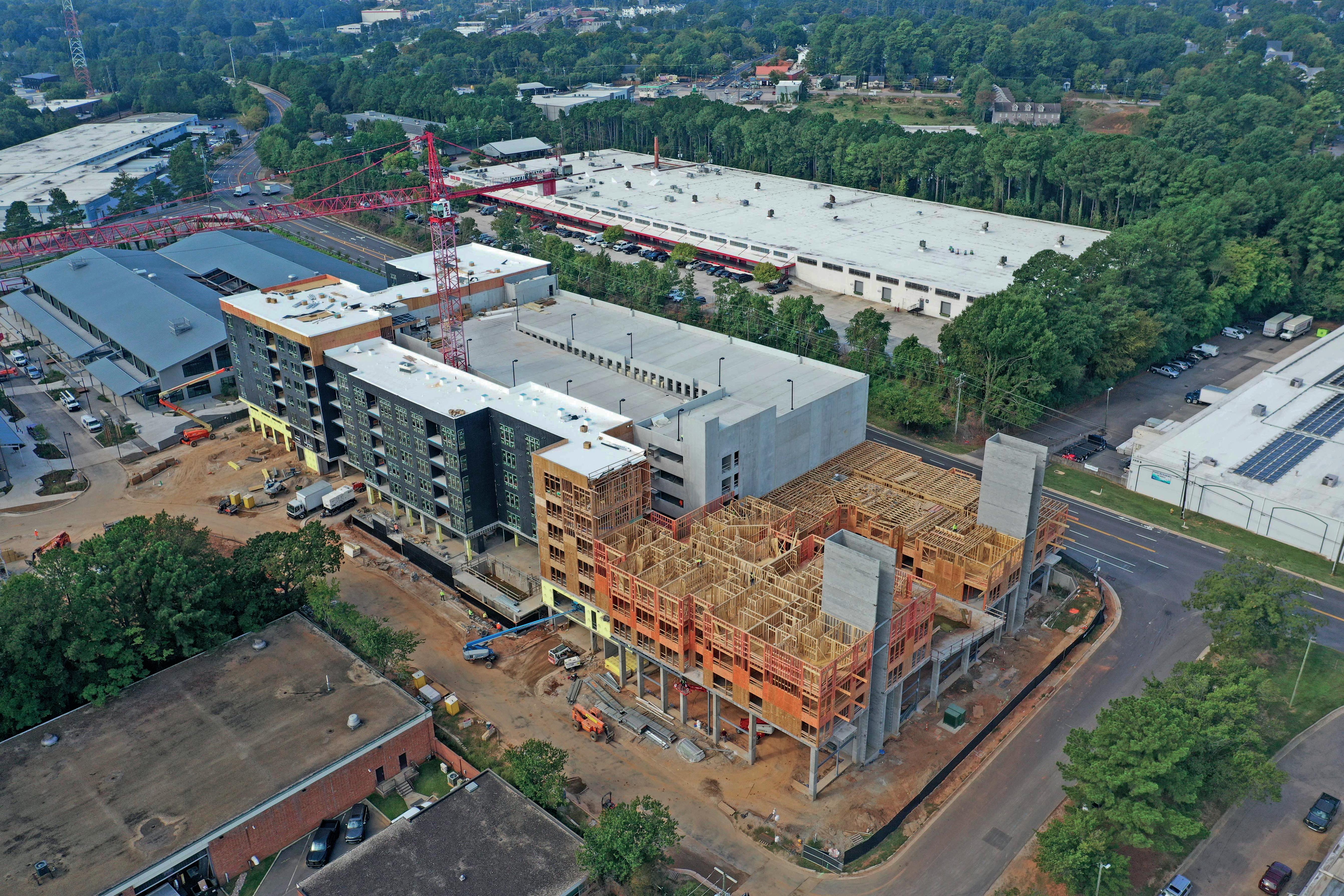
How Harold K. Jordan pivots to keep pace with the changing face of construction
it’s all hands on-deck. Most of our clients are repeat customers, and we have managed to maintain those relationships and our reputation throughout the growth process. Of course, there have been challenges, particularly surrounding schedules, pricing and the supply chain. As a third-party contractor, we are at the mercy of our clients’ and partners’ schedules. From architects and engineers to local municipality inspection departments, everyone, like us, is busy. Our goals require tighter management of schedules and trying to complete our projects as quickly as possible. We’re always innovating to resolve issues for our clients.”
Scott is proud of the service HKJ provides. From simplifying the construction process to completion and handover, the business strives
to ensure seamless project delivery. “We always make sure we meet and exceed the expectations of every single client. What sets us apart from the competition is, we are able to finish the job. Most contractors can achieve 95 percent completion, but always seem to struggle with the last five percent. We don’t have those struggles. We achieve 100 percent,” he enthuses. “Our goals are to turn over units during construction, so our clients obtain income to pay down the interest from their loan. This process requires extensive planning and execution.”
One recent project is The Artreaux complex in North Carolina. Located in the Industry Hill neighborhood, in Winston-Salem’s downtown arts and entertainment district, the 242-unit complex boasts five stories with a parking deck. Scott elaborates: “Right now, we are in the finishing stages of that project. We are framed up, the roof is on, exterior façade almost completed and the subcontractors are currently finishing in the interior units. We are very close to substantial completion leading to a final CO.”

An equally exciting project is The Residences at Glenwood Place. This 275-unit, high-end project promises a superior aspect and finish, as reflected in the top-end market rates. The Residences at Glenwood Place has contemporary architecture, unrivaled amenities, local retail, and a beautiful landscape design. It is located inside the beltline and connected to the Greenway in the heart of Raleigh. This multifaceted lifestyle destination with airy, thoughtfully finished apartments places residents in the middle of The Triangle’s finest culture, cuisine, and entertainment. This is truly one of the best projects HKJ has built.
Accomplishing the impressive scale of these projects involves collaboration. As Scott explains: “We work closely with our clients and their design teams to accomplish their vision. There are always initial expectations of their vision, and while we work to achieve those expectations, we always must factor in additional changes or considerations due to the increasing cost of materials. For the project to be successful,
we need to ensure the design aligns with the proposed budget.”

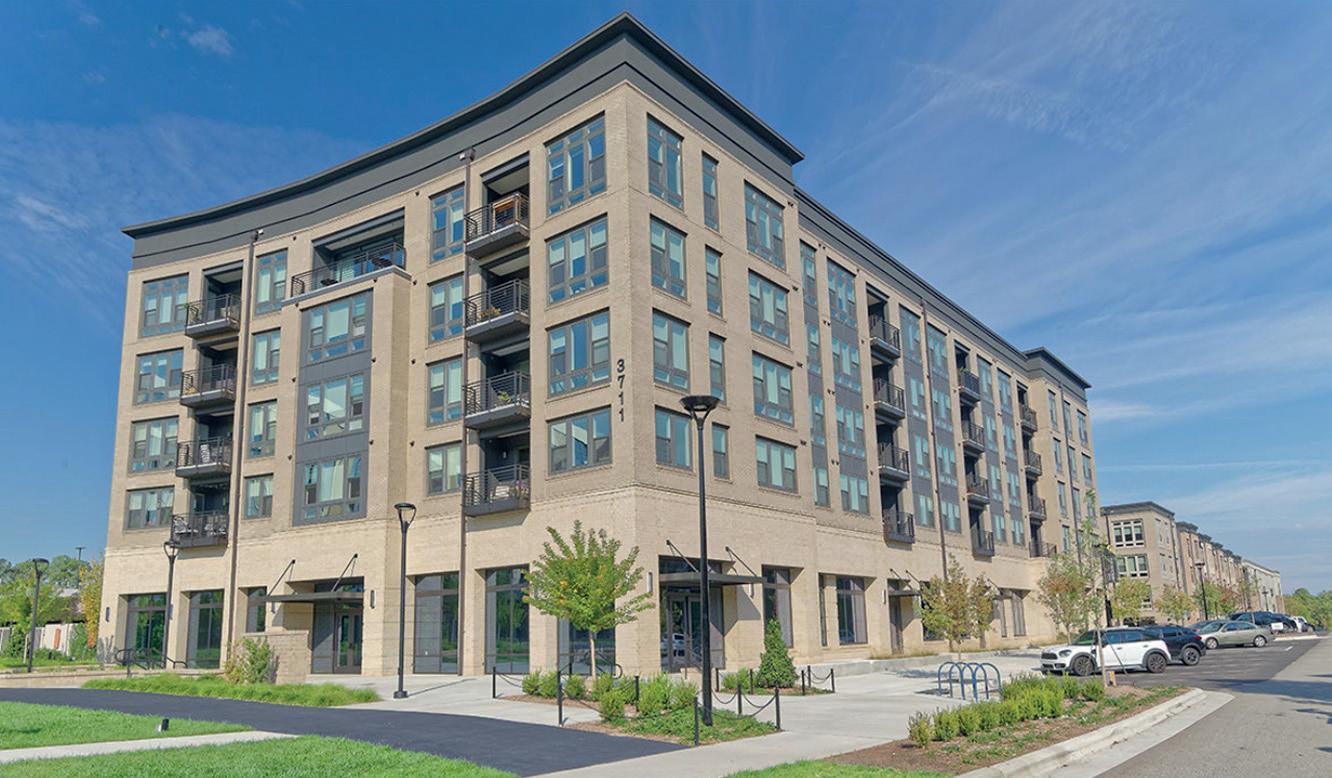

This unique way of working filters down to all members of staff and is cemented within the company culture. “We don’t micro manage our employees,” Scott highlights. “We have an expectation that they will represent HKJ, at its finest, and we allow our people the freedom to work on a project. Our employees are empowered to take ownership and make decisions to accomplish our tasks. Challenges are presented on every project. We focus on resolving those challenges early and proceed
with meeting our goals. While our culture is generally laid back, we are focused on getting the job done.”
This culture of ownership and empowerment is reinforced and rewarded with staff benefits. Scott continues: “Our employees have great benefits. We offer competitive pay, insurance, 401ks, and great potential to advance within our company. We make sure our people feel valued and reduce turnover within the company. Our staff are truly a talented group that enjoy their careers with HKJ. HKJ is committed to creating the best work environment – a place
where everyone’s voice is heard, and where communication, feedback, and employees are free to talk with any manager at any time about any topic.
“We also hold an annual event that includes announcing awards based on health and safety achievements. We are a safety-driven company and are always looking out for the best interests of our people. We believe it is important to recognize achievements of our talented employees.”
The pandemic is a pertinent example of a pressing health and safety situation, and HKJ responded with the safety of its workforce in mind. As Scott explains: “From face coverings to testing, we paid close attention to what was required of us, and that attention extended to our sub-contractors. It was a challenging time. Communication became key to the successful management and control of the infection. While we’re getting back to normal now, we’re still feeling the effects of that time.”
The supply chain was hit hard. Materials and delivery delays and availability forced the business to reassess its procurement and planning processes. “The pandemic caused attention to potential scheduling and procurement issues. We took the necessary steps to ensure materials were secured for our projects. This included subcontractors and labor in our process. As mentioned before, it’s been all hands on-deck, with existing staff working across multiple functions, hiring more people, and opening our vendor relationships to reach out to other subcontractors. The rising price of materials and labor has been a challenge. In some cases, we’ve had to renegotiate contracts to account for those increases, and this can only happen with open communication across the board.”
With three new projects in the pipeline, and currently, at full capacity, business doesn’t look set to slow down any time soon. Looking to the future, Scott believes that multi-family housing will continue on its trajectory. “Primarily
because interest rates are increasing, it’s making it tougher for individuals to move into single family homes. However, as things stand, at some point, the market will drop. What’s going to happen when it does, is something I can’t predict. Five years from now however, I would like to think that HKJ will have the same clientele. While we strive to secure new clients, our current customers are ecstatic with the work we do, and our ongoing projects with them leave little capacity for widening the gene pool. One challenge, which is out of our control, will the banks continue to lend to commercial construction? I think contracts will still get signed but the loan structure will be different. In the next five years, we will continue to grow, but perhaps, there will be a greater concentration of affordable housing, as well as alternatives for new market rate product.” ■
www.HKJconstruction.com
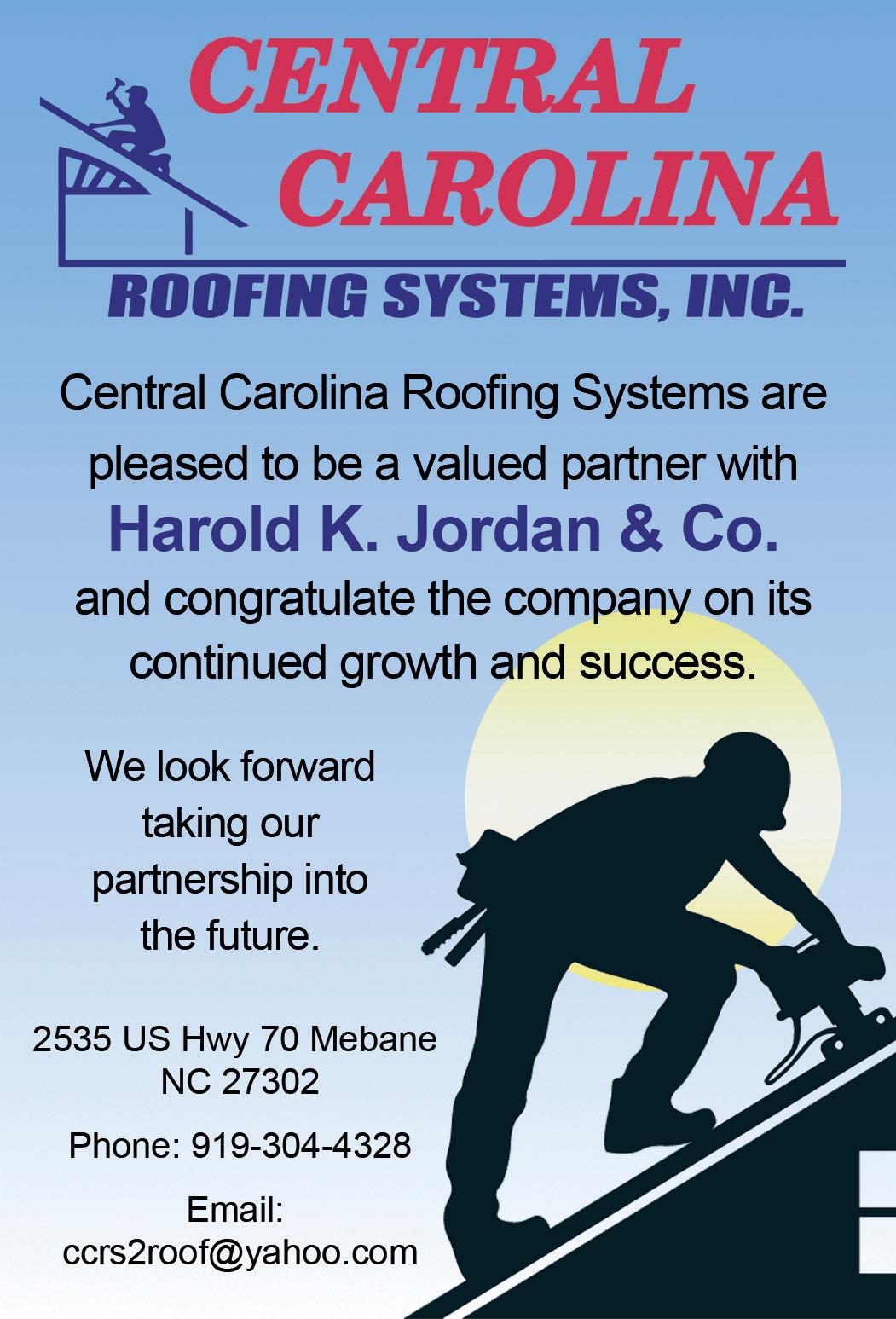
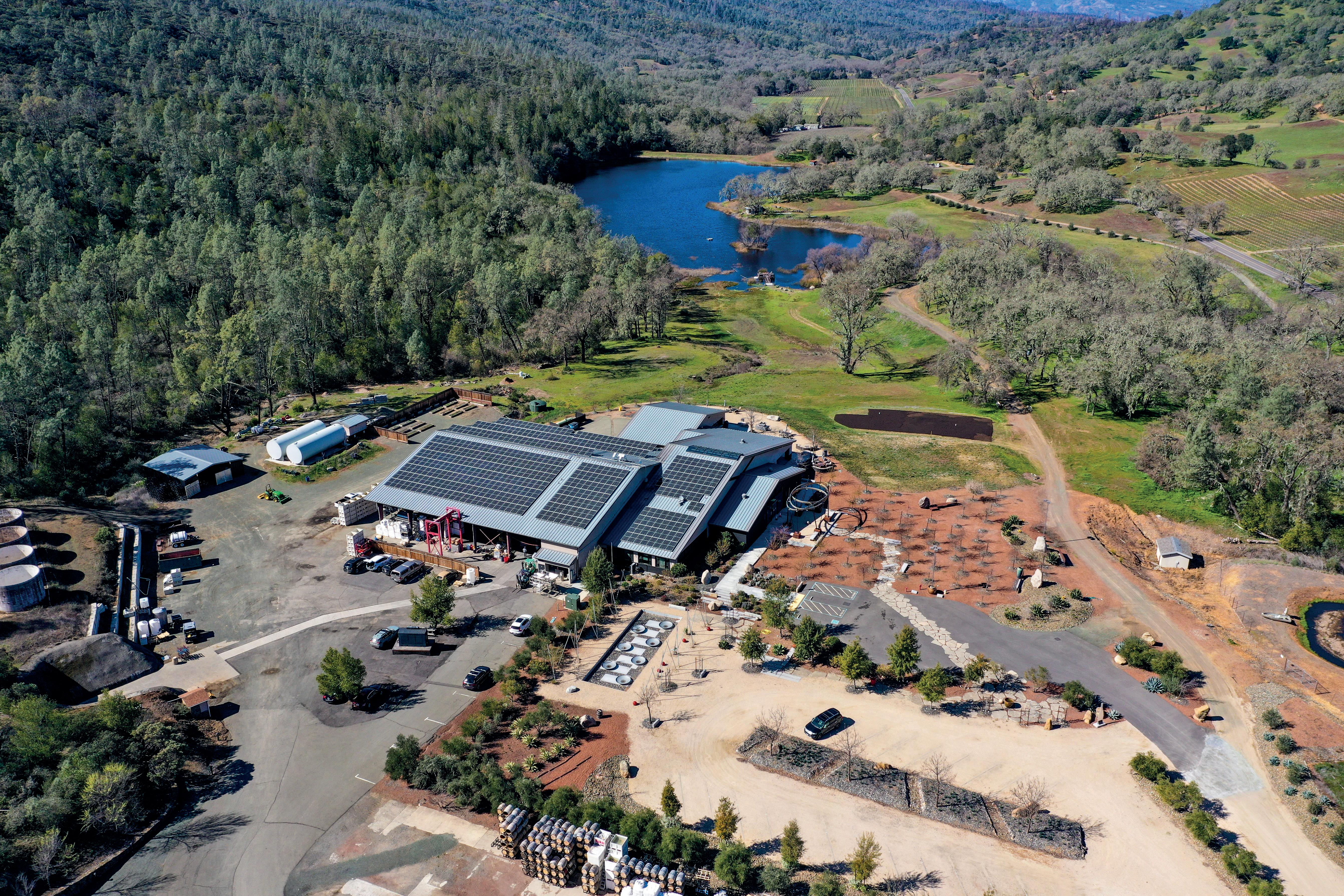

How Sunworks is bringing power to the people, one enterprise at a time
Sunworks, Inc (Sunworks) is a publicly traded NASDAQ company based in Utah, which has been operating as one of USA’s premium providers of high-performance solar power systems for over 20 years. Its glow extends further than your average company; as it aims to brighten the lives of the many people it comes into contact with, whether they are customers, peers, suppliers or strangers-in-need.
“There is something very rewarding about working in an industry that is inherently environmentally-friendly,” states Gaylon Morris, CEO and board member for Sunworks, Inc. Sunworks is intent on the democratization of renewable energy by making it available to as many people as possible. It would seem the world is on the company’s side, considering the change in attitude towards global warming since the millennium, and there has been a number of supportive external factors too, as Gaylon explains: “The viability of employing a solar energy system has increased for most people, due to a number of reasons. The first being the increase in the overall energy yield available from a given area of rooftop or land. This is a result of innovation in technologies and materials, which has seen panels more than doubling in efficiency over the last ten years. Secondly, the return on investment has been increasingly highlighted by the rise in utility bills – people are growing more aware of the extent to which they can offset their energy costs by relying on solar power. Combined, people are starting to see how you can essentially profit financially from your house, building or land. Besides this, in terms of residential customer-desirability,” he adds, “the modern panels are far more discrete than their predecessors. Formed of a blend of glass and black anodized aluminum, they disguise the trace-work and provide a far more aesthetically pleasing alternative.

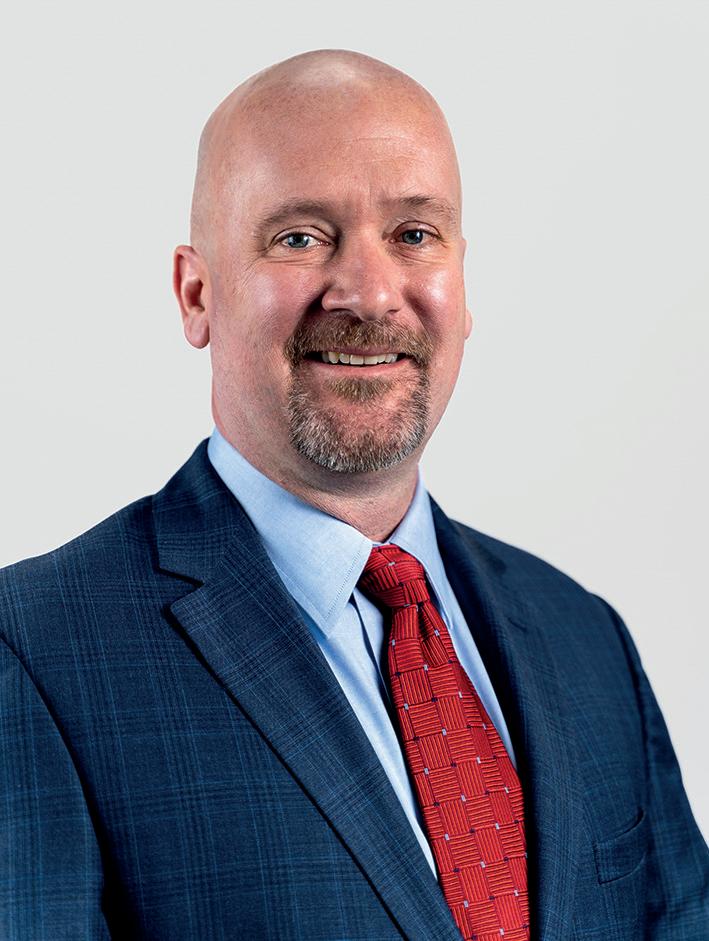
“The company’s fundamental product offering is our solar power systems, battery storage units and Electric Vehicle (EV) charging ports. But at heart, we’re a service business,” he continues, “What we really believe sets us apart is our integrity and professionalism. We price our projects with the fairness and honesty, with the intent of always providing the very best value for our customers.”
In last year’s acquisition of its likeminded competitor, Solcius, Sunworks succeeded in extending its reach to an important new area of the market. “They were primarily a residential company, which gave us an excellent opportunity to develop our residential footprint throughout the USA,” Gaylon details. “Both organizations are focused on paving the way towards the democratization of renewable
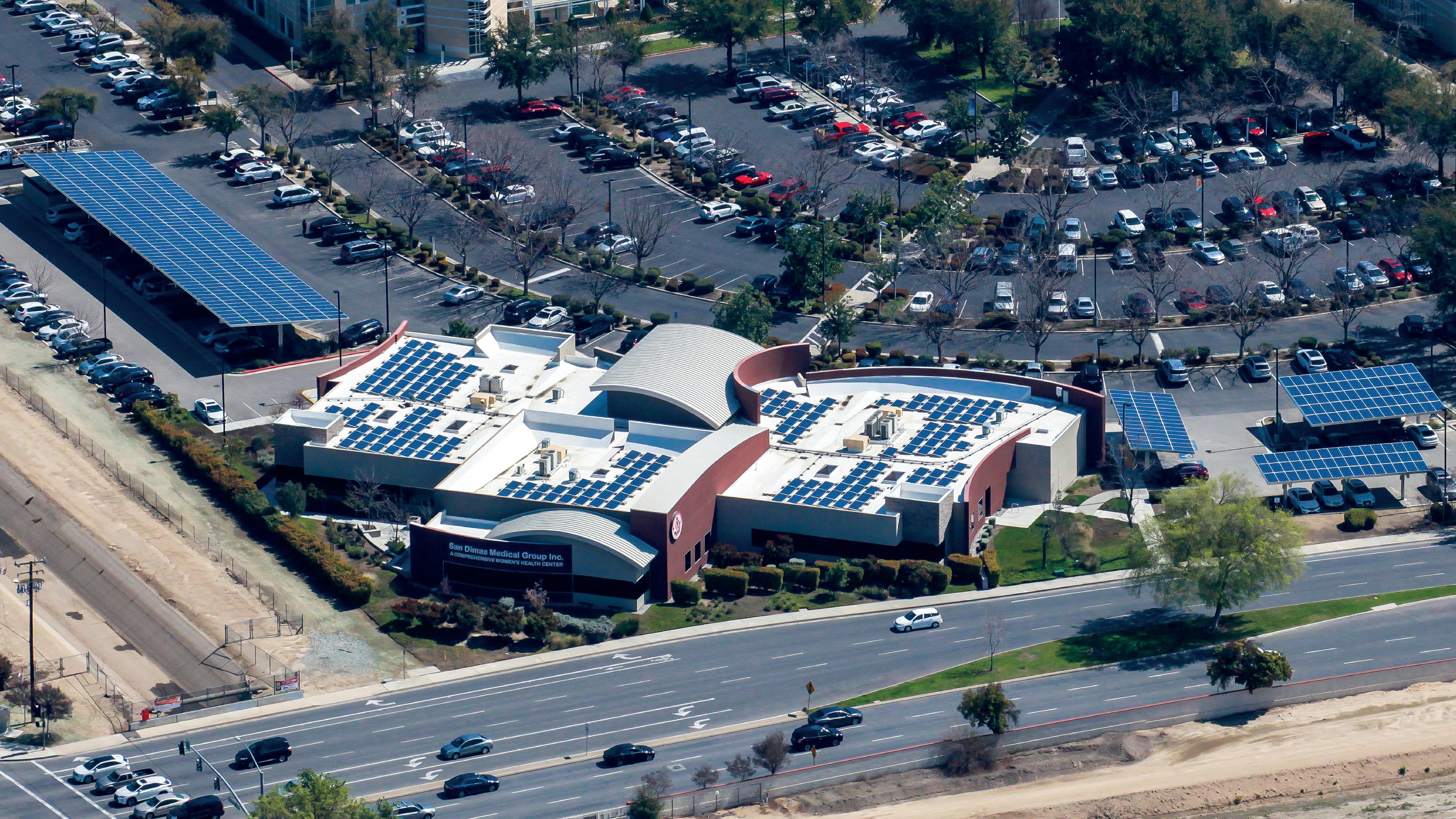
energy.” In terms of growth, Sunworks believes in taking a more responsible, holistic approach to expansion – with the aim of maintaining the company’s overall viability by increasing shareholder value simultaneously with its size.
With sustainability and green initiatives climbing higher on everybody’s agendas, there have been legislative changes made in the US to encourage people to shift their reliance over to renewable energy sources. Earlier this year, the President signed the Inflation Reduction
Act that increased the Incentive Tax Credit for Solar to 30 percent, which in Gaylon’s words: “is the farthest reaching and most dependable that our industry has ever seen, extending and enhancing a 30 percent tax credit for homeowners and some non-residential projects until 2032. This has been a tremendous tail wind for our industry and it’s in part due to public sentiment, and our customers and others driving the government to act in favor of solar,” he explains. “We provide our customers

We love the idea of being able to help people minimize their impact on climate change “
with the ability to reduce their grid supplied electricity usage. In doing so, they also lower their utility bills and begin the journey to offsetting their carbon footprint. We love the idea of being able to help people minimize their impact on climate change.”
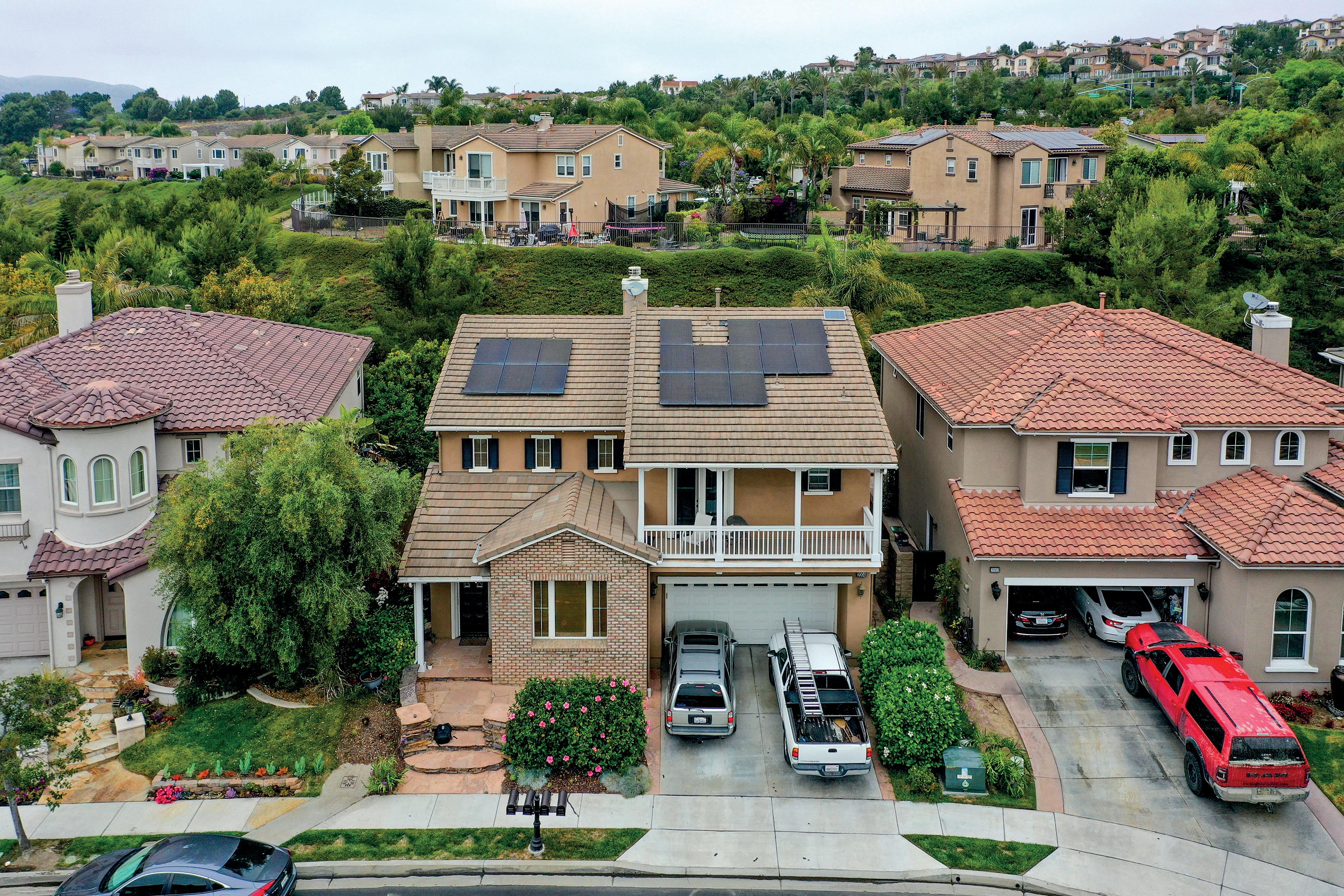
A little closer to home, Sunworks has its own approach to managing the immediate environment in which it operates.
“We have created our Environmental, Social and Governance (ESG) task force as part of our program –which includes, from the bottom up, an employee from all
levels of the company. The committee is in place to primarily suggest, but then also work through, changes that we can make to ultimately be a better company. These can range from the likes of housekeeping around the office, to ways in which we can improve peoples’ work/life balances and includes efforts to reduce the company’s carbon footprint.
“Another more tangible issue the ESG has remedied is the recycling of damaged or aged solar panels – whether they have arrived from suppliers in an unsatisfactory condition, been damaged during installation or removed from a customer’s system during the retrofit process. As with old computers that are no longer viable, we work with one of our vendors to try and find other possible uses for the components of these panels,
“ “ “ “
to avoid sending unnecessary waste to landfill. We also recently implemented a supplier’s code of conduct, on which we are asking our suppliers to sign off, to provide assurances that they are operating with the
same integrity and respect for their workers and the environment as us.”
Caring for the planet takes much more than sourcing a safer form of energy for the future, looking after the best interests of your staff or employing the absolute best practices in dealing with customers. Of course, Sunworks knows this and focuses on good planet stewardship in its day-today operations. The company orchestrates an annual trip, during which a team of partners and employees travels overseas in the name of a noteworthy project. Whether it’s finishing construction on a park, helping tackle food scarcity or illuminating a town with solar lanterns, Sunworks cares, and it endeavors to demonstrate that fact in everything it does. ■
www.sunworksusa.com
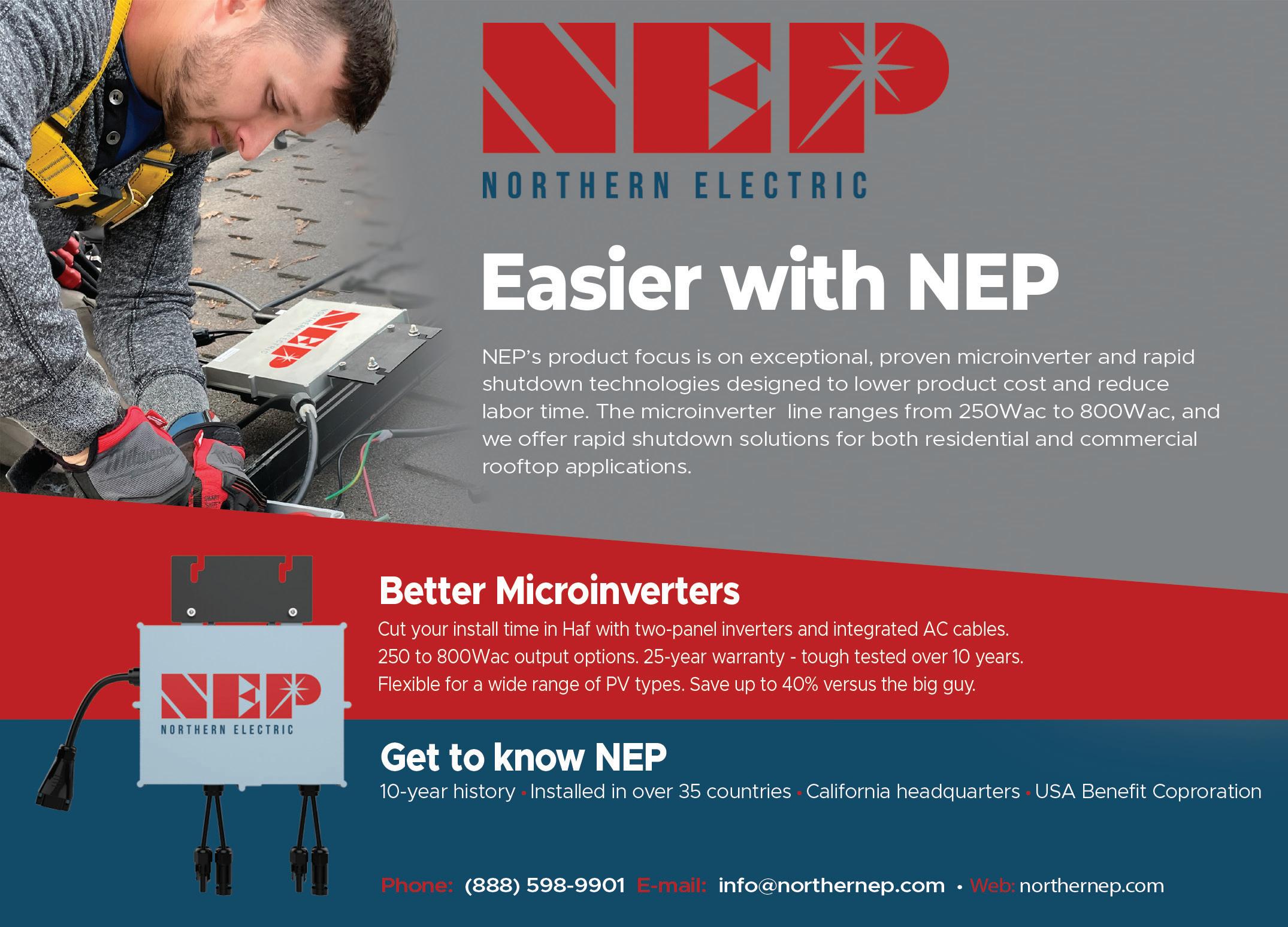
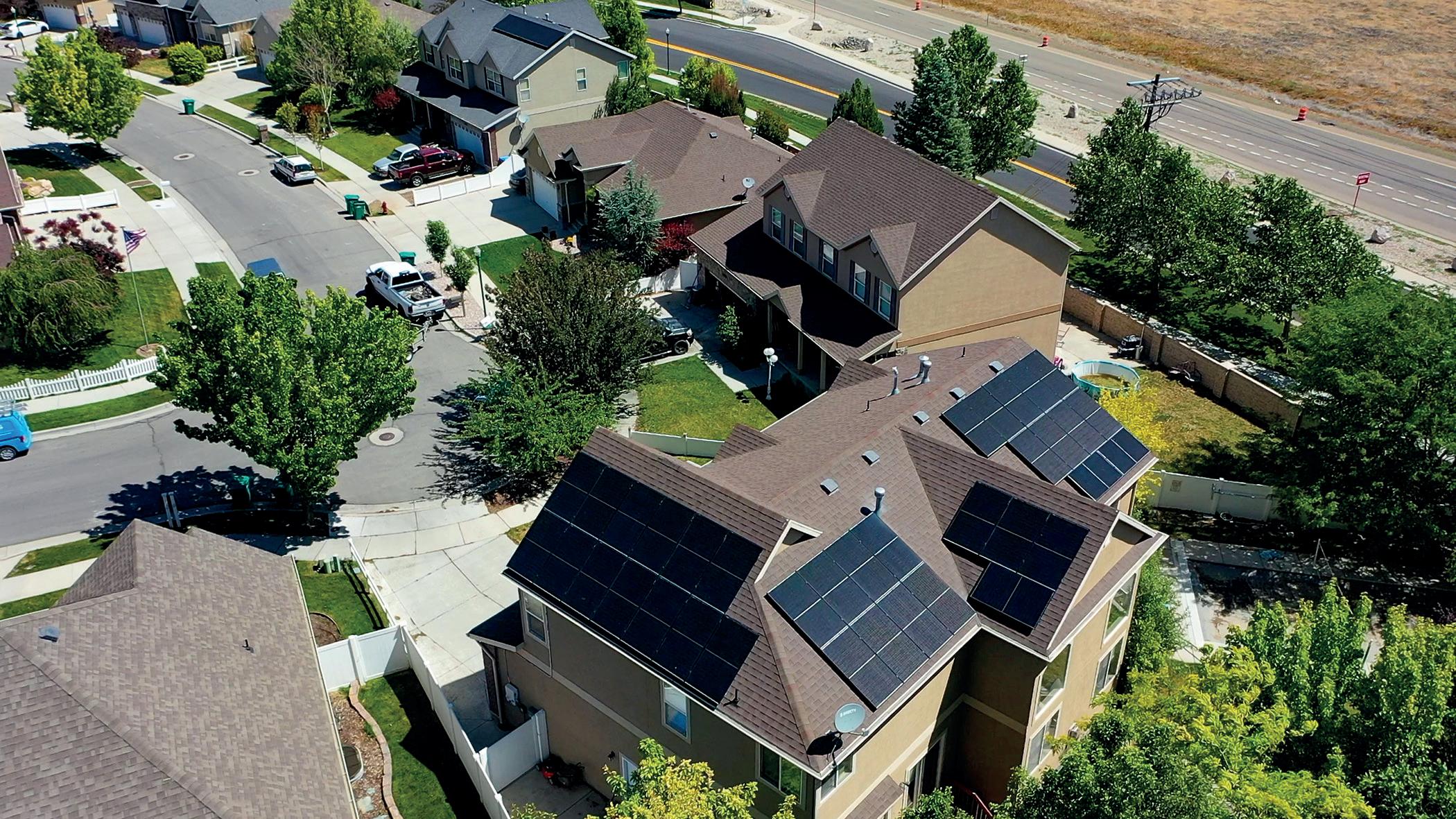
Walters Group comes from humble beginnings. Back in 1956, the company was started by Walter Koppelaar Senior and his son, Nick. “It began as a small ornamental iron workshop, making handrails and repairing farm equipment. The business has since grown to specialize in building skyscrapers and prominent architectural structures, which has been quite transformational,” shares Sam Barrett, Vice-President of Preconstruction. Walters Group remains family-owned to this day, with family members actively involved in the daily operation. “We like to say we are a small company doing big things. We have great coverage and a fantastic reputation within the industry, of which I am very proud,” Sam says.
In the industry, Walters Group is known for complex steel design, fabrication, and construction of commercial and industrial projects across North America. Walters excels in environments where an additional level of complexity is required. We have great people here, and we place a strong emphasis on planning. If we haven’t already prepared for the job before we appear on site, then we haven’t done it right. This approach means we get to push boundaries on some of the developments, and prepare for any possible challenges,” he expresses.

With a catalogue of projects, Walters Group has tailored a culture of excellence in one easy step

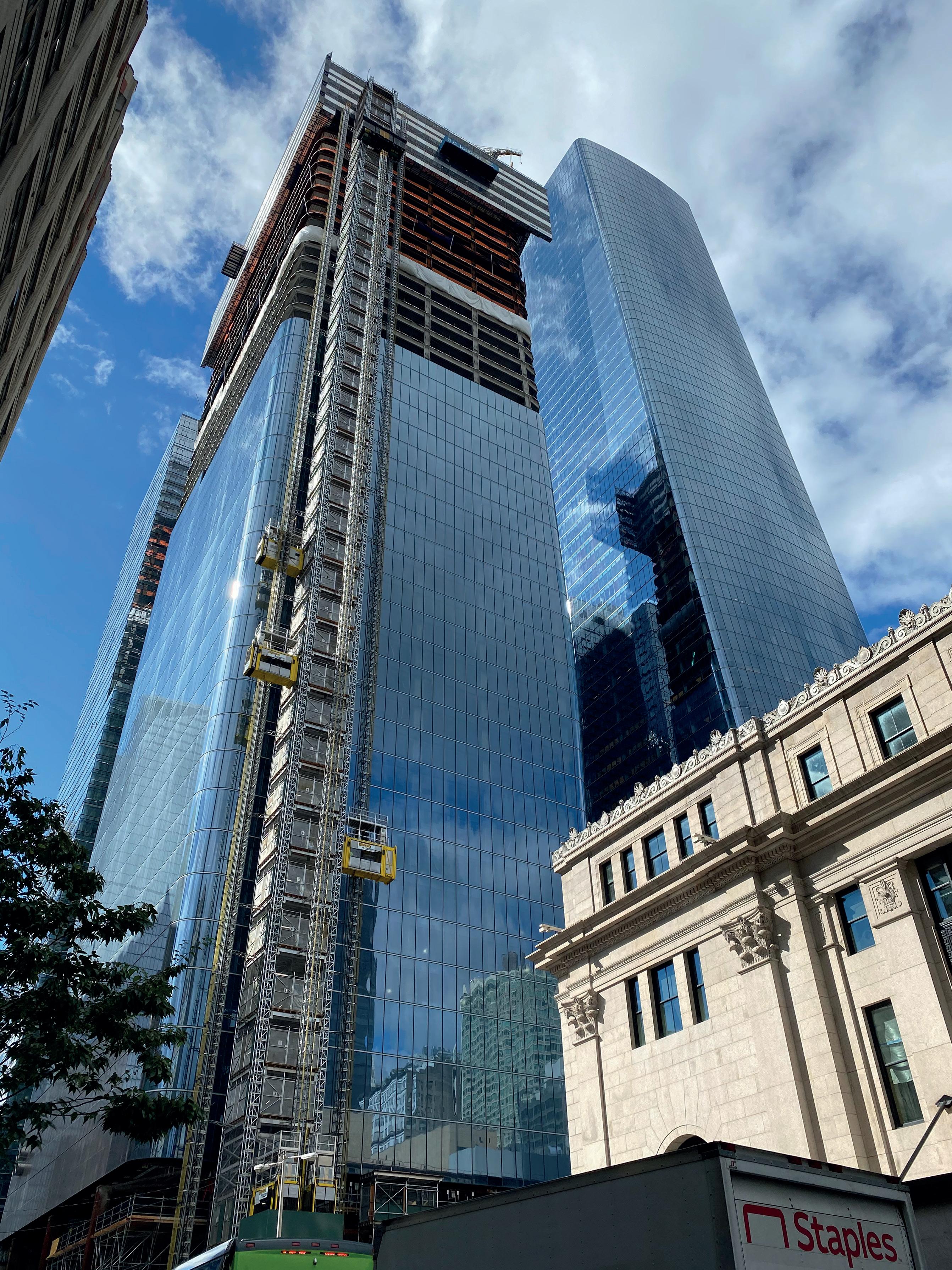
Four years ago, the company built its first robotic plant. At the time, the move was an impressive technological advancement for Walters Group. “We were one of the first adopters in North America of this level of innovation. We bought two assemblers; one for Walters Inc. on the Canadian side of the border, and one for Dave Steel company, which we own under Walters Group with plants in North and South Carolina.”
Since then, the business has only continued to grow, and now boasts an exceptional level of expertise. Sam shared some of the projects of which the business is most proud. “We’re proud to be part of building history, including: Two Manhattan West, the southeast tower, for Brookfield Property Partners in Manhattan, the largest project in our company’s history; the Canadian Museum for Human Rights and West Block Rehabilitation Project, with our valued clients PCL Construction in Canada; and in the US, for Turner Construction Company, the David Geffen Hall Restoration, and 550 Washington Street to name a few.

for master builders in North America. To achieve this, he shares how the business is focused on bringing in the best talent, while utilizing its industry-leading innovation.
“We want to apply best practice across all aspects of the business, while striving for long-term trust as well. Whether it is with customers or loyal suppliers, we want to be mindful of the effect of our work on those around us and aim to deliver outstanding customer experiences. This mentality is driven by our core values: being a team player, having a willingness to learn, humility, good communication, passion, accountability, a ‘get it done right’ attitude, and investing in relationships. Therefore, it is our focus to make sure folks have the information to make the best decisions, which will not only benefit the client, but also our business as a whole.”
The key to success at Walters also includes longstanding partnerships with companies like A&H Custom Machine (A&H) in Burlington, Ontario and Motioneering in Guelph, Ontario. Metropolitan Walters, a Walters Group Company, worked closely with A&H to install the largest Tuned Mass Damper (TMD) built for Central Park Tower at 217 West 57 in New York City. Central Park Tower is currently the tallest residential building in the world, standing at 472.44 m.
For Sam, staying true to the Walters family’s heritage is crucial, and his vision is for Walters Group to become the industry standard
The company’s deeply rooted culture has led it to receive a selection of awards, including being named as one of Canada’s Best Managed Companies - Platinum Status. “That is a wonderful accolade,” shares Sam. “Another one we are proud of is ‘Great Place to Work’ certified. We were active in making sure every member of staff had the opportunity to share how they felt about working within the business and respond to feedback shared. This project began nearly four years ago.
“We are focused on continuous improvement and being agile in the face of emerging trends, transforming the way we work, fabricate, and install final work. From my perspective, by investing in the best interests of our team, we are furthering
From my perspective, we want to bring on the best people to support our clients and continue to grow a strong company in an organic fashion
“
the success of the business, and that is something of which I am still immensely proud,” shares Sam.
In mentioning the continued success of Walters Group, Sam then focuses on plans for the future. For him, the journey looks promising, and he is keen to see the company reach its full potential. “We have a strong backlog of work, which is good. However, we are always conscious about
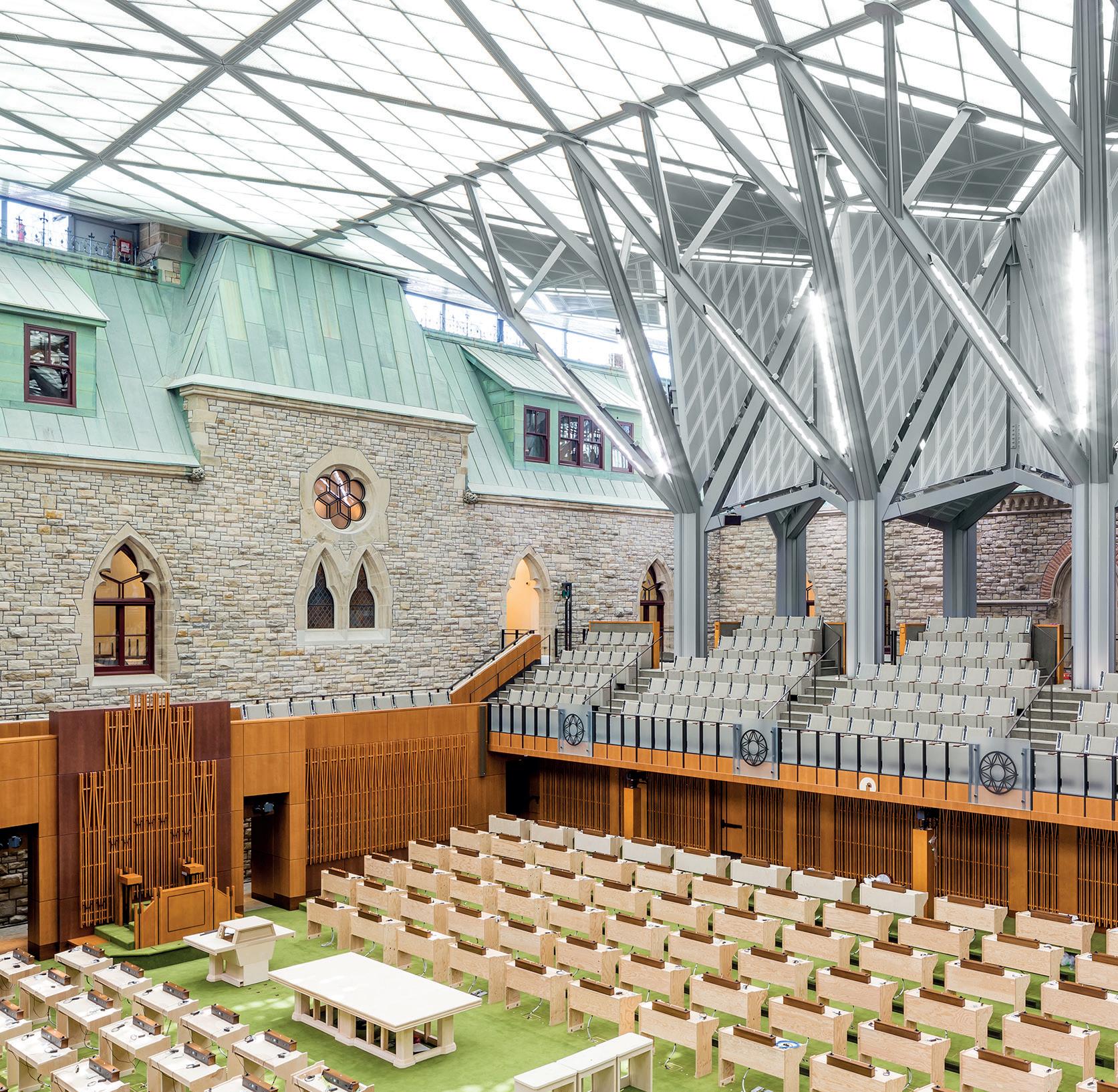
our next steps, and strive to avoid complacency. We are active in our pursuits and investigate the market to identify opportunities where we can add value, opportunities that align with our business capabilities and objectives.
“With the crazy rise in interest rates and cost of borrowing going up, I am hearing various tenants getting cold feet. Although this is a concern for some of the projects
we are working on, there is little we can do to control the situation. We need to keep in mind that there is still loads of potential in this industry, despite the reality that some developments will be shelved or temporarily postponed. We are taking into consideration each of these factors to get through the next few years,” he highlights.
Sam concludes by sharing that, despite the challenges, Walters Group will continue
to push the boundaries regarding its innovation, while remaining grateful for the journey that brought it where it is today. “We need to keep putting one foot in front of the other. From my perspective, we want to bring on the best people to support our clients and continue to grow a strong company in an organic fashion. Every day is new and very exciting, and I am pleased to mobilize the prospective journey ahead.” Sam, who has been a leader for the business for quite some time, concludes by emphasizing how much he enjoys the work he and the team at Walters Group do. He is especially optimistic about the company’s team culture and how it will remain an integral part of the business’ success, building history in the years to come. ■
www.waltersgroupinc.com
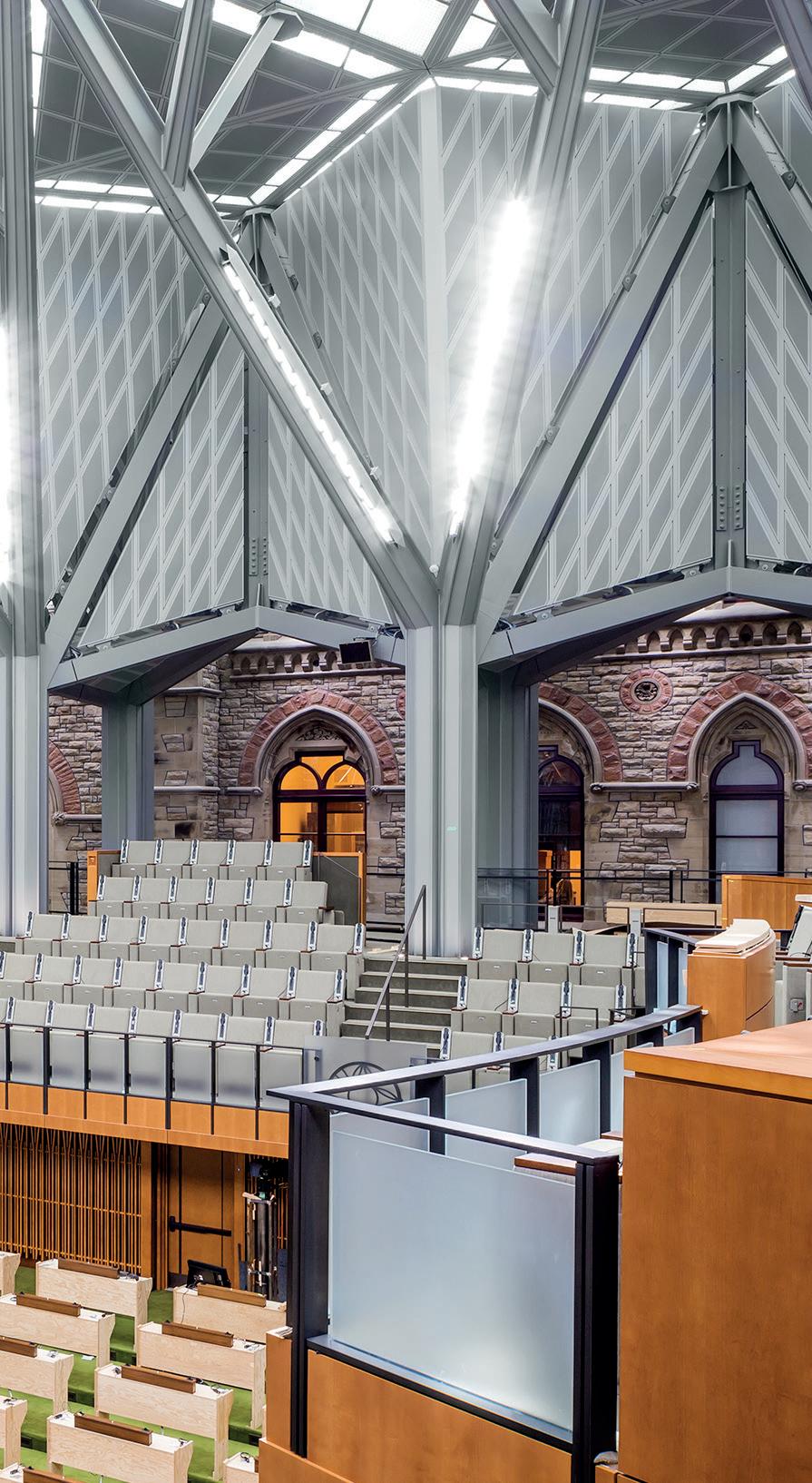
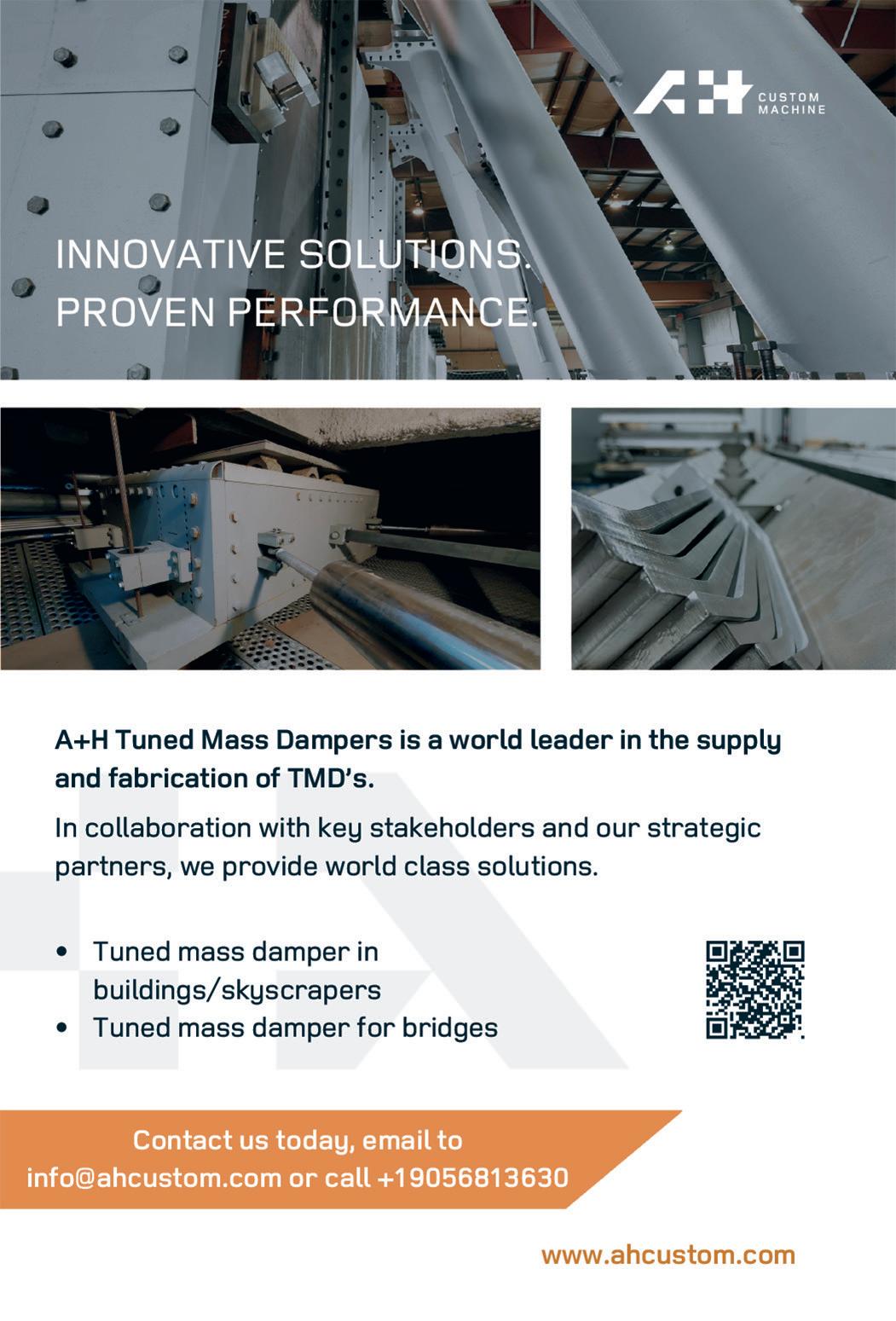
The sky’s the only limit for SmartRoof’s growth and impact trajectory

s a relatively young company, founded in 2016, SmartRoof’s story has been one of consistent growth, thanks to hard work and dedication. Speaking to Construction Today, COO, Sean O’Reilly, explains that the company’s core values have been the guiding lights for organizational growth and direction.
“The business has been built on creating the type of culture and environment in which your friends and family would want to work. This culture has a knock-on effect on the standard of customer service we deliver and an enhanced positive impact on the lives of our 5000 plus customers.”
Spotting a gap in the market, SmartRoof’s founder, Joshua Jerge, embarked on the business from a background in industry sales. Bringing in friends and family and inviting friends of friends to join him, the business has grown from humble beginnings to become one of the fastest growing companies on the east coast and counts itself among the top 50 roofing companies in the country.
“The majority of our business is residential roofing and solar solutions,” continues Sean. “We use technology to make homes smarter; enabling our customers to save money on energy and reduce their environmental impact. Servicing Virginia, Maryland, Pennsylvania, Jersey, Delaware, DC and Florida, SmartRoof is now one of the largest businesses in our industry; giving us access to resources that improve the experience for our employees, customers and community.”
Indeed, SmartRoof seeks to maximize value for its customers which is evident in its superior product offering, enhanced warranties and workmanship. This comes to life in its partnership with GAF Energy, which has disrupted the solar roofing market in North America. Among one of the first in the region to offer GAF Energy’s new, award-

winning Timberline Solar roof, SmartRoof was proud to provide feedback during the development process, thereby facilitating early access to the product, positioning itself as ahead of the curve and able to offer the future to the US market before its competitors.

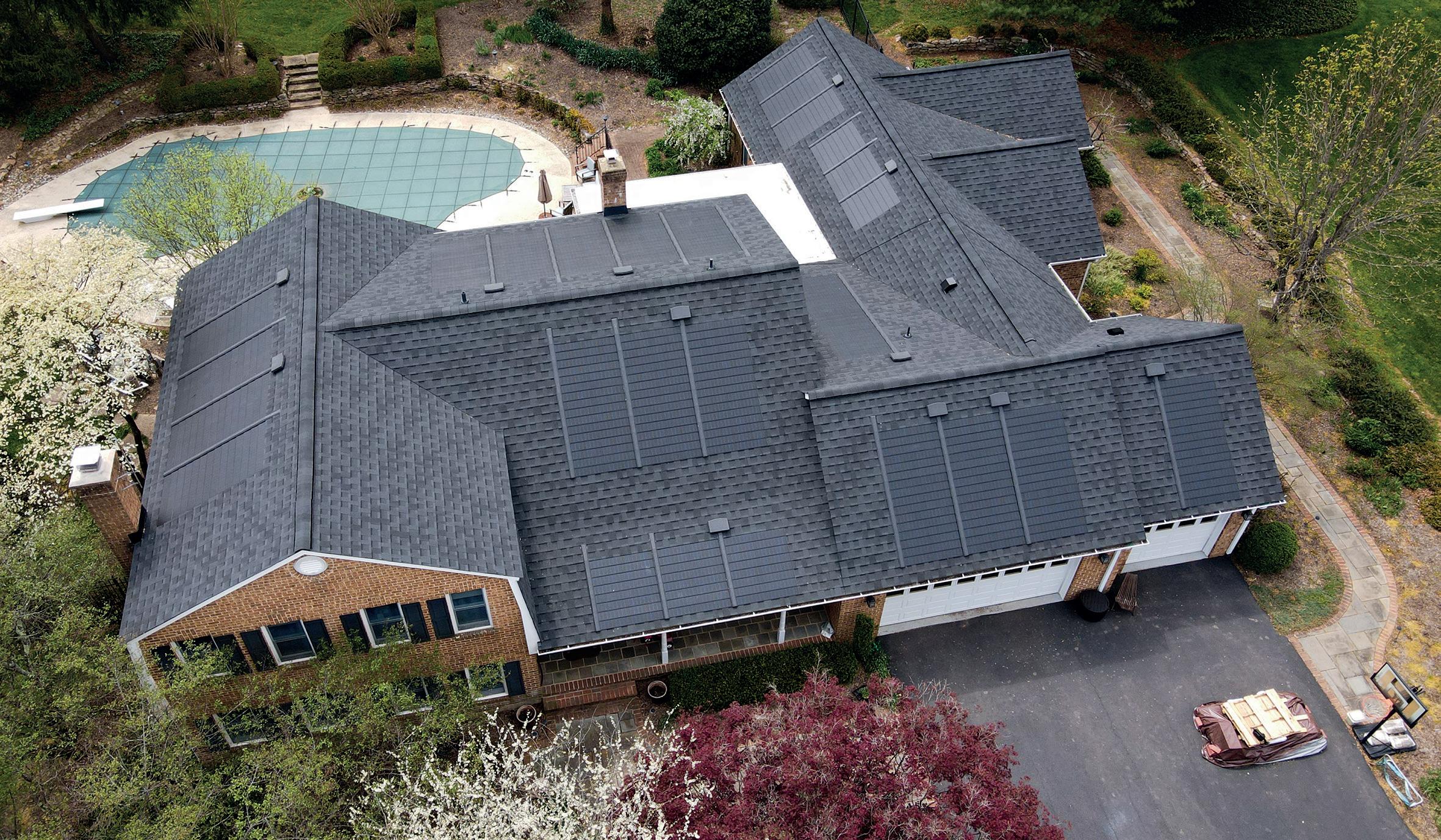
Timberline Solar incorporates roofing materials directly into a clean energygenerating system; resulting in a durable, attractive roof that produces energy. As Sean explains: “The product aligns with what we are doing as it is innovative and integrated. It has removed several layers of installation complexity and offers a single warranty. Strong and water-shedding, the product is able to withstand winds of up to 130 mph and with a 25 year-warranty, it offers the best protection in the industry. To date, we have sold and installed the most Timberline Solar roofs in the US. It is a truly ground-breaking product that will help us to become energyindependent and save our planet.”
Aurora Solar
Aurora Solar is creating a future of solar for all. The company is putting the power of data and technology into the hands of every solar professional to make solar adoption simple and predictable. The cloud-based platform uses data, automation, and AI to streamline workflows and grow solar businesses faster. More than 7,000 of the industry’s top organizations rely on Aurora and over nine million solar projects have been designed with the platform globally. The San Francisco-based company was the only climate tech business named to the 2022 Forbes AI 50 and was voted the best solar software by Solar Power World in 2021.
To create the industry’s most intuitive solar design program, Aurora invented SmartRoof, a tool that introduces several new innovations for remote solar design. SmartRoof makes it easy for anyone to create accurate 3D roof models by simply tracing out the roof perimeter – no design experience needed.























































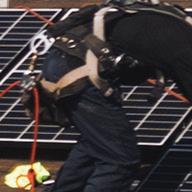





























Currently serving the east coast, SmartRoof has plans to expand its reach over the next five-to-ten years. The business’ field and sales functions operate from satellite offices, allowing it to pivot more effectively with decreased infrastructure and overhead requirements. Sean explains: “We have a lot of guys in the field and with the right technology, we’re able to work remotely and standardize our procedures.
In fact, we have recently switched to a new workflow management software called GiddyUp Roofing, which helps us to manage and grow the business. With a simple and easy-to-use program, we can manage canvassing, sales, jobs, production and even communicate with homeowners through a branded customer portal. It has offered us enhanced flexibility, operational efficiencies and opportunity for growth. We are really excited about moving forward
with greater clarity and more accurate data that enables faster and better decision-making.”
As touched upon earlier, SmartRoof is proud of its culture and sees itself as much more than a roofing and solar solutions company. “SmartRoof focuses on roofing and solar services. But ultimately, we are more than just a roofing and solar company – we are a life-changing company,” Joshua says. “The team at SmartRoof comprises hardworking, motivated individuals who want to perform, improve and make a difference. At every level, team members are given the support and resources they need to grow professionally, financially and personally.”
“If we can positively impact the people that work at SmartRoof, it allows them to positively impact our customers, the people around them and our vendors. We often talk
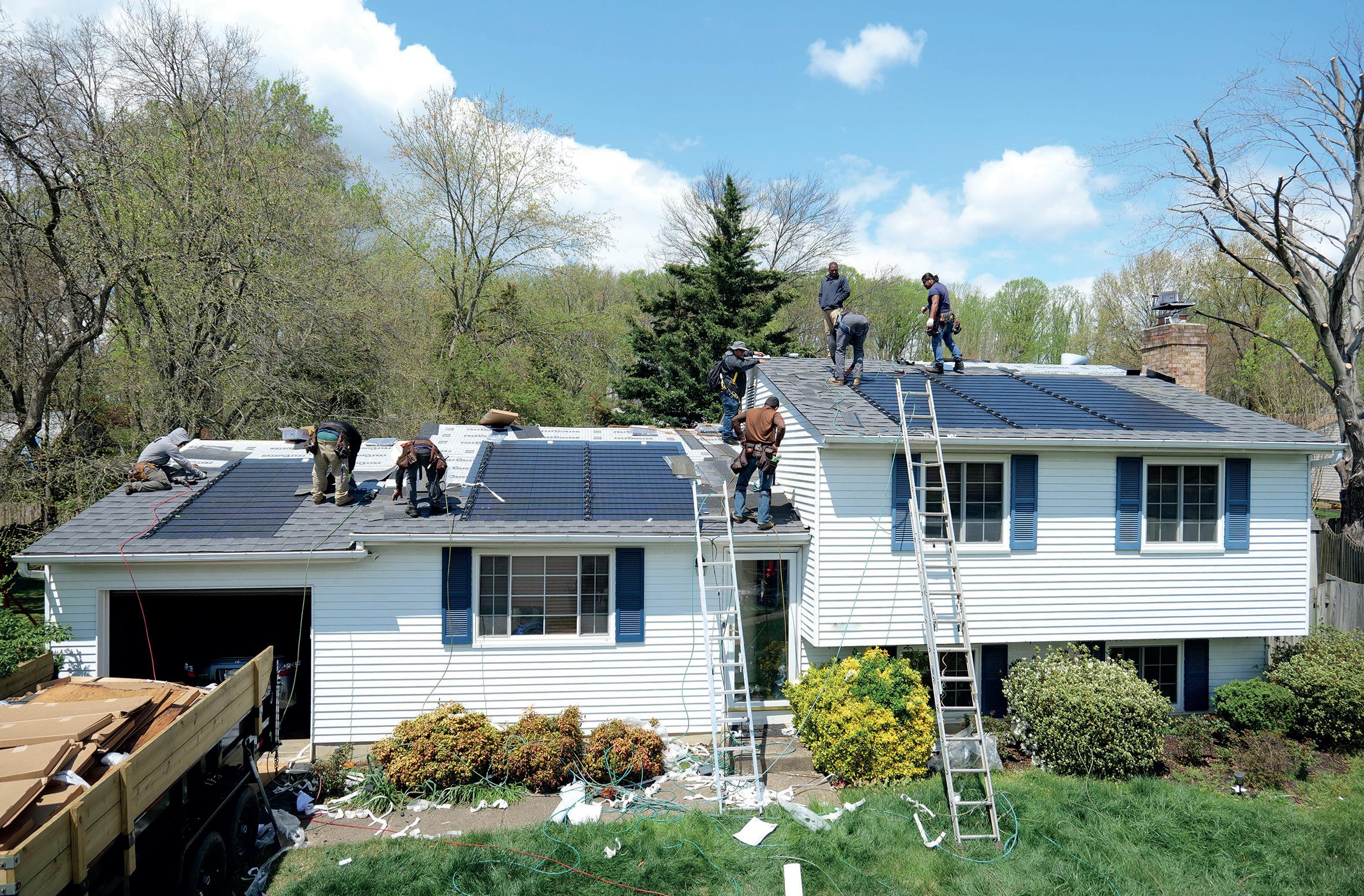
about a ripple effect. People are at the center of what we do, and we focus on making sure we take care of them first,” shares Sean.
“We are also innovative in the way we encourage our people to be their best. We stage fun competitions and events to encourage and engage our teams. Our workforce is relatively young, and we have several sports groups throughout the company. Our sales and marketing teams, particularly, have several light-hearted and fun competitions throughout the year that mirror sporting events; all with the aim
The perfect balance of beauty and performance
CedarBoards™ Insulated Siding provides the added strength and thermal benefit of rigid foam insulation with easy maintenance. Dressing your home in CedarBoards is like

of boosting performance in a fun and friendly context.
“We started our Smart League this year, based on the English football model of promotion and relegation, with prizes awarded accordingly. This type of incentive encourages consistency and the desire to improve and advance. It creates a real feeling of competition but in a fun way. In terms of our sport-oriented incentives and development, we talk about mindset, focus and growing as individuals. We reward this effort by investing in our people. We take our
wrapping your family in a cozy blanket. Inside you will enjoy a quieter, more comfortable home, while outside, you will appreciate the authentic look of natural wood, enhanced by distinctive colours and finishing touches

“ “
top quarterly performers from both sales and operations to conferences and other events with a focus on health and fitness or personal development. Whether a leadership event or conference about personal finance, whatever it might be, we offer opportunities for our people to grow and learn core skills for success.”

As Sean reiterates: “If we can have a positive impact on our people, they can positively impact our communities in turn. We change lives in our communities by giving back. We have supported a range of organizations over the years, such as Habitat for Humanity. From sponsoring projects to helping individuals, we have been able to play our part in improving the lives of those in our

communities. This culture of giving extends to our people who are always willing to support and sponsor both colleagues and strangers in times of need.”
SmartRoof extends its culture of positivity to all relationships, across the board. While the supply chain may have been strained over the last couple of years, it has not been such on a personal level, as the business was able to navigate challenges due to its positive relationships. “One of our biggest partners is ABC Supply,” says Sean. “We also have good relationships with our other vendors. While there is a transactional side to these relationships, we view our suppliers as partners, and we can’t do it without them. In turn, we can have a positive impact on their businesses and people. With good communication, we have really been able to navigate a lot of the

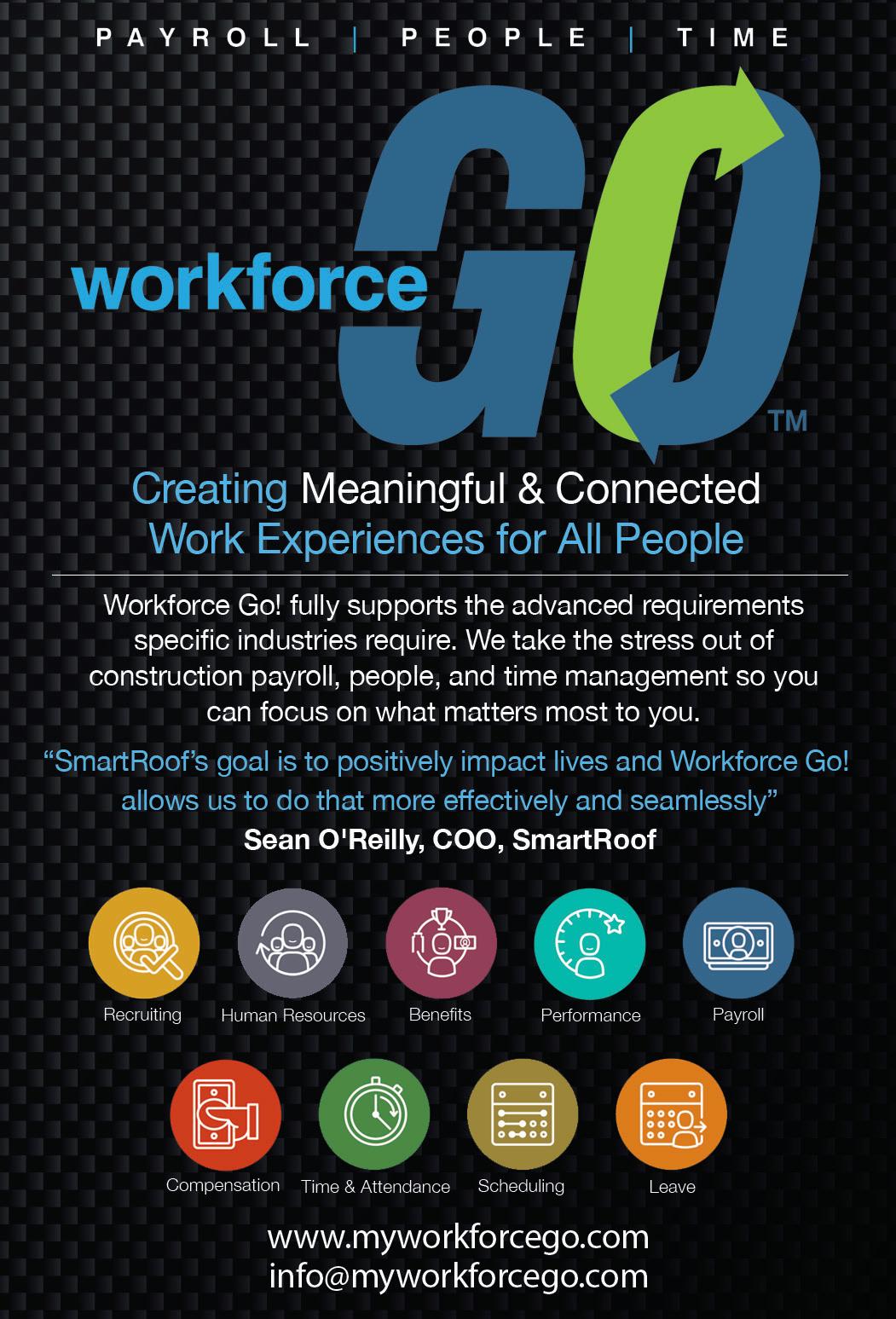
biggest challenges pretty well in the last few years.”
Looking back over the past couple of years in more detail, Sean confirms that it hasn’t been easy. “The pandemic has been our biggest challenge. As I’ve said, we are very people-focused. For a while, we had to do mostly zoom calls and for a growing company, trying to standardize protocols and hone changes, in terms of communication, we really missed easy, face-to-face interaction.
Congratulations to the entire SmartRoof team on your continued success! GiddyUp is honored to be your software partner.
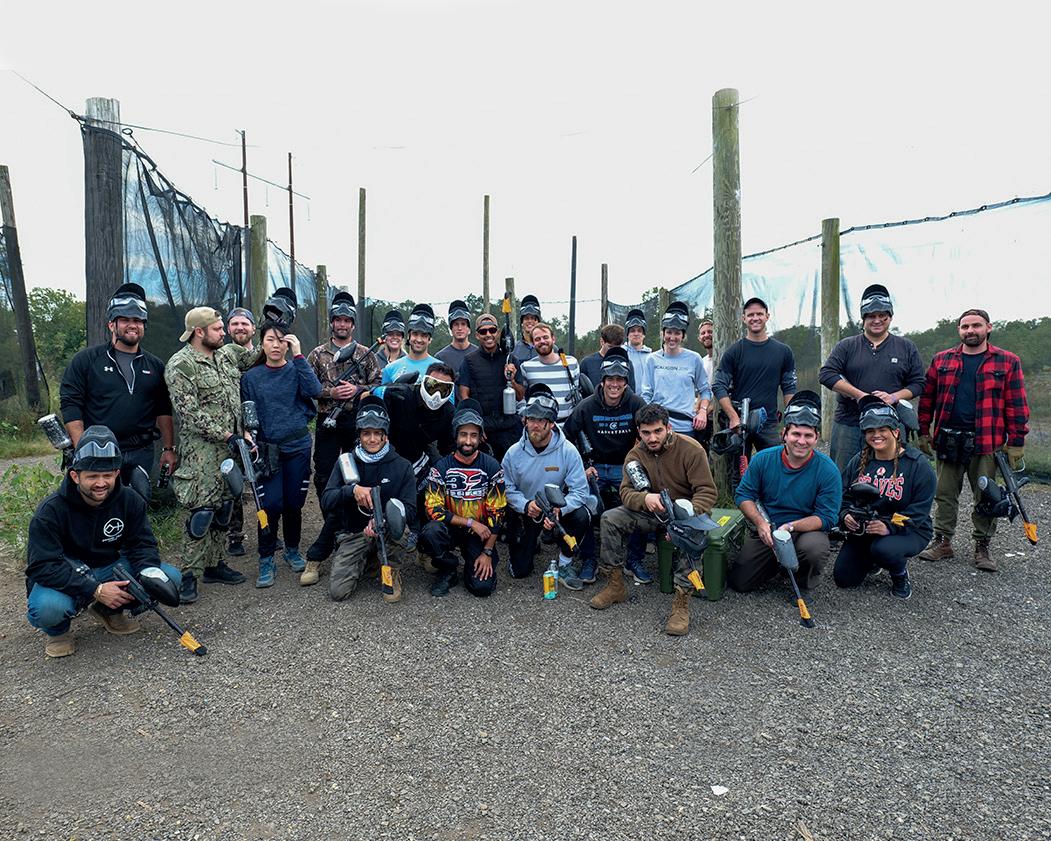
GiddyUp is proud to be helping clients like SmartRoof grow and achieve their goals. By fitting the software to the company, not the company to the software, GiddyUp is able
to standardize and modernize the processes necessary to move at the speed of your business, and stand out from the competition.
Tired of being told how to run your business by software companies? Feeling trapped and boxed in? Call for a demo of GiddyUp and see a better way – your way

“That said, we were able to overcome it and hold both internal and client meetings online. Ultimately, with multiple offices, we need to do that anyway, so it has pushed us in a direction we needed to go in terms of figuring out how to get the best out of technology and build relationships in whatever way possible.
“An additional challenge not related to the pandemic has been how to maintain the culture we’re so proud of as a fast-growing company. Our team is doubling every year and we need to ensure our culture is as solid as ever. We want our people to feel the same way now as they did four years ago when we were just a team of ten. That is a big challenge and an exciting one; our focus is on maintaining what has brought us
to where we are today, even as we continue to grow.”
Having curtailed its growth somewhat in recent months to be able to fully focus on embedding the new CRM system and other operational processes, the team at SmartRoof plans to regroup, ready to focus on further growth moving forward into 2023.
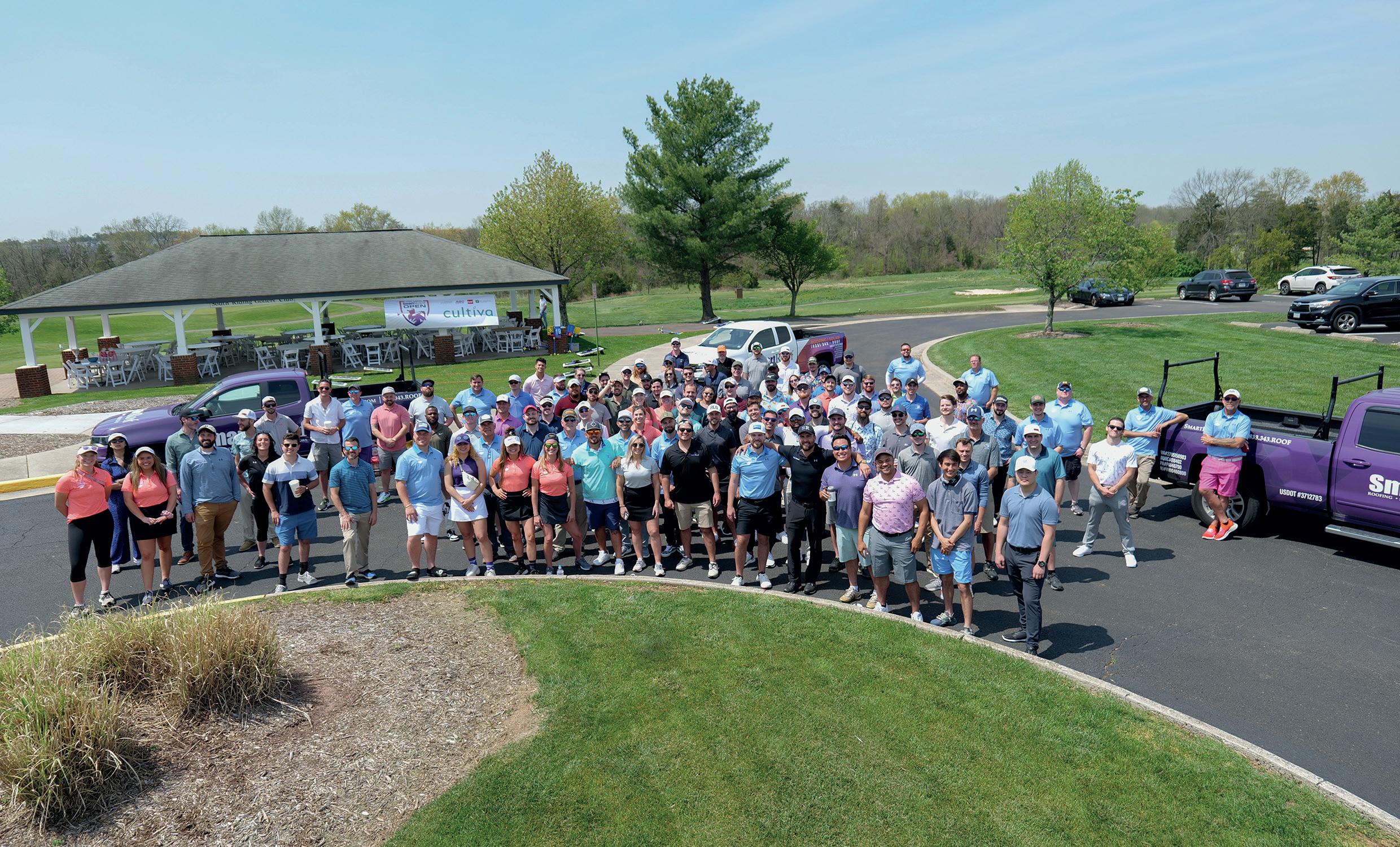
As Sean states: “The more we grow, the more we are able to bring in revenue and have a positive impact on more lives. We want to continue to open new offices. Over the next five years, we will have twice as many locations. We are aiming to expand our reach into the southwest, and continue to grow in the northeast and Florida.
“Our goal is to be a billion-dollar roofing and solar company,” Joshua
summarizes, when reflecting on Smartroof’s goal for the future. “However, that revenue mark is simply a measuring stick for how many lives we positively impact along the way. Our goal for the next five years is to aim to double each year in pursuit of that major milestone.” ■
www.smartroofinc.com
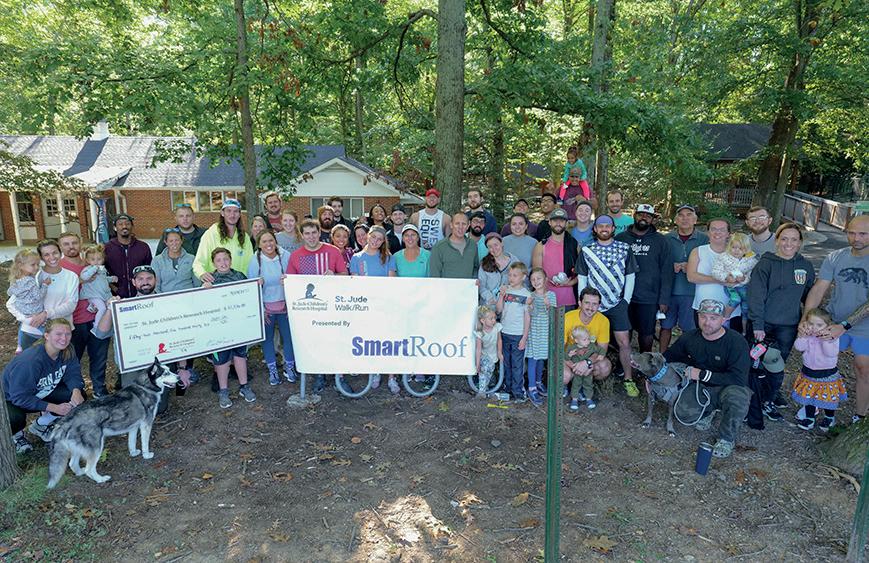
The global company focused on building materials, GAF, is North America’s largest roofing and waterproofing manufacturer. Part of Standard Industries, GAF’s products include a comprehensive portfolio of roofing and waterproofing solutions for residential and commercial properties as well as for civil engineering applications. The full GAF offering is
supported by an extensive national network of factory-certified contractors. GAF continues to be a leader in quality and offers comprehensive warranty protection on its products and systems. The company’s success is driven by a commitment to empowering its people to deliver advanced quality and purposeful innovation. Learn more at www.GAF.com.
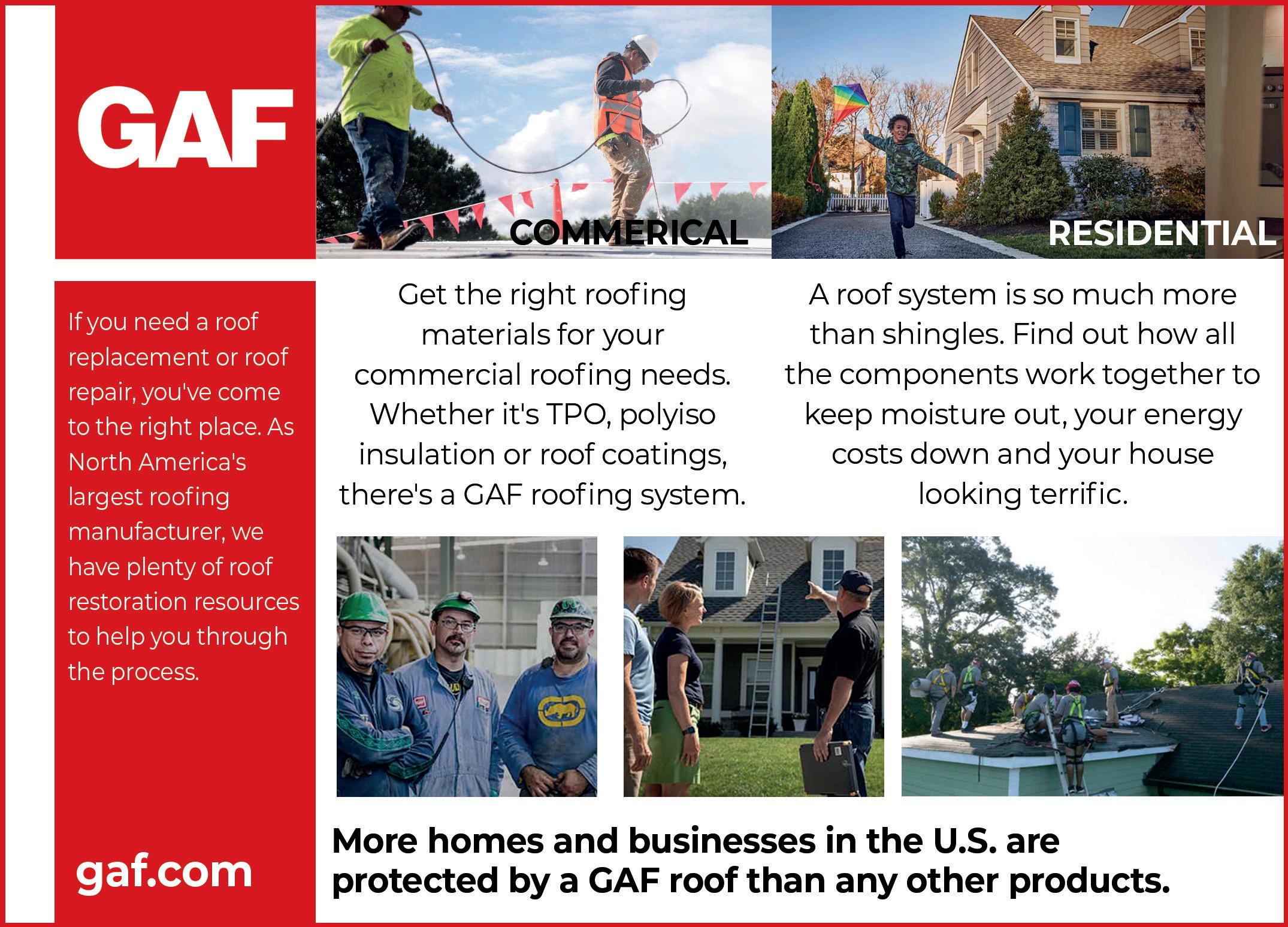
Why sustainability is at the core of Kitson & Partners’ Babcock Ranch community


Syd Kitson, an environmentalist who spent most of his life camping in the ranges across the states, has a strong appreciation for the fragility of our environment, and the importance of respecting it. This is why he pursued a career as a developer, and how the residential community, Babcock Ranch, came to be what it is today. “There will always be a need to create spaces for people to live,” begins the CEO of Kitson & Partners, developers of Babcock Ranch. “If we do it the right way, and set a great example, it could be one of the best contributions to the environment we could possibly make. That is how this project started. We were very fortunate to have found a great opportunity, and a 91,000-acre ranch in Charlotte County, Florida, that allowed us to bring this work to life.”
According to Syd, what makes Florida a unique state for a project like this is its natural environment. “If we don’t preserve those green spaces we are in big trouble, and we are very proud to be a part of it. Being intentional about
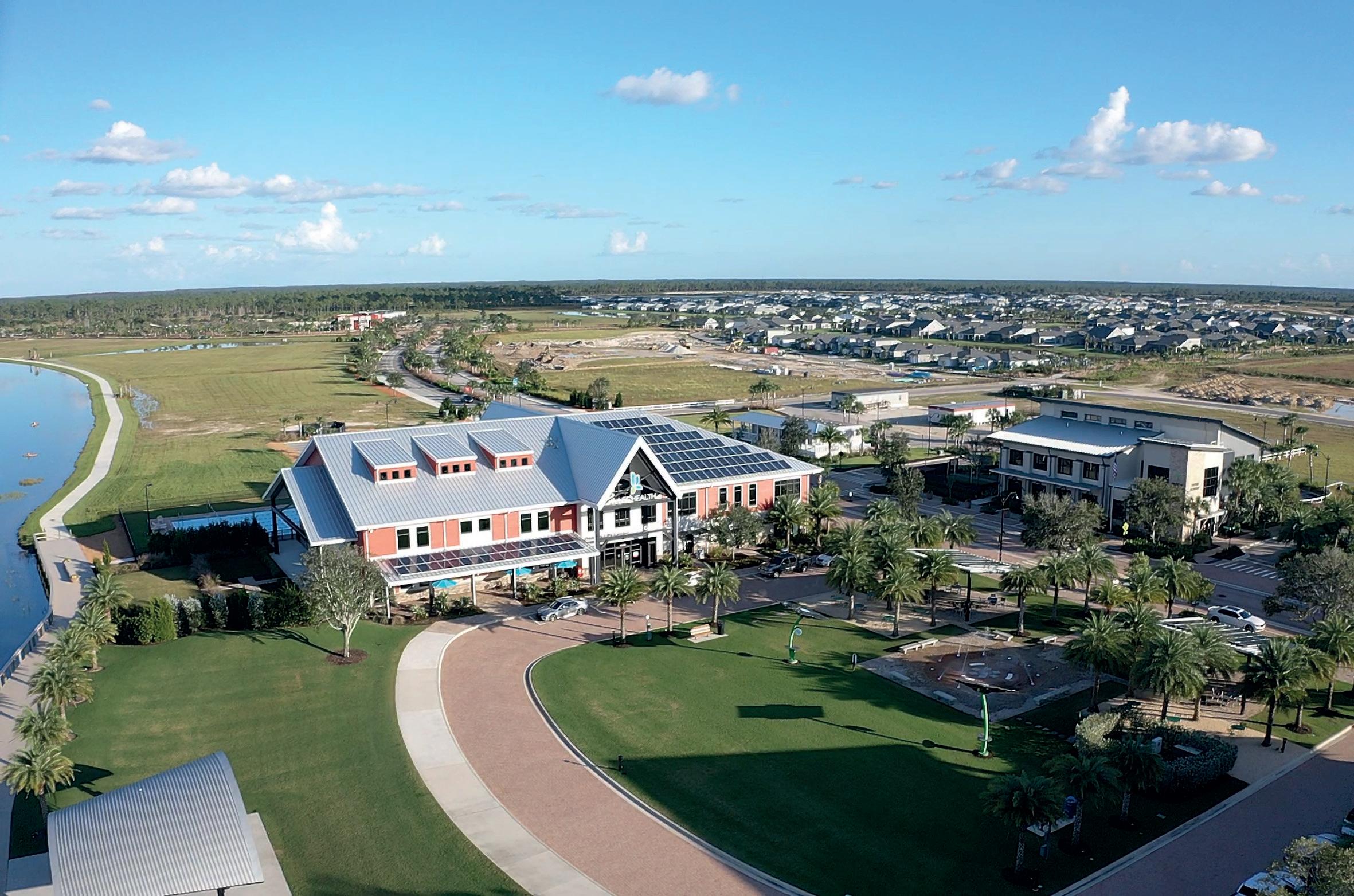
“ “ “ “
preserving our environment is key to our operation, and we really believe that people want to live in an environmentally responsible home, where they can celebrate the outdoors. Babcock Ranch was created with respect for the natural environment and the philosophy that smart growth and sustainability work hand in hand. When we brought this work together, we focused on environment, education, energy, transportation, technology, health and wellness, and of course, safety.”
Sustainability is one of the core aspects of life in the community. From the 870-acre solar farm and solar tree charging stations, to the country’s largest solar-plus-battery storage system, renewable energy is deeply entwined in Babcock Ranch. “I am a strong advocate for the environment. For example, how we treat our water runoff is unique. Our scrubber marshes make the water as clean when it leaves as it was when it entered the property,
“Babcock Ranch is the perfect testing ground for new and innovative construction practices. Pulte Homes and Babcock Ranch are both committed to leading the charge on innovation and energy efficiency in homebuilding. We are getting real feedback from our trade partners and customers daily, as we explore new products to build smarter and more efficient homes. Specifically, we have tested exciting new products related to insulation, HVAC, whole house battery backup, integrated whole home smart components, and more at Innovation Way in Babcock Ranch,” says Josh Graeve, Division President for Pulte Homes in Southwest Florida.
Visit Pulte.com/BR for more information on these homes of the future.
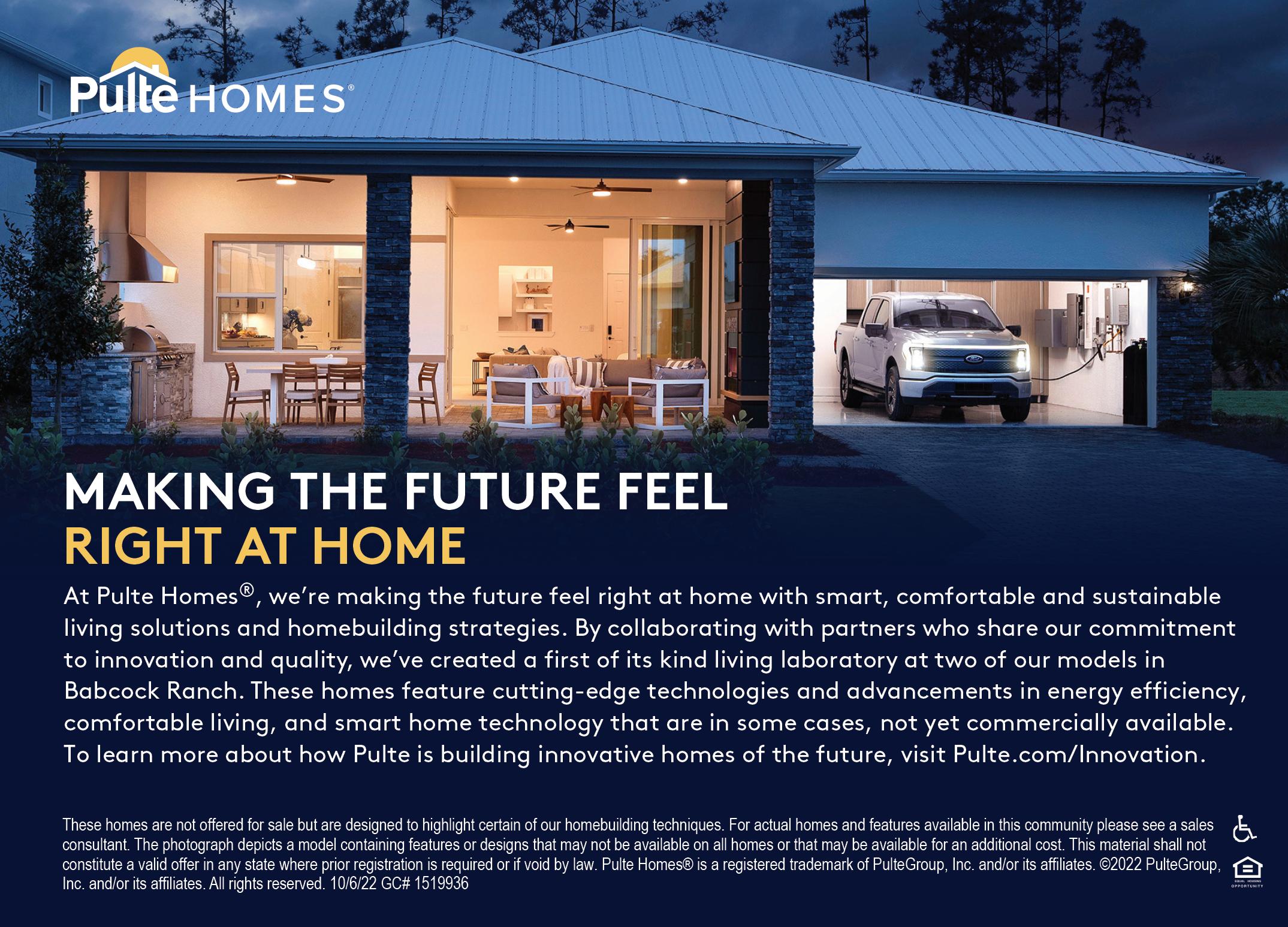
and we are very proud of that. We have our own wastewater plant, and therefore all the sprinkler systems throughout Babcock Ranch run on reused water,” Syd shares.
Another example of the community’s sustainability efforts can be seen within the individual homes. “We were able to partner with three of the nation’s top homebuilders to create a living laboratory of test homes in Innovation Way. Here, we have a neighborhood where these builders are exploring the possibilities for a new wave of homebuilding solutions, and, together with Florida Power and Light, they are helping us to monitor each of the homes. We are going to have an Innovation 2.0 where we focus on the materials we use, and how we can reduce our carbon footprints within the structure of the community.
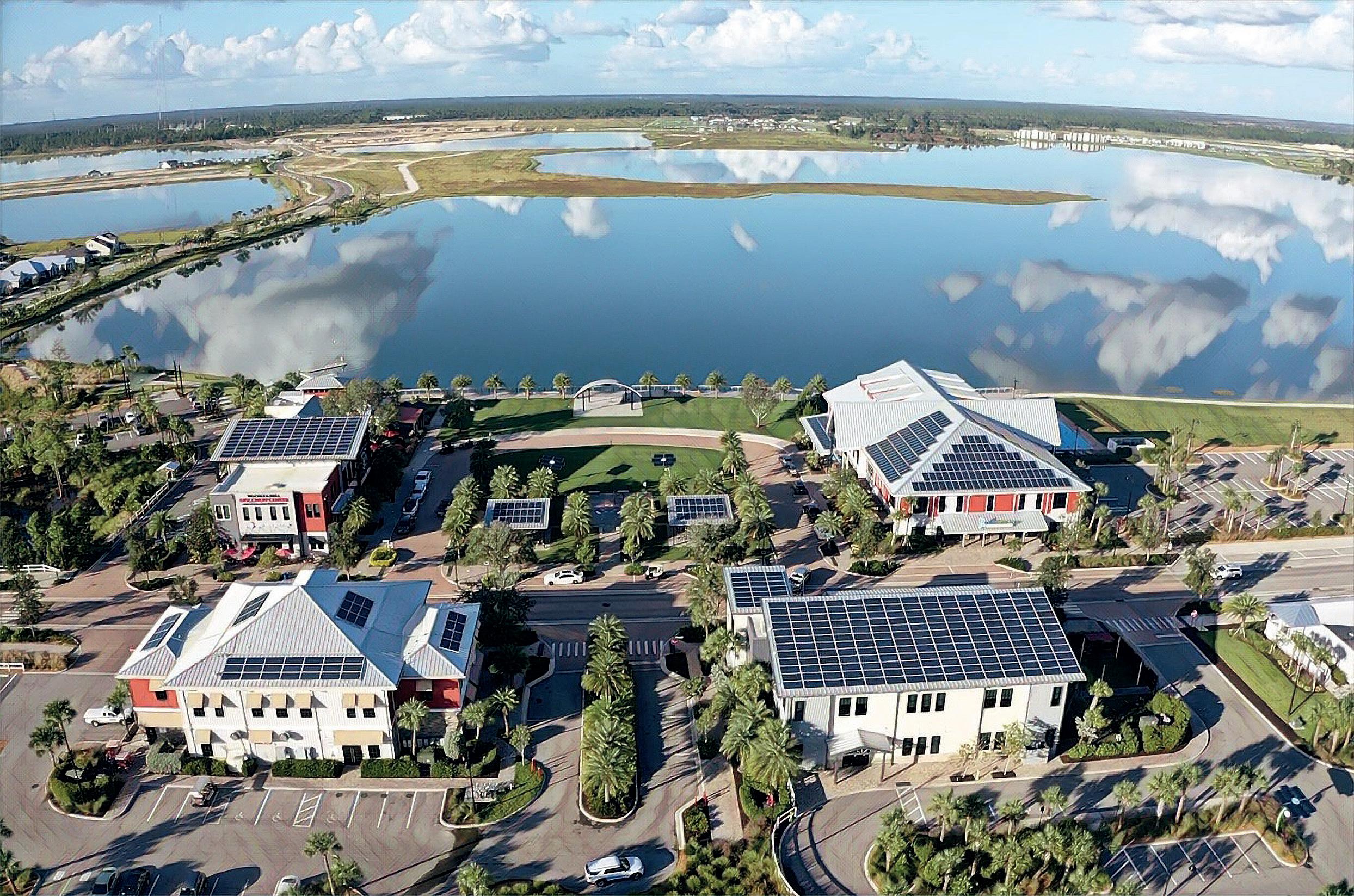
“There is one home that has a unique HVAC-RHEIA system, which I find fascinating. Rather than the larger supply systems, these
are smaller and more precise, and balance a house in a much more efficient way. There is another greywater filtration designed to minimize the impact on water resources by cycling the shower water back into the house for the toilet.”
Syd also shares how the home development project is powered by innovation and a passion to encourage a greater sense of community. Together, this combination is capable of opening greater opportunities for the families living within Babcock Ranch to learn how to care for the environment, and each other. “Often what happens in Florida is a lot of block construction, which makes sense. The structure creates a resilience against the wind. However, we wanted to prove that it doesn’t just have to be block. So, there are various types of wall panels and systems we are implementing to create a stunning and unique lifestyle here,” said Syd, who is keen to see this expand.


“ “ “ “

Under construction right now are six new parks, each one designed with a different aesthetic that accentuates green spaces
“ “
“I want to bring in more companies to work with us within the community. We are talking to probably four or five different companies right now that are looking to come in. I feel we are well-suited to light industry just because of our location, but again you must have all the other services in place for companies to relocate.
“We also have a hydroponic farm. Originally, the farm started at 100,000 square feet, but we are about to double that to 200,000 square feet so that, hydroponic farming is in line with who we are. We are looking for companies that have the same sustainability goals in this regard,” he emphasizes.

Syd believes the idea that the modern human is wired to spend their day in front of a screen is a false one, and he is determined to provide people with the opportunity to be outdoors, and to celebrate that environment. “Under construction right now are six new parks, each one designed with a different aesthetic that accentuates green spaces. For example, one of our parks is a pond, and we filled it with fish so kids can learn about their ecosystems. We are going to have places for families to explore, with everything from a large treehouse to a great path system and we are
providing a variety of different places for all ages, regardless of their abilities, to spend time in the outdoors.”
From what we’ve learned from Syd, the purpose of Babcock Ranch was to create an innovative sustainable hometown with a true sense of community and a unique lifestyle in harmony with nature. “Our vision is to build a safe space for people who are retired, and want to further their education, or volunteer and be part of working with kids either at schools or in the greater community. We are also introducing a central park that will have an urban feel, and I am so excited for that development. There will be restaurants, businesses, and apartments that surround this seven-acre park.”
The home developer is looking forward to the next five years. For him, if they are anything like the first five, the success of Babcock Ranch is going to have a fantastic impact on its residents. “We want to be able to offer the people who live here a lifestyle that celebrates the environment, and gets back to the roots of what this country is all about,” concludes Syd. ■
www.babcockranch.com

Get to know NV2A, one of Florida’s fastest growing construction firms, and its work on Gulliver Prep
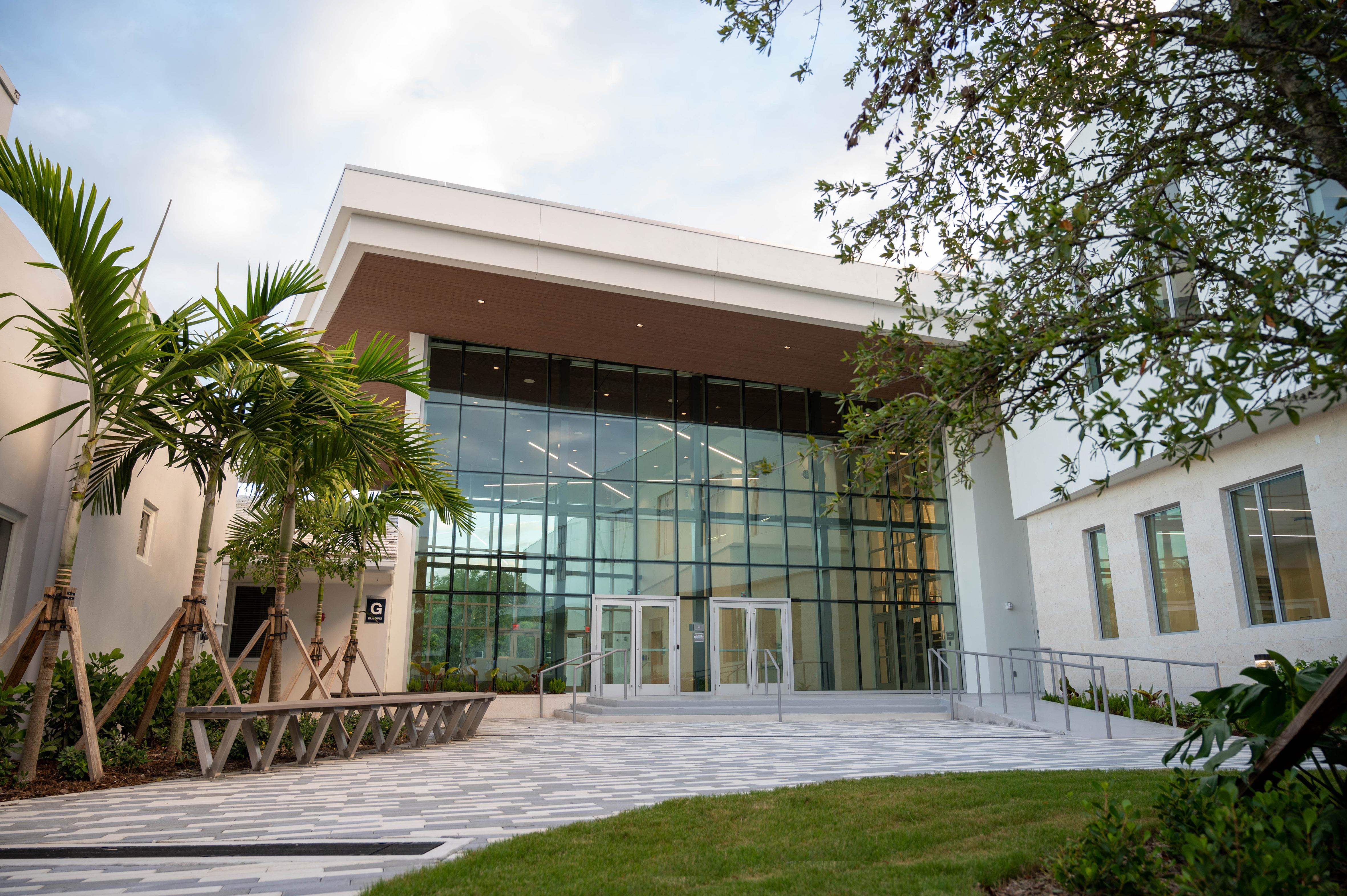
We last sat down with NV2A, one of the top builders and developers in South Florida, in 2018. It goes without saying that much has changed since then – in both the construction industry and the world. At the top of the list for catalysts of said change is, as expected, the pandemic. While many companies faltered or, at best, attempted to grapple with the wave of uncertainty that swept across the US, some kept on moving – some, like NV2A, used the opportunity to stand out from the competition.
As Gilberto Neves, President & CEO at NV2A, tells us: “The company has grown in volume, bench strength, and, most importantly, client relationships. We have continued to attract exceptional talent and deliver incredible projects. In addition, we have expanded our footprint with new clients, such as Gulliver Prep and NoMi Gardens Residences. We also acquired a large project in the Bahamas for a major Miami client and, more recently, the new Concourse A and Airport Terminal for Monroe County in Key West.

“We trust our people, perhaps more than our competition, and that is one of the primary reasons for our continued success,” he goes on. “Our culture is one of inclusivity; site managers clearly understand this and they know that, besides building the project, they must create a successful end result for the client. It is incredibly important to us. Furthermore, we cannot exist without our suppliers; they ensure we remain competitive and perform to a high standard. Good internal and external relationships are paramount for a sustainable business.”
The wheels are in motion, it seems, and the company is moving in one direction: forward. Delivering world-class construction management services with the personal touch to keep clients happy and engaged in their dream builds, NV2A seeks to capitalize on a wealth of collective experience and endeavors to explore a rich trajectory guided by commercial success and exceptional service.
Since 2017, the company has worked with a network of private and public clients in transportation, commercial, healthcare, education, and hospitality markets. Talking
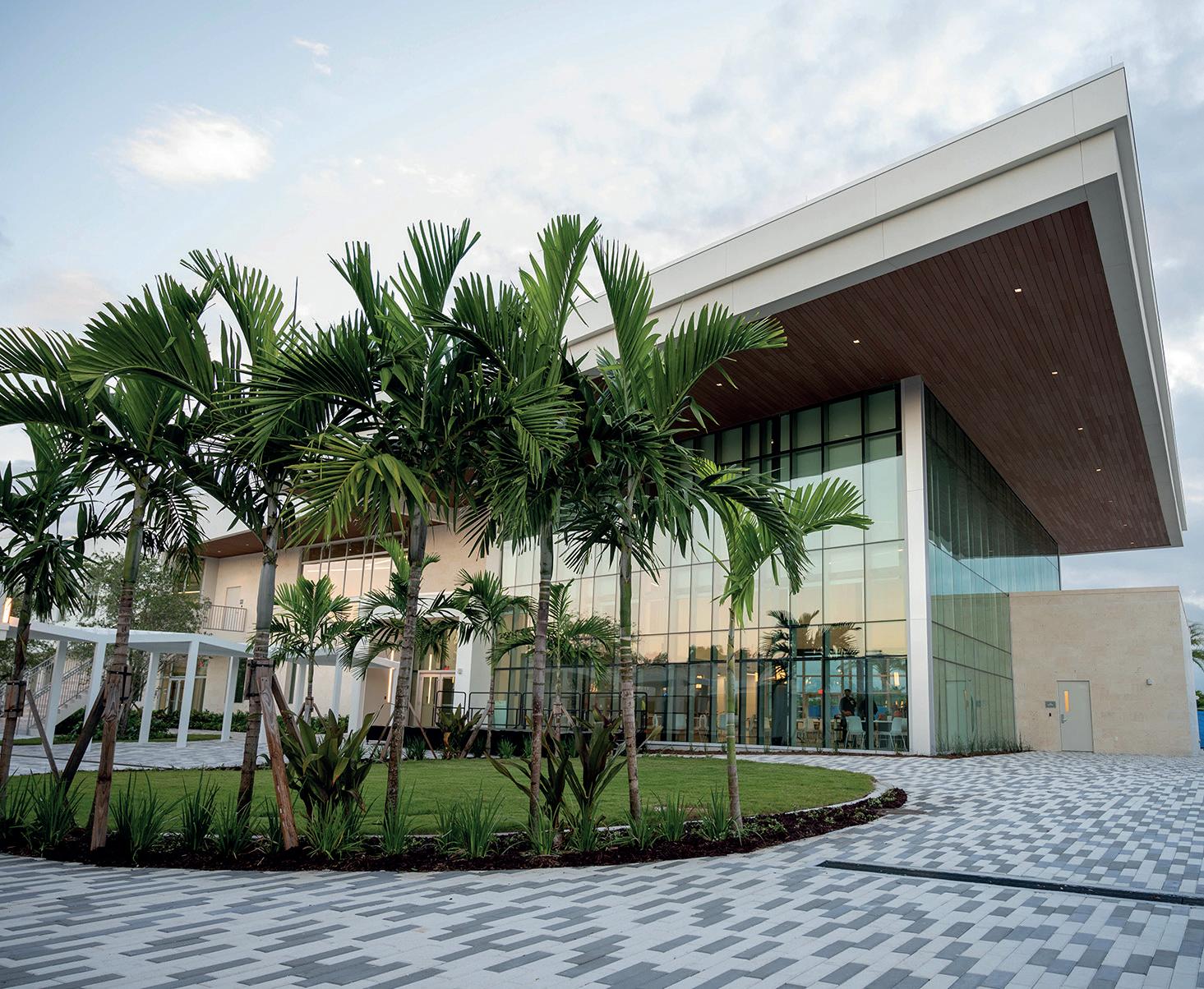
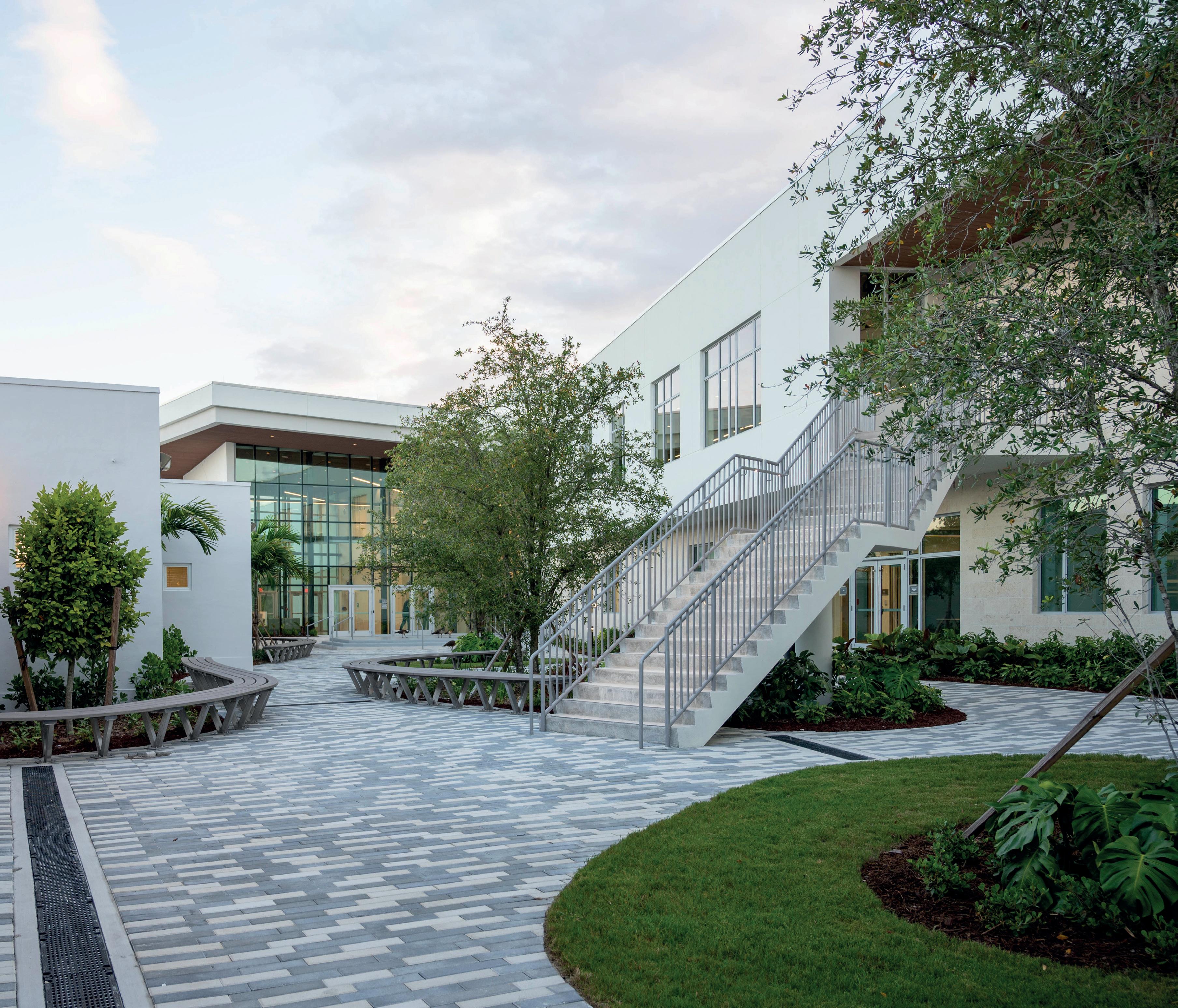
“ “
A job that can be built with the right people, the right cost, and to the right schedule is a job done well
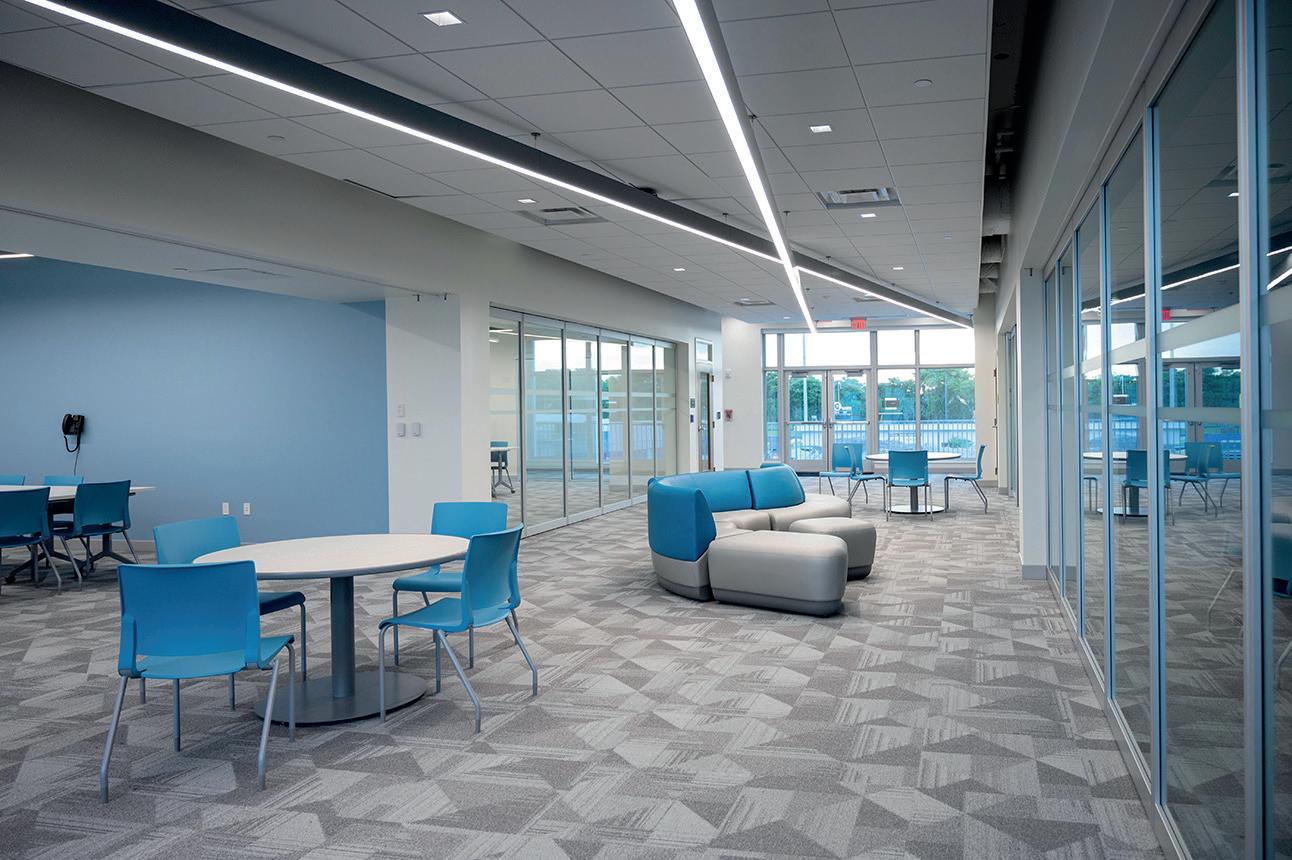
As a company, we are already growing tremendously well, and we know that developing our own people will ensure that continues
“ “
“We rarely self-perform work, so it is all about construction management services with us,” he explains. “It is about managing large projects for our clients with a unique personability and approach to fostering successful commercial relationships. Indeed, we do not go after projects so much as we do go after individual clients. Everything we do comes down to one question: Is the client going to happy with the end result? A job that can be built with the right people, the right cost, and to the right schedule is a job done well. Fortunately, with each and every project, we bring these three core tenets together.”
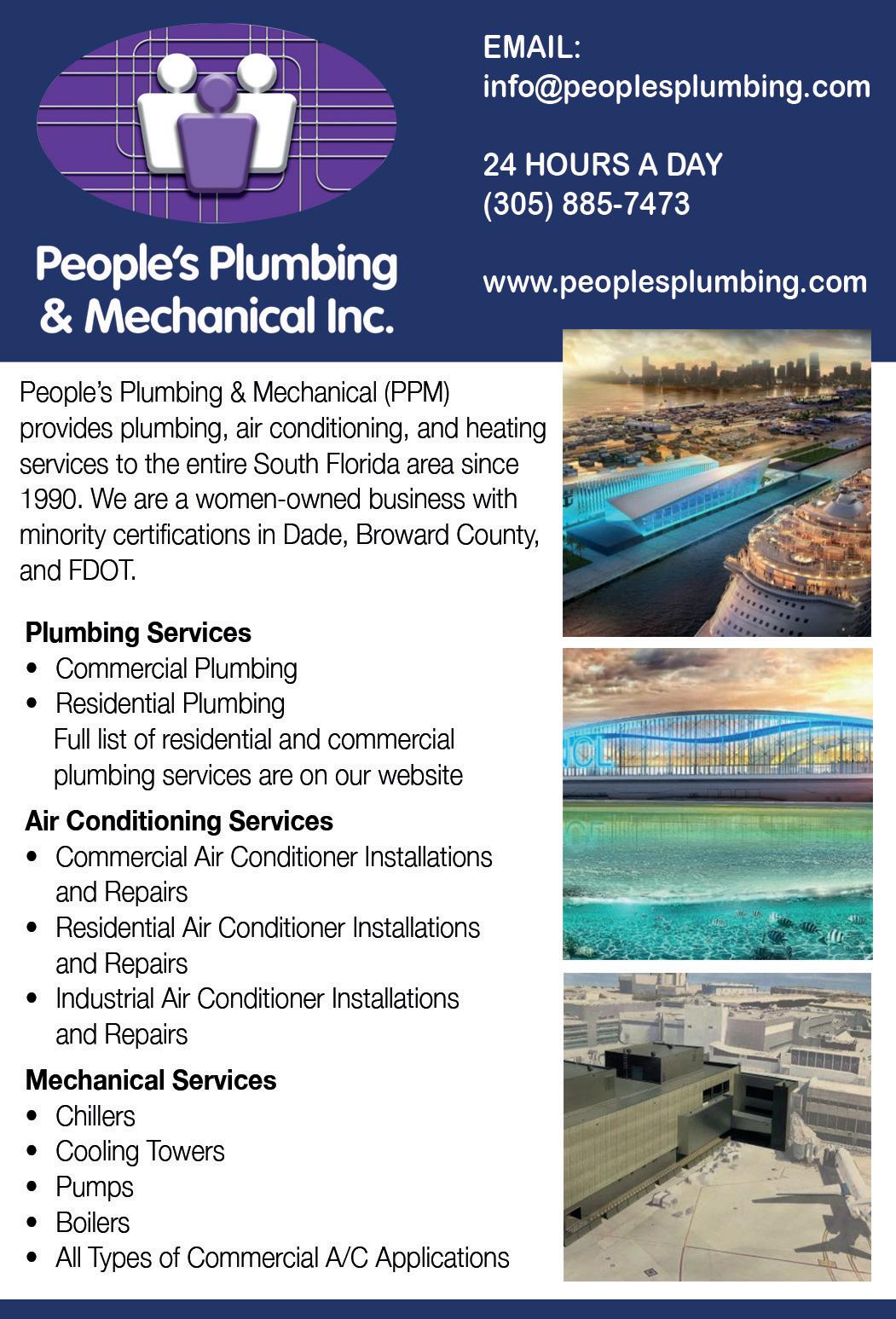
One recent project managed by NV2A that serves as a prime example of the cohesion Jorge has alluded to is that of Gulliver Prep, a popular co-educational private school in Miami, Florida. He estimates the project to be
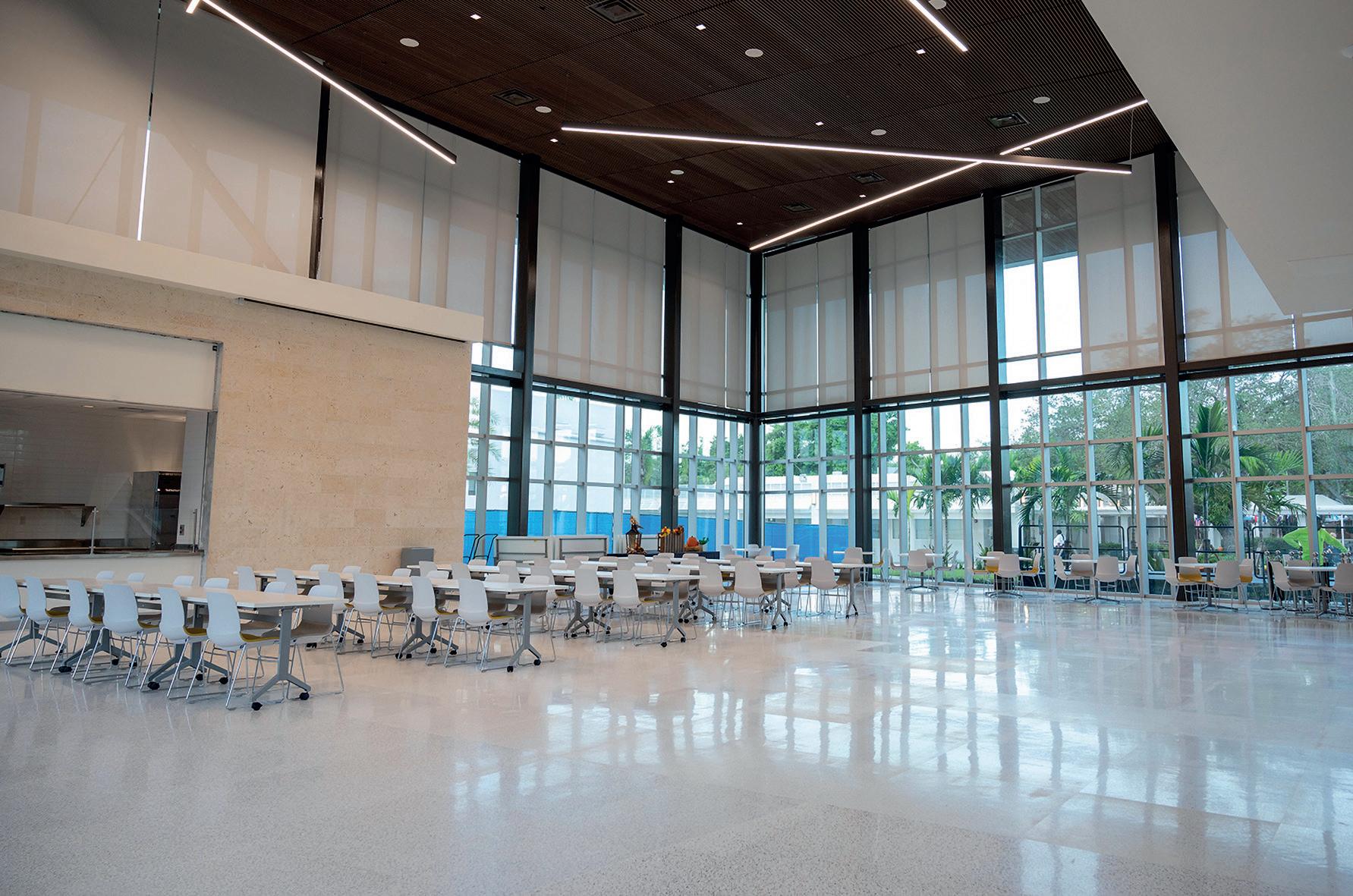
that has been built for the school, and new state-of-the-art facilities (for instance, a gymnasium, well-equipped classrooms and science laboratories, as well as a botanical garden) aim to create an inspiring pedagogical environment for children.
“This project is a very special one for us,” says Gilberto. “I believe we distinguished ourselves from other firms due to the strong level of dedication across the management team. By deeply understanding all operational aspects of the school, we could build around an active campus without disruption to the students and their faculty. That strategy worked well, and we are about to open the school on-time and on-budget.”
hamper the company in pursuing its deeply entrenched goals for success. Material shortages and a nascent uncertainty threatened the build. Yet, as Gary Tarbe, Director of Construction Management at Gulliver Prep, informs us, it did not stop NV2A.
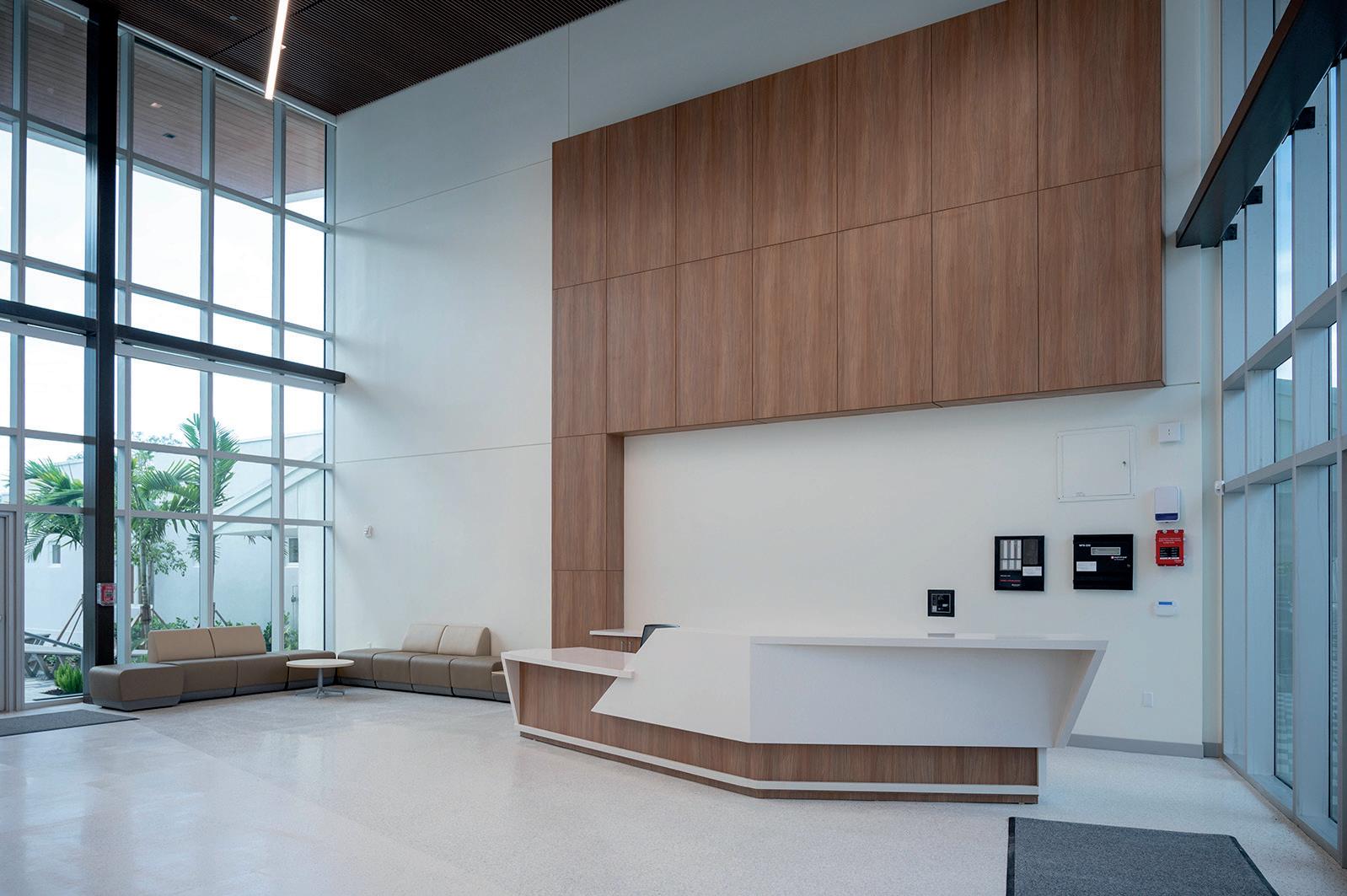
“It quickly became clear that NV2A’s experience and management team were well aware of the intricacies of the project, as well as the necessary level of concern for our faculty, staff, students, and general operations,” he reveals. “Fundamentally, the company was determined to be our best partner at the end of this process, and we are getting close. NV2A has proved to be successful in a competitive environment, and
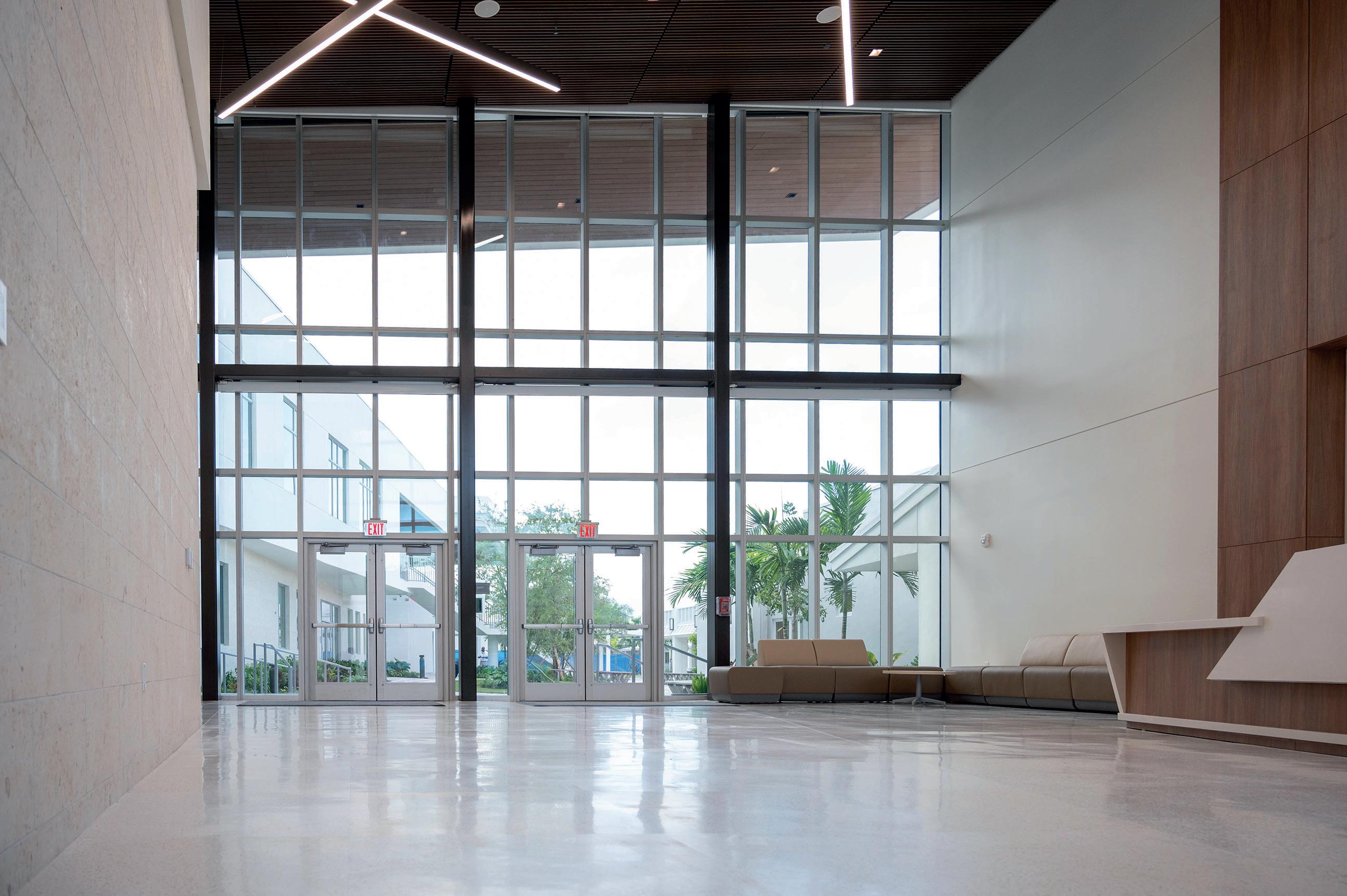
the cooperation, comradery, and efficiency of the teams involved were crucial in our final decision to continue working with the firm in the future.”
Indeed, the school has just selected NV2A to be the management team that will lead its next project, utilizing the same people and the same approach to garner the same successful results. With leading technologies like Building Information Modelling (BIM) software and Procore at its disposal, NV2A ensures not only consistency in methodology but also the resulting quality from tried-andtested processes.
For this reason, among many others, Jorge anticipates a strong commercial end to 2022. “Looking further ahead, we intend
to keep growing organically,” he notes. “In doing so, we will put ourselves in a better position to secure an even greater number of construction projects with clients. As a company, we are already growing tremendously well, and we know that developing our own people will ensure that
“Ultimately, we want to become the number one choice for our clients, but also for our employees and subcontractors,” concludes Gilberto. “I want to end by expressing my deep gratitude to our teams, clients, and subcontractors. These partnerships mean more than the dollars and give real purpose to what we do. The profits are an automatic consequence of the hard work and persistency they bring to work www.nv2agroup.com


The Bainbridge Companies (Bainbridge) started out as a small and local southeast Florida multifamily development company in 1997, with a single office in Wellington and just four employees. But fast forward nearly a quarter of a century and the situation has changed. Today, the company has transformed, growing
into a fully integrated multifamily owned and operated organization with a total of nine offices and more than 650 associates throughout the Mid-Atlantic, Southeast, Southwest, and Florida regions of the US. With in-house development, construction, renovation, and asset and property management divisions, Bainbridge is now recognized by the National
 Talking construction and beautiful apartments with The Bainbridge Companies – join the conversation
Talking construction and beautiful apartments with The Bainbridge Companies – join the conversation
Multifamily Housing Council (NMHC) as the tenth largest developer and twelfth largest builder in the US apartment industry.
Recently, we sat down with some of the team to talk all things construction, development, and how people will always be the bottom line to success. “We are a company made up of passionate professionals who strive to develop best-in-class apartment communities that our residents will always

be proud to call home,” begins Kevin Keane, COO at Bainbridge. “To our partners, we work hard to provide superior investment opportunities for portfolios considered to be blue-chip investments and we deliver abovemarket returns for our limited partners and co-investors.
“We are honored to be featured in this edition of Construction Today,” he goes on. “We have excellent relationships with the
various service providers that we work with throughout all phases of development and construction in our communities; we remain incredibly appreciative of our national partnerships, which allow us to build and deliver exceptional assets to the marketplace.”
Bainbridge manages, develops, and invests in apartment communities that the firm labels as complete experiences; that is to say, spaces that allow people to pursue better, more fulfilling lives. In Florida, Georgia, North Carolina, Texas, Maryland and Virginia, these communities say: ‘Come home and be inspired.’
More recently, the firm has made investments in existing value-added and core-plus acquisitions in Florida and the Carolinas throughout 2022. As Kevin explains, Bainbridge’s acquisitions and capital markets teams have been working tirelessly to identify new opportunities for company growth, either off-market or through a broker offering.

We are not striving to be the largest fullservice firm in the industry, but we are striving to be the best
“ “ “ “
“When we believe there is a measurable opportunity for our company to acquire a property, we leverage our property management division to increase rents, instill more efficient systems, implement policies and procedures to increase rents, establish property-wide Wi-Fi services, ensure appropriate resident portals are created for communication, and reduce overall expenses to enhance our bottom line,” he notes. “Upon acquisition of an existing asset, we typically utilize our renovation division and allow them to develop a program of updating common area amenities, unit interiors, building exteriors, and adding new sustainable elements to the property relating to energy efficiency.”
When it comes to new project development, Bainbridge draws inspiration from both current market trends and industry insights that are provided by the NMHC and the National Apartment Association (NAA). Bob Thollander,

President of Development at Bainbridge, tells us more: “Additionally, we rely on our on-site associates to gather customer-based inquiries and requests for inspiration. We always look for ways to provide unique unit layouts and both accessible and useable amenities that are not yet seen in the local marketplaces where we develop. On top of all that, our team consistently looks at what is happening in the local housing market to recognize trends that easily translate into a new customer want within the luxury rental market.”
As the conversation moves onto recent project developments, including Mission Pointe in Orlando, Bob is keen to shed some further light on the processes that generate the company’s success. “We are very pleased with how Mission Pointe is coming together,” he details. “We have carefully – and creatively – designed it for future residents. The location is unique in that it is one of the few remaining
lakefront apartment communities in the metropolitan Orlando area, and the incredible views of Lake Whippoorwill are destined to at once inspire and evoke calm in those living there.

“We wanted to make use of the waterfront as much as possible, so we incorporated a large walking trail along the entire waterline, as well as a boat ramp and fishing pier,” Bob reveals. “Mission Pointe is a true resort-style community and one of the most premier lakefront apartment communities that has ever been built in the metropolitan Orlando area.”
Mission Pointe is the third Bainbridge apartment community that has been developed on Lake Whippoorwill, following in the footsteps of Bainbridge Nona Place and Bainbridge Narcoossee Cove. With Lake Nona Medical City, excellent schools, and abundant dining and entertainment options nearby, this most recent development will ensure future residents have access to a premium living experience.
One of the biggest challenges faced by the construction industry in the past few years has been the pandemic. At this point, that goes without saying. But, as Alex Panzeri, President of Construction at Bainbridge, points out, it goes much deeper than that. “Covid-19 brought with it an abundance of uncertainty, and consequently the market was affected,” he says. “Supply chain constraints, a lack of materials, labor shortages, and therefore a reduced output of finished products – these became the new normal. Our material suppliers play an important role in our success, and throughout the pandemic we relied on national agreements to deliver quality products on-time at the most competitive prices.
“Before the pandemic, construction risks were mostly related to unknown site conditions or vertical construction material availability and cost increases,” he goes on. “However, Covid-19 and its effects on the global economy have taken a huge toll on the availability of construction materials,
labor, and costs. Nevertheless, we remain in constant communication with our subcontractors and suppliers on their supply chain issues and cost variances, and we are utilizing advance ordering and bulk purchasing to mitigate delays. Better planning, more open communication, and early execution are key tenets that we are building our future upon.”
Speaking of the future, Bainbridge looks forward to a very active remainder of 2022. Plenty of developments are in the pipeline. It seems the dust of the pandemic is settling. “We are in the process of designing new communities, while also renovating existing ones with more remote workspaces and outdoor areas with active recreation amenities,” says Kevin. “Our acquisition business, moreover, is incredibly robust – five properties have been purchased in the past twelve months alone.
“The construction industry continues to consolidate,” he concludes. “With the introduction of Real Estate Investment Trusts


(REITs) and crowd funding, coupled with the attractiveness and stability of real estate as an investment alternative, there is no shortage of capital flowing into the development of apartment communities. We are not striving to be the largest full-service firm in the industry, but we are striving to be the best. Our people truly are our greatest asset; we recognize their strengths, and the ways in which they bring value to every discipline within the company – from on-site teams and corporate support associates to each of our divisions (construction, development, capital markets, asset management and property management). At the end of the day, it is our team that truly makes the difference. Through them, we can be the best and create exceptional living spaces.” ■
www.bainbridgecompanies.com
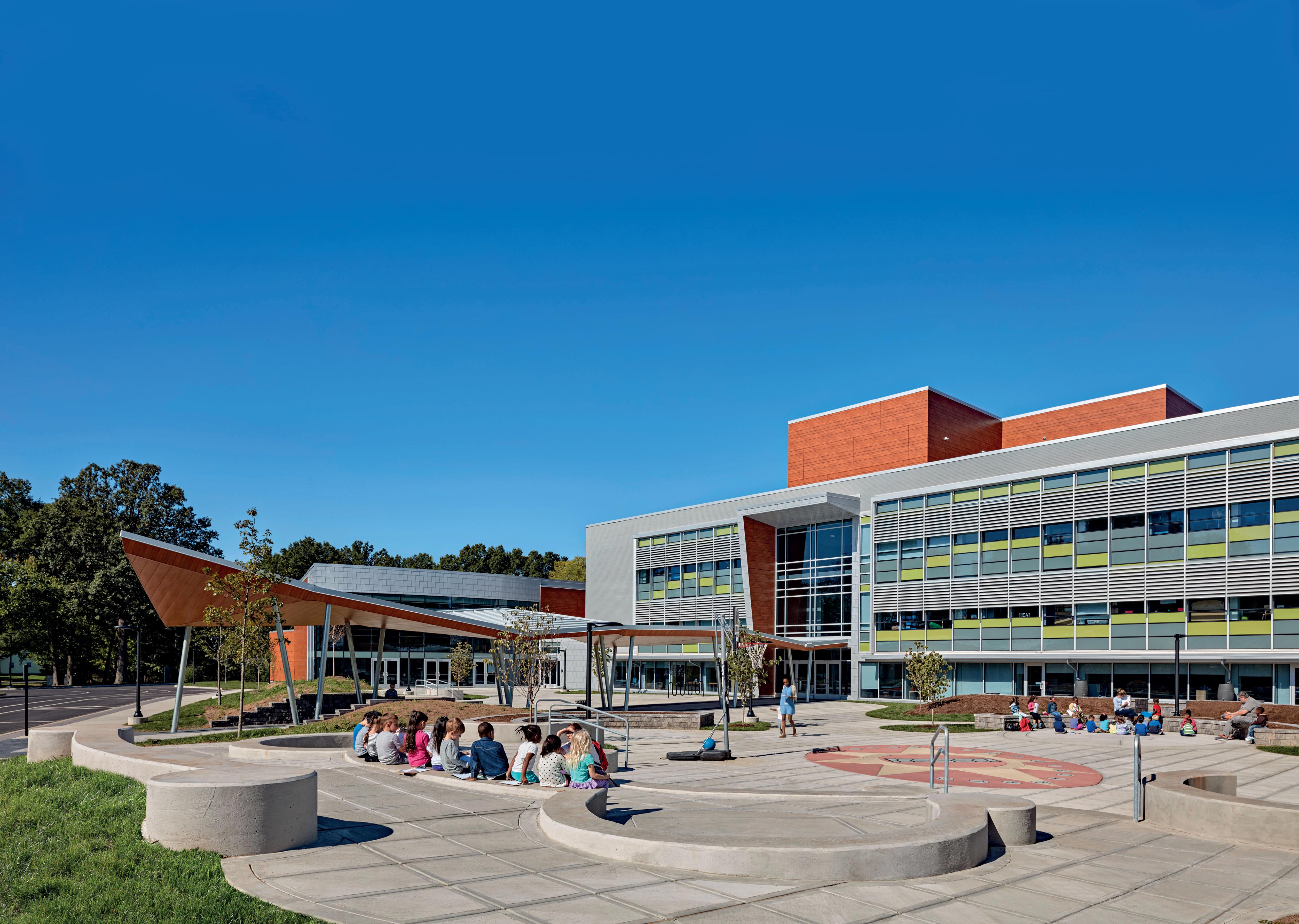 Downes Construction Company: going above and beyond for community builds
Downes Construction Company: going above and beyond for community builds
Since its foundation in 1934, Downes Construction Company’s (Downes) ownership structure has varied, yet, the business has continued to enjoy sustained growth and considerable success. In May 2020, the business transitioned to become an Employee Stock Ownership Plan (ESOP) and continues to be so, today.
As President, David Patrick, explains: “Downes was a mid-$55-million-a-year company from the early 2000s until about 2017 when the company experienced rapid growth. We do about $150 million a year now in annual construction volume and boast around 67 employees. From healthcare and higher education to municipal and museum buildings, we have really carved out a niche for
ourselves in Connecticut’s construction market. In fact, we were recently recognized by national Engineering News-Record magazine for one of our museum builds, and we are pretty proud of that accolade.
“The growth of the company over the past five years has been remarkable, particularly during a time of transition when many of the long-established workforce and senior leadership team retired. That said, the existing management team also has an impressive history of longevity which reflects the organizational culture. Employees join Downes and they don’t want to leave. I think the transition from an LLC partnership structure to the ESOP was really an effort to, first and foremost, reward the people who have built

this company to what it is today, and secondly, to ensure the Downes name continues on in the State of Connecticut and in New England. It’s been an exciting transition. I think every employee gets up every day and says, ‘you know what, I am a shareholder, I am a part-owner and I want to do my part to make sure this company succeeds.’”
As Tom Romagnoli, Vice President of Operations, reiterates: “I think the success of our company really boils down to our people and our process. One of the reasons I joined Downes was the fact it is a local company with a solid reputation, and a welcoming, family-oriented atmosphere. We are working really hard to maintain that culture, to collaborate with one another and instill those core values. This ethos extends to our clients and is reflected in the quality projects we win.”
Indeed, it would seem the more complicated the project, the more the business excels. “From renovation to repurposing, we do a lot of projects that bring buildings back to life,” says Tom. “These projects have inherent value and satisfaction. For example, we converted an abandoned building in Wethersfield into a Discovery Academy that specializes in science.”
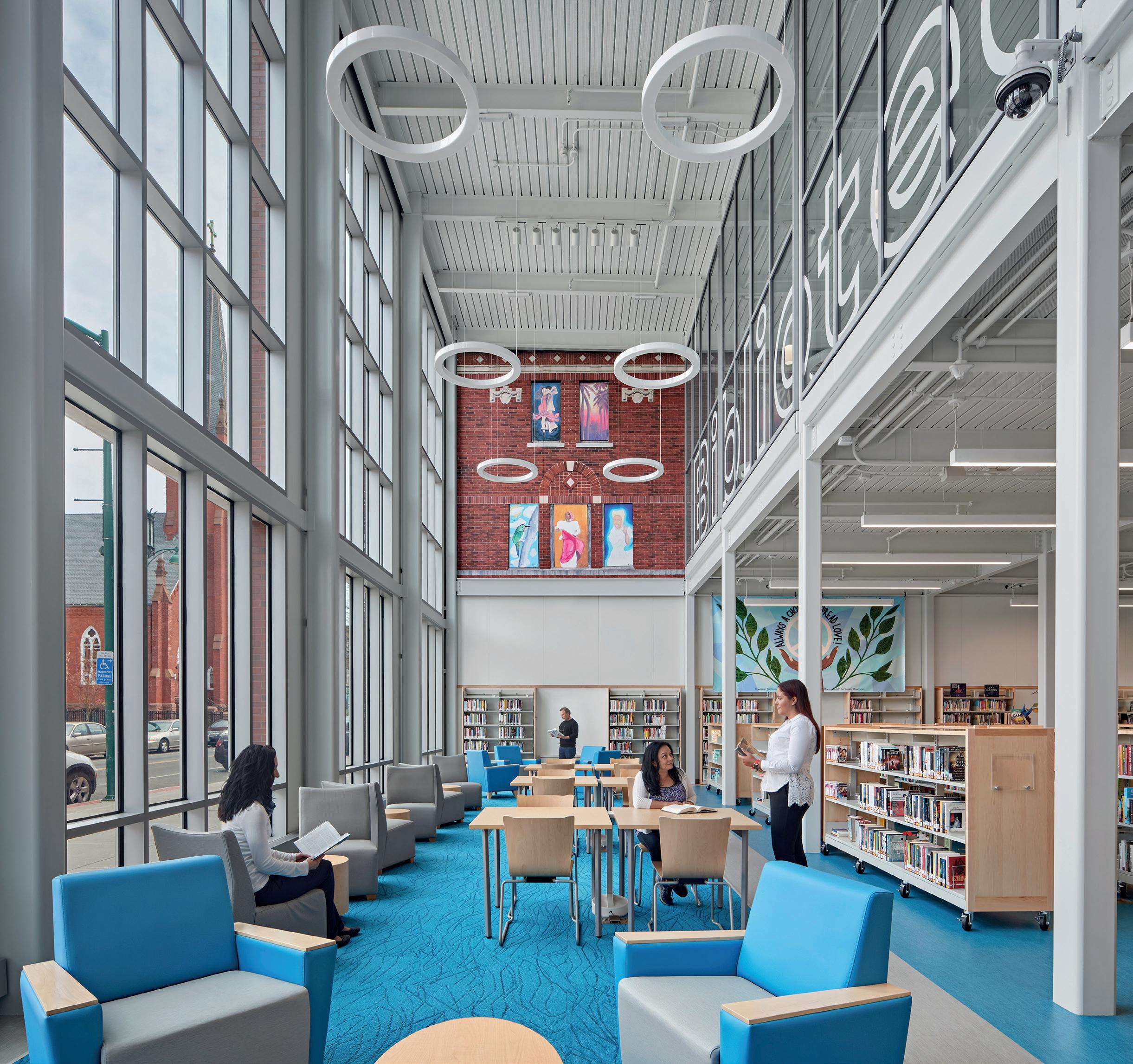
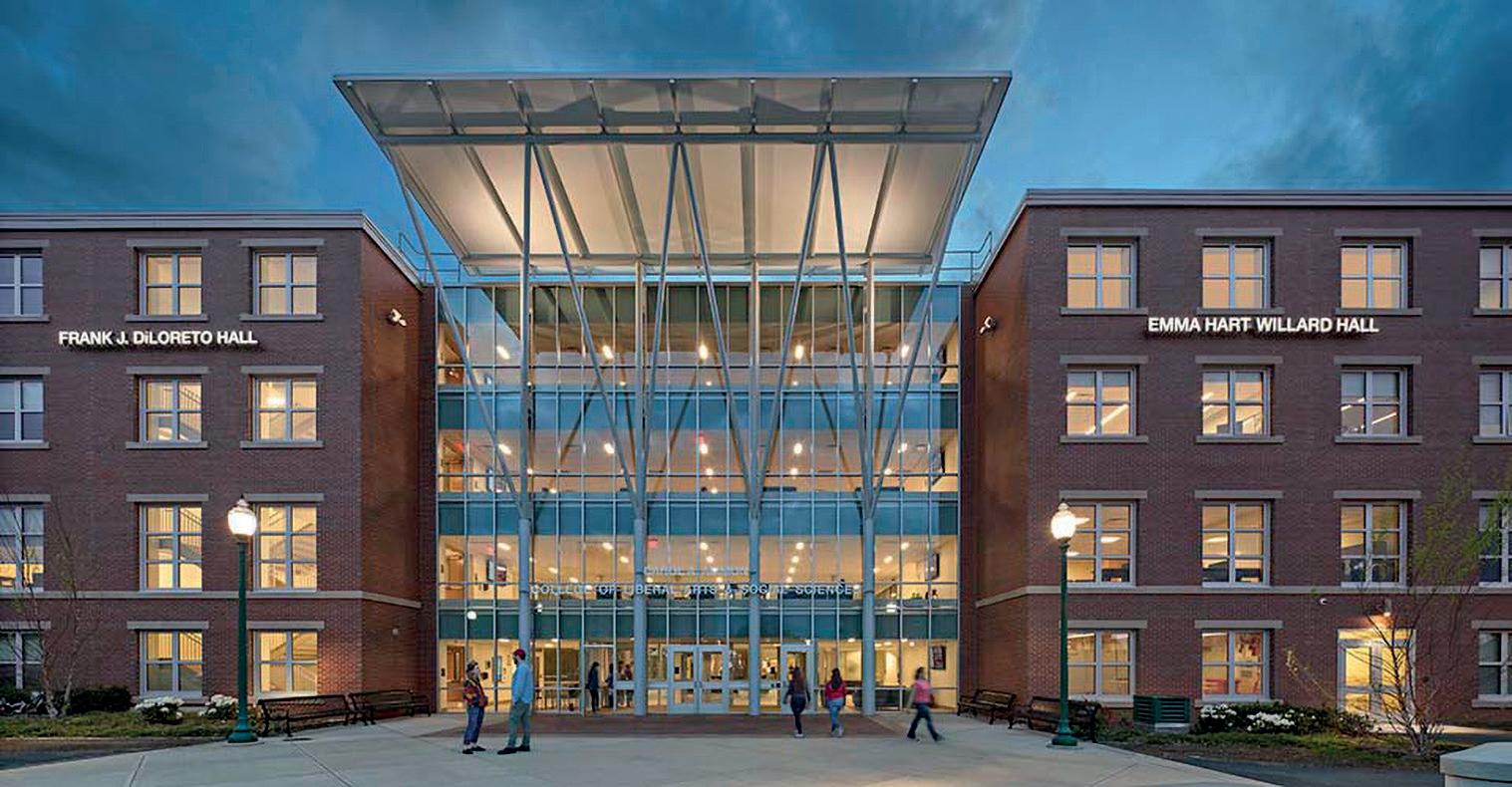
David highlights that the State of Connecticut was recently ranked number three in the country in terms of its physical schools and education provision. “We take great pride in the part we have played in the construction of some of these schools. Over the last seven years, we have built over a billion dollars’ worth of public schools and these are schools with incredible facilities. We’re proud of our contribution to our children’s education.”
From supporting children to giving back to the local community, Tom highlights the importance of philanthropic endeavors. “We try
We have to keep our finger on the pulse in terms of marketplace trends, and touch base with key trades and suppliers to keep our information as current as possible
“ “
to give back to the community, in some way, on all of our jobs. We employ local and minority workers, and promote community businesses. We also employ apprentices from the local area to build our industry from the ground up. The success of our company relies on qualified people and generating an excitement about our industry and the opportunities it affords.”
Over the last two years, the construction industry has taken a hit as a result of the pandemic, and particularly so, in terms of the

supply chain. “Critical pieces of equipment used to have an eight-to-12-week lead-time. Now, it can be as many as 60 weeks,” confirms David.
“To combat this challenge, as construction managers, we typically get involved in projects around the same time as the design team. We come together early to ensure we preorder materials well before we even think about the construction process. For example, we are currently carrying out a two-phase project in Killingly. Roofing supplies have proven particularly
problematic to procure, so Tom and his team put together a materials package to ensure those items will be available when we start the construction phase next year.”
“As we continue to see supply chain issues arising, we really have to drive the discussion during the pre-construction phase,” adds Tom. “We can deliver on time and within budget by procuring materials early in the process. We have to keep our finger on the pulse in terms of marketplace trends, and touch base with key trades and suppliers to keep our information as current as possible. It’s important to react quickly and make educated decisions to keep the project moving. We have initiated a procedure whereby all materials’ approvals are submitted way ahead of construction schedule. This approach buys a little time if we have to flex our processes.”
A pertinent example is the Martin Luther King Junior Campus renovation project. The city of Hartford was undertaking a redistricting plan and the timely renovation was pivotal to its success. Downes was tasked with radically reducing the project deadline at the behest of political funding. David explains: “I think it’s a real reflection of the determination and commitment of our team to have been able to put this project together. We took 168,000 square feet right back to the bare concrete. Not only did we have to do it in such a short time frame, but we were in the middle of an unprecedented, worldwide pandemic. We had to make significant changes to our safety set-up in addition to the usual complications of such a large-scale build.
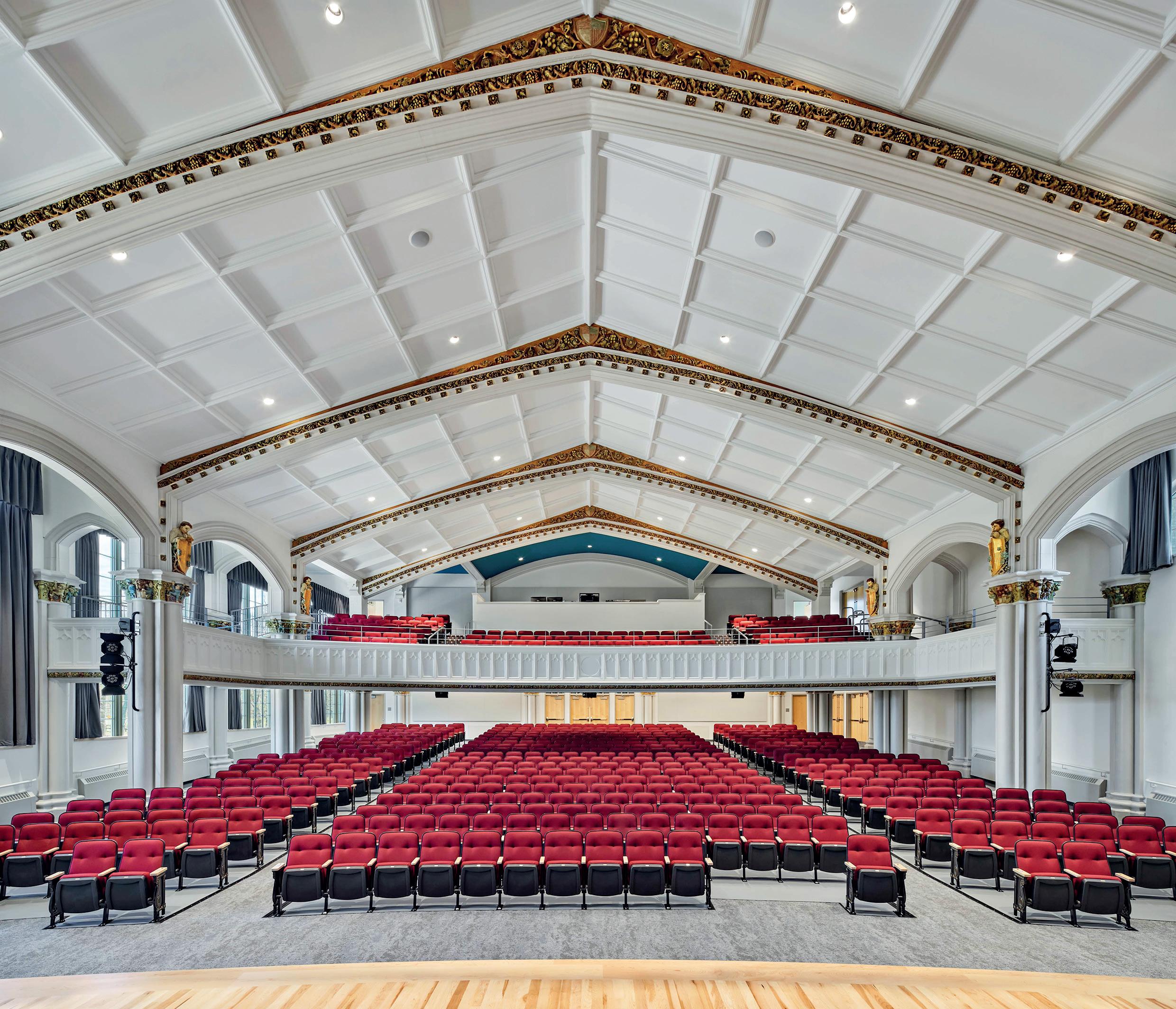
the impact of current market price hikes. “We need to be honest with our clients to eliminate the element of surprise. We also need to strengthen our subcontractor partnerships to ensure everybody understands the impact of those cost increases.”
Additionally, Tom is keen to highlight that the business is actively recruiting young talent to stay ahead of labor shortages. “We have a number of graduates we are mentoring in an effort to maintain and continue the growth and culture of our company.”
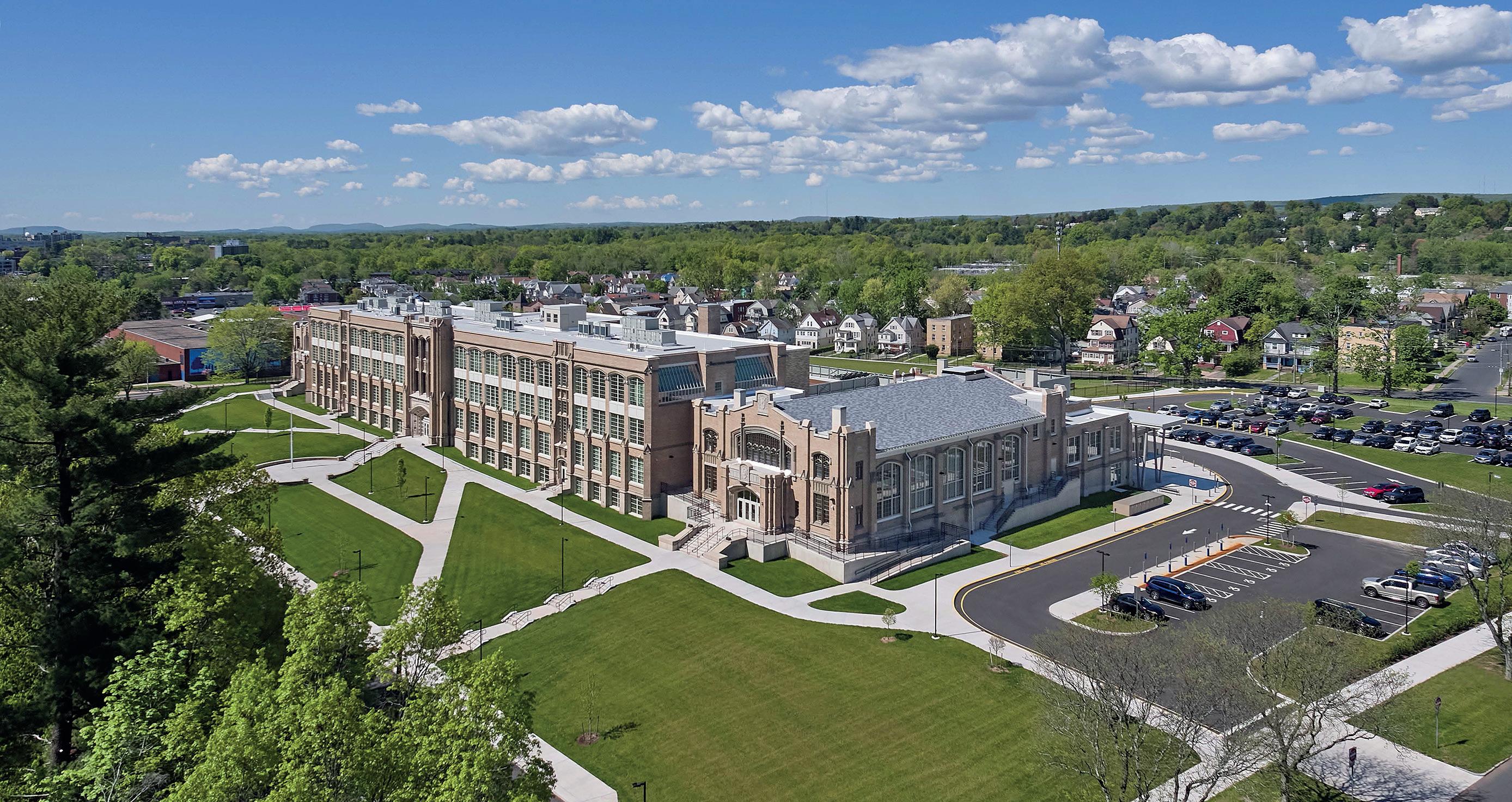
As David concludes: “We are now a major player in Providence, Rhode Island, in addition to our prominent presence in Connecticut. Over the next five years, I think we need to strategize the expansion of our geographic footprint. Businesses like ours need to grow, but we need to grow at the right pace so we can maintain the level of commitment, quality and service we provide to the clients in the markets we are in currently.” ■
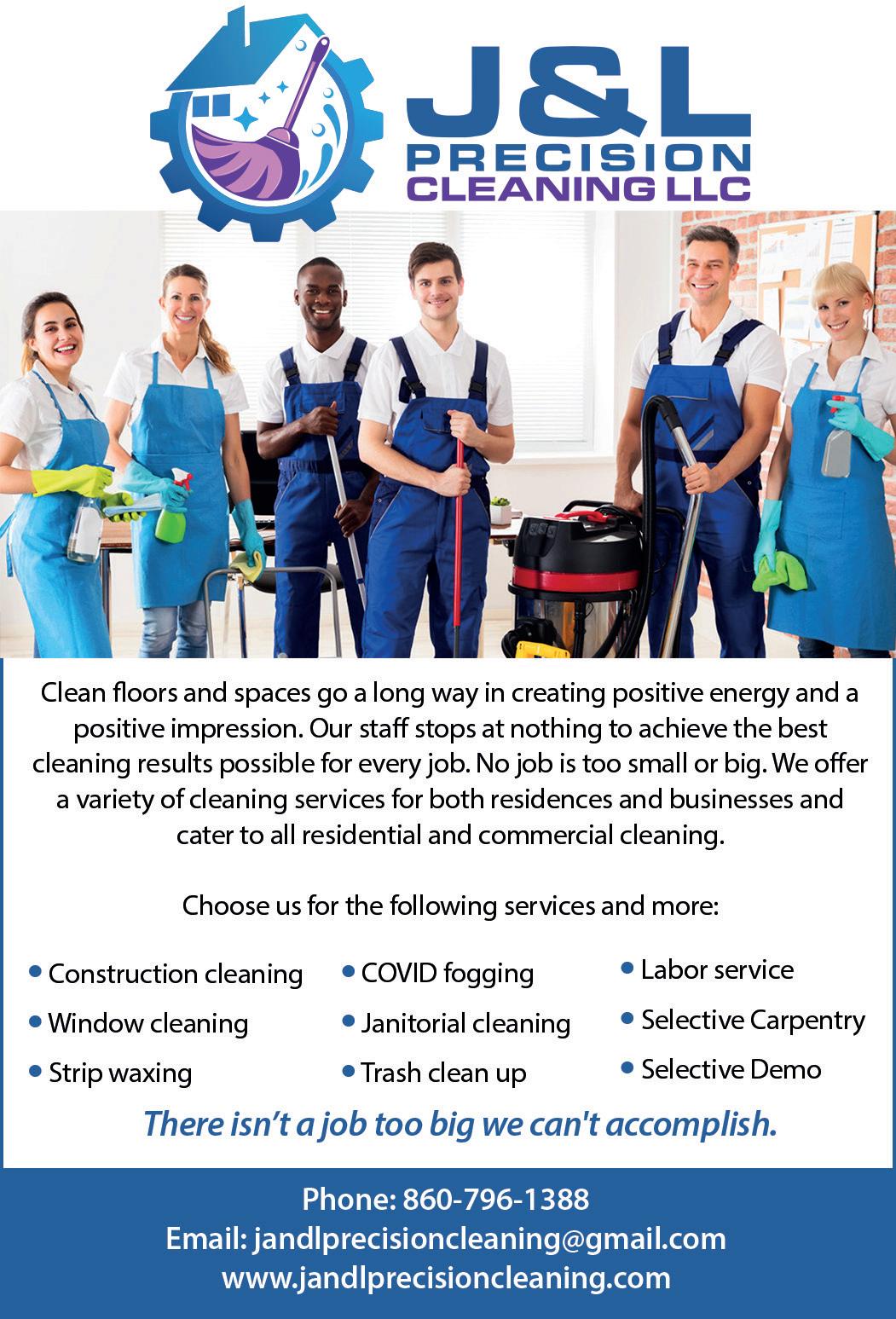
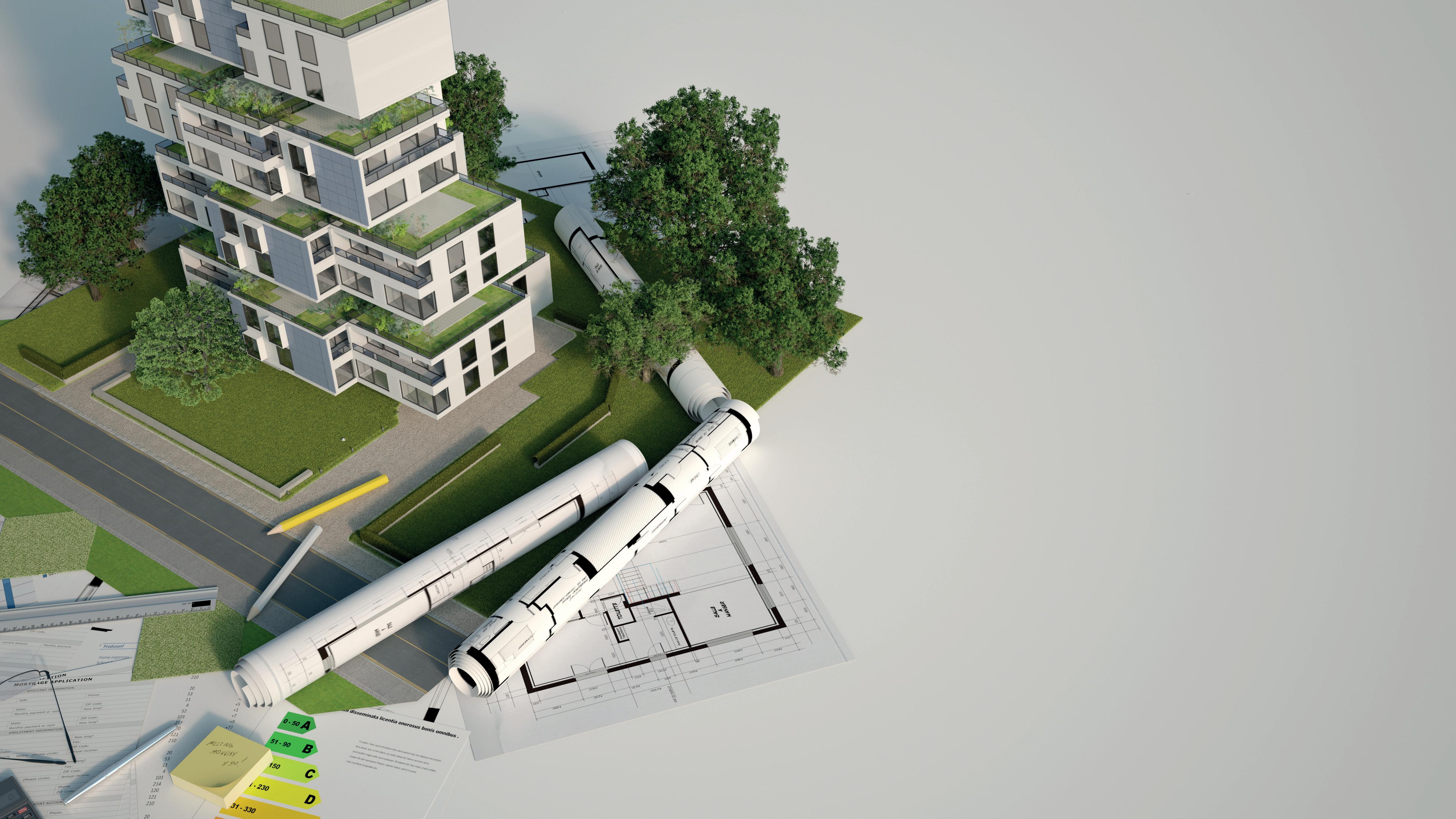
The construction industry, in its current form, has a significant impact on land, air quality, and water supply. Extraction, production, transportation, and the end-of-life of materials (including embodied carbon) all play a negative role in increasing the detrimental effects the industry has on the environment, particularly in the form of Greenhouse Gas (GHG) emissions.
As reported in the 2019 Global Status Report for Buildings and Construction, 36 percent of final energy use and 39 percent of upstream GHG emissions globally are buildingrelated. Needless to say, something needs to be done.
Fortunately, however, companies like Nexii Building Solutions (Nexii) exist and want to positively disrupt the industry through sciencebacked innovation and green construction methods. Gregor Robertson, Executive Vice President, Strategy and Partnership at Nexii, recently sat down with us to talk all things green building, and how the company intends to blaze new trails with groundbreaking and less carbon intensive materials. “Nexii stands out for a number of reasons,” he begins. “First, there is our building process. We precision manufacture our buildings offsite and then rapidly assemble units in situ, reducing build times to a fraction of conventional equivalents.
“Our methods are also less carbon intensive,” he goes on. “Nexii walls have an average of 31 percent less embodied carbon than conventional construction, and our builds produce near-zero on-site construction waste. This is all part of the circular economy model that guides the firm; we design for reuse, rather than waste and demolition, creating a circular construction ecosystem.”
As Gregor has alluded to, Nexii designs and manufactures low carbon buildings and products to reduce the climate impact of the built environment – the one in which we live, work, and spend time with our families. With the current industry standards for GHG emissions, a sustainable and scalable solution is not only necessary, but urgently required.

Established in 2019, Nexii has grown dramatically in three short years. Ben and Michael Dombowsky, two inventors and brothers that have worked in the construction industry since the 1970s, knew the status quo had to shift. Over the years, they became troubled by the huge amounts of waste and inefficiency within the industry and, more recently, the evident impact these were having on the environment.
Michael, who now serves as Vice President of Building Technology at Nexii, experimented for many years with various efficient construction techniques before creating what eventually became Nexii’s patented building system. When Stephen Sidwell, the current
Nexii Building Solutions: a guide to green building breakthroughscompany CEO, was introduced to the Dombowsky brothers by a mutual friend, all the pieces of the puzzle seemingly came together. The rest is history.
Three years later, the company has gone from strength-to-strength. Last year, Nexii became the fastest Canadian company to ever reach unicorn status and now is valued at $2.05 billion. With over 400 employees and three manufacturing plants in operation, Nexii has the capacity to work with international clients of the highest level.
“Nexii has forged alliances with world-leading brands, including Siemens, Honeywell, Trane Technologies, Pella, and Solar Earth, a prominent solar panel manufacturer,” Gregor details. “By combining our building systems with pioneering technologies, we can make the concept of net-positive energy buildings at scale a reality. At Nexii, we are fundamentally reinventing the way the world builds.”
By reinventing, Gregor means constantly innovating and working on solutions to further decarbonize the
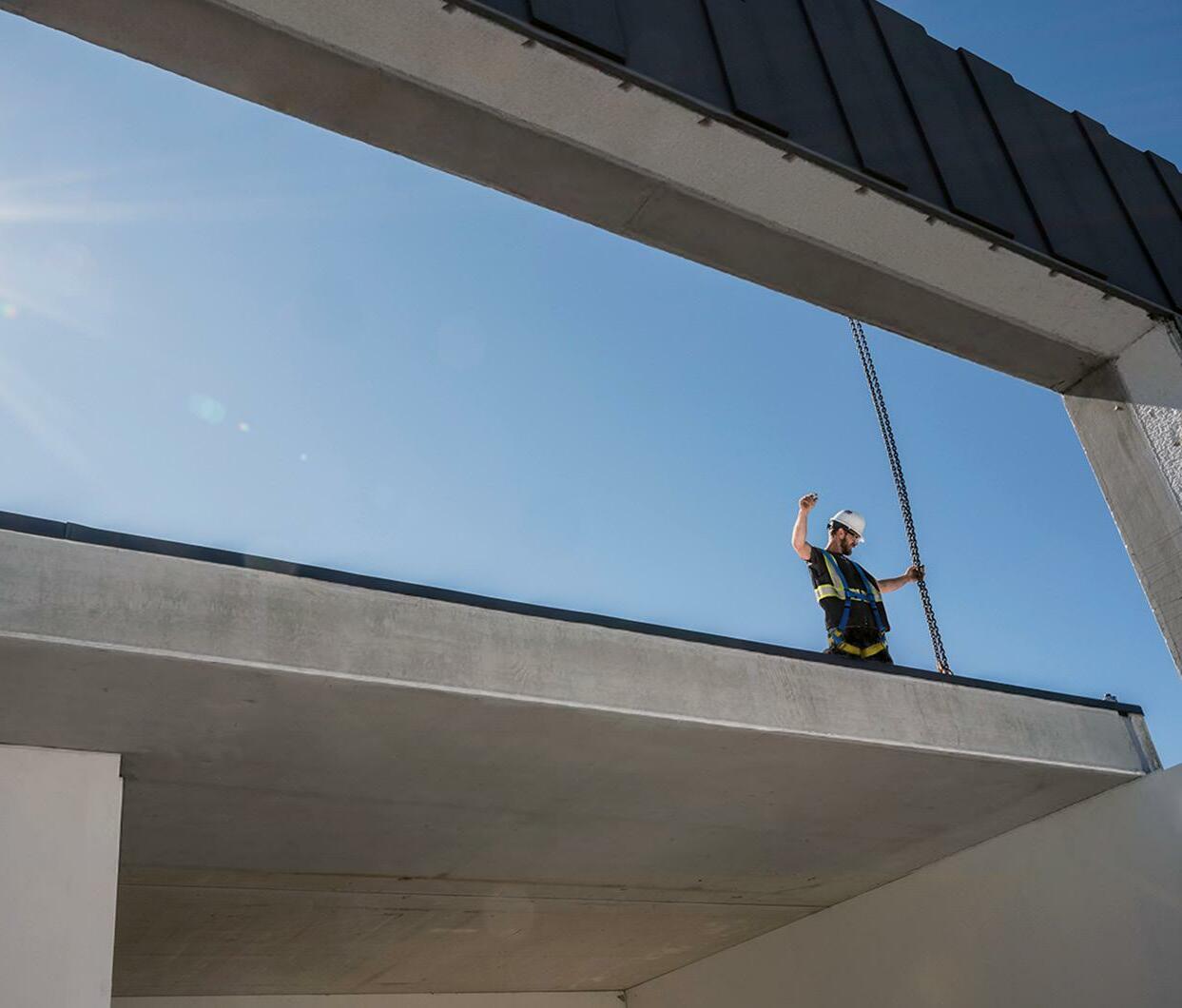
built environment. At the core of that mission is Nexii’s breakthrough material, Nexiite, and the Nexii building solution, which enable rapid assembly of high-quality buildings and infrastructure with reduced end-to-end toxins and carbon emissions, near-zero waste, and less disruption to the community.
Gregor is keen to talk us through the firm’s innovative proprietary concrete mix. “Buildings and construction are the number one cause of pollution across the globe,” he asserts. “In addition, concrete is the second most consumed resource; production of the material emits more than two billion tons of carbon each year. As a more sustainable alternative to conventional concrete, Nexiite and Nexii’s building solution cuts construction waste to a minimum, slashes build times, and significantly lowers both the embodied and operational carbon of buildings.
Saint-Gobain ADFORS (ADFORS) is an industry leader in manufacturing and distributing technical textiles to the construction and industrial markets. Its strong expertise in fiberglass technology is coupled with extensive knowledge in weaving, knitting, mat-forming, and coating. By utilizing the latest technologies, ADFORS can create fabrics that possess specific characteristics. As a result, its customers have access to a wide range of customizable solutions developed using years of experience.
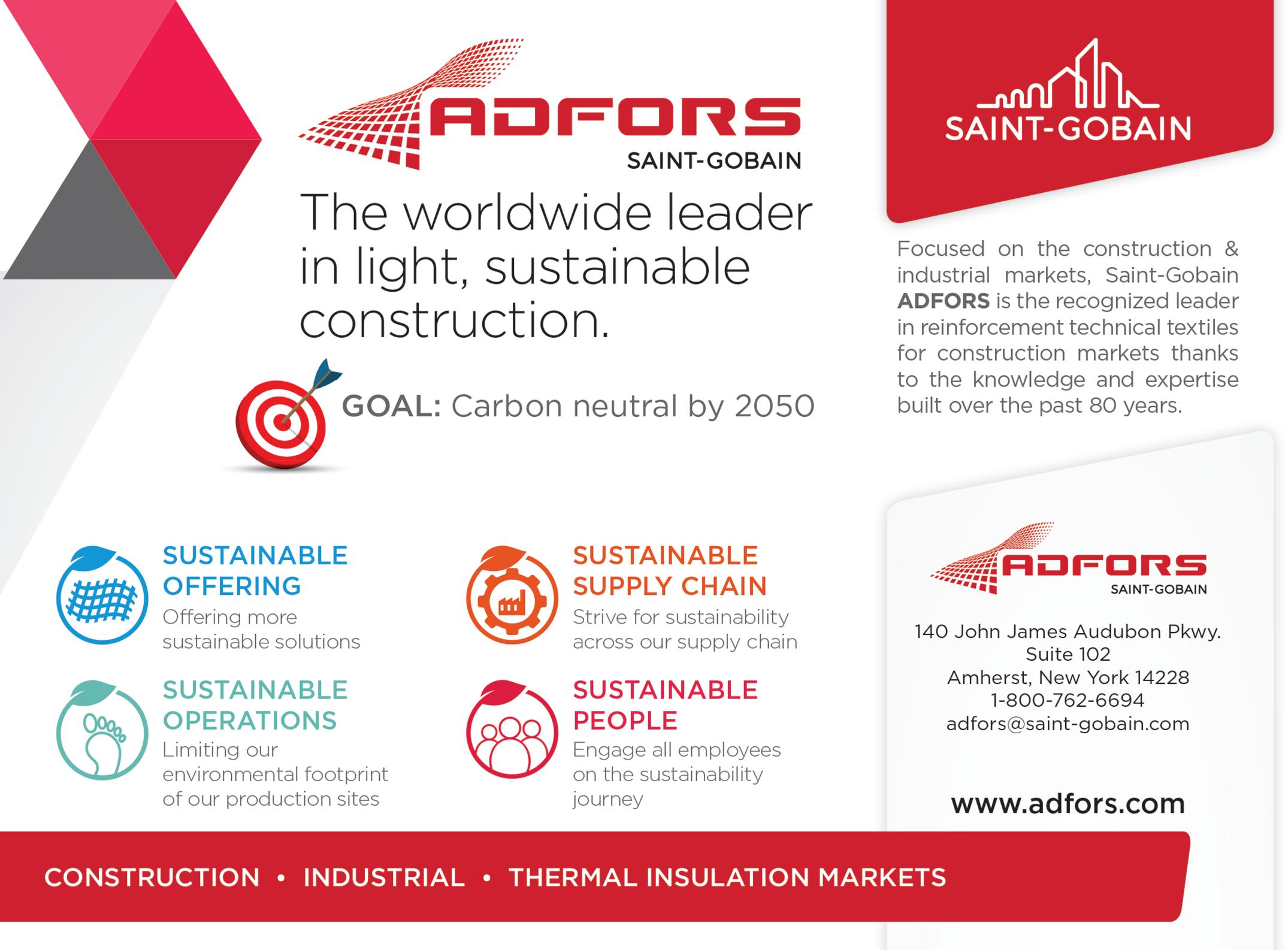
“The mix is comprised of sand, high-quality aggregate, and a binder,” Gregor adds. “This composition facilitates a rapid curing process, attaining higher compression strength faster than concrete. Moreover, it has up to 36 percent lower carbon emissions during production when compared with typical Portland concrete. We use Nexiite in our panels for external and internal surfaces that encapsulate an insulating core and supplement structural reinforcement. This adds more strength to Nexii panels, which weigh 15-to-20 percent less than pre-cast concrete, but are more robust, thus leading to lower costs and a reduced impact for transport, installation, and deconstruction.”
But innovative solutions harnessing the power of Nexiite do not begin and end with building. They go much further. Recently, for
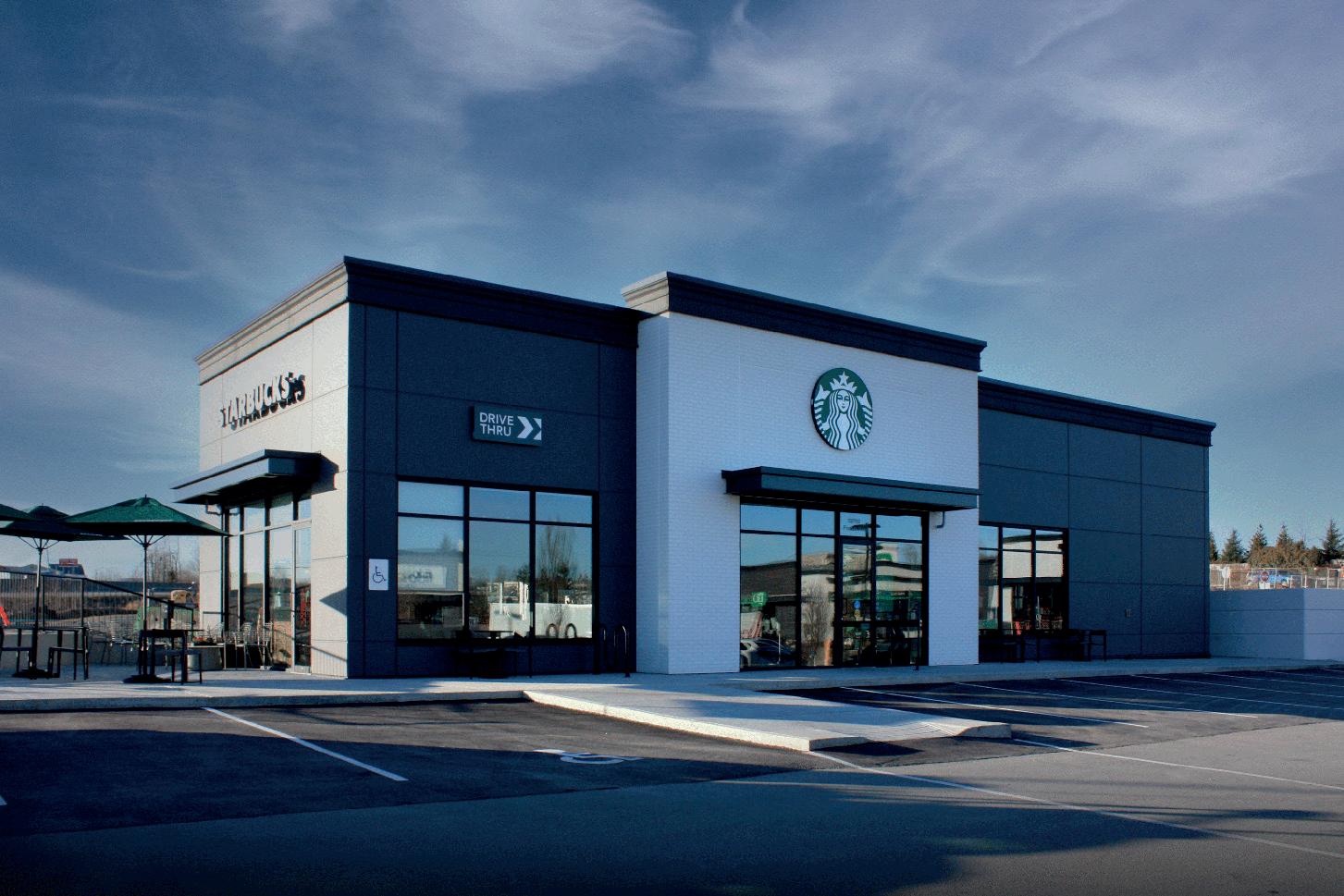
instance, Nexii entered a partnership with Siemens to pioneer the future of Electric Vehicle (EV) infrastructure deployment with an industry-first sustainable charging prototype. Together, the two companies created and patented a piece of equipment (VersiCharge XL) that will make installing EV chargers faster, and more cost-effective, while reducing any environmental impacts.
“The prototype is designed for electrifying fleets and high demand charging applications like football stadiums,” Gregor reveals. “The EV charging prototype design enables quick installation at scale, allowing for fast expansion to meet the growing demand for EV charging infrastructure. Typically, EV charging units would need to be built underground, causing disruption to both the land and the environment.
“However, the above ground design of this prototype allows for minimal disruption to both land and environment and reduces on-site construction waste,” he explains. “The sustainable unit is built using Nexiite, and is developed as a modular design. Overall, it represents the first in a long-term Nexii partnership program that will focus on expanding green building for low-carbon innovations across myriad industries.”
As mentioned previously, Nexii has experienced truly impressive growth. In less than 31 months, the company reached a billiondollar valuation, and since then it has shown no signs of slowing down.
“We have a number of exciting projects under way across North America, and people can expect to hear about them in the next few months,” says Gregor. “We are focused on
scaling up our manufacturing to bring Nexii’s
more markets, enabling us to better meet the
“Indeed, focusing on the way we build is a key climate solution,” he concludes. “To solve just come from heating and cooling, but from construction processes. At Nexii, we are led by our goal to build a vibrant future for people and the planet. Our building products demonstrate that it is possible to use durable, sustainable materials that can withstand deconstruction, reconstruction, extreme weather events, and

www.nexii.com
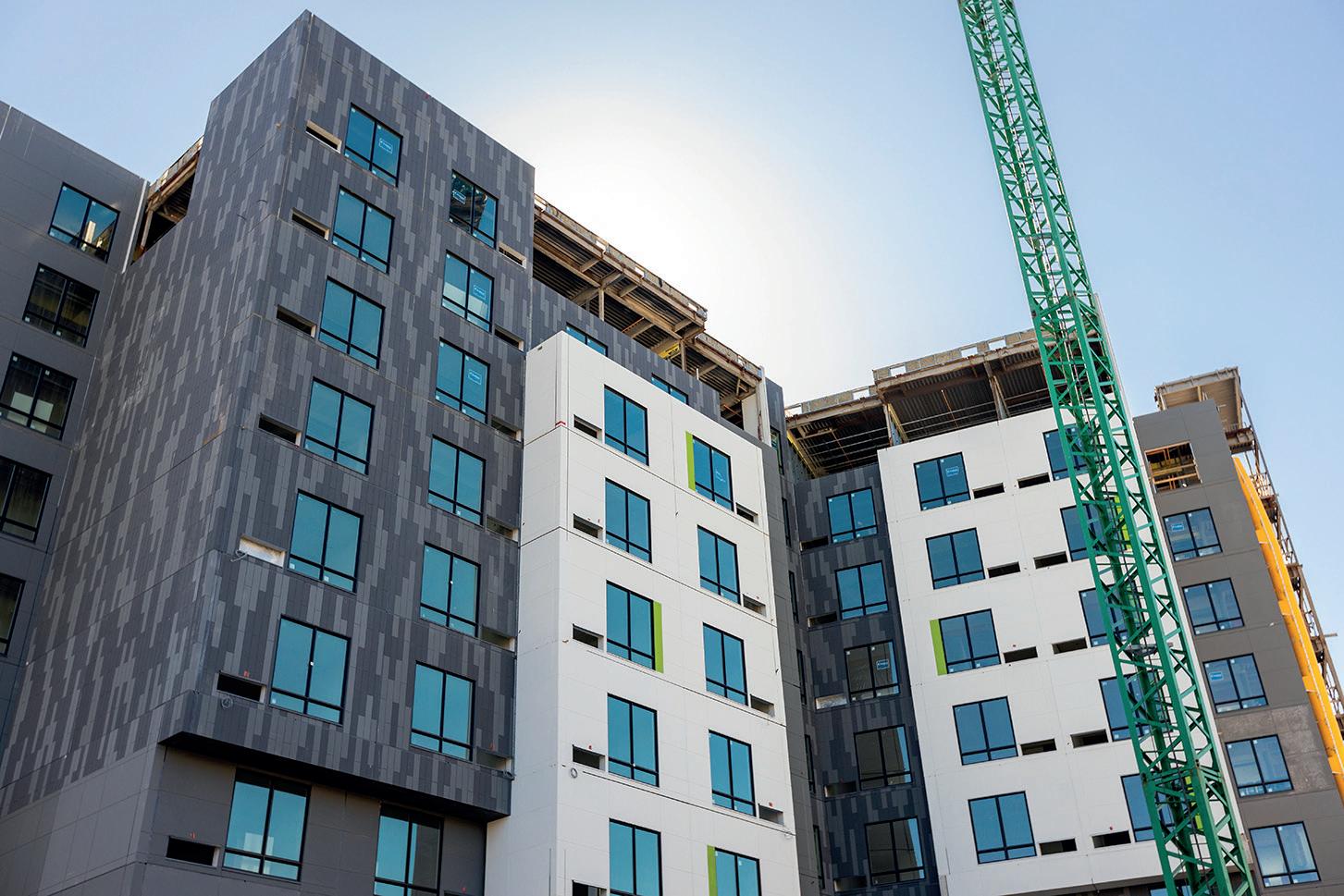
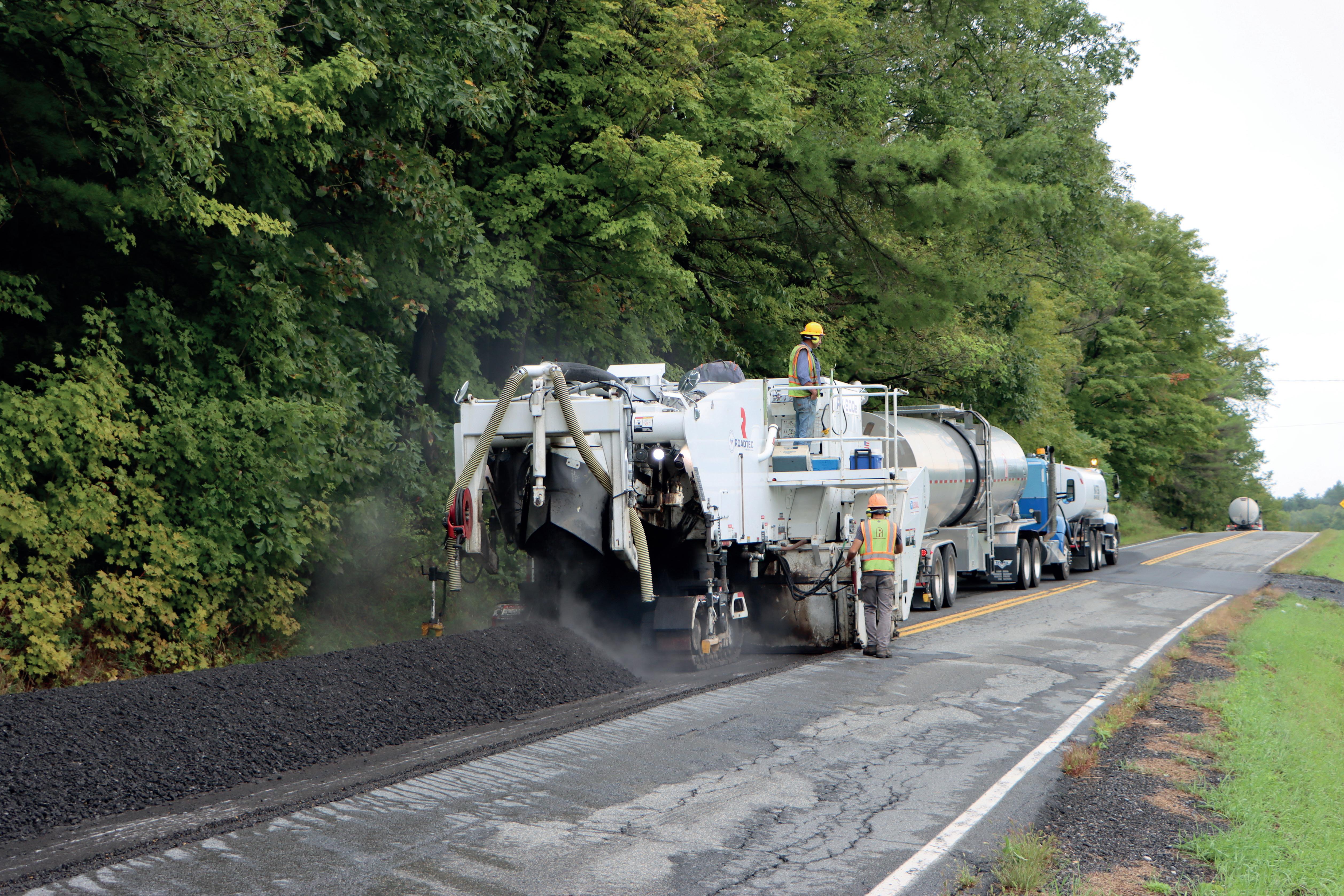 Peckham Industries, Inc., is cementing its Centennial by growing safety, culture and sustainability
Peckham Industries, Inc., is cementing its Centennial by growing safety, culture and sustainability
Although it has been owned and managed by the Peckham family since its foundation in 1924, Brewster, NY-headquartered Peckham Industries, Inc., (Peckham) does not exclude outside talent in its drive to develop and supply roadway construction materials, including hot and warm-mix asphalt, cold-mix asphalt and chip seals.

“My Dad successfully converted Peckham back into a private company and he really was
the visionary behind our growth over the past 15 to 20 years,” says Gregory Peckham, Senior VP and General Manager. “Now, with Damian Murphy coming on board as CEO, we are looking forward to continued growth but with a different perspective. Working in a family business can be tough; you only know what you know internally – you don’t have that outside experience that Damian is bringing.”
Peckham can take pride in a low level of staff turnover; most of its senior team has over 35 years’ experience with the company.
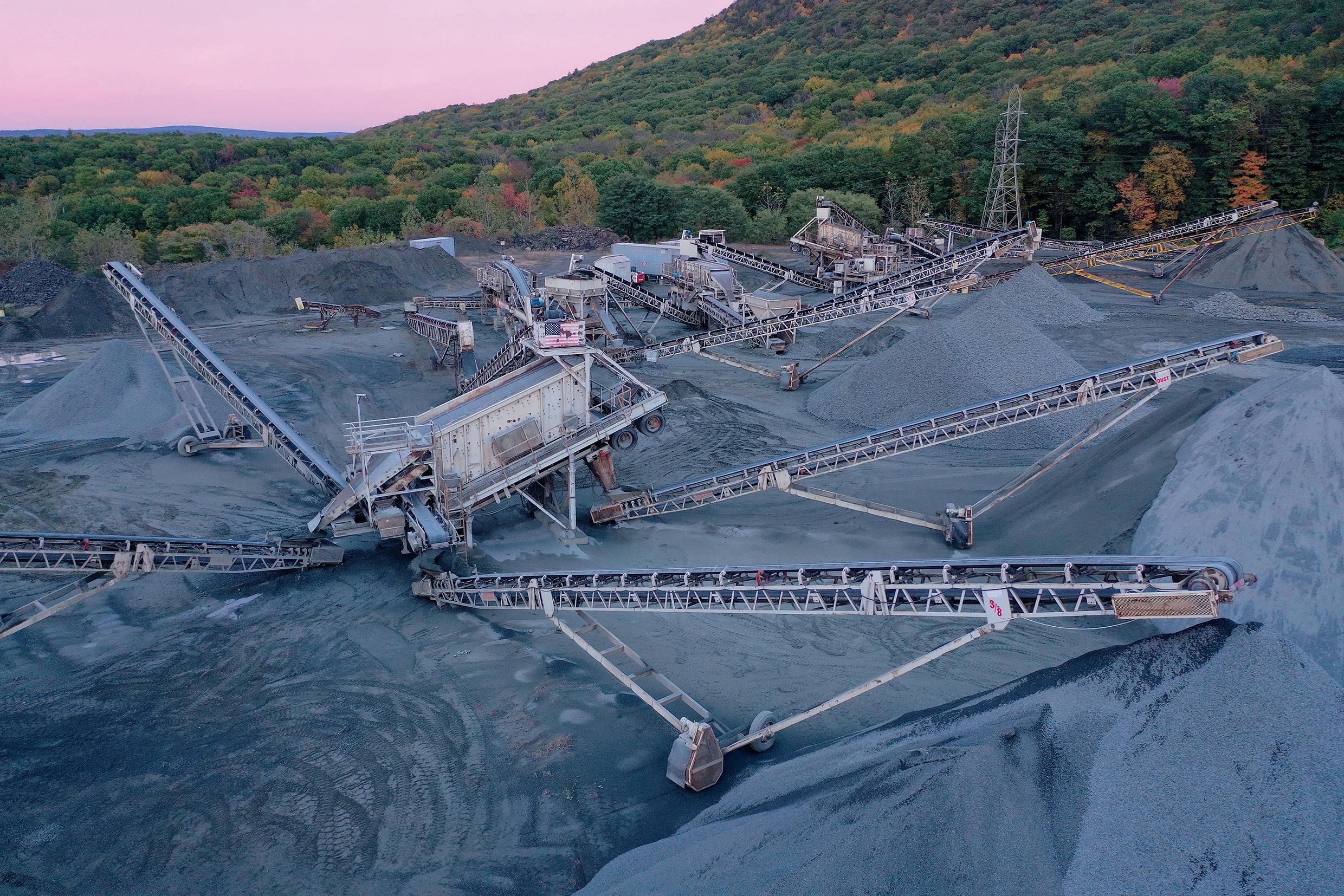
“We have a culture of Family By Choice, which means many things to us, like getting to know everyone and caring about the community,” Gregory continues. “You work with someone for 35 years, they really are part of the family! We have a fantastic group of younger and energetic talent, also, and when people come into the company they see the relationships that have been built and enjoy being able to share in that.”
Peckham started out as a construction company and, over time, evolved into the materials business that remains its primary focus today. Damian Murphy had over a quarter of a century of experience with aggregates and materials supplying companies when he joined in March, 2021. With his appointment, the company is seeking to maintain and build on the qualities that have made it the leading supplier of construction materials in eastern New York
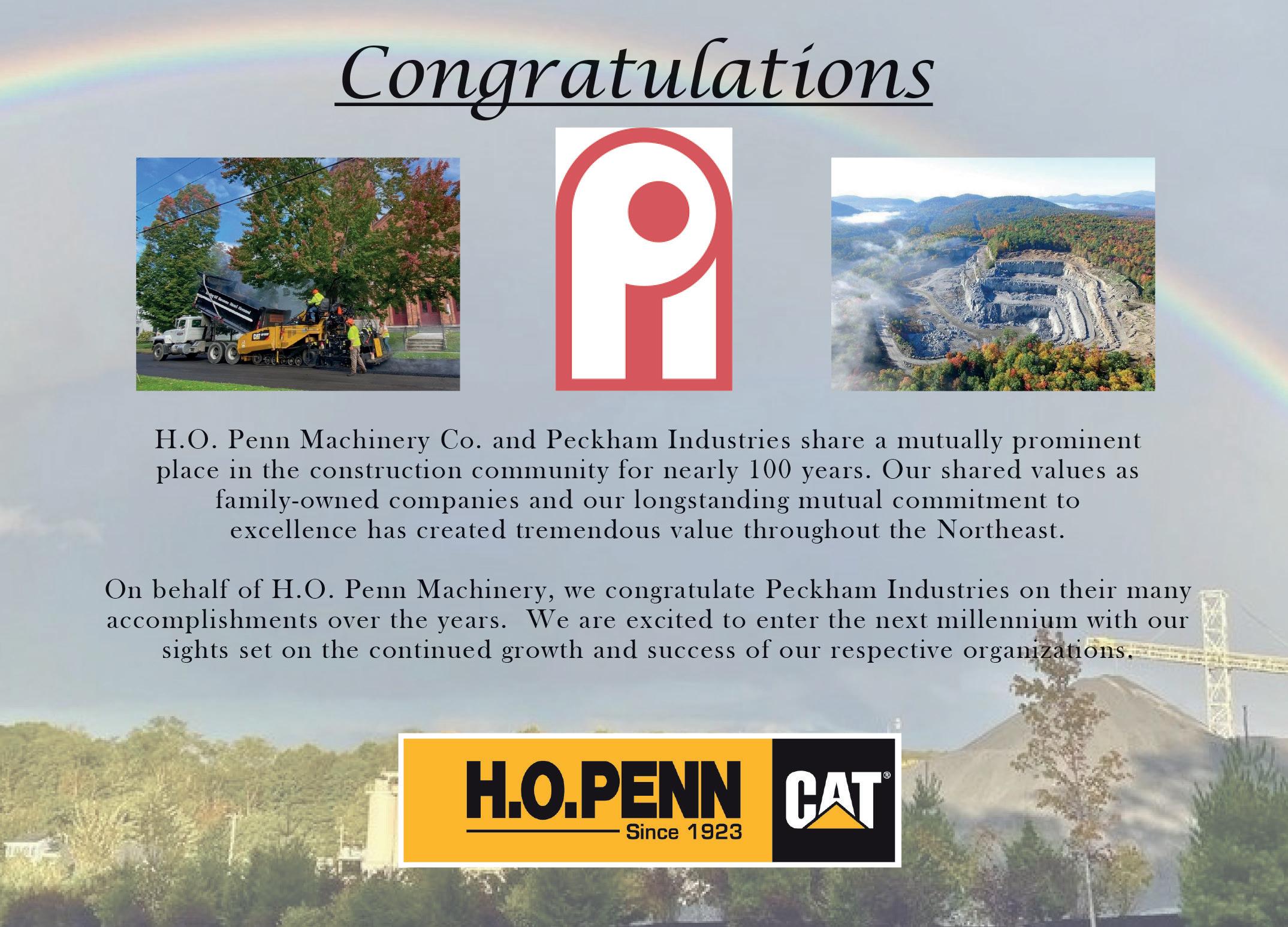
State and western New England. The company sources stone from its own quarries and produces hot mix, warm mix and cold mix asphalts, mixed concrete and construction liquids, mainly for applications in road and highway construction and maintenance, in plants extending as far south as The Bronx, NY, through the Hudson River Valley to Warren County, NY, as well as in Western MA, RI, CT, and southern Vermont. It has around 900 employees and revenues in the region of $500 million. Its latest adoption was of leading aggregate producer JSL Materials, in 2020. Its integration has considerably expanded opportunities for the company in the region.
“We are a materials business, first and foremost. We are looking to grow our resources on aggregates and the hot-mix side of the business as that is where we

believe we can add the most value for our customers,” he declares. “There are tremendous opportunities where we can supply the right products to people in specialist areas such as sea wall projects, environmental improvement, wind power turbines, and more. There is so much going on in the North-East right now. We are determined to be a supplier of choice to all
‘Sustainability’ and ‘environmental sensitivity’ may not be words immediately associated with highway construction, but Peckham is on a mission to change that. It is proud of its commitment to environmental stewardship, which it demonstrated when it joined the Wildlife Habitat Council and pledged to build a set of voluntary conservation activities – but it goes further. Sustainability is becoming embedded in its culture and operations.
It is a leader in developments to boost sustainability in construction and a strong proponent of using recycled materials, primarily (but not exclusively) Reclaimed Asphalt
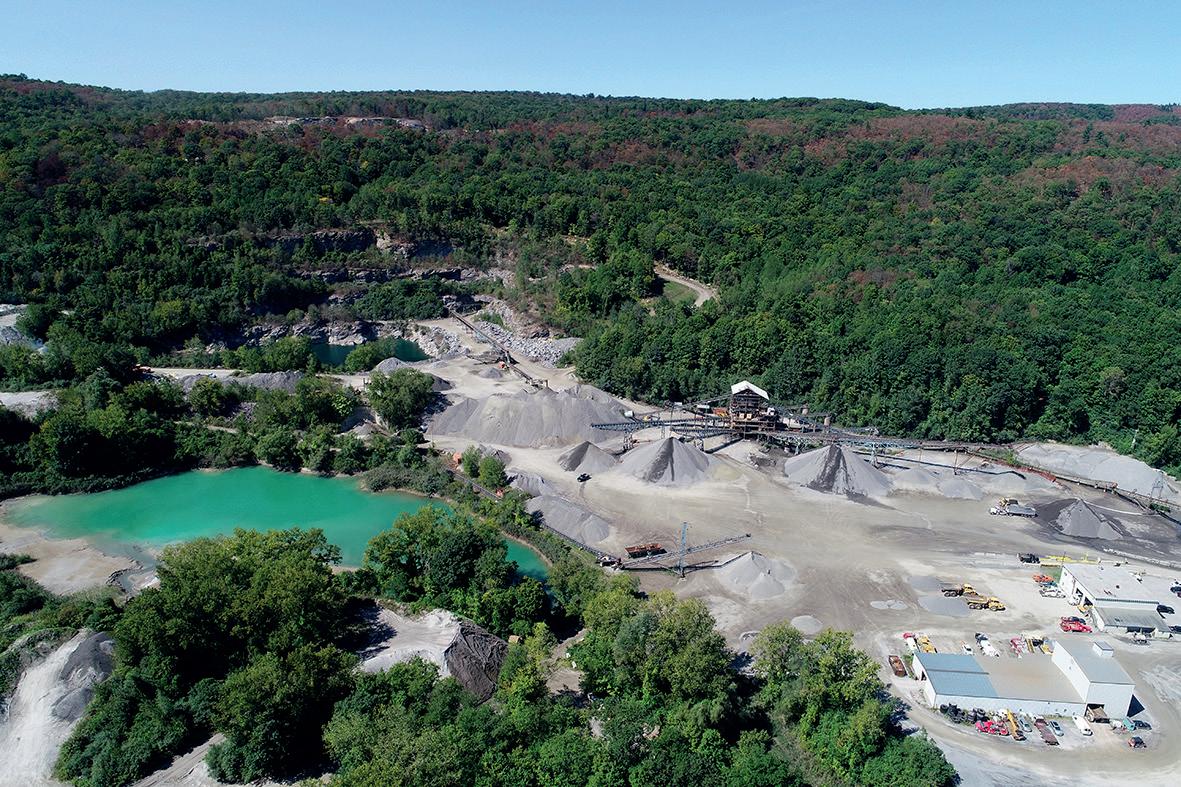
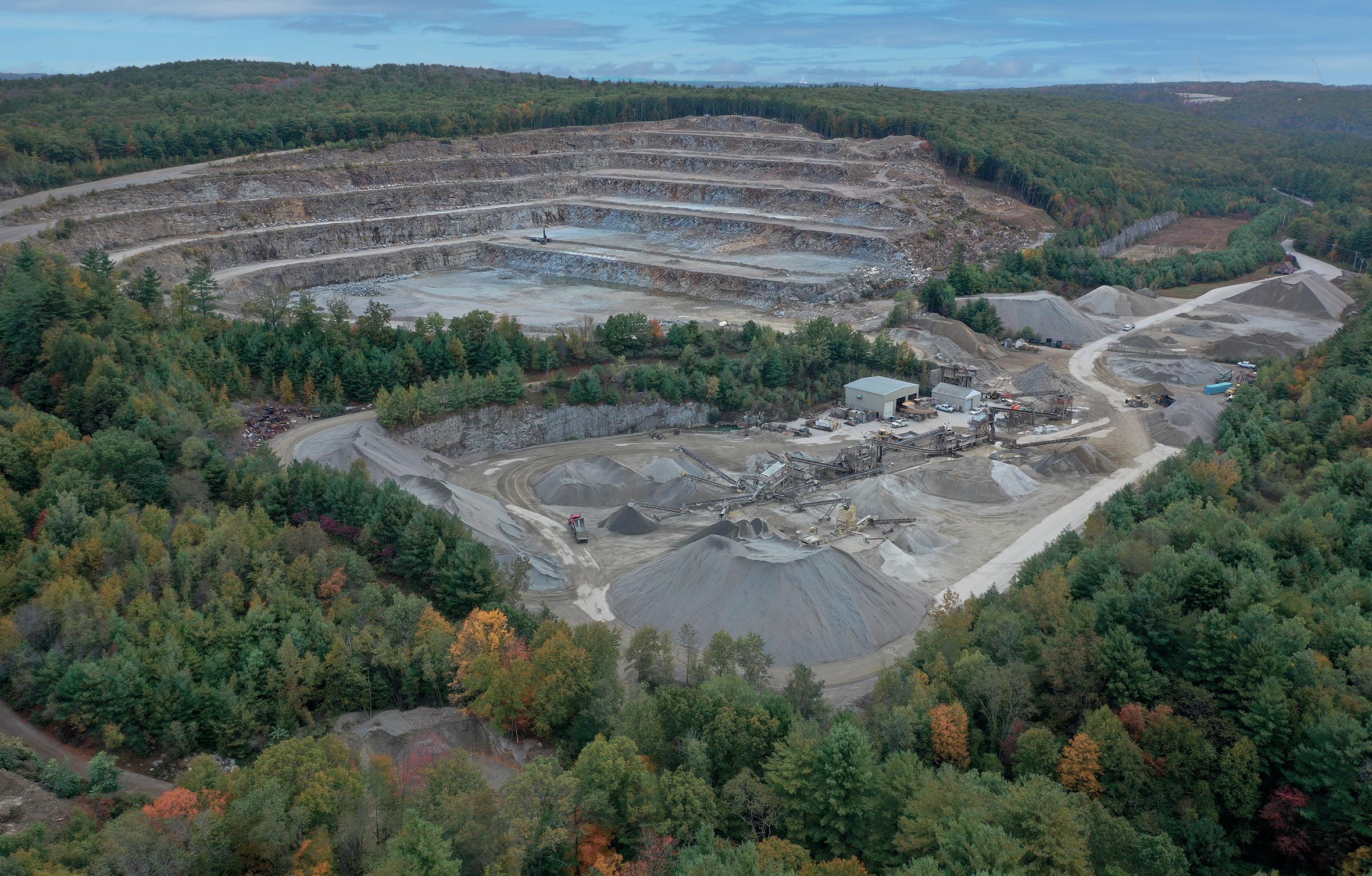
Pavement (RAP) in pavement construction, repair and maintenance.
“Our approach is two-fold,” Gregory says, and goes on to explain how. “Part is partnering with the states, Departments of Transport (DOT) and municipalities, to educate on the tremendous resources and opportunities there are out there to use a greater proportion of recycled materials in our products. Currently, New York and Vermont states typically cap recycled material approved for roadways at 20 percent; we have undertaken some experimental projects with municipalities in New York to increase that to 40 to 50 per cent in our hot mixes. We also have some alternative products we are working on that are ‘recycling in place’. We offer a very low carbon emissions alternative to hot mix paving, which greatly reduces the trucking resources needed. It’s a win-win for everyone and I think we will see that grow throughout the North East and probably across the country.”
Focus on family Peckham has already implemented techniques and technologies that improve the resilience of pavement surfaces and cut the time needed for repair. Being delayed in traffic threading its way through and past repair gangs has to be among the top bug-bears of the travelling public, so every minute saved is to the good.
Chip seals are an excellent and economical preventive maintenance and pavement life extension treatment. They consist of waterbased asphalt emulsion applied to the roadbed and cover stone, which is placed over the asphalt film. Deposit rates are much higher than conventional hot mix paving, enabling coverage of up to 50,000 square yards a day, at savings approaching 75 percent. The pavement can be rolled and reopened to traffic the same day. Chip seals are a low-temperature, environmentally sensitive process that reduce emissions and fumes, and
can be combined with advanced polymers to further increase durability.
Peckham is invested in its community, through various projects from rebuilding a library destroyed in a fire to renewing vital assets like fire houses.
“We try to be a good neighbor, keep things clean, reduce noise and support our communities. An immediate goal is to achieve zero notifiable safety incidents,” Gregory says. Peckham believes that its success will be driven first and foremost by its Family By Choice culture. To the business, that means a culture where every member can be themselves without fear of judgement. Everyone is obligated to live Peckham values and maintain a culture of respect and security that distinguishes this Family Business from the rest. ■
www.peckham.com
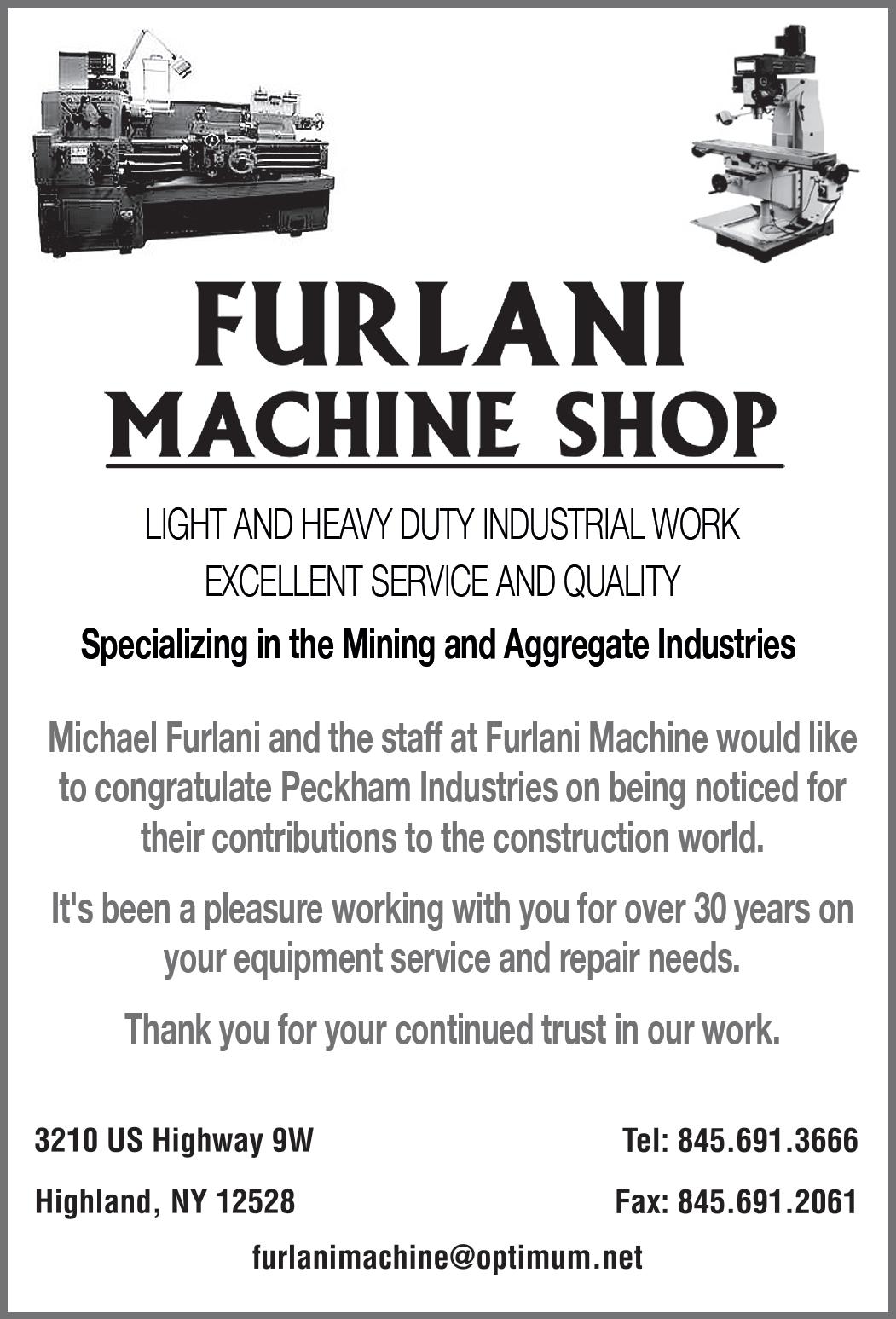


The sunshine and beachfront views are a beloved characteristic of Florida. Accordingly, the state is an immediate favourite for holidaygoers and those looking to start a new chapter in a warmer region of the US. This is why Seach Construction has become an expert homebuilder and contractor in the area. The company is on a mission to build the finest residential and commercial spaces. Founded by David Seach, Seach Construction came to be one of the pioneering companies in the construction industry within the US. 0 learns about the level of projects the company has undertaken since its inception, with particular attention to the ones of which the business is most proud.
Seach Construction, which specializes in large scale commercial projects, hosts
an extensive catalogue of services, with a particular skill in planning, zoning, permitting, site development and building.
Presently, the business is working on a landmark building in Jupiter, Florida, named Cornerstone. “I’m super excited about this one. We’ve been planning it for years, and it’s such an amazing building in the heart of Jupiter, that I had to buy one,” says David Seach, the company President. “It’s going to be a Platinum Certified Green with the garage completely covered in tall palm trees and lush landscaping. Roof top amenities include a pool, spa and palm trees with amazing views of the intercoastal waterway and the Atlantic Ocean. There will be 15 residential condominiums, averaging 3,000 square feet, with high ceilings and lots of glass to showcase the beautiful views of the waterway. There will
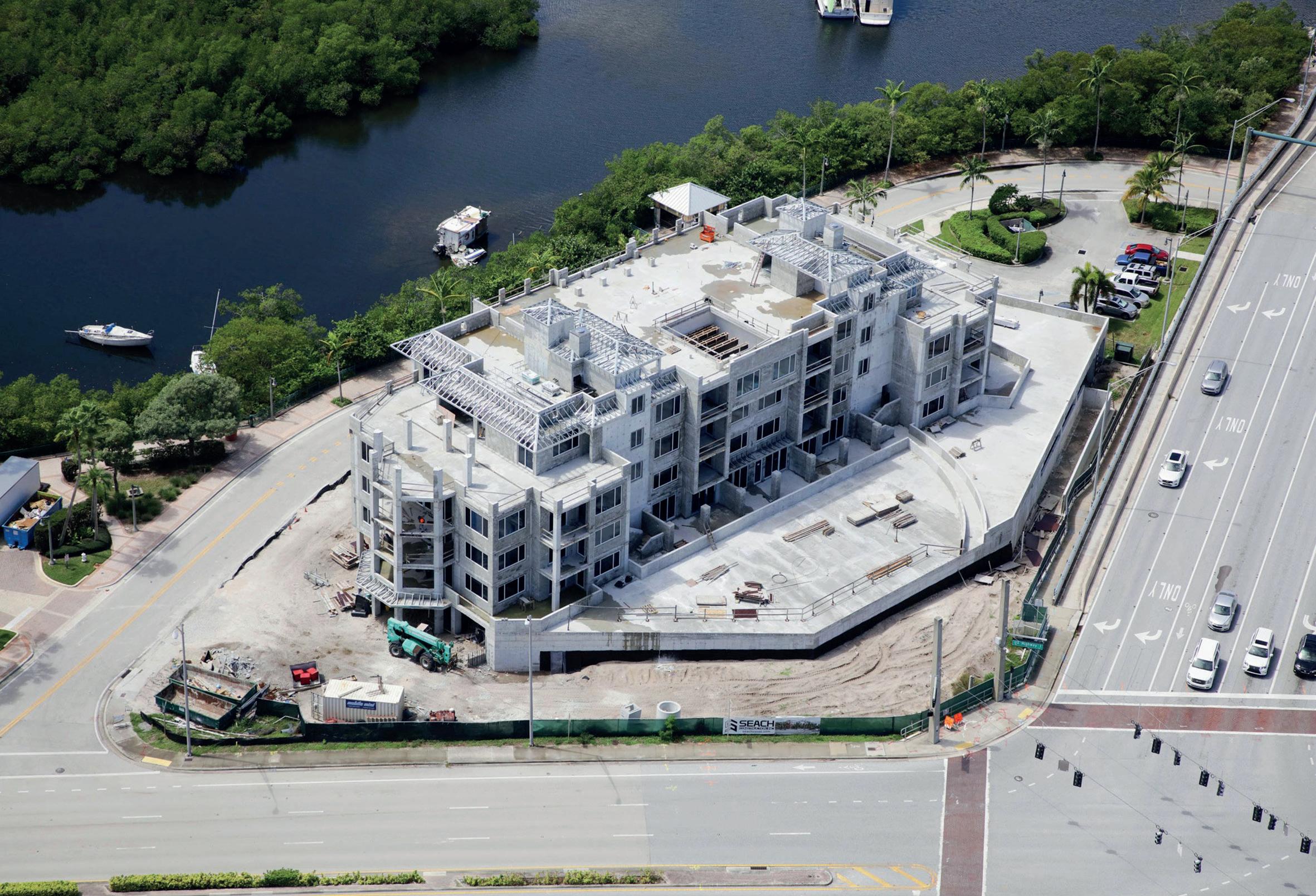
also be 2,500 square feet of retail space on the ground floor. The private elevators open directly into the units. On the ground level, each owner will have two secured garage spaces with electric car charging at each space. There will be a fitness room, social room, conference room, private offices and storage areas,” says David.
When asked for his thoughts on living in a building with his customers, Seach replies, “I have no reservations. I’ve met each of the buyers and what a great group of people. It’s a pleasure to work hard and do a great job for such nice people. I did it before in 1995 when I built and lived at Jupiter by the Sea for five years. I’m still in touch with some friends that still live there. That project consisted of three eight-story oceanfront condominiums.”
Seach Construction has another luxury condominium in Jupiter near the ocean that is currently in the planning stage. Seach will
keep the same design team, Robert Swedroe Architects in Miami, RGD Engineers in Jupiter will design the mechanical, electrical, and plumbing, and Jezerinac Group in West Palm Beach will be the structural engineers. About the next project, Seach says, “We’ll
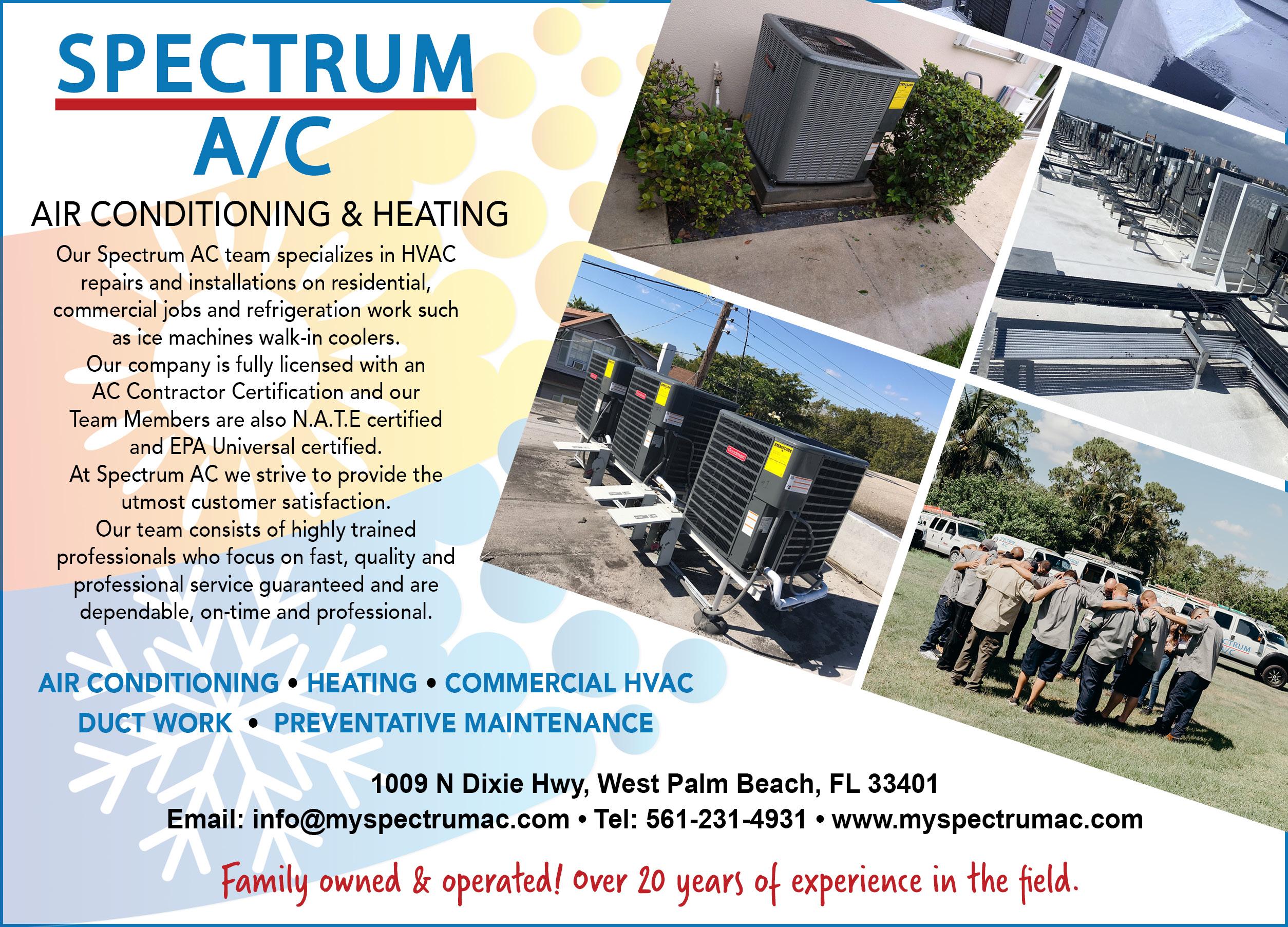
continue to
We’ll continue to strive to stay at on the edge of innovation and quality by integrating the latest technology into the luxury lifestyle that we deliver to our buyers
strive to stay at on the edge of innovation and quality by integrating the latest technology into the luxury lifestyle that we deliver to our buyers.”
Other past projects include a 45,000-square-foot commercial office condominium consisting of the construction of two three-story office buildings, site work and utilities. The work for the Airport Professional Centre, located in West Palm Beach Florida, was a great success for the company and showcased its ability to pay attention to the finer details.
There was then Gateway Gardens, located in Palm Beach County, which is a 107-lot subdivision. The development consisted of planning, zoning, permitting, and building. The construction involved excavating lakes, building underground utilities, roads, and site amenities, including a commercial clubhouse and pool, tennis court, site walls, landscaping and parking lots. The project is known as LeChalet MUPD, located in Palm Beach County. Following this, the company
successfully completed and sold a mixed-use, six-acre planned commercial development, with 60,000-square-feet of commercial, retail and office space.
Taking this a step further, the business worked on a townhouse project consisting of four buildings that housed 31 units. It was held as a rental property that was owned and operated by David, later converted to condominiums, and sold. The project is known as Poinciana Place Villas.
The business then went on to develop, build and sell Jupiter by the Sea Condominium, a 36-unit condominium project. The construction process involved building three eight-story oceanfront buildings, underground utilities, road construction, and constructing site amenities, including a commercial clubhouse and pool, tennis courts, site walls, landscaping, and parking lots.
In addition to its extensive condominium home builds, the company is also an expert

in multi-family residential projects. Seach also developed and built a 320-unit luxury rental complex, involving 16 three-story buildings containing 20 units each, and involved underground utilities, road construction, and site amenities, including a commercial clubhouse and pool, tennis courts, site walls, landscaping and parking lots. The project was known as Polo Chase in Palm Beach County, and received eight awards for professional achievement in lifestyle and marketing. The name was later changed to Solara.
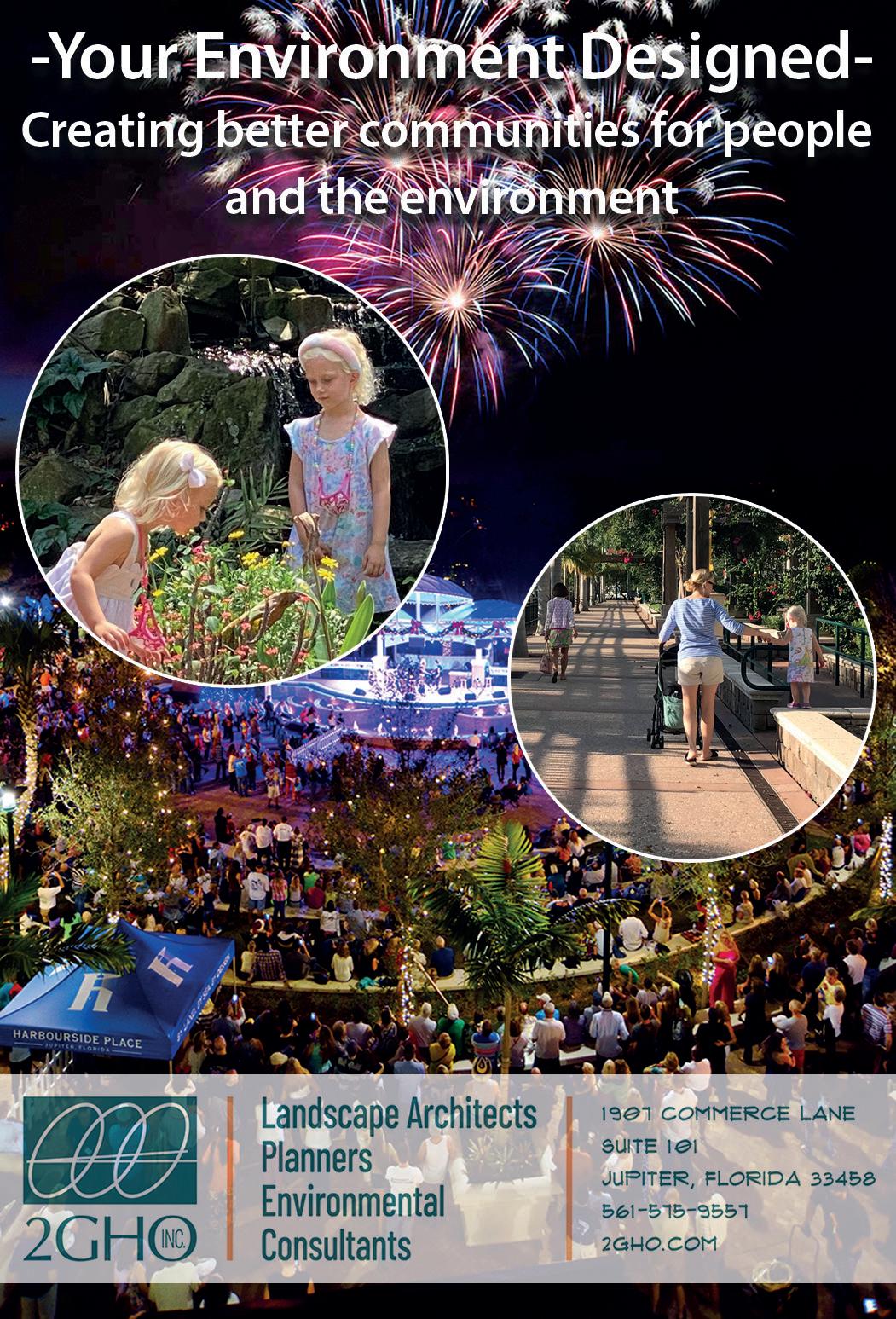

Another sector for projects that the company has branched into is land development. From what we learn, Seach Construction has developed over 2,000 residential sites for home builders Lennar, Ryan Homes, Mercedes Homes, MI Homes, Royal Professional Builders, Regatta Homes, Crossroads Construction, and others.
To complement the land development aspect, the business has extended its operation further to include property management and real estate brokerage. In this regard, the company’s staff of licensed property managers and real estate agents have supported commercial office and retail centres as well as homeowners and condominium associations.
www.seachconst.com Seach Construction

eadquartered outside St. Louis, Missouri, ADB Companies (ADB) is a full-service provider of turnkey, endto-end technology infrastructure solutions including engineering, wireline, wireless, and technology services. Since being founded in the 1990s, the company has undergone significant growth. Today, ADB has completed projects in nearly every state. The company boasts more than 1500 team members, and offices across the US, serving a customer base that includes leading telecommunications service providers, cable TV operators, power companies, regional internet service and telephone providers, government agencies, and datacenter operators.

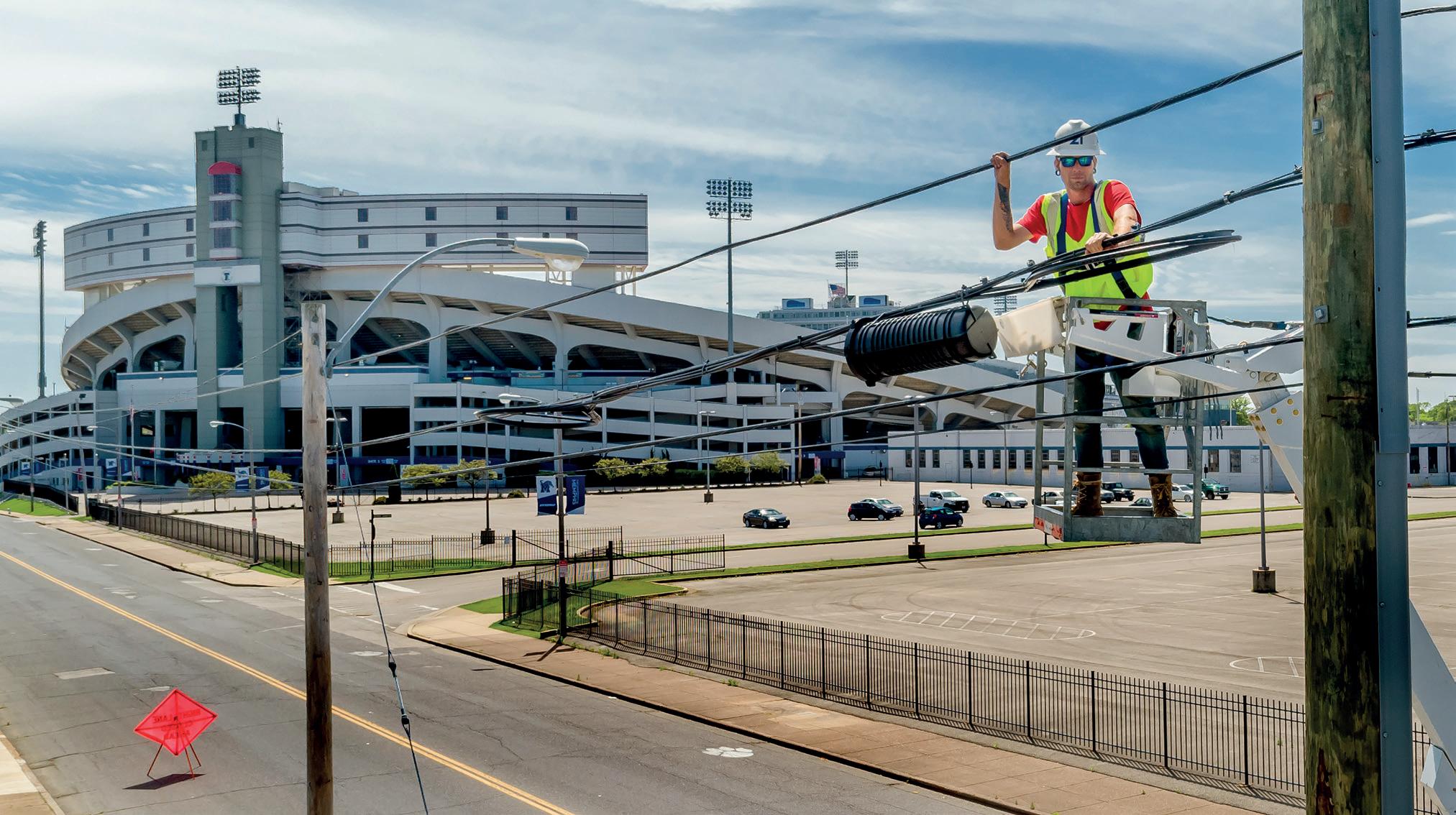

ADB’s services. As Chad Johnson, President and CEO of ADB explains, these lines integrate seamlessly in order to fulfil customer need. “We can plan, design, and install a full communications network from the source right to the point where the end user interacts with it,” Chad says. “Our engineering group can design a range of solutions from basic concept to dig-ready, including permitting and project management. Our wireline group is capable of installing nearly any type of hard infrastructure, both underground and aerially, servicing a variety of end customers in the telecom and power space.
“Furthermore, our wireless group is highly experienced in all wireless communications infrastructure development and maintenance, from the base of the tower to the top,” he continues. “Finally, our technology group specializes in inside-plant networking and commercial audio-visual implementation.”
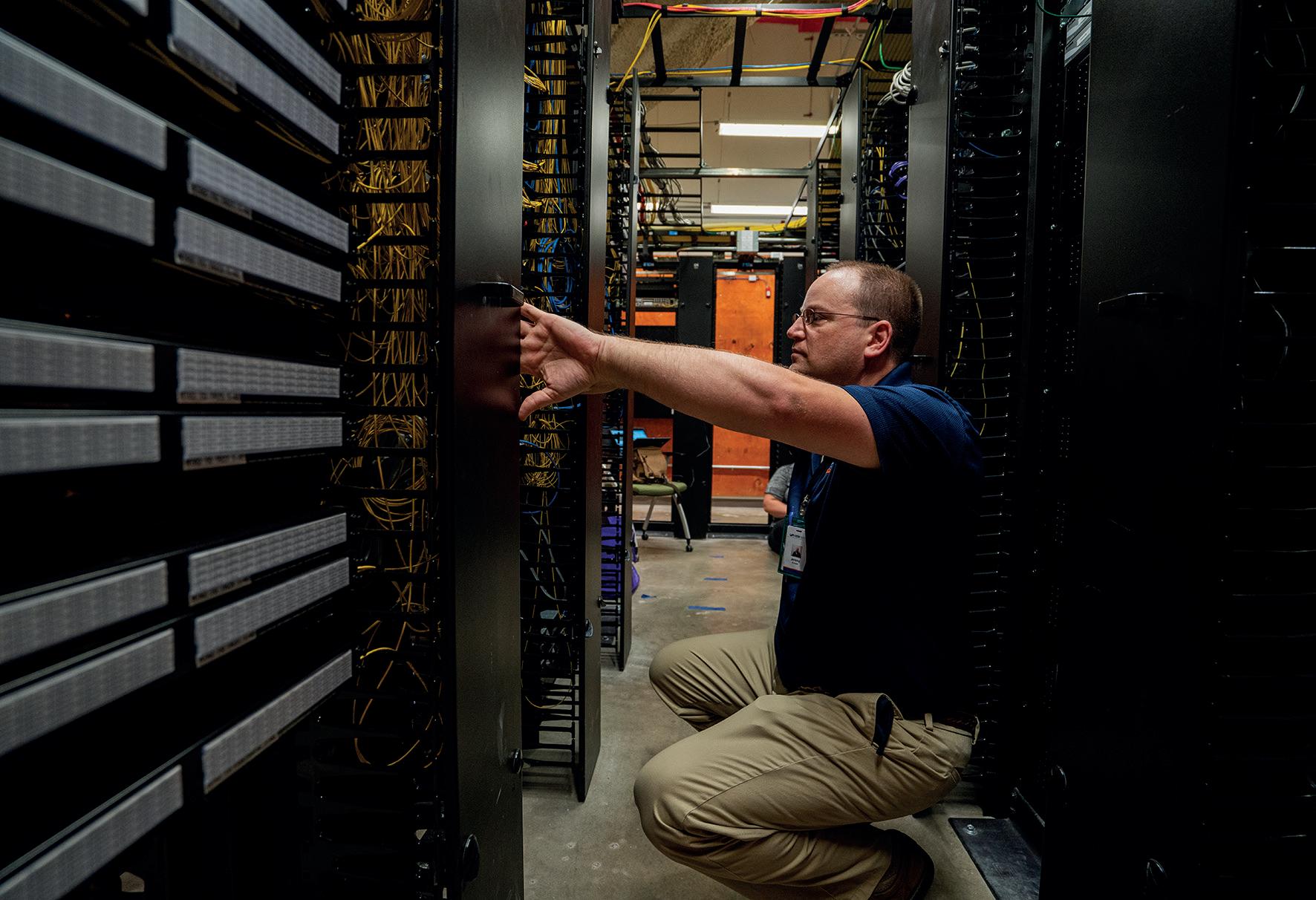

It’s a busy time at ADB. Recent years have seen the company continue on its upwards trajectory, with strong organic
growth bolstered by a number of strategic acquisitions. For Chad, it’s testament to an ability to stay ahead of the curve within a fastmoving sector, and capitalize upon promising market opportunities.
“While we remain focused on the telecommunications sector, we have moved into a variety of new market segments where we believe we can leverage our expertise and resources to deliver exceptional value to our customers,” Chad outlines. “Some of this has been organic, such as our recent successes in private LTE networks, while some has been through acquisition. We’ve pushed
ourselves to become more balanced as a company and have greatly increased our wireless portfolio.”
But growth doesn’t come easily. It’s a situation that wouldn’t be possible without a high-quality team of individuals; one that Chad believes is the best in the industry. “We’ve built our leadership team with a fantastic combination of long-time industry and company veterans along with strong leaders from other industries that bring unique experience and perspective,” he indicates. “We truly live by our mission statement: ‘We are a customer-centric partner, providing innovative solutions. The safety, wellbeing and career growth of our team members are the benchmarks of our success.’ ADB team members are ‘ALL IN’ on this mission.
“This is evident in all that we do and has resulted in ADB having an industry-leading safety record, even with exponential growth over the last several years,” he reflects. “All of our team members are committed to doing the right thing for our customers. We don’t take shortcuts. Rather, we provide full turnkey solutions in a way that ensures our customers, and their customers, are satisfied – not just today, but well into the future. We also have a very robust strategic planning and operational management model, which aligns all of our teams and keeps focus on our key objectives, limiting a lot of the noise and distractions.”

The culture that ADB fosters internally is one that it extends to the wider community, where the company has established itself as a key supporter of local charities and non-profit organizations. “Social responsibility is embodied through our cultural pillar – ADB Community,” Chad confirms. “It is extremely important to us, and every team member is encouraged to
actively pursue opportunities to help their local communities. ADB has logged tens of thousands of community service hours and we support more than 65 charities around the country.”
At the time of our interview with Chad, ADB is celebrating the recent award of its largest ever single project. The company’s strong reputation for quality, excellent project management capabilities, and a stellar safety record were all very significant considerations in the awarding of the work.
“Having the in-house capabilities needed to support a project of this size, along with an excellent network of partners, we are wellpositioned to excel in delivering this project,” Chad notes. “The same is true of our recent
We have plans in place to grow our revenue by more than 25 percent in 2023 “ “
work to create a private LTE network for one of our great customers and longtime partners, for whom we have been doing an extensive amount of utility installation work over many years. Given our ability to deliver exceptional customer service through the duration of our relationship, they began working with us early in this new endeavor, relying on our expertise in the design and delivery of wireless networks.”
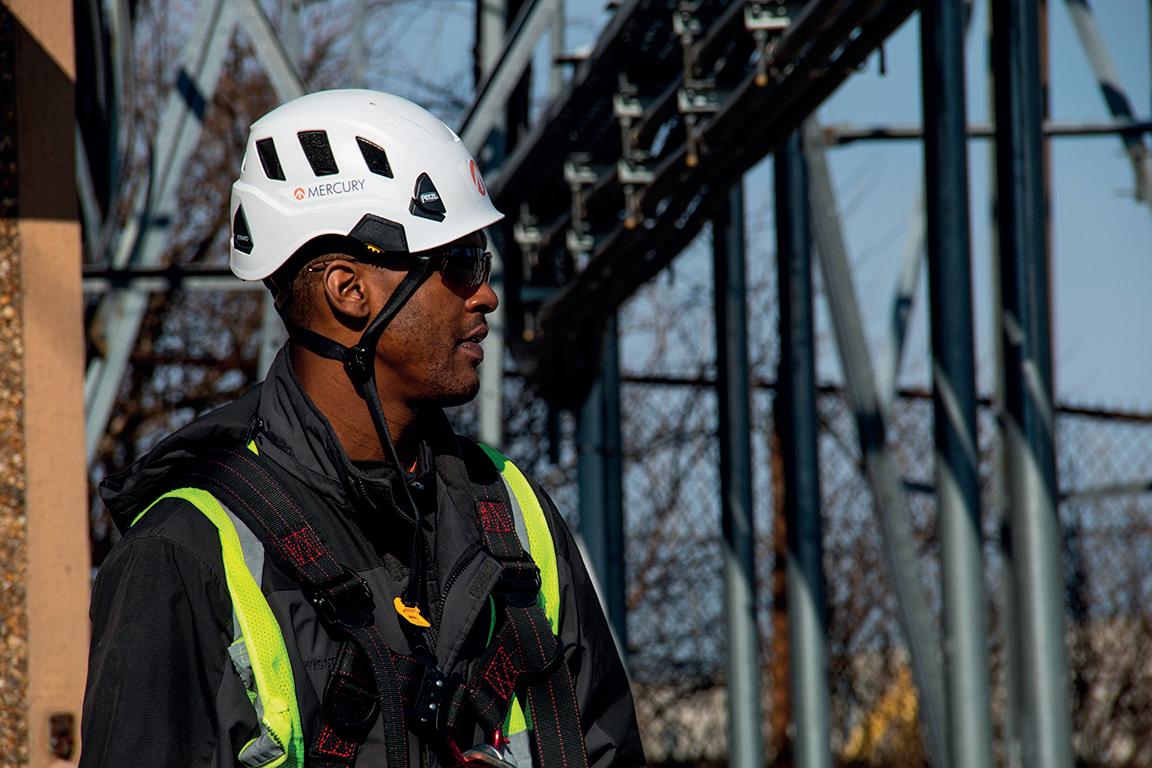
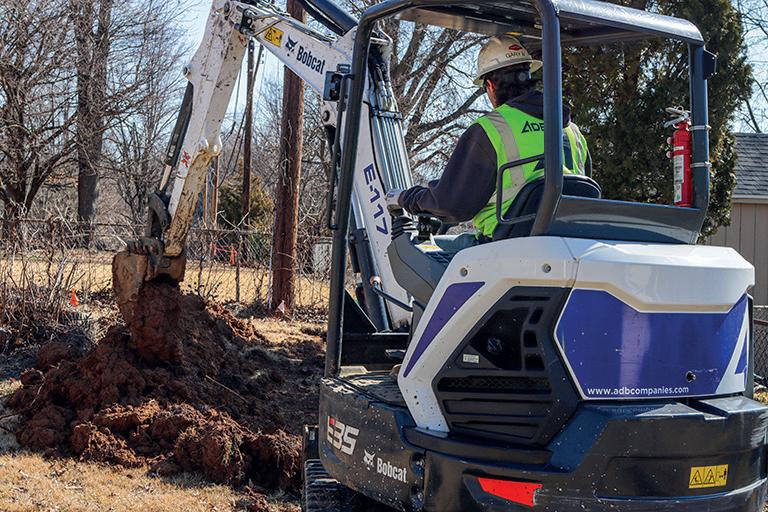
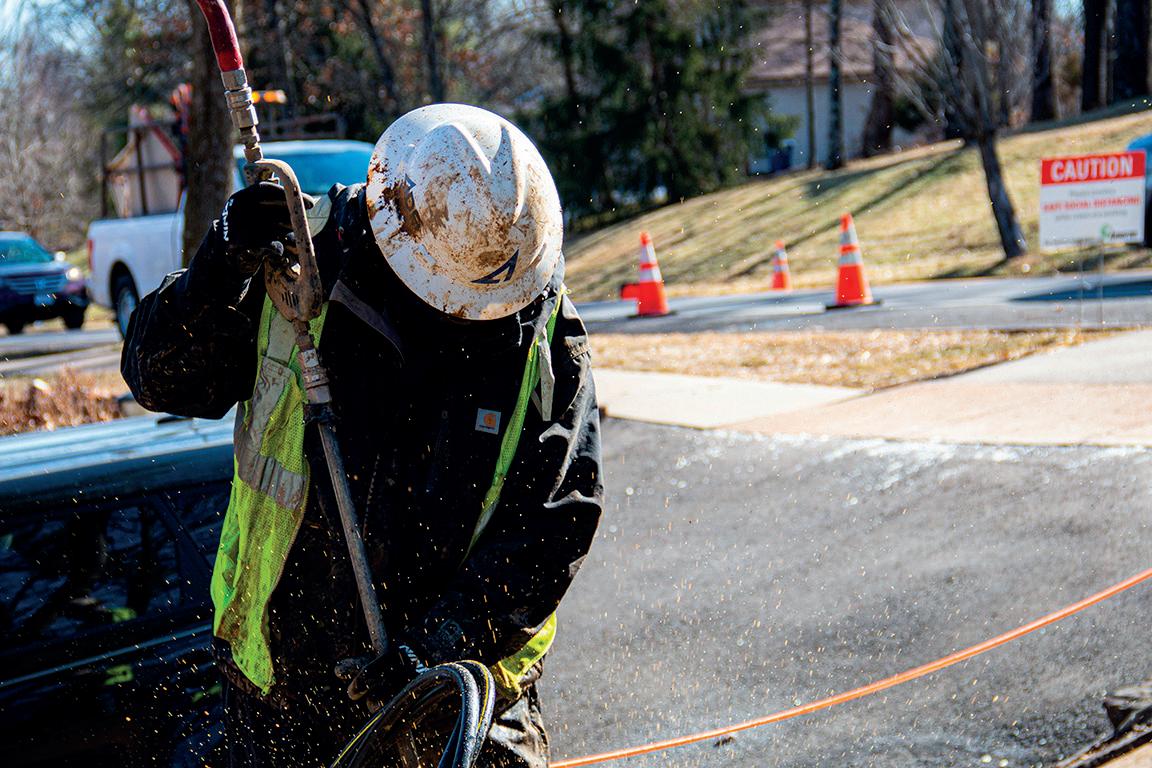
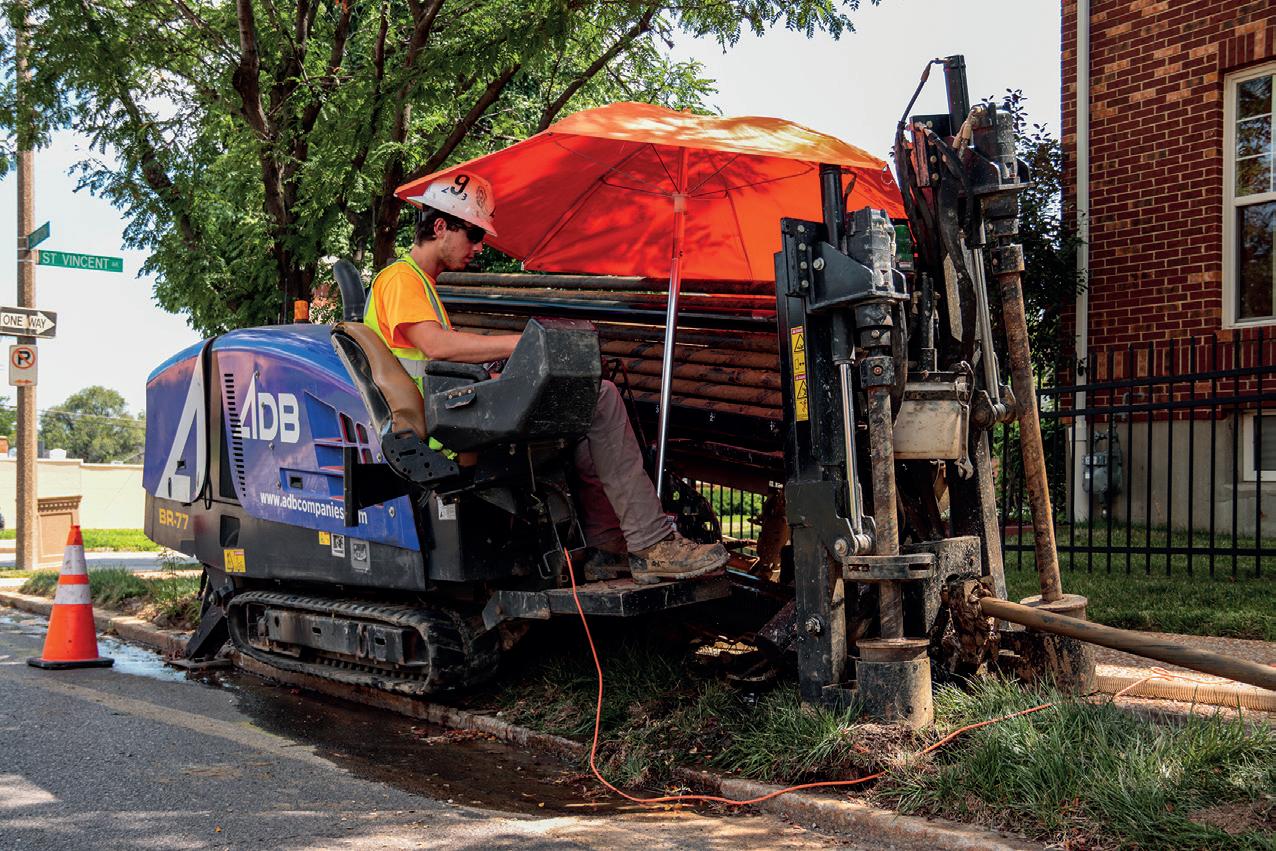
Reflecting on the past two years, Chad is frank about the impact of the Covid-19 pandemic, and the lessons that ADB has been able to take on board as it continues to grapple with long lead times, labor shortages, and supply chain disruptions. “Most importantly, we’ve learned resilience and the need for strong interdependency,” he reflects. “The pandemic taught us that we can’t take anything for granted, but we can get through some really tough waters if we keep an open mind and rely on each other.
“While there was probably no way to be completely prepared for the last couple of years, our ALL IN culture absolutely gave us an advantage in dealing with everything that came at us,” he goes on. “Jumping in to help others be successful, without regard for titles or politics, led to our ability to continue to grow every year. We are definitely still dealing with the hangover effects with regards to executing, and it’s a challenge we deal with every day,” Chad adds.
“Material lead times are still a significant issue, and they’ve resulted in slowing a lot of projects down. The fact that our market remains strong despite macroeconomic headwinds forces our Project Managers to constantly juggle projects to ensure we’re being as effective as possible while waiting on materials. Labor is probably the most significant factor and has limited our ability to take on even more projects. We have
a great team that we supplement with partner providers to access geographies where we have more opportunity than current capacity. There is intense competition for all these resources as a result of the limited labor pool.”
Looking forward to the remainder of the year, ADB is preparing for an exciting pipeline of activity. “We have a lot going on,” Chad admits. “We still have our foot on the gas with regards to acquisition activity and expect to add even more to our family in the coming months. We believe there are a lot of great opportunities to expand our services and bring in more expertise while offering acquired companies access to the resources they need to grow. In addition, we’ll certainly continue to be active players in our local communities, working with a variety of organizations to help strengthen the fabric of those communities in which we live and work.
“Beyond that, we have extremely aggressive goals for the coming years,” he reveals. “We have plans in place to grow our revenue by more
than 25 percent in 2023, with a plan to double our business between now and 2025. Through increased geographical density and expanded service offerings, we’ll be able to offer more of our customers the full-service solutions they need.

“With such a fast growth trajectory, we recognize that it would be easy to lose focus on our culture and our people, so we’re keeping those at the center of our strategic plan,” Chad concludes. “We are dedicating more resources to training, development and our cultural pillars to ensure we don’t lose sight of the most important aspects of our business. Acquisition is certainly a part of our growth strategy, but our organic growth is just as critical. We’re working closely with all of our customers to build these opportunities out.” ■
www.adbcompanies.com
Named after its founder, Albert M. Higley’s rich legacy in construction is growing by the day, thanks to the company’s support for non-profit organizations throughout Ohio and beyond
Construction management and general contracting firm The Albert M. Higley Co. (AMHigley) was founded in 1925. Headquartered in Cleveland, Ohio, the company has grown into five different offices throughout its 97year history, retaining its office in Cleveland, while adding those in Michigan, Pennsylvania, and New Jersey, along with a satellite office in Akron, Ohio. Working across all those states,
plus West Virginia, AMHigley is truly regional in scope, and has successfully completed over 11,000 projects to date, to a value in excess of $9 billion.
The bulk of AMHigley’s work falls within the commercial construction market, including healthcare, higher and private education, corporate offices, hospitality and entertainment, multi-family, and senior living. But it’s work for the cultural and non-
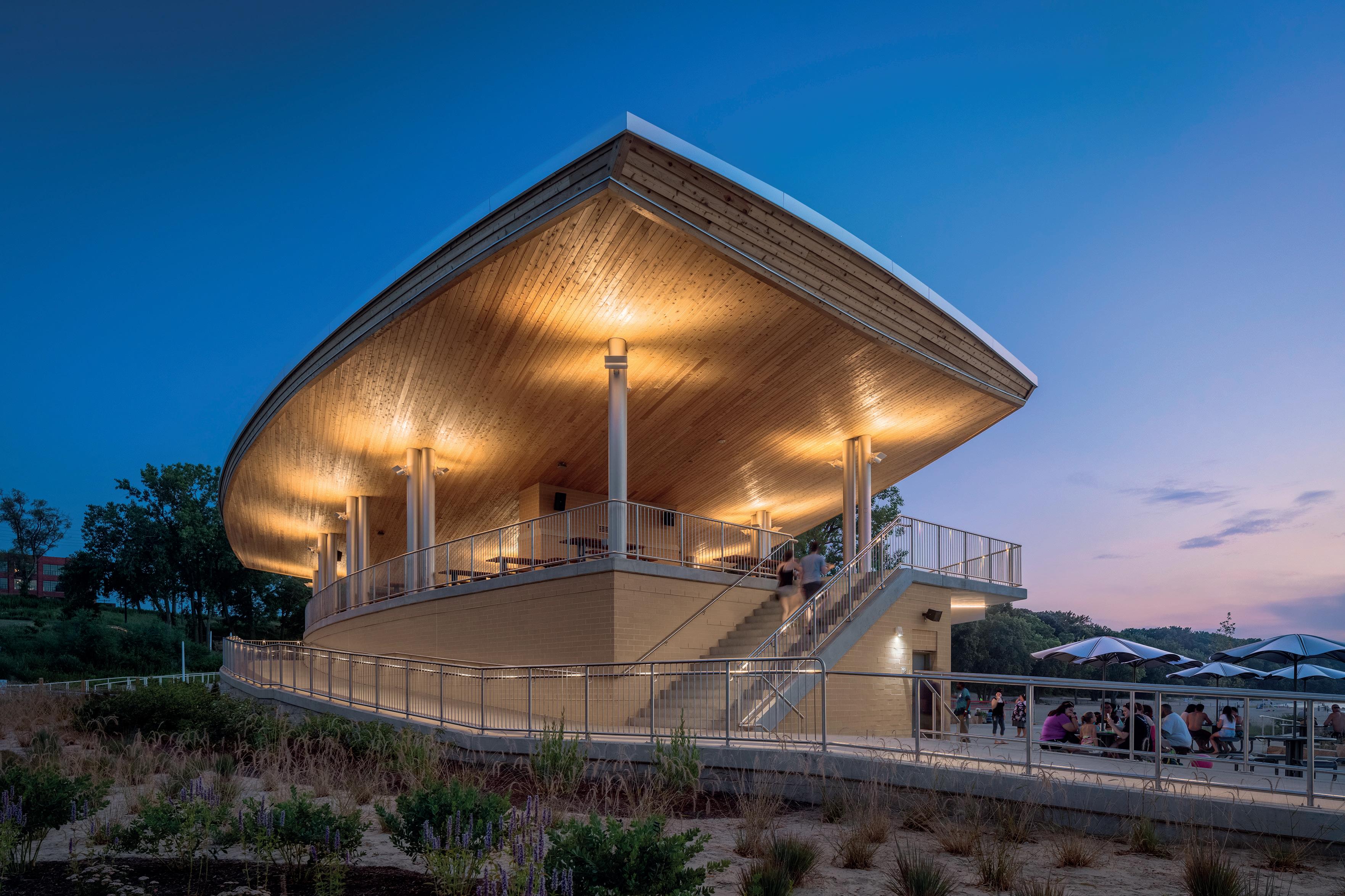
profit sector of which AMHigley is particularly proud. Accounting for 15-to-20-percent of the company’s output across the last three years, it’s a business segment centered around the concept of ‘mission-driven construction’.
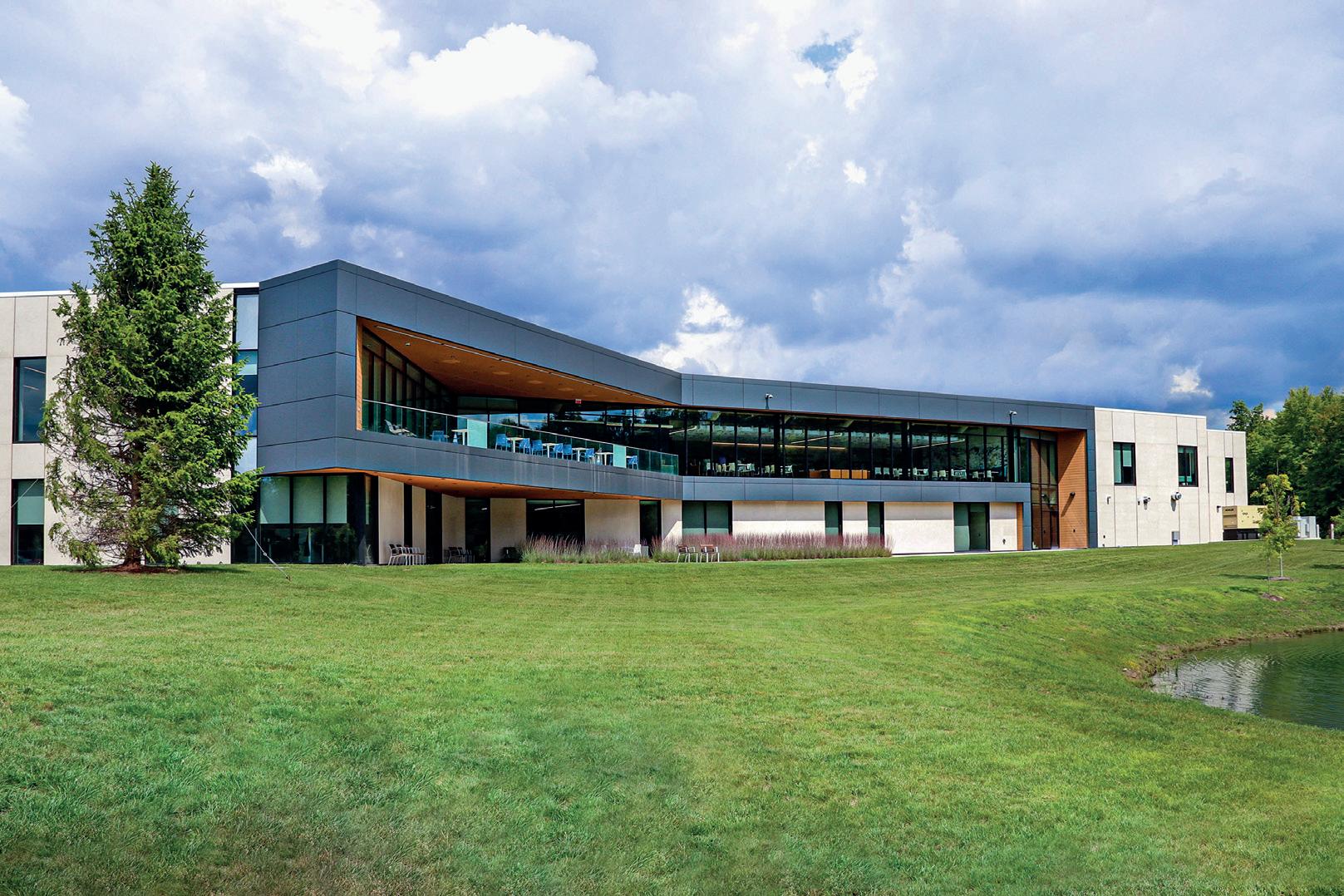

“We strive to understand what non-profits are trying to do as a big picture, and we adapt that as our own mission,” explains Emily Lord, Director of Business Development at AMHigley. “Then, our work becomes more

than just a construction project. It’s about helping them to achieve all sorts of goals, whether it’s tackling fundraising challenges, or engaging stakeholders.”
It’s no coincidence that AMHigley places such a heavy emphasis on non-profit work, or as Emily puts it, “building community.” Although the company only formalized its nonprofit work as a distinct business unit in 2014, philanthropy has long been a core value for the
Higley family, which had three generations represented within the business until just a few years ago. As David Meehan, Project Executive at AMHigley notes, each member of the company’s leadership team sits on the boards of various non-profits, including the Red Cross, and MetroHealth Foundation. Further relationships exist with Providence House, Akron’s Grace House, and the Achievement Center for Children, based in Cleveland.
With oversight from concept through to completion, David has a particularly unique insight into the process of AMHigley’s nonprofit work. “Often, organizations will come to us with a vision, and we’ll get involved really early with budgeting,” he reveals. “In order to effectively support them throughout the process of bringing their project to life, we prepare conceptual design estimates, and provide them with options. They’ll then enter a fundraising phase, to raise either all of the money or a portion of it. In the case of the
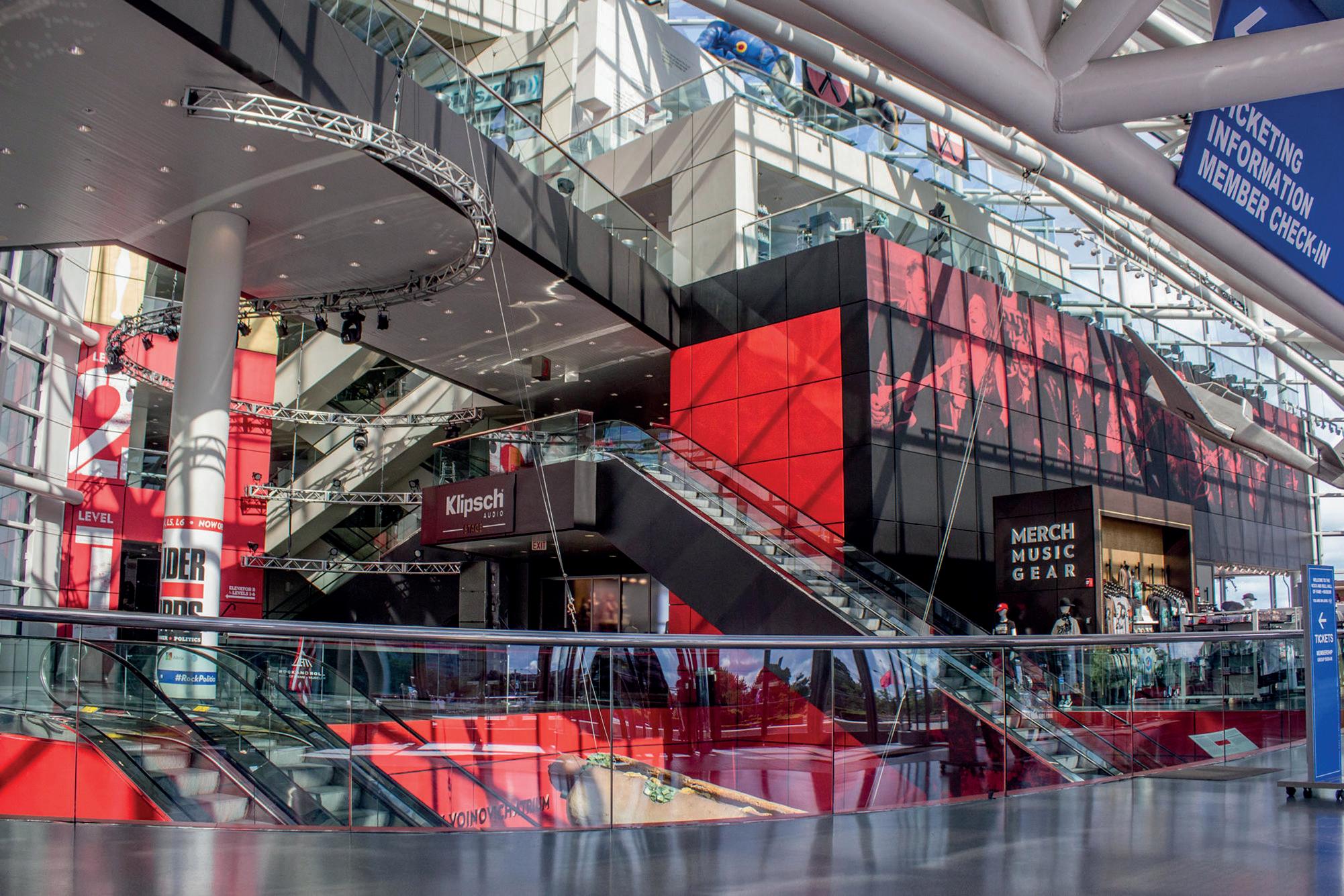
“ “
One of the first things we did in New Jersey was to talk to different non-profits, and to donate to a nonprofit in the community as a signal of our longterm commitment
“ “▲ Rock & Roll Hall of Fame & Museum, Cleveland, Ohio
latter, we’ll look at turning the project into a multi-phase development, so we can prioritize the work, create a master plan, and construct in stages as more donations are made.”
David’s comments underline AMHigley’s unique expertise within the field of nonprofit construction, and a familiarity with the obstacles that such organizations face. It’s further evidenced by an impressive portfolio of non-profit projects.
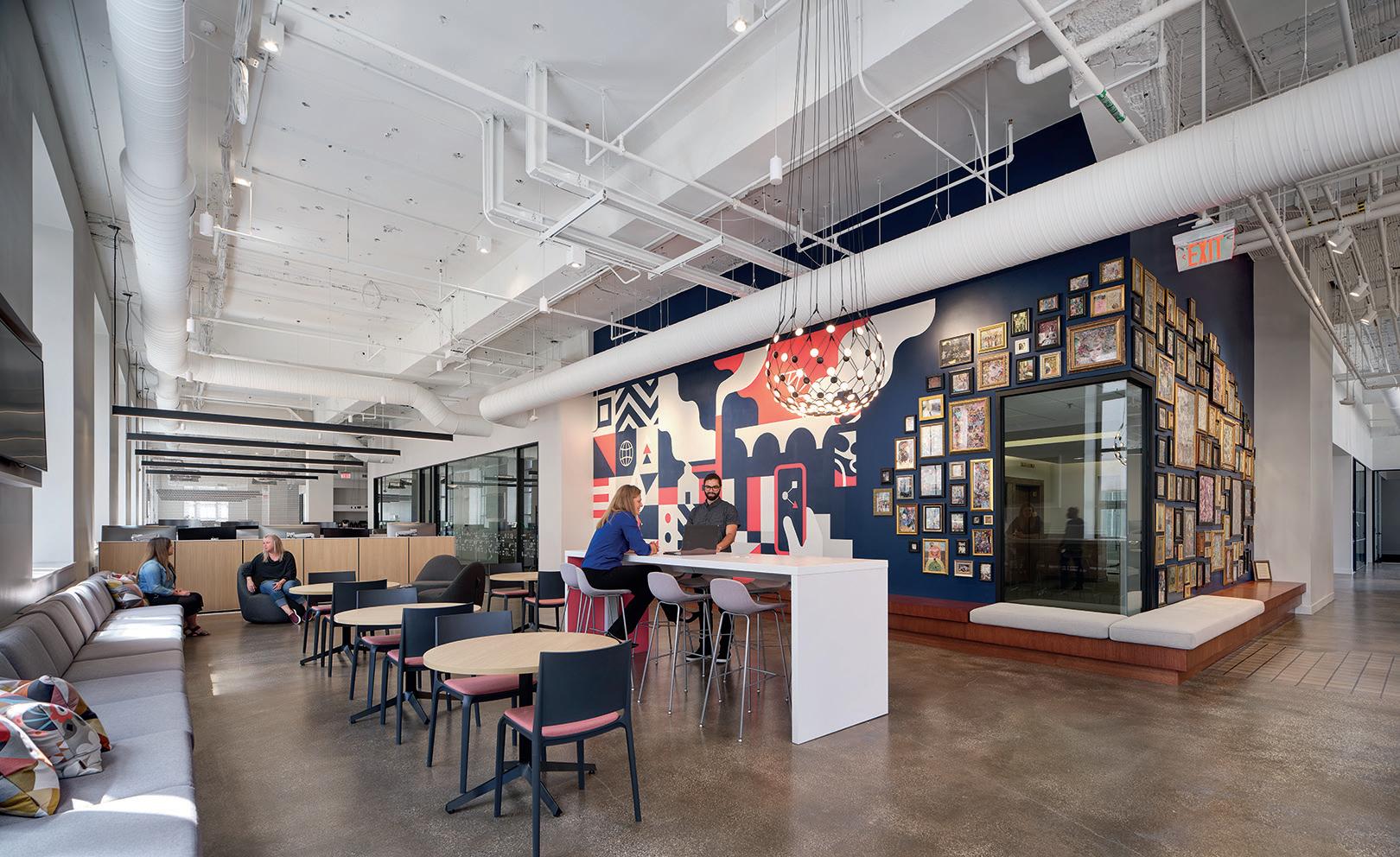
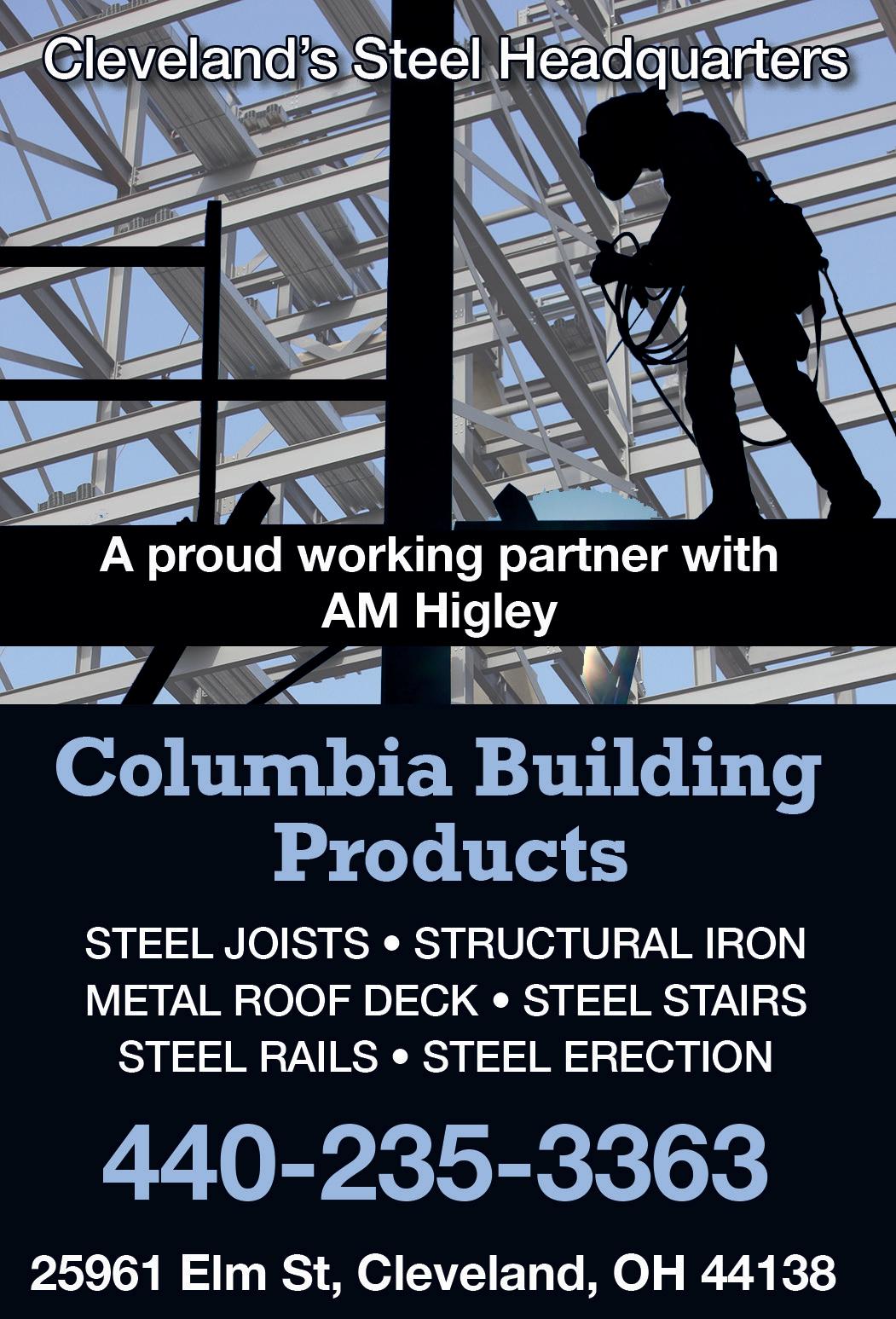
“We’ve been working with the Rock & Roll Hall of Fame & Museum since 2010, and we’re now ready to start a large new addition between that and the adjacent Great Lake Science Center,” David says. “The Rock Hall is a good example of a non-profit whose needs have evolved since its opening in 1995. Exhibits that at the time were predominately static, are today interactive, satisfying people’s desire for an experience. To meet that desire, we completely renovated about 75 percent of the museum over the last 12 years, and the new addition is set to complete that process.
“We’ve also recently renovated the Public Library of Youngstown and Mahoning County, as part of a $24 million job,” he continues. “As with museums, we’re seeing the function of libraries change – they’re no longer just places to read a book, and we’ve installed maker spaces where people can make podcasts and videos, as well as 3D printers. A project on our list is Heights Library, where we’re set to conduct a $1.2 million renovation to improve their staff area and provide HVAC system upgrades.”
As with all projects, the key to the success of AMHigley’s non-profit work is the company’s ability to forge long-term relationships with its clients. One such client is the Cleveland Metroparks. “Several years ago, Metroparks took over management of large portions of beach property from the city of Cleveland, at which point we completed the Edgewater Beach House situated along the city’s lakefront,” recalls
Andrew Hudak, Regional Vice President, Ohio at AMHigley. “We’ve continued that relationship to the Cleveland Metroparks Zoo, where we recently completed the Asian Highlands Exhibit for Snow Leopards and Red Pandas.
“We’re currently in the planning phases for a further expansion of their rainforest, which is really one of the signature pieces at the zoo,” he adds. “Cleveland Zoo is recognized internationally for its gorilla research, and this new facility expansion is intended to provide a world-class habitat and research environment for gorilla care, with construction likely to begin in a year’s time.”
After successfully navigating the challenges of the last few years, including a Covid-19 imposed halt on a number of projects, the future is looking bright for AMHigley. In March 2022, the company opened a new office in New Jersey, a move that capitalizes on a growing portfolio within the state. “It’s an expansion that’s very much happened organically,” Emily confirms.
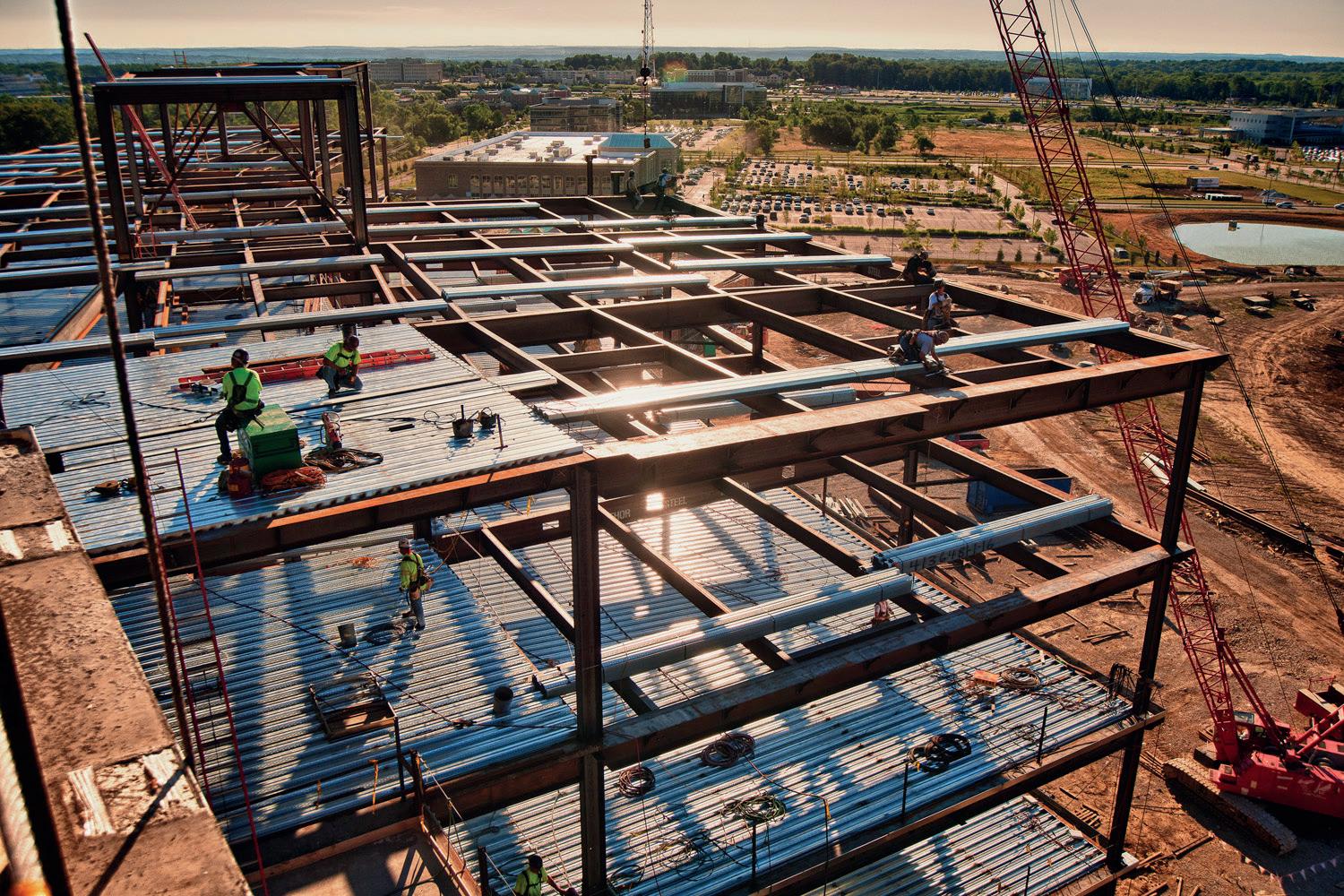
“We first went to New Jersey with a previous client who had since moved to a new organization. After completing our first project there, and having established a footing for ourselves, it became clear that it was a place with lots of opportunity, where we already had strong relationships with subcontractors, and where there was close alignment with our key markets.
“We were lucky enough to bring Connor Evans on board as our Regional Vice President, New Jersey,” she goes on. “From the area, he’s charged with growing our business in that region. It’s a similar story to our previous expansions into Pittsburg and Detroit. In each case, we felt that we could take what we were doing in Northeast Ohio, and effectively translate that into those other cities.”
Despite spreading its wings, the company remains firm in its commitment to building communities. “We aren’t going to Chicago
or New York City,” Emily points out. “We’re expanding into cities where we believe we can contribute and make a difference. One of the first things we did in New Jersey was to talk to different non-profits, and to donate to a non-profit in the community as a signal of our long-term commitment.”
AMHigley’s commitment to its communities is echoed in the respect with which it treats its employees, whom Andrew describes as the company’s “most important asset.” He acknowledges that the pandemic has redefined people’s attitudes towards their jobs, with many opting for increased flexibility, and a better work-life balance.
“Construction never stops,” he admits. “Our work starts early in the morning, and can include long days and weekends. Within that, it’s important to recognize that people are giving us a lot of their free time, and we need to be able to repay that. Equally, we’re true believers in a diverse, equitable, and inclusive workplace. To that end, our employee-led internal Diversity and Inclusion Group (DIG) makes regular policy recommendations to ensure that we’re taking the right steps. On our projects, we set goals – whether owners require them or not – for the proportion of our work that’s contracted to minority-owned, and femaleowned businesses.”
After a record sales year in 2021, AMHigley is facing a significant backlog of work for the months ahead, with expectations of completing construction projects to a value of approximately $300 million. “All our market segments are extremely busy,” Andrew notes. “Our healthcare segment has projects with Western Reserve Hospital, MetroHealth, and Southwest General Health Center lined up, as well as another at the Cleveland Clinic’s Fairview campus. Likewise, we have a number of education projects in the pipeline, for private and higher-ed institutions. We’ll
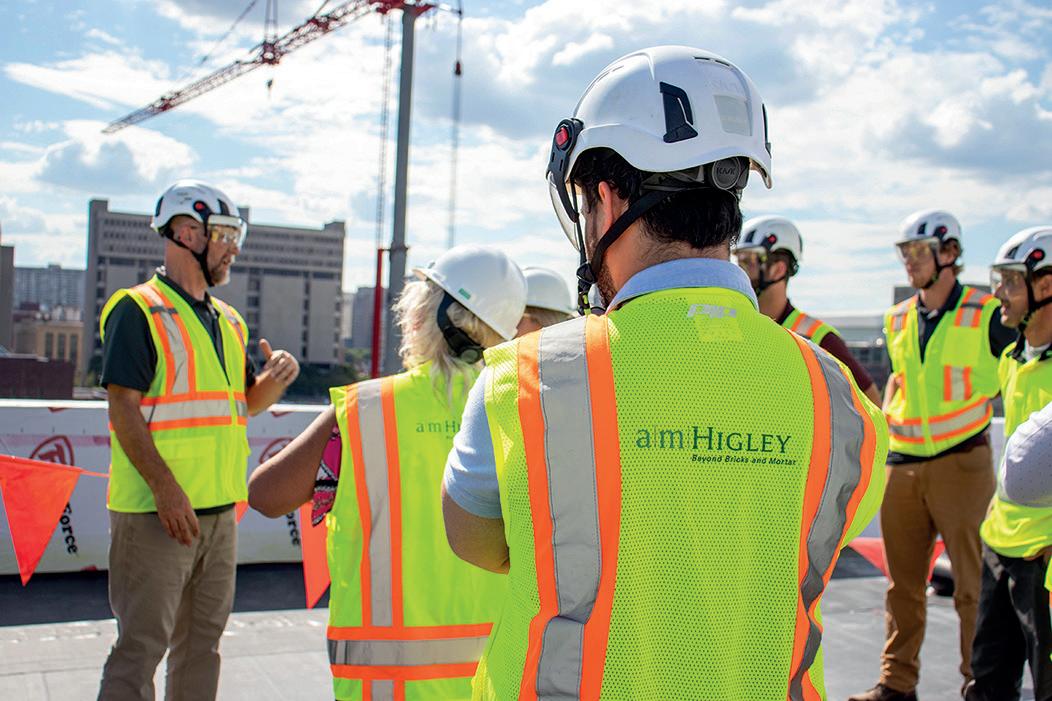
also be announcing more projects through our Design-Build services group, which we launched in 2022.”

“Our plan is to continue to grow,” Emily concludes. “We aim to put more construction in place every year, increase sales every year, and increase the number of our employees. Today, we have 156 fulltime staff – a growth of 70 from where we were around ten years ago. With regional expansion, new states, and new offices, we can expect something similar in another five years’ time.” ■
www.amhigley.com
Despite the challenges currently plaguing the construction industry, Southwest Industrial Electric (Southwest) is determined to overcome the odds. With a persistent team at the helm, the business has been making promising headway in the energy sphere since we last spoke in 2020, through battery energy storage systems and solar installations. “We have undertaken multiple large projects – two of them being rooftop solar installs, one of which is six megawatts, and is one of the ten largest in the country,” shares Kristin Larson, the company’s CEO. She also expresses that
the company’s team members have grown alongside the business’ expansion, and she has continued to develop its culture and training programs. “Our team members have been motivated in these past two years and have taken on more in their positions. We love to see individuals thriving, and being able to grow in their careers,” says Kristin.

Further exciting developments have taken place within the business over the last two years. For example, the company expanded its horizon and gained its license in Texas. It also grew its green energy projects and continues to pursue more in that sector. “We attended the RE+ International Solar Power expo in September, which is one of the largest trade shows for solar energy, with companies flying in internationally to attend,” Kristin adds.
“In terms of investments, Southwest has also expanded its fleet of service vehicles, bringing us to 20 trucks. Otherwise, our main investment has been in our team, expanding our
Southwest Industrial Electric shares why advocating for women in construction is crucial for the industry’s growth
As demand increases, Southwest is looking for great partnerships with manufacturers of EV trucks and chargers, as well as design teams
“ “ “ “

team of electricians, and our sales and marketing this year to be able to deliver on more projects.”
Then, in terms of the business’ order book, project demands have been increasing tremendously as well. “We have two battery energy storage system projects starting in the next couple of months, with more on the horizon,” notes Kristin. Furthermore, the company is installing a 6.3-megawatt photovoltaic solar panel system on a large distribution facility for one of the largest distributors in the world. A total of 14,400 solar panels are being installed, and the project will take approximately nine months. Following completion, the business will be testing and commissioning the installation. “We did everything from racking, wiring, and modules to all other supporting equipment. We are currently in the final phase of pulling and terminating the rest of the wire, and I am pleased to share that the project falls into the top ten in the US, and top 20 in the world.
“We have also helped one of the largest distribution vendors in the world electrify their fleet, and we are currently lined up for more EV projects than ever this year. More frequently, we are seeing our customers reach out for assistance with this sort of development. We are also looking to add a whole new residential department for EV installation for customer homes.”
Alix Smith, the Chief Production Officer overseeing EV projects, briefly expands on this saying, “As demand increases, Southwest is looking for great partnerships with manufacturers of EV trucks and chargers, as well as design teams. We look forward to maximizing our reach in the EV market by partnering with other companies to make this as accessible as possible.”
The EV charger market is rapidly growing and evolving just as fast. For Southwest, the challenge is making sure the business puts infrastructure in place to handle new styles and sizes of chargers. “Internally, I’d love to see
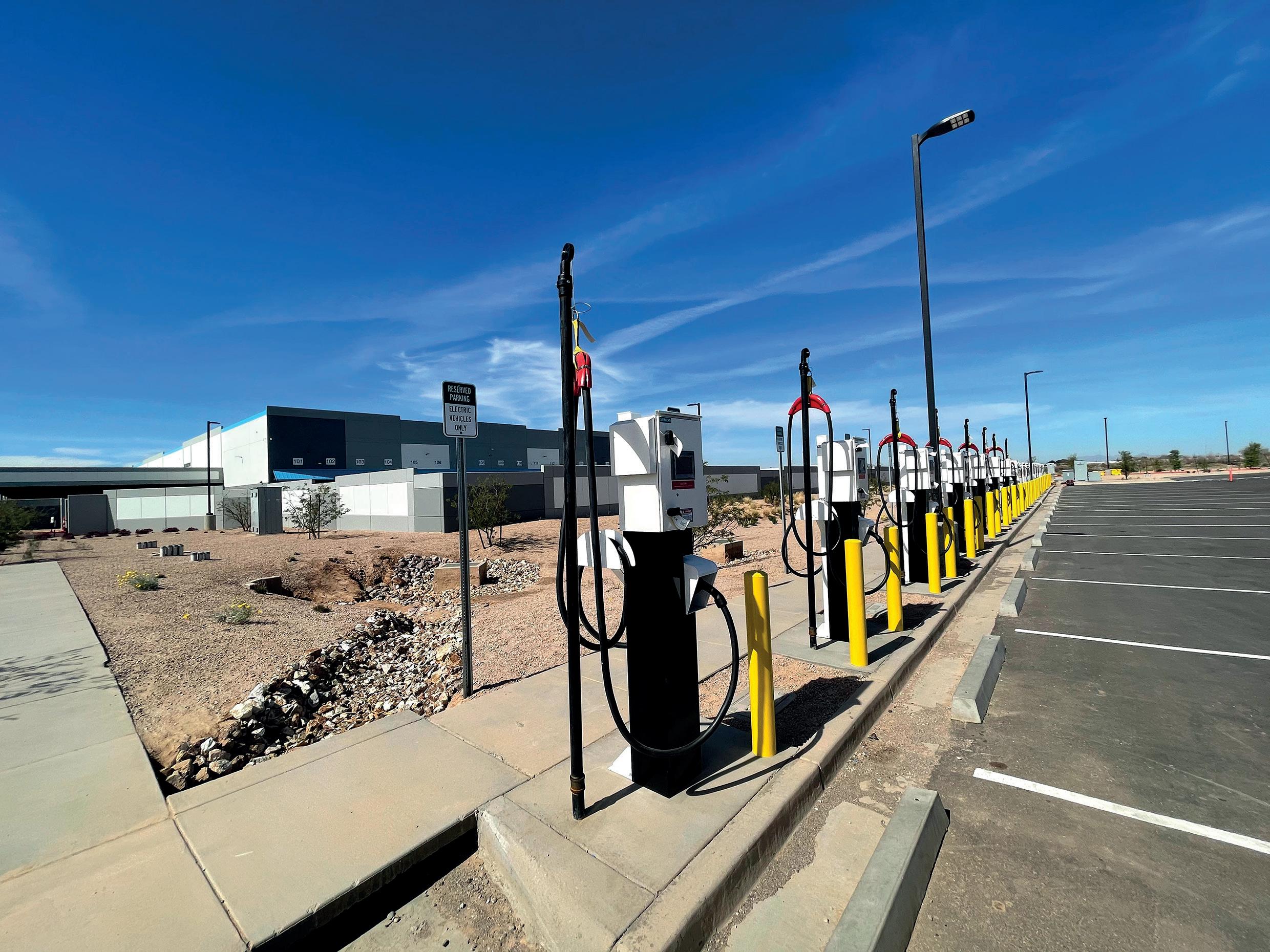
a full EV fleet for our technicians, technical estimators, and salespeople,” says Kristin. “In addition to that, we want to work with our customers to plan for their future, and make sure that they can have as many options for EV charging as possible.
“About four years ago, we had a customer reach out for a pilot program at their sites. They wanted to do small quantities of EV chargers in different configurations to find the best solution for them and their entire fleet. This gave us the opportunity to install different brands of chargers with various install configurations. That was a valuable experience as it allowed us to offer our services regardless of the EV installation type they were looking for.”
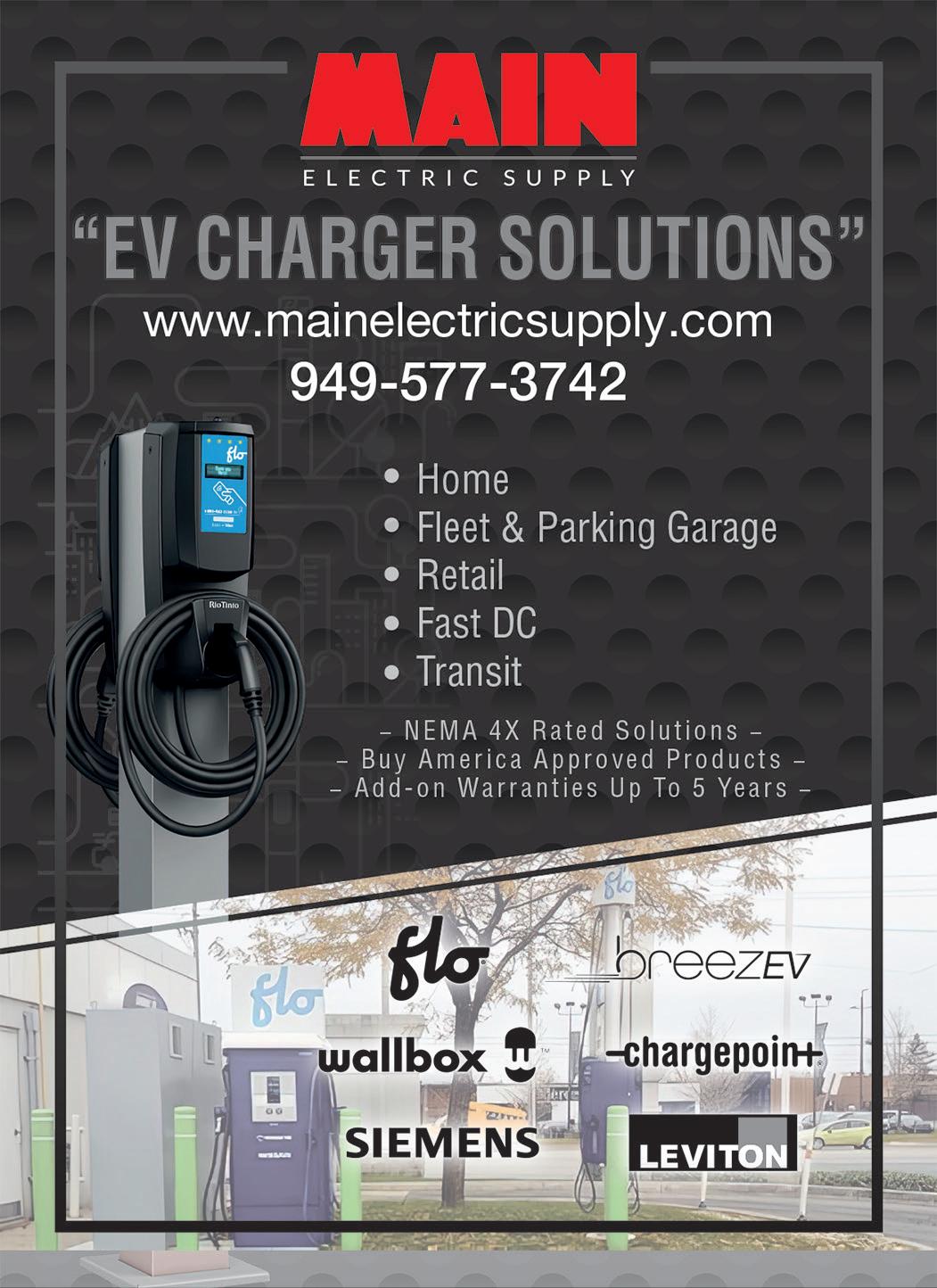
Because cities and states are pushing for EV charging, they want to expedite plan checks and coordination times. As a result, customers also know that in the long-term, installing EV charger infrastructure at their site will reduce fuel costs for their fleets,
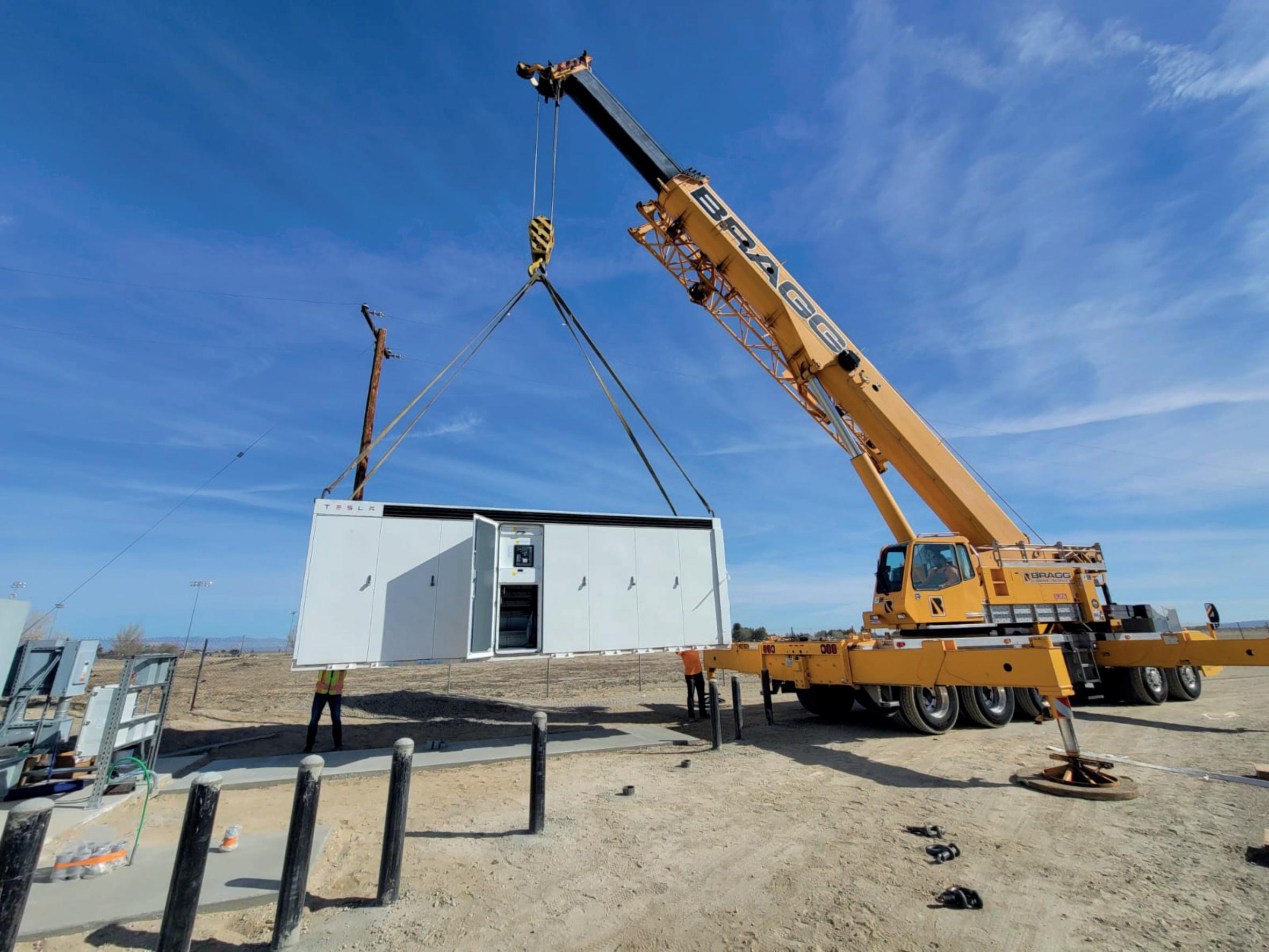
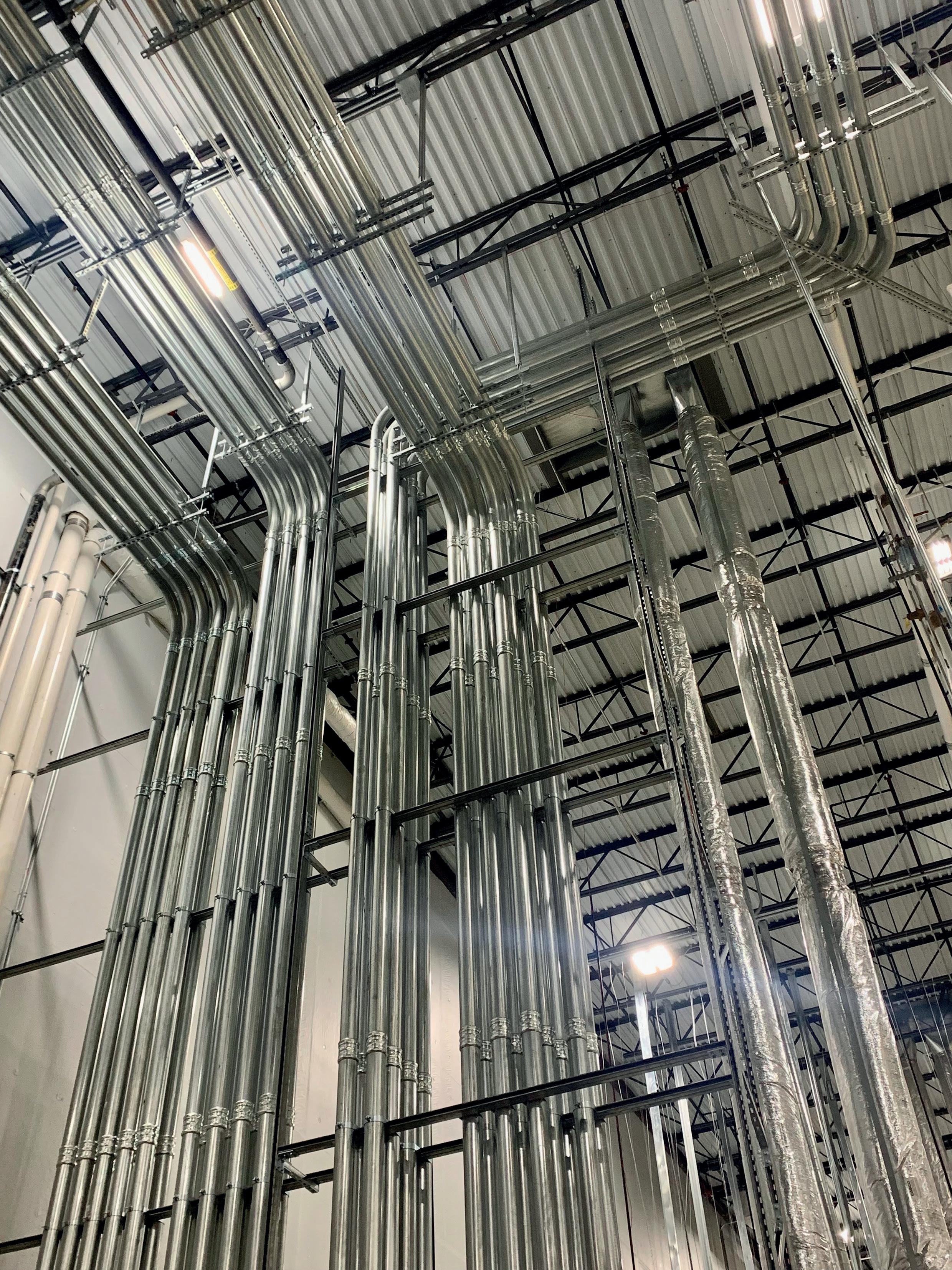

“ “ “ “
and they will also benefit from government assistance as an incentive to achieve their netzero goals. “There are rebate programs from the government that customers can apply for when installing EV, which will cut down the cost for the project significantly. They also gain control of their fleet being charged, and it streamlines dayto-day operations. Other advantages include cleaner air, especially in places like California, a lower cost of driving, and an increase in property values where the chargers are installed.”

Our conversation then steers towards the discussion of the company culture, which, as we learn from Kristin, is an aspect considered equally important as the business’ overall growth. “One of our core values is team spirit and that is seen throughout many parts of our company. We make it part of our leadership team training to lead by example, and by validating those jobs done well through positive reinforcement.
“We have weekly staff meetings where we share the successes from each part of the company and commend team members for their hard work. We implement activities for the company, based on goals for our production.
Those are then celebrated when targets are met. We also have games for various charity events where teams participate together, which plays a huge role in our overall culture of support and community. We also have an in-house training program, where team members are encouraged to learn more about our industry and are motivated to become experts in their field.”
An added layer of which Kristin is particularly proud is the company’s advocacy for women in construction. “Most of our chief executives and many of our staff are women, and we are also a part of the National Association of Women in Construction. I think by working hard and showing what we can do, we lead the way for more women to participate in the electrical field, as well as construction. We like to shine a light on what a great sector this is, and what our work can do for the community; that is something all people, and all women, can be proud to be a part of.”
With a leading, female-driven team, the pillars of Southwest seem resilient enough to withstand any challenges the future may bring. “The last part of the year is often the busiest, with many projects having deadlines before the year is done. We also have some great opportunities coming up at the end of 2022 that include new construction and solar projects, and orders for battery energy storage systems. We are excited to continue to partner with great companies to produce top-quality installations,” shares Kristin.
Beyond that, the company is planning to have licenses in more states, and is working towards having a footprint in all 50. Kristin ended by revealing that the business will have another branch in Texas soon to provide more service further east. She looks forward to seeing her team grow, as Southwest refines its ability to service customers with the best electrical services it has to offer. ■ www.southwestelectric.com
Serving the Mid-Atlantic region of the US, Hourigan is a fully integrated construction and development company with offices in Central Virginia, Hampton Roads, and Western Virginia. The firm has become the go-to partner of choice for managing complex projects and delivering them to a high standard.
Hourigan places a special emphasis on continual investment in its people, tools, and technology – everything that is required to spearhead smart and innovative projects. Indeed, thanks to this ethos surrounding
sustained progress, the company has established strong commercial partnerships and has been recognized as a trusted advisor by leading developers and investors in the region.
With a focus on its core values of serving with integrity and leading forward, Hourigan has built an impressive portfolio over the years. Chief Administrative Officer, Bryan Jones, offers us insight into the company’s diverse operations. “Over the years there are many projects that stand out, but we remain most proud of the relationships we have built and

How sustainable construction fromHourigan
is enhancing communities in the Mid-Atlantic region of the US – and blazing new trails in the process
continue to cultivate,” he asserts. “In terms of services, we focus on ‘moving to the owner’s side of the table,’ and being an advocate and resource for their project goals.
“As solution providers, we support the built environment through a variety of preconstruction, construction management, design-build, and development projects,” Bryan

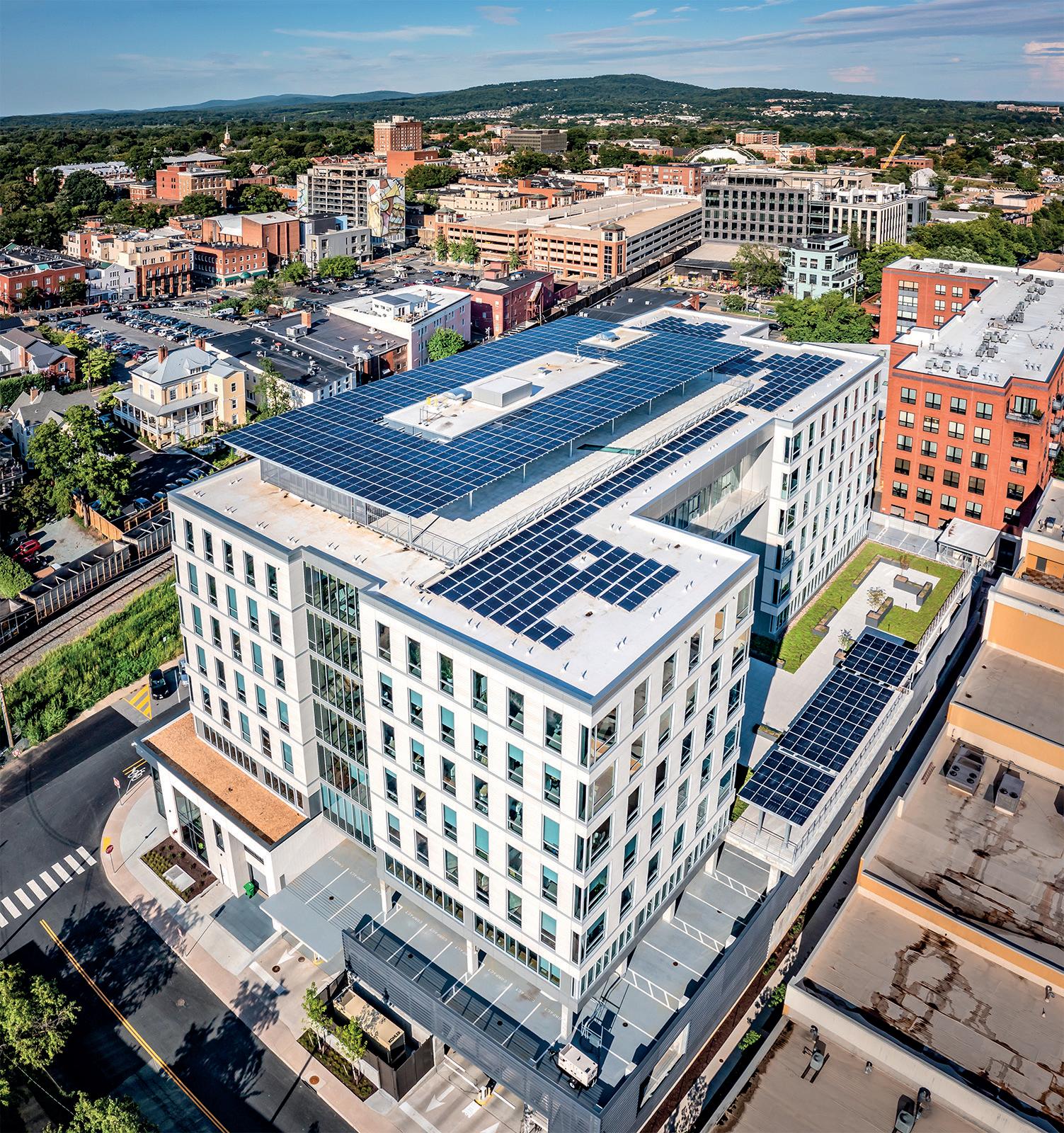
details. “We tailor services to fit the needs of our clients and provide them with the answers they need to deliver certainty and intelligence in their decision-making. Furthermore, we always look ahead to new and innovative solutions and strategies to deliver more sustainable buildings that have a reduced impact on the environment.”
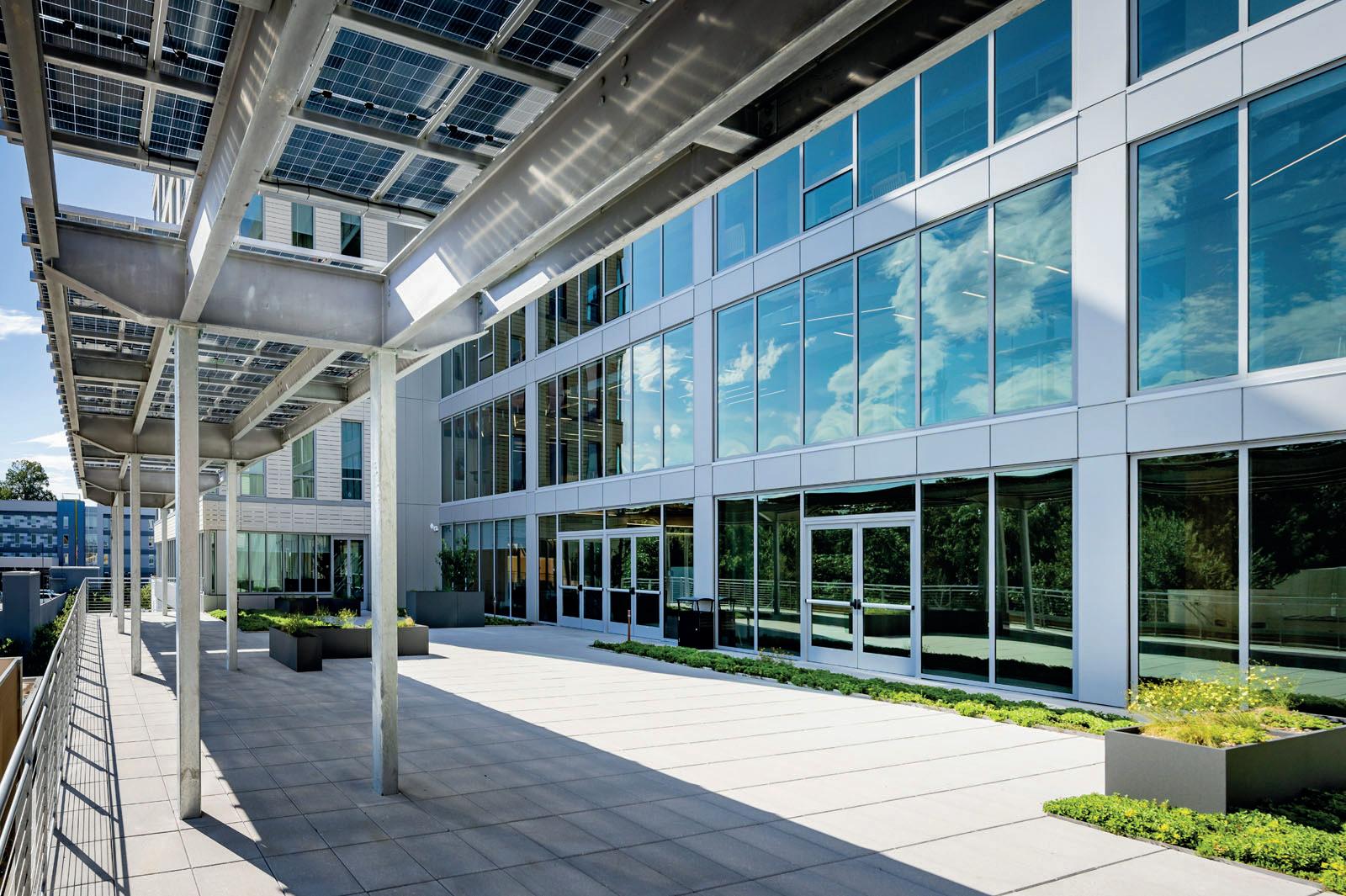
Hourigan’s internal mantra is about passionately shaping tomorrow, today and there is no better example of that than the firm’s work on Apex Plaza: Virginia’s first, and the East Coast’s tallest, large-scale mass timber building.
The 265,000-square-foot cross-laminated timber (CLT) project includes 151,000 square feet of office space, 102,000 square feet of podium concrete parking, and 6,800 square feet of retail units. Needless to say, it was a mammoth project – and right at the center of it all was one primary consideration: sustainability.
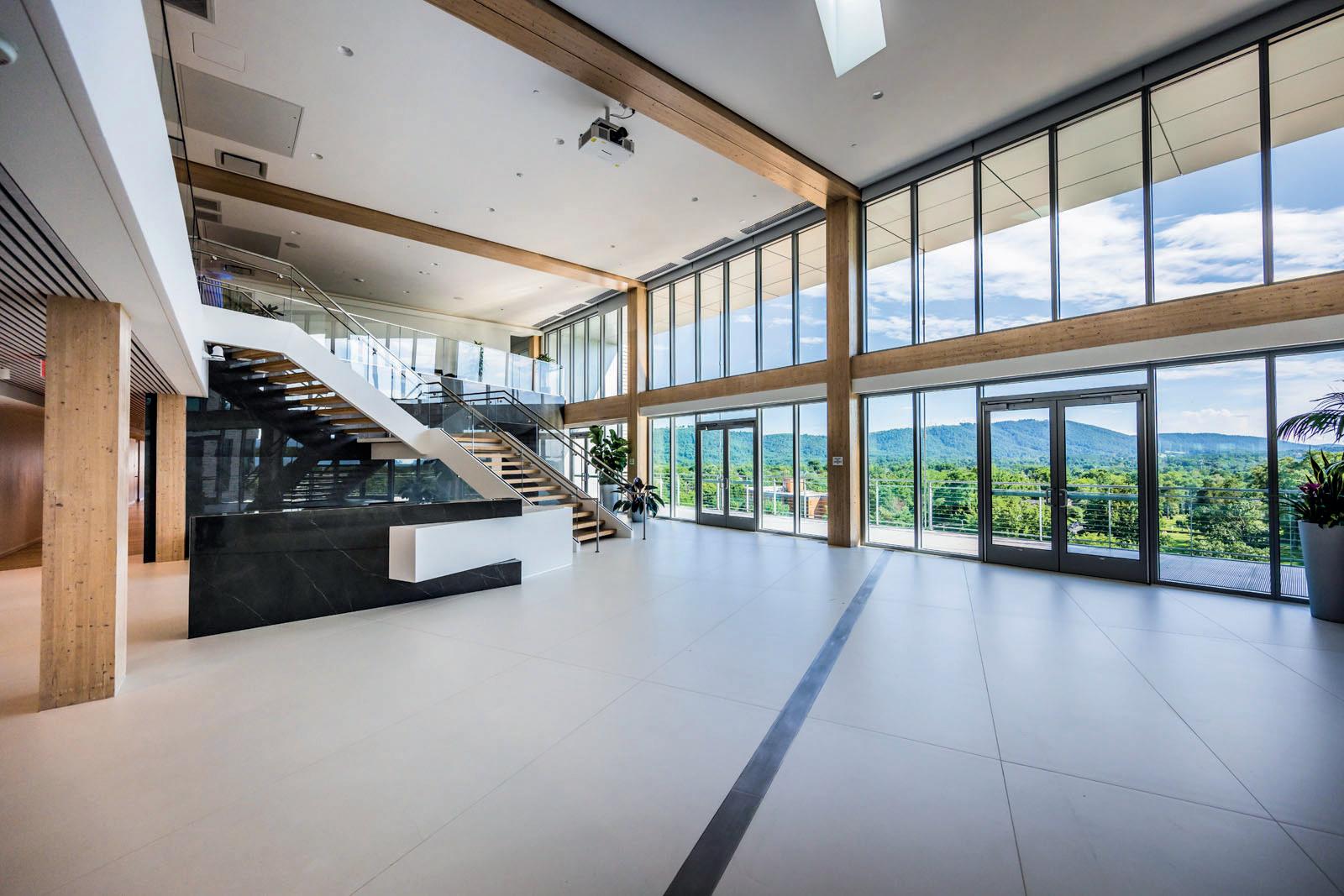
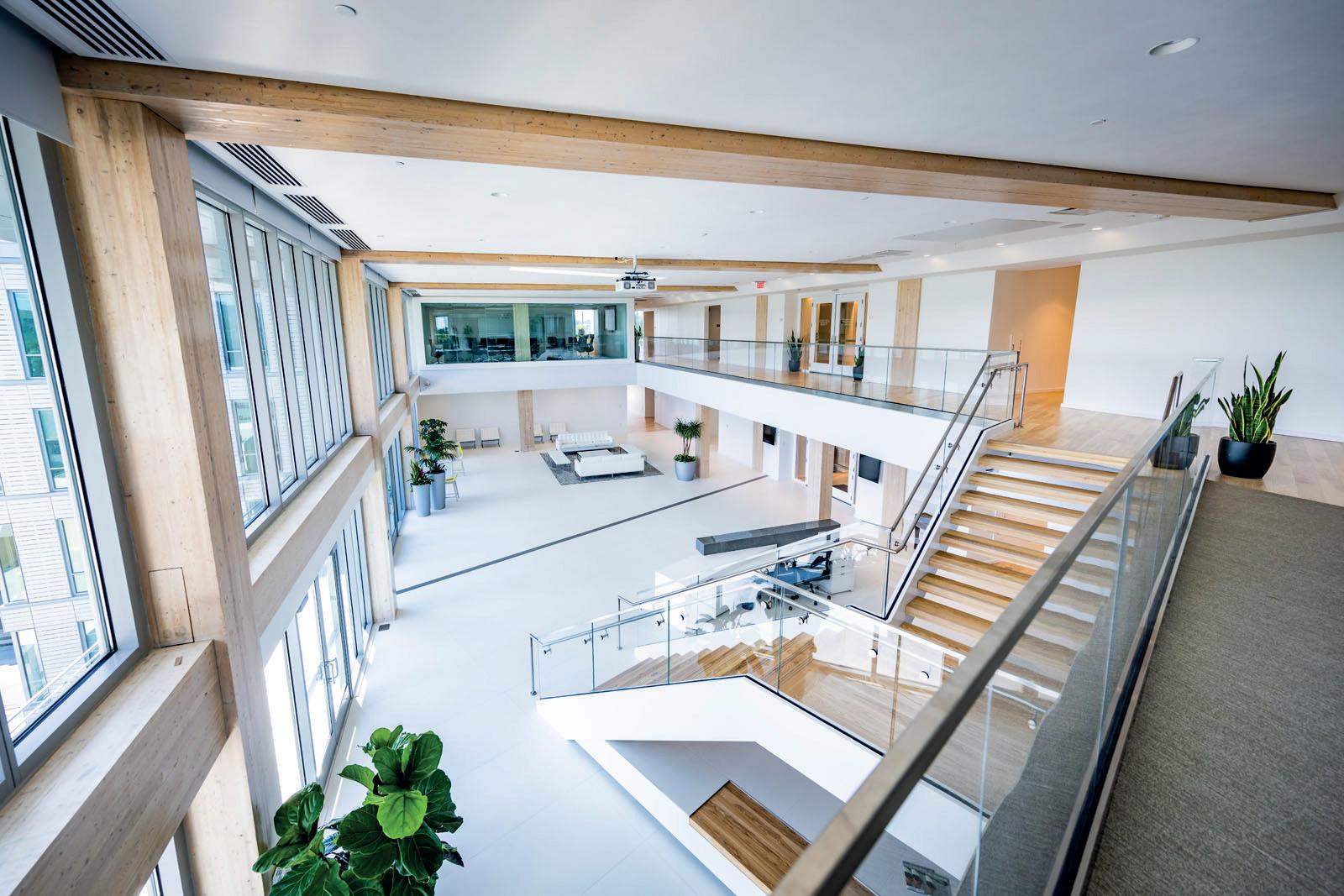
Offering an overview of Apex Plaza is Joseph Marshall, Project Manager at Hourigan. “The building is based on a cradle-
to-cradle certified design and uses mass timber for the upper six stories of the nine-story building. As a renewable resource, mass timber not only sequesters carbon but also minimizes the use of carbon that would otherwise be used to produce traditional building materials like steel and concrete. So, it really is win-win.
“This cradle-to-cradle philosophy limits or eliminates the use of harmful materials and ensures that materials are fully recyclable and have life after their initial intended use,” he notes. “In fact, just one dumpster of recyclable timber waste was needed for the entire construction project. Structural wood from fast-growth timber is one of the many sustainable features of Apex Plaza; much like a healthy tree stores carbon dioxide, one square meter of cross-laminated timber can remove around one ton of greenhouse gas from the atmosphere. Additionally, the building’s 875 solar panels are designed to produce over 50 percent of the energy the lead tenant, Apex Clean Energy, consumes in any given year.”
Acting as both development partner and construction manager on the project, Hourigan was aided by Apex Clean Energy in the search for land to construct the latter’s new headquarters but also provided guidance throughout site selection, design services procurement, representation, and through the transition into construction operations for the facility.
“Executing Apex Plaza in just 20 months was an exercise in creative problem solving on the planning and coordination front,”
details Joseph. “With a plan to expose mass timber in many interior spaces, maintaining the beauty of the material was clearly on our mind; thus, protection from the elements during active construction was a key success factor across the project.
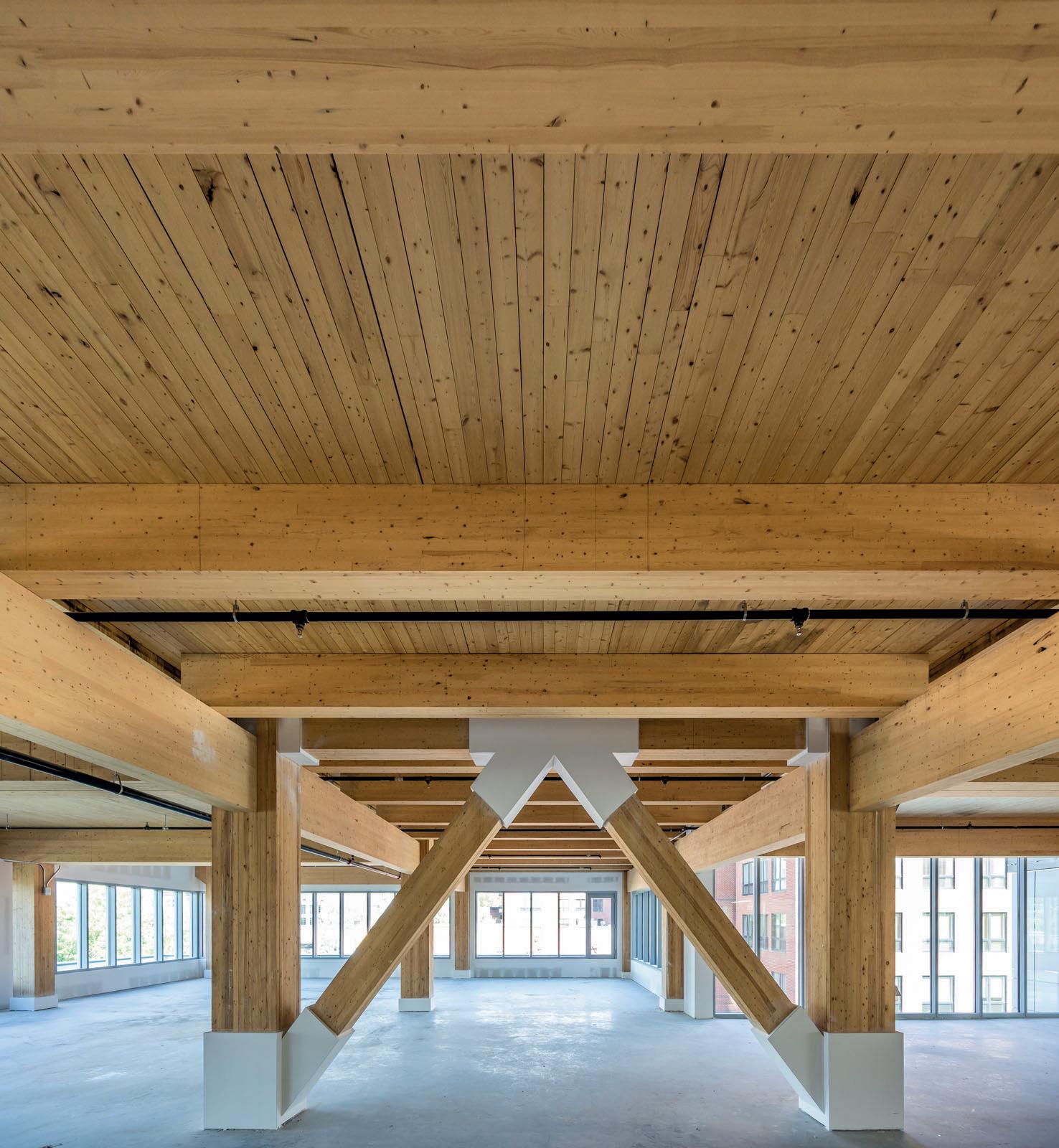
“With the goal of ‘drying in’ the structure through the most efficient method possible, our team established a plan to construct the project,” he continues. “The building was divided into three sequences which proved to be the most feasible and efficient way to limit the exposure of the wood to the elements and avoid potential water damage. It was an all-hands-on-deck approach, requiring heavy collaboration across the trades to reach a common goal for the benefit of the overall structure.”
As Joseph explains, the primary ambition of constructing Apex Plaza was to deliver a new benchmark in sustainability while, ultimately, delivering a faster turnaround time and lower costs. The end result is a net positive for all – the environment, the occupants, and the wider Charlottesville community.
Apex Plaza foresees a more sustainable future by delivering strength, resilience, and innovative construction processes, that represent a discernible effort in the transition from energy consumption to energy optimization. Going forward, Hourigan intends to facilitate that transition further.
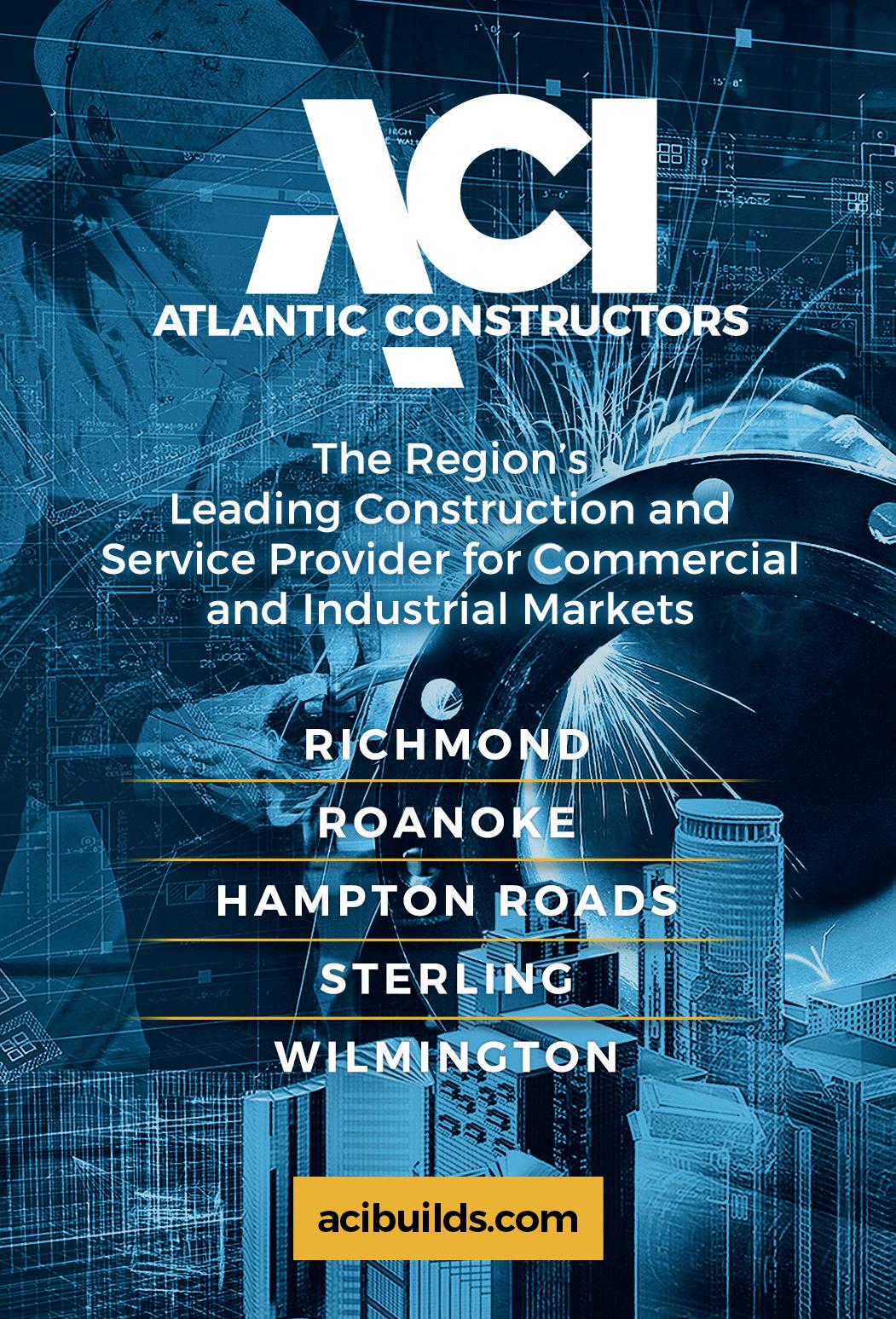
“As we look towards the future, developing lifelong, uniquely remarkable relationships and buildings will always be at the fore of our agenda,” concludes Bryan. “And we will also remain true to our mission — to passionately shape tomorrow, today, by delivering integrated building solutions that enhance communities and advance our living world.” ■
www.hourigan.group
During this time of the year, New England is idyllic and quaint in the fall, and although the trees experience another change of season, the commercial and residential builds from American Construction Corporation still stand strong. Known more widely as Amcon Corp, the family-owned and operated business is an experienced and dedicated construction management firm that services all of New England, with a
focus on the Massachusetts area. This issue, Construction Today takes a closer look at how the company has brought together immaculate, stateof-the-art builds, with a dedication to detail and a passion for quality.
One aspect of Amcon Corp that makes it a stand-out name among its competitors is its bespoke work. The company prides itself on incorporating a personalized approach to each project, from the early stages of pre-construction
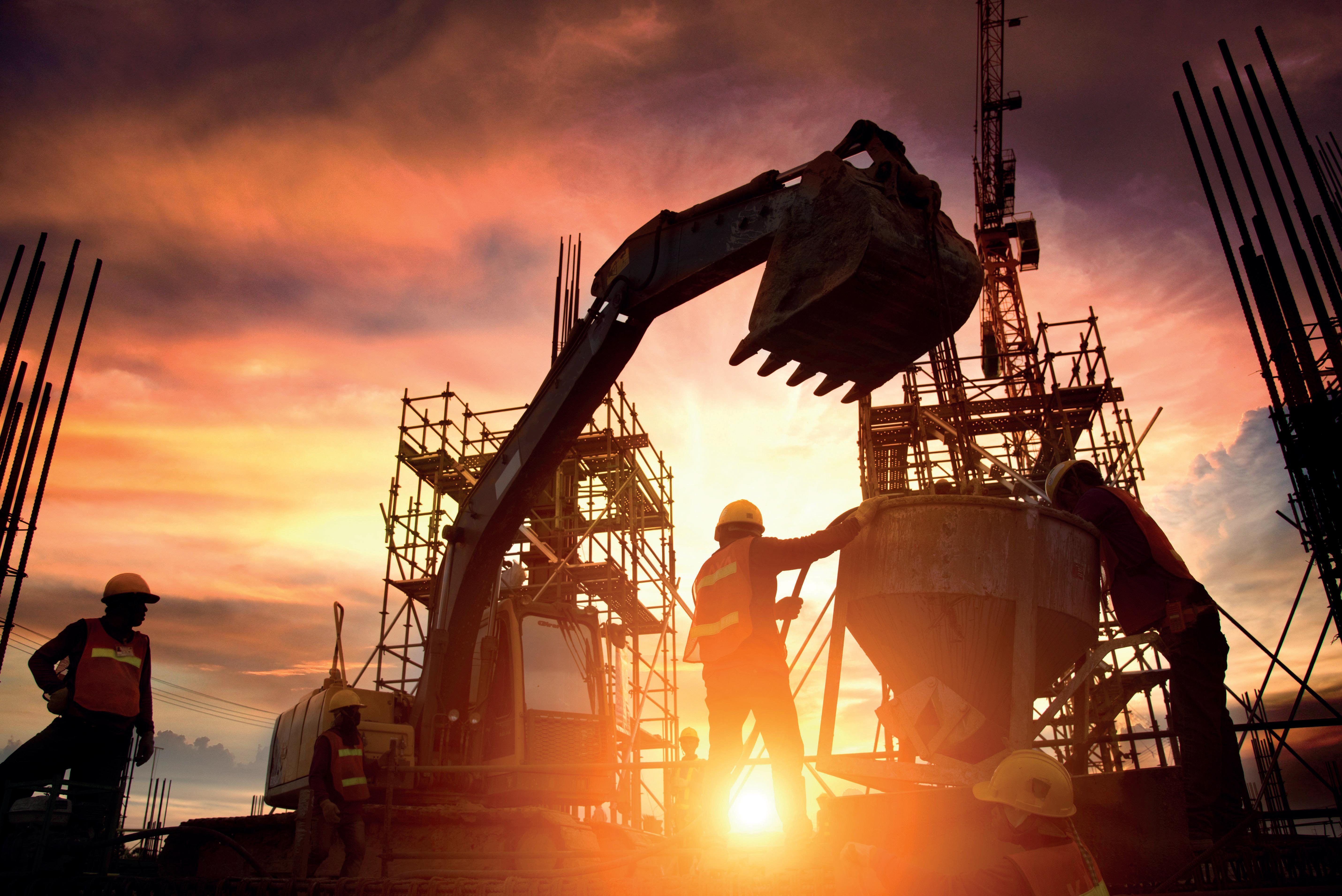
How American Construction Corporation has used its passion to be an integral part of its community
through to project turnover. With the help of its team, the business works closely with customers to ensure that completion is done to the highest quality. With a focus on consistently surpassing client expectations, and a strong emphasis on schedule and budget, the leadership team at Amcon Corp is proud of everyone’s efforts within the group. The continued success of the business is owed to its extreme attention to detail and unwavering commitment to client satisfaction as it upholds its mantra of ‘every project, every client, every time.’
On the topic of its people and company culture, Amcon Corp is championing industry inclusivity by opening opportunities for women in construction. The business was thrilled to announce the addition of two new individuals who will be bringing their skills and expertise to the group. Kara Cronin, for example, joins the team as its new Director of People & Culture. Kara spent the last 19 years of her career at Shawmut, where she grew and developed her career in a variety of roles. Working closely with executive and senior leaders, she helped develop and implement

company goals that aligned with strategic priorities of the business. When asked what she loves most about her career, Kara stated that she loved building relationships with the folks she works with. For her, being able to offer the support they need to bring their whole self to work and build exciting projects is the most rewarding aspect of her career. Amcon Corp strongly believes that Kara will be pivotal to the evolution of its business as it continues to grow.
The second addition to the team is Elena Crupi. Amcon Corp was happy to welcome Elena as the new Financial Controller. Heading
up the business’ accounting team, Elena will play an integral part in leadership and the development of financial strategies. Holding both an MBA and MSA from Suffolk University, matched with her background in the developer and construction sectors, the company looks forward to the future under Elena’s financial expertise.
With the business’ excellent team of highly knowledgeable individuals, the scale of the projects within Amcon Corp’s catalog has been both extensive and impressive. It has worked closely with The Sherwin-Williams Company, for example, to build some of its locations in

Massachusetts. Sherwin-Williams, which specializes in the global provision of paint and coatings products, has one of the industry’s most recognized portfolios of branded and private-label products. These products are sold exclusively through a chain of more than 4438 company operated stores and facilities in the US, Canada, the Caribbean and Latin America.
Additional brands for Sherwin-Williams are sold through leading mass merchandisers, home centers, independent paint dealers, hardware stores, automotive retailers, and industrial distributors across North America and in parts of Europe, China, Australia and New Zealand, and Amcon Corp was proud to be part of the project that helped expand Sherwin-Williams across the New England region.
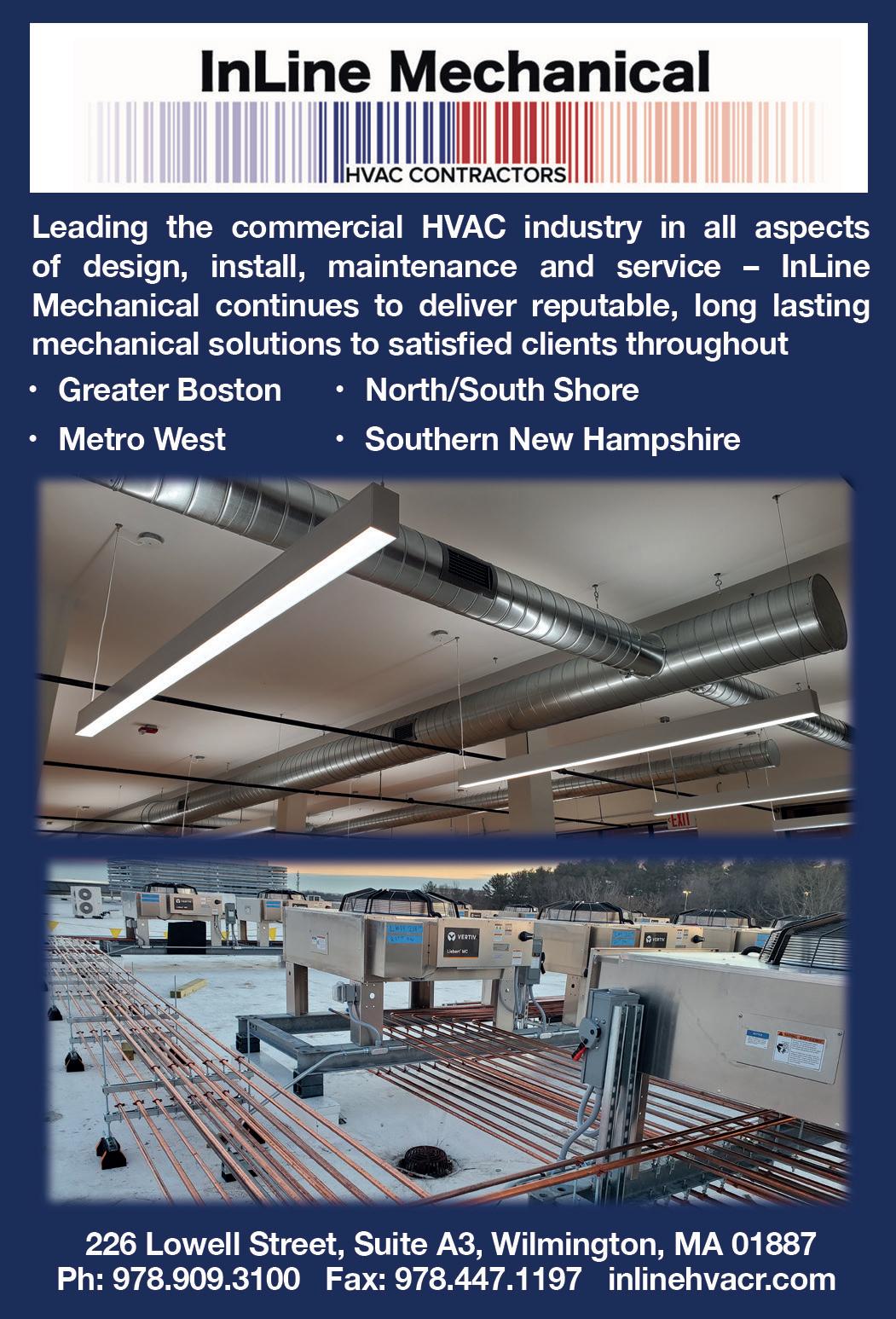
Amcon Corp has also completed projects in the hospitality industry. One such project was for Buttermilk & Bourbon, the southern concept in Massachusetts. Drawing on the South’s trademark charm, this restaurant offers a vibrant, cozy atmosphere with an innovative American menu featuring southern influences. Amcon Corp was able to construct a space for Chef Jason Santos to share his love of New Orleans and all things southern by way of his beloved restaurant.
Finally, but certainly not least of all, the company is also an expert in building retail spaces. For example, its most recent project was to create the build for Allmodern, which can be found in Lynnfield, Massachusetts. AllModern is dedicated to bringing the best in modern design. Since 2006, the company has honoured its mission to offer accessible, contemporary furniture at an affordable price.
Subsequently, the
From our research, the potential of Amcon Corp is endless. Considering the work that the business has already completed, we look forward to seeing the projects still to come, and wish its team the very best as they endeavour to keep the New England region a growing and thriving community. ■
www.amconcorp.com
company is passionate about finding the latest trends in contemporary decor that will serve as a stylistic guide for a variety of tastes and preferences.
Considering the work that the business has already completed, we look forward to seeing the projects still to come “ “
Award-winning construction business, Yantis Company, excels in the industry in three ways

For over 50 years, Yantis has been heavily involved in the construction of civil infrastructure across San Antonio and South Texas. The company was founded by John Yantis, who, at the time, only had 1000 dollars to his name. Since then, Yantis has continued to grow from strength-to-strength, and has built its reputation on added-value projects from the site selection phase all the way to completion.

Founded as a utility contractor, Yantis quickly became a full-service civil construction firm with the ability to self-perform all aspects of civil work within house crews and owned equipment. This type of work includes mass grading, rock milling, rock trenching, wet utilities, dry utilities, asphalt paving, concrete paving, street base construction, curb, and concrete structures. Yantis has constructed well over a billion dollars of work on private and public projects for various
municipalities, the Corps of Engineers, TXDOT and private developers across Texas. Yantis prides itself on being a team player on the development team. Its well-rounded team of developers, licensed engineers and construction professionals are regularly consulted to help with anything from site selection, and builder recommendations for lot purchases to grading design, budgets, and value engineering.
In the past two years, Yantis has saved various developers over 2.5 million dollars in direct savings that go back to the owner. The business continues to be managed in a manner of which John Yantis remains proud. Now a third-generation operation, Yantis also has highlevel managers that contribute over 20 years of development and construction experience.
Several factors set the company apart. Firstly, the speed at which projects are completed is one of the top reasons as to why customers
Yantis provides a unique niche for commercial developers and general contractors, which stems from its ability to selfdeliver every aspect of the civil scope, and serve as a streamlined coordinator between trades

“ “ “ “
return again and again. Supported by the equipment, manpower, ability, and the desire to build projects faster than its competition, Yantis has pushed itself to be renowned in the industry for quick project turnovers.
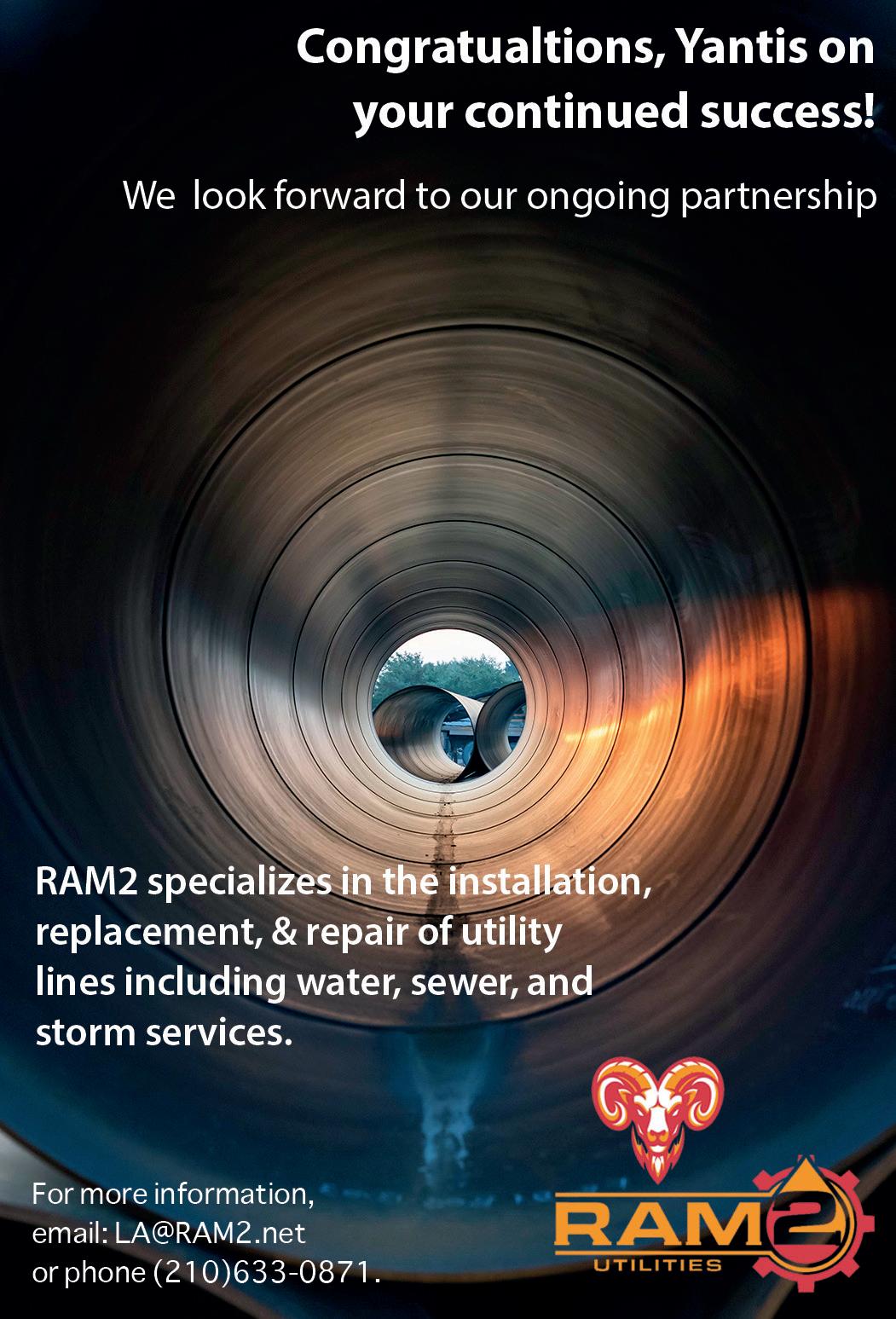
The extent of its services is another aspect. The company is an expert in all things concrete. When it comes to asphalt, Yantis is capable of handling all types of maintenance. Over the years, it has completed dozens of asphalt repair projects for various homeowner associations and property management groups, and no matter the size of the project, Yantis offers a range of services with its own equipment and crew. Rock milling and trenching, for example, is one such area where the company has become quite the expert. Yantis, with its fleet of new rock trenchers and millers, is able to perform trenching for utilities and mass rock excavation. Yantis can trench any size sewer, water, storm drain, and dry electric conduit where the rock requires it. Its equipment produces material that is acceptable for most commercial building sites and serves as perfect fill for roadways or single-family lots. Yantis utilizes its machines as part of a turnkey civil project, as well as prices that work for developers, general contractors, and other civil contractors as a standalone service.
For over 50 years, Yantis has taken pride in not only being a contractor, but also a member of a complete project development team. As part of its offering to clients and engineers, it can provide multiple additional services that help projects stay within budget and accelerate schedules. The services that accompany these targets include site selection and market consulting. South Texas is diverse in its topography and soils, which can impact projects dramatically. Yantis offers insight and opinions on the site costs for various areas, while at the same time, leveraging its relationships to put developers in front of homebuilders or commercial end-users. As a result, Yantis has

saved clients well over ten million dollars in direct bottom line savings by generating design alternatives or consulting with the civil engineer regarding the most cost-effective solutions to site challenges.
Preconstruction budgeting, and preconstruction scheduling are other areas in which the company excels. Yantis studies the site and its critical path in order to establish a phasing plan that helps generate quick progress. The business also has a reputation of thinking outside the box to help projects become a reality.
Another trait that helps set the company apart is the group of people that bring the projects together. Yantis boasts a team of highly experienced and service-oriented professionals both in the field and the office. Coupled with that, its ability to self-perform all scopes of
civil construction, offers competitive and complete pricing. This is reinforced by the fact that the company maintains a strong reputation among civil engineers, and municipalities of providing high-quality construction work.
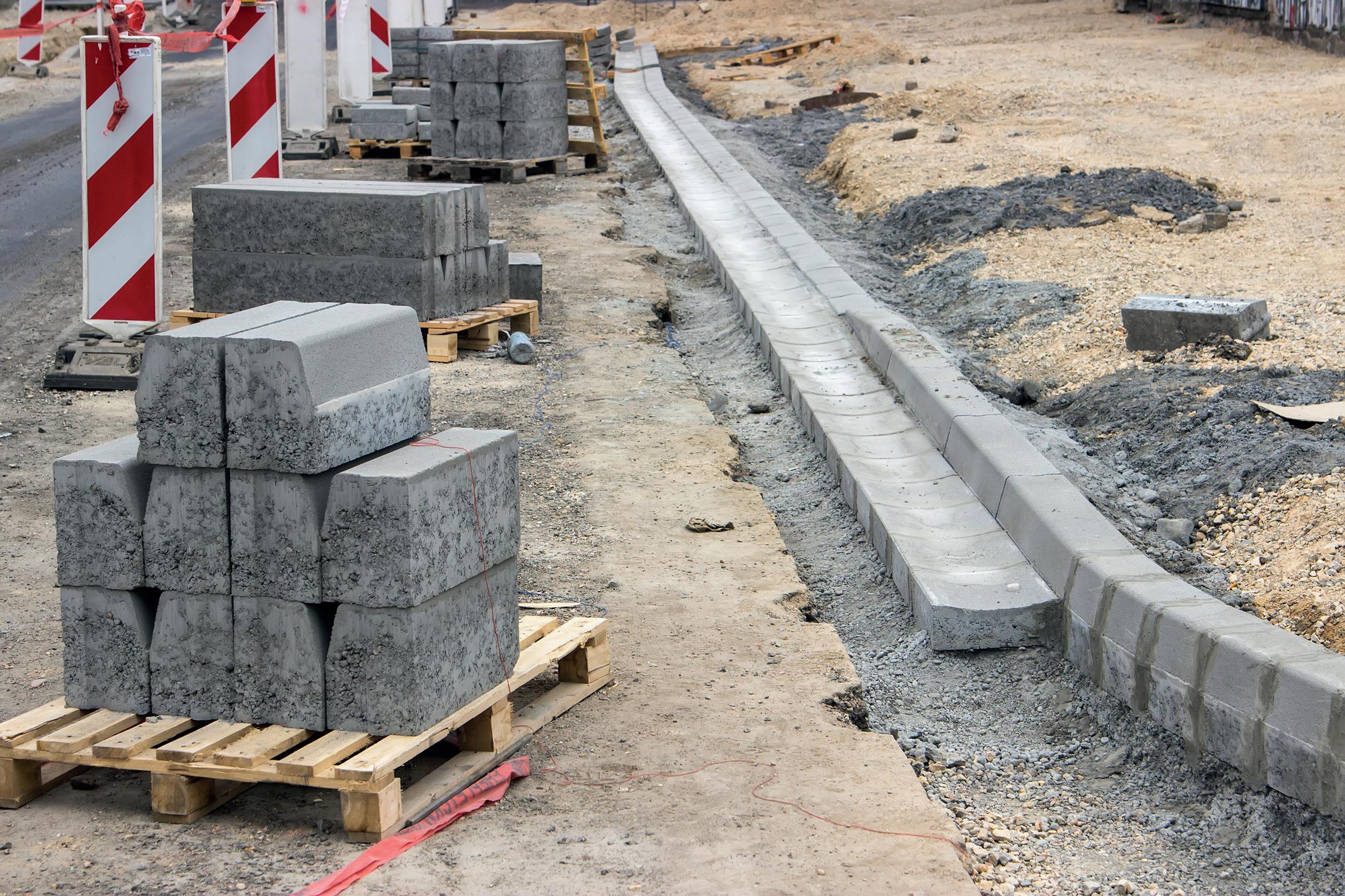
Finally, Yantis does not just want to be a contractor, it wants to add value to the overall development. It routinely provides exemplary engineering and time efficient ideas that save clients huge sums of money. The company provides turn-key management of a subdivision development from clearing to the finished, paved product, and 95 percent of the company’s projects are produced with its own crews and equipment. This asset allows Yantis to better control the schedule and cost of the project.
These well-refined traits have enabled the business to complete projects of impressive proportions. Over the years, the business has been involved in numerous high-profile,
commercial and industrial contracts around San Antonio, including Sea World and Six Flags Fiesta in Texas. By either working together with the general contractor or directly for the commercial project developer, it has successfully delivered turn-key civil construction.
The company’s philosophy on commercial projects is to be efficient in production and get off the site quickly, allowing the vertical construction components of the project to begin. Yantis provides a unique niche for commercial developers and general contractors, which stems from its ability to self-deliver every aspect of the civil scope, and serve as a streamlined coordinator between trades. With one of the largest fleets of equipment in South Texas and an experienced construction and design team, Yantis is capable of handling any type of civil construction project. ■
Our suite of software is the simplest to intergrate, adopt and use. It’s time to experience SMARTER HR, PAYROLL & FINANCE.

